Godlike by Halloween Jack
Intro
Original SA post https://www.youtube.com/watch?v=LnVl9oPW2soHere I go again, biting off more than I can chew…
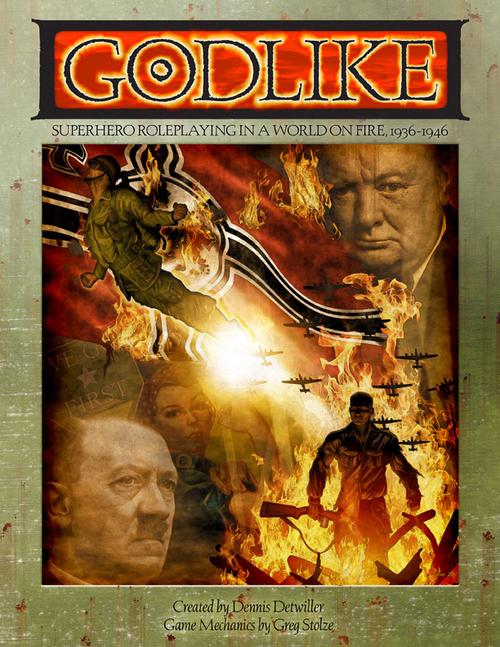
Godlike is a roleplaying game by Dennis Detwiller, with mechanics written by Greg Stolze. The premise is superficially simple: what if superhumans started appearing before and during World War II?
Stolze’s One Roll Engine--which would go on to power Wild Talents, Reign, and a number of other games--was originally developed for Godlike. I’ll be giving the mechanics relatively short shrift in this review, as many of you will already be familiar with them from reviews of other ORE games.
Godlike’s rules are a prototype for what would eventually become a more universal superhero system in Wild Talents. The rules are also very focused on WWII--there are fiddly bits (if sensible ones) for handling things like machineguns, cover fire, grenades, flamethrowers, and other weapons and tactics of the era.
Detwiller says that Godlike was inspired by asking himself a simple question: what would a world with superheroes really be like? It didn’t make sense to him that they would rule the world, nor that they’d be hunted down and persecuted. More likely, he thought, they’d be the subject of fascination and eventually be accepted, like cars and computers. Powers could make history, but not control history.
As a roleplaying game, Godlike is the expression of some ideas I’m going to reproduce here verbatim, because I think you’ll all appreciate them so much:
quote:
This book was written in a very specific manner, to avoid pitfalls commonly found in gaming books these days: metaplots and highly stylized text. Metaplots frankly sicken me. The idea of selling a single idea, spread across a dozen different books, is just plain wrong. It either means the publisher is too lazy or too bent on profit to make a comprehensive book. They might sell books in the long run, but they also upset their customers. I mean, who wouldn’t rather have all the information in one book? To avoid the “splatbook syndrome,” I did my best to squeeze as much in to this one book as possible. There will be supplements, but you’ll never find yourself forced to buy additional books just to play the game you already bought.
Stylized writing is also a serious issue in gaming. Writing in a style that reflects the mood or time period of the game was interesting ten years ago, but (on me at least) it has worn thin. Game books filled with pages upon pages of gaming fiction, or unclear writing styles and obscure slang, inserted in otherwise straightforward text seems an easy way to distract the reader. This was not what I was looking for when I set out to write Godlike. Therefore, you won’t find it here.
Godlike makes good on these promises. Each chapter opens with about a page of in-character fiction, following a squad of American “Talents,” as superhumans come to be called. But it’s not the core content of the books.
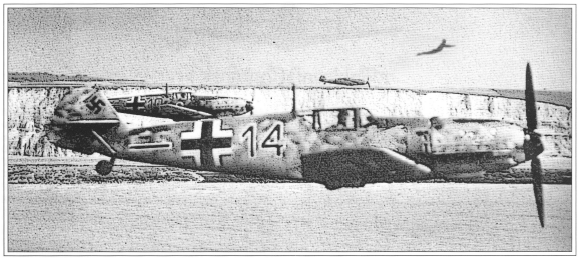
I was unsure how to review this game because it teases the premise, but it totally front-loads the rules and character creation before it goes into detail about the setting. So I’ll tease you a little more here.
This is a game about superhumans in an alternate-history WWII. But unlike the “Golden Age” of DC and Marvel (then Timely) Comics, the history of WWII isn’t different because gods, aliens, robots, and mutants have appeared in our world. The superhumans of Godlike are all Talents--rare individuals who, for reasons unknown, manifest the ability to manipulate reality in fixed and limited ways. They bleed like the rest of us, and while some of them may be bulletproof, none of them are truly invincible.
Next time: Basic mechanics.
Game Mechanics
Original SA post
Godlike, Chapter II: Game Mechanics
One of my big pet peeves in roleplaying is games that want to take you gently by the hand and walk you through the process of creating a character before you know anything about how to roll dice or how any of these stats worse. Thankfully, Godlike doesn’t do this. It tells you what the basic Stats are and shows you a list of Skills, then explains its die mechanic. In fact, after doing so--so you’ll be able to understand what follows--it gives you all the resolution rules, including combat rules, saving character creation for the following chapter.
(At this point, I should also point out that this game was written in part by Greg Stolze, and as such, it has a bad case of Stolzitis. It’s an illness that only afflicts roleplaying games, making the game amazing but also making it incapable of containing a single piece of good art. All the art in this game is old photos from WWII with a Photoshop filter and maybe a little photomanip to look like an optic blast or a human silhouette flying alongside a plane.)
Godlike is the first iteration of the One Roll Engine, though it’s not called that in this game. Stolze wanted to create an engine that measured all the variables it needed to measure, but didn’t require two or three rolls to be able to do anything. Most notably, in combat the ORE combines initiative, accuracy, and damage into one roll.
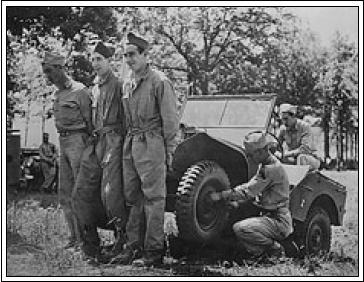
Resolution
The basics of Godlike aren’t very complicated. All characters have Stats (basic ability scores) and Skills, usually rated 1-5, and you roll your Stat+Skill as a dice pool of d10s. Situations where you have to roll dice are called Tests.
Unlike most other games, the way you succeed in Godlike is by rolling sets--multiple dice of the same number. The Height of your set is how high a number you rolled, and represents how well and how thoroughly you accomplished something. The Width of your set is how many multiples you rolled, and represents how quickly you did it.
Let’s say you roll 6d and get 1, 3, 4, 7, 9, 9. That’s a 2x9 set--High, but not Wide, so you did a very good job in a reasonable amount of time. If you rolled 2, 3, 3, 3, 3, 8, that’s a 4x3 set--Wide, but not High. You got the job done, and quickly, but not especially well.

Stolze addresses the reader conversationally and is pretty open about the dice math. Gaining or losing a die matters a lot more when you only have a few dice. Characters usually won’t have big dice pools outside of a couple specialties. You never ever roll more than 10 dice, even if some bonus would give you a pool of 11 or more.
Tests and Complications
Static Tests are Tests against a situation, like fixing a Jeep or climbing a hill, i.e. not against another person. Again, Height determines how well you did it and Width determines how quickly. Most of the time, there are no precise rules for measuring exactly what these mean outside of combat, and for many rolls, any set means you succeed. If you roll multiple sets, you can pick which one you use, but you can’t use both.
Dynamic Tests are when you’re opposing another person. You both roll; the Highest set is best and the Widest set is fastest. It’s up to the GM what that means--in a literal race, for example, a 4x3 set beats a 2x10 set, even if perhaps the race ends with the winner gasping for breath and the loser looking good. In a chess match, the 4x3 set loses because the character played decisively but sloppily. Ties (or mutual failures) can be rerolled, or resolved however the GM decides.
If time is a factor, the GM decides on what scale the task takes place (minutes, hours, days, weeks), and on a success it takes the character 5-(Width) to get it done. If quality is a factor, the GM can assign a Difficulty--a minimum Height of your set in order to be successful.
Multiple actions are possible but very difficult. Determine what pools you’re rolling. Roll the lower of the two pools with a -1d penalty, and pray you get two sets. For example, if you’re trying to drive through a crowded street while fighting off someone in your passenger seat, you’d roll the lower of your Body+Brawl or Coordination+Drive, with a -1d penalty, and you need to roll 2 sets to succeed at both actions. Hopefully you are Jackie Chan.
To cooperate on a task, you can just add your dice together into one pool (maximum 10d, again). You can also roll separately and if you both succeed, use the highest Height but the lowest Width (because you have to wait for the slowest guy to catch up). If only one guy rolls a set but the other guy rolled that number, he can add it to the first man’s set to make it wider. (This is one of the few times that “loose” dice do anything.)
Special Dice
There are a few kinds of special dice that aren’t discussed until later in the book, but I’m bringing them up now.
Hard Dice are automatically set at 10 whenever you roll. They count against the 10-die limit, though you don’t need to roll them. Wiggle Dice are even better--they’re “wild cards” that you can set to any number after you roll the rest of your dice. So unless you’re down to 1d, any pool with a Wiggle Die in it will always roll a set. If I have 4d+1wd and I roll 1, 3, 3, 8, I can pick whether I want a 2x1, 3x3, or 2x8 set.
In Godlike, Hard Dice and Wiggle Dice only come into play when Talent powers are involved.
Finally, defensive actions produce Gobble Dice. This means that when you roll a set, each die in that set becomes a Gobble Die that can “eat” and negate a die of equal or smaller number from an attacker’s set. Sets reduced to 1x aren’t sets anymore, so they’re ruined. A wide, high set can easily foil multiple attacks, but rolling to defend usually means you aren't doing anything else.
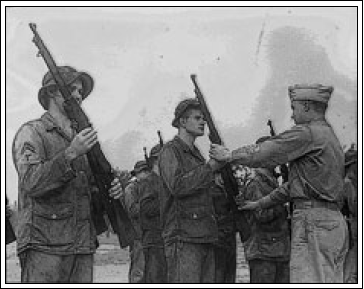
Stats and Skills
Body measures how big, strong, tough, and fit you are. Unlike other stats, Body has a table measuring how much you can lift, and some bonuses for a high Body score--it nexts you extra wound boxes and automatic Width to hand-to-hand combat. There are also some quick formulas given for things like how heavy a weight you can throw at someone, and how many meters per turn you can sprint or crawl. Godlike isn’t one of those games that expects you to write these out on your character sheet despite the fact that it doesn’t use a grid map. It just provides these things for any case where you’d really need to measure it.
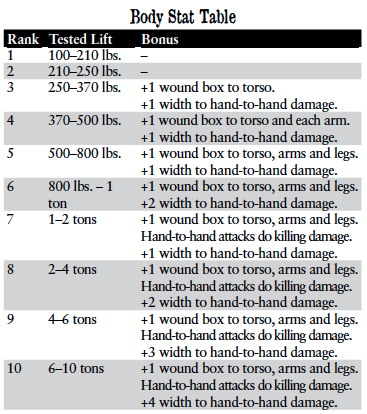
The Body skills are Athletics, Brawl, Endurance, Knife-Fighting, Run, Swim, and Throw.
Coordination measures all kinds of motor coordination. The Coordination skills are Anti-Tank Rocket, Dodge, Driving (subtype), Flamethrower, Grenade, Machine Gun, Parachuting, Pilot (Type), Pistol, Rifle, Sailing (Type), Stealth, and Submachine Gun.
Sense measures the sharpness of your five senses as well as general situational awareness. The Sense skills are Hearing, Sight, Smell, Taste, and Touch.
Brains measures intelligence and intellect. The Brains skills are Cryptography, Education, Electronics, First Aid, Language (Type), Mechanics (Type), Medicine, Navigation (Land), Navigation (Sea/Air), and Tactics.
Command measures charisma, force of personality, and confidence. The Command skills are Inspire, Intimidation, Leadership, Perform (Type), and Seduction.
Cool is the most ephemeral stat. It measures your ability to remain “cool under fire” both literally and figuratively, acting under pressure without freezing or panicking. It’s not a matter of awareness of willpower; some have it and some don’t. The Cool skills are Bluff, Lie, and Mental Stability.
Command+Cool is your Base Will, which we’ll get into later. Talent powers are fueled by willpower, especially when fighting other powers.
Okay, so this skill list really has its ups and downs.
The Good: It’s not pretending to be a universal system; it knows it’s a game about playing soldiers in WWII. Combat skills are, for the most part, appropriately subdivided. Cryptography is its own skill, and Navigation is two separate skills. But all other academics and sciences are bundled together, not subdivided into garbage like Life Science (Biochemistry) for the sake of “realism.” There are no skills anachronistic to the time period; you don’t need Computer Hacking unless by some insane miracle you can make the Harvard Mark I talk to the Krauts’ Z3. (It’s a little odd that there are no skills that explicitly cover melee weapons like spears, axes, and swords, especially since the latter two do appear on the equipment list. I’d probably tell a quixotic Talent to buy Brawl or Knife-Fighting and let them use the skill with their spear and magic helmet.)
The Stats themselves are well laid out and correspond well to skills. Godlike avoids the pitfall of having separate Strong and Tough stats and making Quick the god-stat. Coordination does have a lot of skills associated with it, but mostly because it subdivides combat and piloting skills so thoroughly.
The Bad: Some skills are almost totally useless, unless you’re playing a Talent with enhanced abilities based around it. A Daredevil-style Talent who can analyze substances by Taste and Touch, for example. Since Grenades is a unique skill, the Throw skill is useless unless you’re a super-strong Talent who can throw cars at people, or someone with super-throwing powers. (A Talent pitcher who can kill people at 500 yards with baseballs, but only baseballs, is right at home in this game.)
Also, even given the specificity of the setting, I don’t see the point in requiring players to spend points on each type of car, plane, and boat they can pilot or repair. Is it ever interesting for the PCs to be unable to go somewhere, or escape from somewhere, because they can only drive cars and not trucks? Make Tank a separate skill if you think that’s going to be an issue. I’m not really worried about the balance issues of letting someone use their Driving skill to ride a bicycle across a battlefield. Athletics is specifically for sports, and I suppose I’d use it to cover lifting or whatever isn’t covered by the other Body skills.
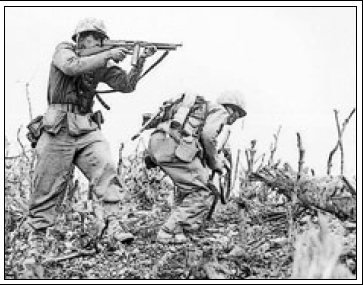
Next update: Combat! and other shit that can kill you.
Game Mechanics, Part 2
Original SA post
Godlike, Chapter II: Game Mechanics, Part 2
Combat in Godlike seems like it’s pretty easy to handle. As I mentioned, the system was based around being able to resolve each character’s action with a single roll, with initiative, accuracy, damage, and even hit location handled with the basic die mechanic.
So long as you’re cool with that, I expect the most complaint to be that there are quite a few fussy fiddly bits in the combat rules. Don’t worry, these don’t involve exhaustive tables or any such thing--just a lot of little rules, mainly to handle weapons like machineguns, grenades, and flamethrowers differently from a rifle bullet or bayonet thrust.
The basic combat round goes like this:
Step 1: Declaration. Everyone declares what they’re doing, starting with the character with the lowest Sense and counting up from there. If there’s a tie, PCs act before NPCs. The Sight skill or a 1d10 rolloff breaks ties between PCs.
Step 2: Roll. Everyone rolls the Stat+Skill pool for what they’re doing. Body+Knife-Fighting, Coordination+Rifle, Coordination+Dodge, whatever.
Step 3: Resolution. Width acts as initiative, so the widest set goes first, with Height as the tiebreaker. Attacks that hit deal damage immediately. Anyone who gets hit loses a die from their Highest set! Being wounded is distracting.
This means that if we’re attacking each other, and I roll 3x1 and you roll 2x10, your set loses a die and your action is ruined. If I rolled 4x1 and you rolled 3x10, your attack still hits me as a 2x10. Or, if you were lucky enough to roll multiple sets, you’d just use the other one.
Yes, this also means that you can’t Dodge attacks that are wider than your Dodge roll.
Damage
Both the Width and the Height of your roll are important in determining damage.
The character sheet provides a little silhouette chart, showing how many wound “boxes” of damage each hit location can take. Width determines how many boxes of damage you do. Height determines which location you hit. I’ve never seen a game that incorporated hit locations as a matter of course and did it so cleanly.
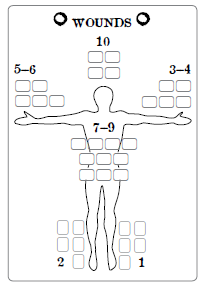
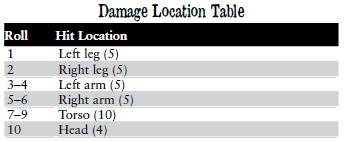
Okay, there is one chart and a few tables in this game.
There are 2 types of damage, and rules for excess damage. Shock damage is bruises, scrapes, pain, and fatigue. Killing damage is all the stuff that can immediately kill you, like blades and bullets.
When a limb fills up with Shock damage, that limb is disabled for the rest of the fight. Any overflow Shock damage becomes Killing damage. When a limb fills up with Killing damage, it’s disabled until you get medical care, and any overflow Killing damage goes into your Torso location. Depending on the type of injury, that limb may also be gone, or perhaps just permanently lose a wound box after you recover. It’s up to the GM.
When your torso fills with Shock damage, you’re conscious but Body and Coordination are reduced by 4, to a minimum of 1. Any overflow becomes Killing damage. When your torso fills with Killing damage, you’re dead.
When your head fills with Shock damage, you’re knocked out for the rest of the fight. Overflow becomes Killing. When your head fills with Killing damage, you’re dead.
A note on location 10: It really means “head or vitals.” It could also represent a blow to the spine, liver, femoral artery, etc. The main reason for noting this is the Hard Dice I mentioned. If a Talent has, for example, some Hard Dice in her heat vision power, it doesn’t mean her eyebeams always inexplicably hit people in the head. It means they always do as much damage as they possibly can.
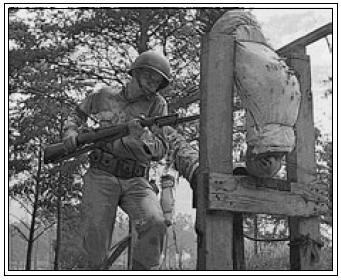
How bout a little bayonet, scarecrow?
Hand-to-Hand Combat Actions
Hand-to-hand attack and defense is the simplest form of combat, actually. You want to hurt someone, roll Body+Brawl or Body+Knife-Fighting. Want to dodge, roll Coordination+Dodge. There are no special penalties for fighting multiple guys, since that’s already handled by the penalties for multiple actions, getting hit before your action goes off, etc. But there are a few special moves you can do.
Called shots: To hit a specific location, take a -1d penalty. Then you can set one of your remaining dice to the desired number, and roll the rest as normal. So if I want to kick you in the right leg and I have Body+Brawl 6d, I lose one die, set one die at 2, and roll 3 dice hoping for another 2.
Pinning: If you want to tackle someone, just say so. Your attack only does 1 point of Shock damage, but they’re knocked down and pinned until they escape. Pinned people can’t dodge or attack anyone except the person pinning them, and any attacks against them get +1d. If you’re pinning someone, that ends when you’re knocked out, they beat you with a Body+Brawl roll, or you leave them to do something else. You can also choke them without making a called shot.
Choking and Strangling: Choking is treated as a called shot to the head. It only does 1 point of shock damage, but you can keep automatically doing 1 point of Shock damage to the head per turn. Chokes are broken like pins, or if the choker takes damage. Strangling--closing off the arteries of the neck--is better than choking, doing 2 points of Shock per round. But Godlike assumes that since most Allied troops in the early 1940s wouldn’t know how to do a proper stranglehold, so you’ll need a garotte, scarf, etc. to do that. (By the way, Rex Applegate published instructions for the “Japanese deathlock” in Kill or Get Killed in 1943.)
Disarming: Disarming is handled as a called shot to the limb holding the weapon. If you win, you’re now holding their weapon. If the weapon is sharp, take a point of Killing damage to the limb you’re using. Greg Stolze isn’t having any of your quick-and-easy knife disarm YouTubes.
Aiming: You can’t aim in hand-to-hand combat unless you’re ambushing someone, in which case, you get +1d and make a called shot with no penalty.
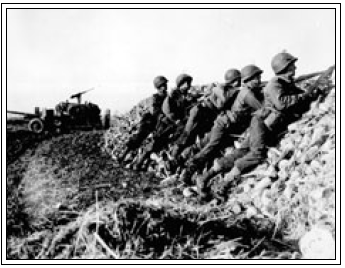
The Nazi War Machine is no match for the The Allied Man Train.
Ranged Combat Actions
Attacking in ranged combat is simple; roll Coordination+whatever weapon skill you’re using. As with hand-to-hand, there are a few special maneuvers and complications. Where it gets more complicated is in dodging ranged attacks, covered in the next section.
Aiming: If you spend one or two rounds aiming, you can add 1d or 2d to your pool. (+2d is the max.)
Sniper: If you’re aiming at someone who doesn’t know they’re in a combat situation, you get an additional +1d.
Called Shots: Handled the same as with hand-to-hand combat. Notably, if you get a set besides the one you were trying for, you still hit. So it’s possible to try to shoot someone in the leg and get them in the head instead. Whoops.
Cover Fire: Cover fire represents firing blindly from cover. ( Godlike notes that this is how most soldiers fired their weapons most of the time in WWII.) You stand little chance of hitting anything, but you can keep all your hit locations, including your head, behind hard cover.
If you’re firing blind, expend at least 3 bullets and roll 2d. If they come up a set, everyone who might get hit rolls a d10. (Multiple targets must be tightly grouped.) If they match the number of your set, they’re hit as if your set had a Width of 1. (So a weapon that does Width+1 Killing does 2 Killing.)
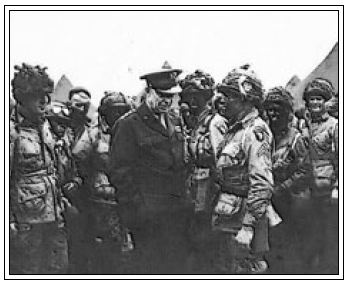
The leaf hats are lovely, soldier. But you do realize, of course, that we’re in Egypt?
How to Not Die
Dodging gunfire is different from dodging melee attacks, because you can’t dodge bullets, you can only run for cover.
Dodging: Roll Coordination+Dodge. When you roll a set, the dice in that set become Gobble Dice that can cancel out dice from a melee attack. You can’t dodge attacks that are Wider or Higher than yours.
For example, three Nazi bastards attack me with clubs. They roll 2x9, 2x6, and 3x4. I roll 2x10. I remove 1 die from the 2x9 and 2x6 sets, ruining the attacks. I can’t dodge the third attack at all.
Dodging is potent in that one set can foil multiple attacks. But if you’re dodging, you’re probably not doing anything else, which is a losing game. And dodging doesn’t work against ranged attacks at all.
Taking Cover: You can avoid gunfire by diving for cover--preferably behind something big and tough like a wall or vehicle, or into a trench. When faced with incoming fire, this is the only option for soldiers who don’t have superhuman speed or a Talent that stops bullets.
To take cover, tell the GM what you plan to hide behind, and roll Coordination+Dodge. The width of your roll determines initiative as usual, so a Wider attack hits you before you can move. Height determines how many hit locations are hidden--based on the table below and what kind of cover you have available.

Once you’re behind cover, you benefit from it until you move away, the cover is destroyed, or you’re attacked from another direction. You can keep shooting from cover, of course, but that requires you to expose your head and one or two arms, at least.
When you have cover, attacks that would hit a covered location hit the cover instead. Cover gives you an armor rating in that location. (In a shootout, that wouldn’t be worth tracking. But this is war, and even diving into a fortified trench might not protect you from an 88mm shell or a Talent’s power.) There is no cover against hand-to-hand combat.
I can understand why some players won’t like this. Combat in Godlike is deadly, but it defaults to “theatre of the mind,” and it relies on the GM being fair about what cover is available, how much armor it provides, and if your cover protects you from the vector of a particular attack.
Moving Target: If you’re caught out in the open with no cover, you can “serpentine” to force your attacker to meet a Difficulty 3 to hit you. (In this case the GM can roll a d10 separately for hit location, so this doesn’t make your feet magically invincible.) This doesn’t work against machinegun and submachine gun fire.
Armor: There are two types of Armor in Godlike: Light Armor rating (LAR) and Heavy Armor rating (HAR). LAR is the kind you get from wearing a helmet. HAR is the kind you get from wearing a tank.
LAR has two benefits. First, any Shock damage you take is reduced to 1 point. Second, each point of armor converts a point of Killing to a point of Shock. For example, say I’m shot in the head with a carbine--the Nazi scum rolls 2x10, doing 3 Killing and 2 Shock. I’m wearing a steel helmet that gives LAR 2 to the head. The 2 Shock is reduced to 1, and the 3 Killing becomes 2 Killing, 1 shock. So I’ve taken 2 Killing and 2 Shock to the head--enough to fill that damage track and knock me unconscious, but not fatally.
HAR is serious stuff. Each point of HAR reduces both the Width and the damage of any attack by 1. So if you have HAR 2, it automatically spoils any 3x sets against you.
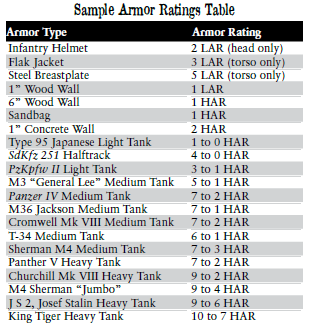
As you can see, there wasn’t a lot of personal body armor available in WWII.
Concealment: If you’re obscured by fog, shadows, light brush, etc., attacks against you take -1d, but this doesn’t count as cover. It doesn’t help against cover fire or hand to hand attacks.
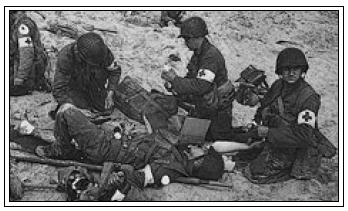
Keeps saying he’s got something called Aspberger’s, Sarge. Sounds German.
Healing
After combat is over, you remove half your Shock damage from that battle with a few minutes’ rest. After a full day of rest, you can roll Body+Health to remove (Width) points of Shock; you choose the locations. So Shock damage can rack up if you’re stuck in a protracted battle or fighting behind enemy lines.
Killing damage is much harder to heal, requiring real medical care and a Brains+Medicine roll. Width determines the length of the operation, Height determines how many points of Killing are converted to Shock. Each hit location requires a separate operation. Without treatment, it takes a week of complete rest to convert a point of Killing into Shock.
Injuries can also get worse. If you take Killing damage, you need to be stabilized with a First Aid roll within about 15 minutes. Otherwise, you take 1 point of Shock to your worst injury each day until you get serious medical care. Again, a real problem if you’re behind enemy lines or the only Army surgeon nearby got himself killed.
Other stuff
Range: Weapons have a listed range, but it’s pretty loose. You get +1d with firearms within a few yards, -1d if you’re between close range and maximum range. You can try to hit something up to twice the listed maximum, but you need to make a Sense+Sight roll to even attempt it.
Movement: Movement in combat is also meant to be loose. You can run up to about 10+(2*Body) yards in a round. Running gives a -1d to most actions, but you can move about (Body) yards without taking a penalty.
Murder: If you have a weapon and attack a totally helpless target, don’t bother rolling. Cutting a sleeping man’s throat, shooting a bound prisoner, or stomping a fallen soldier’s head...the chance of failure isn’t worth rolling. However, murdering a helpless person, even Nazi garbage, provokes a Cool+Mental Stability roll to avoid Battle Fatigue (covered in the Powers chapter later.)
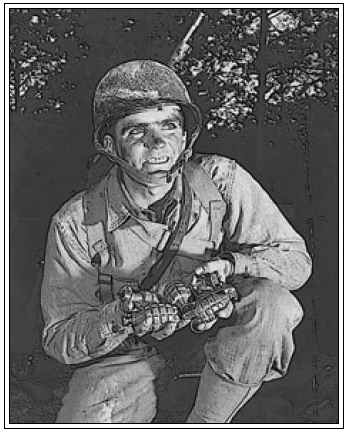
day i got pineapples
Weapons
Weapons deal damage based on the Width of your roll. They often deal a combination of Killing and Shock damage. Some weapons have special Qualities. Machineguns lay down a hail of fire, grenades blow up everyone standing nearby, and anti-tank weapons blow through heavy armor.
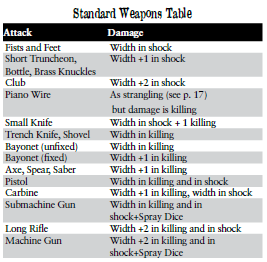
This chapter only provides a basic list of weapon stats. Fully detailed equipment lists come much later in the book--I promise, when I review Chapter 7, you guys can argue about the differences between Thompsons, STENs, and Sturmgewehrs to your hearts’ content.
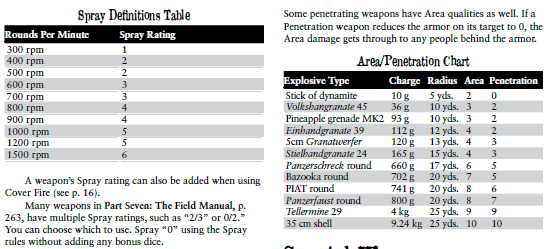
Area: Area weapons like grenades and rockets deal damage twice. The person at ground zero takes damage as rolled, and then everyone in range is hit by Area dice. Roll the weapon’s Area dice; everyone takes a point of Killing damage to the locations that come up. Also, everyone in range takes 2 points of Shock. Getting blown up sucks, kids. Cover and armor protect normally against Area dice.
Spray: These are automatic weapons. Shooters with Spray weapons take no penalty to multiple attacks. Unless you’re firing a single shot, you can also add the weapon’s Spray dice to the pool. Spray dice also add to cover fire. Heavy machineguns usually have a Spray of 2. Submachine guns have a Spray of 2-4.
Burn: Fire-based weapons are common and scary. Most Burn weapons do low damage, but when they hit, every location except the head takes 1 Shock and is on fire, suffering another 1 Shock every turn until the fire is put out. Most Burn weapons use sticky fuel, so only complete immersion or totally smothering the flames will stop the burning. Anyone set on fire has to make a Cool+Mental Stability to avoid panicking, and so does anyone attempting to charge someone firing a Burn weapon. Burn weapons with the Area quality work a little differently from explosives: they only deal shock damage (and don’t hit everyone in the area with 2 Shock), but the affected locations are on fire.
Penetration: Penetrating weapons are made to blow apart heavy armor. When they hit a target with HAR, they permanently reduce it by Width+Penetration. (If any HAR remains, it protects and reduces the Width of the attack as normal.) Most penetrating weapons also have Area; the Area dice are applied to nearby people--including the people inside the heavy armor, if it was totally destroyed. There aren’t any WWII era weapons that can destroy multiple hard targets.
Slow: Slow weapons take their Slow rating in rounds before they can be used again. The simplest example is that bolt-action rifles have Slow 1, so they can only attack every other round. Mortars and anti-tank weapons have higher Slow ratings.
Machineguns: Machineguns are large automatic weapons, too heavy to carry. They’re designed to repel infantry charges with a flurry of bullets. When you fire a machinegun, you expend your die pool in bullets--these aren’t marksman rifles. If you only have 7 bullets left in your machinegun, you can’t roll more than 7 dice.
Submachine Guns: Small, man-portable machine guns like the Thompson or STEN gun. Submachine gun technology developed throughout the war, as they were found to be very effective in close quarters. These guns fire multiple bullets per attack like machine guns, but you can also fire single shots. If you’re running low when firing multiple shots, you don’t suffer a penalty.
Flamethrowers: Flamethrowers are Burn weapons; most also have the Area quality, and they do damage as described above. There is one big drawback to carrying a flamethrower: If you take a hit to location 9, your tank blows up. You take an additional 1 Killing to your torso, and now every single hit location is on fire. This also creates an Area 3 attack against everyone around you.
Grenades: For simplicity’s sake, grenades go off 1 round after they’re thrown; on that turn, Width determines the timing of when it blows, as normal. After it’s thrown but before it explodes, the target has a few options.
First, you can kick it away with a Coordination+Grenade roll. You don’t take any damage except the 2 Shock. This doesn’t work in an enclosed space, like if someone pitches a grenade in your foxhole.
Second, you can pick it up and throw it back. This is a multiple action with Coordination+Grenade. Use one set to grab the grenade and toss it away, and another to attack the target.
Third, you can actually catch it in the air and throw it back--this actually happened quite often; thank God baseball was America’s pastime. This works the same as picking it up and throwing it, but you don’t lose a die because you have extra time. However, this doesn’t work in dark and fog when you can’t see the grenade sailing through the air.
Lastly, you can dive on it. The GM may require a Cool+Mental Stability roll. You take all the grenade’s damage to your torso, plus 12 points of Shock (all that Area shock is focused on you). No one else takes damage.
Throwing Shit: A normal man throwing a rock or other debris rolls Body+Throw and does Width in Shock; no big deal. But if you’re a Talent who can bench-press tanks, any big heavy thing you throw does Width or half your Body (rounded down) in Shock. If you have Body 6+, it does Width in both Shock and Killing instead.
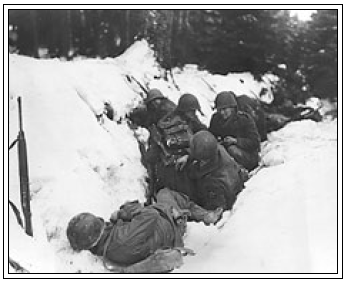
Gute Nacht, Goon
Other Ways to Die
These are more detailed than they probably need to be. I’m not getting into all the details because I have read literally dozens of roleplaying games with drowning, burning, freezing, blah blah blah rules that I never ever used.
Electricity has a dice pool measuring its strength, all the way up to a lightning bolt (10d). It does Width shock, but hit location is determined by circumstance--it starts in whatever part was hit, then grounds, doing the same damage to each hit location on its way to ground. Being hit with a steady current is worse. Being soaking wet is also bad.
Falling is bad. You take Killing unless you land on something at least as soft as soft ground, or something like tree branches breaks your fall on the way down. You take a point of damage for every 10 feet, to a maximum of 10, to every relevant location. A successful Coordination+appropriate skill roll will let you land on your legs only. (So if you fell 100 feet onto concrete and landed on your feet, you’d still cripple both legs and take just enough overflow damage to your torso to kill you.)
Drowning: You can hold your breath for Body/2 minutes, then you have to start making Body+Endurance rolls to avoid inhaling water, losing dice. Then you start taking damage to your head and torso and will die in a few rounds.
Cold: Your Body protects you from freezing cold: days in a shelter, hours in cold weather gear, minutes if you’re out in the open with not even warm clothing. After that, you start taking Shock damage to your limbs, then to your head and torso. As your limbs accumulate killing damage, you have the chance to develop gangrene even if you escape. The rate is accelerated in extreme cold (-40F or below), or if your clothes are wet and freezing.
Fire: Fire is handled basically the same as burning weapons. If a limb catches fire, it will take 1 Shock each round; when it fills with Killing the fire spreads to the torso. If your head catches on fire, you’ll also be blinded for several minutes. To douse burning fuel, you’ll have to immerse yourself in water. A bucket of water or stop-drop-and-roll won’t work unless the ground is very wet and muddy.
Crashes: This rule applies to car wrecks, plane wrecks, and similar situations. The circumstances of the crash create a Difficulty--high speed, a dirt road, a damaged vehicle, no seat belt, no driving skill, etc. are bad. Failure causes Shock damage to all locations and more to the number rolled.
The experience rules are also in this chapter because they wanted to front-load all the mechanics you’ll use in play. I’m saving them for after character creation.
Next update: Ugh, finally...Character Creation!
Character Creation
Original SA post
Godlike, Chapter III: Character Creation
One of the best things about setting a game in WWII is that your PC can be from anywhere. In the vast majority of roleplaying games, regardless of the setting, PCs are assumed to be people with a lack of commitments, and certain skills, that allow them to be “adventurers.” A global war takes care of that problem. Your character can be a baker from Ohio with five kids, or a boy just out of high school, and you have all the rationale you need to be “on an adventure” and to put points in whatever military skills you think you’ll need.
The Talent powers of Godlike also take care of the inconvenient, ah, demographic factors of the 1940s. The Allies can’t afford to segregate women and people of colour who can fly and throw cars at people. The text also reminds you that Allied soldiers can be from any of a large number of nations, including refugees from countries attacked by the Axis. Multinational teams are even more likely when Talents are involved.
Since characters are usually soldiers before they manifest their Talent powers, Godlike encourages you to create your character first as a human being, then apply Talent powers after. Accordingly, character creation and Talent creation are divided into separate chapters.
Step one is to talk to the GM about what kind of campaign they’re running. WWII is still a very broad setting, and the nature of warfare changed over time. You don’t want to get excited and write up a lengthy backstory for a veteran of the Battle of Tunisia whose powers are suited to deep cover missions in Vichy France, only to learn that the GM was planning to set the game in the Battle of Midway. (If you’re going by the canon, it’s important for everyone to note when given nations produced their first Talent, as this sidebar summarizes. The United States was late to the game. Talents often manifest in life-threatening situations, and the U.S. didn’t enter the war until May 1941, which might go some way to explaining it.)
Next, Godlike wants you to start with a brief concept, then develop a detailed personal history from there. (Something like “a two-bit gambler looking for redemption” is good, but just “patriotic farmboy” is too vague.)
Nationality is the first thing to consider when detailing a character. Characters can conceivably hail from any country, not just the Allies. Sure, defectors from Germany, Italy, and Japan would be very rare. But you could be a refugee from a country invaded by the Axis or Soviets, such as a Lithuanian Jew or Ethiopian tribesman, or a dissident from an Axis client state such as Bulgaria. (It’s recommended you give everyone a free skill point in English to speed things along.)
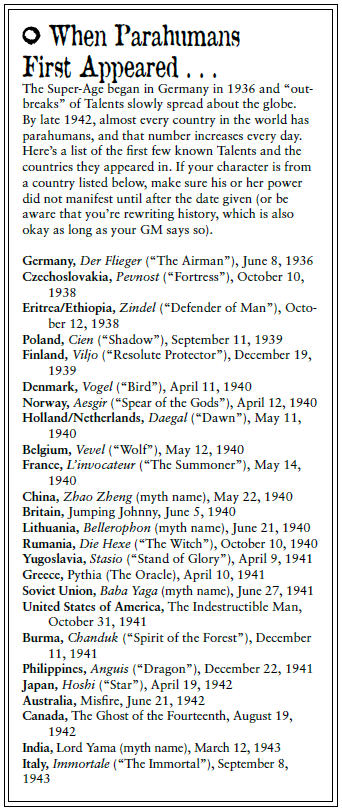
After that, continue fleshing out a detailed background including where you were born, raised, and educated, your age and former occupation, if any, your friends and family, and even personal anecdotes such as tales from school. A very brief summary of your character’s motivation is highly recommended. Okay, now for the actual mechanical stuff.
Stats
As I’ve already discussed, the basic Stats in this game are Body, Brains, Coordination, Cool, Command, and Sense. A Stat of 1 is weak or underdeveloped, 2 is normal, and the human maximum is 5. You’re not allowed to take a Stat at 5 at character creation, not that you’d want to.
Notably, a Body of 4 or 5 gives you some extra wound boxes and an automatic +1 Width to hand-to-hand attacks. Every point of Brains above 2 gives you a free skill point, but you can only spend it on Brains skills.
The only derived attribute is Base Will, which is Command + Cool. This is extremely important when it comes to your Talent powers, because in the Godlike setting, all superhuman powers are fueled by force of will. Your powers could fail, and fail spectacularly, when confronted by another Talent--or confronted with fatigue, hunger, cold, and post-traumatic stress, all sadly common in a combat zone.
You start with 1 point in each Stat, and get 6 more points to distribute. That’s right, your Stats average out to be totally average, something rarely seen outside games that make you roll 3d6-down-the-line to make a dungeon-delving shitfarmer. Maybe they want to emphasize that before their powers manifest, Talents really are normal people. The given reason is that given the dice math of this game, you only need a pool of 4d to have a 50/50 chance of succeeding in a difficult situation. (Ordinary skill Tests are assumed to be challenging).
Skills
Skills are a little more generous. You get 20 points to distribute how you please. At character creation, you can’t buy a skill higher than its governing attribute. (If you look at most of the Talent commandos NPCs near the back of the book, most of them don’t have skills higher than 2, anyway.)
What’s more, if your character is part of a Talent commando group like the United States’ TOC (Talent Operations Command), you get a free point in all of these skills: Brawling, Climb, Cryptography, Endurance, Explosives, Grenade, Knife-Fighting, Machine Gun, Map Reading, Mortar, Navigation (Land), Parachuting, Pistol, Radio Operation, Rifle, Stealth, Submachine Gun, Survival, and Tactics.That almost doubles your total starting skills.
Once you’ve picked Stats and Skills, that’s it, if you’re not a Talent! This game doesn’t have rules for anything like Merits & Flaws. You’re free to include whatever you think is appropriate in your character’s background. There’s a little sidebar warning you not to do stupid shit like saying that Truman is your cousin and Patton is your bosom buddy, but otherwise, fire away. So you’re a millionaire? Okay, you can buy gold-rimmed GI glasses. It’s not going to make much difference in the field.
Creating a Character
So I’m going to create a character. I’ll assign his Stats and Skills here, and give him Talent powers in the next update, assuming he discovered his powers in battle.
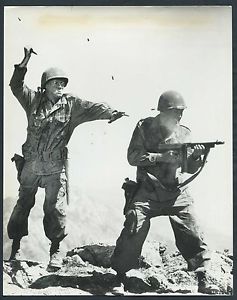
Paul Beckert was born on February 17th, 1918 near the part of Pittsburgh, PA that used to be Allegheny City. Although not wealthy by any means, his family rode out the Depression in relative security as his father was steadily employed as a librarian at the Carnegie Free Library. Paul was an odd, sickly child who seemed to take little notice of his surroundings, so much that his parents worried that he was developmentally delayed. Instead, he simply matured into a bookish, bespectacled loner who didn’t fit in with most of his peers. He grew up with a chip on his shoulder that was reflected in his interest in history and politics--he followed the example of Teddy Roosevelt, boxing and wrestling to strengthen his physique, and pursued an education that he hoped would allow him to reinvent himself.
Paul studied political science and economics at Penn State, all the while developing a fierce, if perhaps elitist patriotism based on the idea that educated men have a duty to contribute to society. An outspoken Democrat, he supported the New Deal and paid close attention to the disturbing news that seemed to arrive day after day. While others laughed at newspaper articles about Germany excluding “non-Aryans” from its national chess league, Paul was profoundly disturbed. He graduated in 1940, and was working as an office manager when the United States declared war on Germany.
Paul joined the Army immediately and was part of Patton’s invasion of French Morocco, part of Operation Torch. His Talent manifested during the amphibious landing, whereupon he was sent back to be trained by the Talent Operations Command. Here are his stats:
Body 2
Brains 3
Command 1
Cool 3
Coordination 2
Sense 1
Okay, so Paul is remarkably intelligent and mentally tough. But his obliviousness to his surroundings could be a death sentence in a combat situation, and he has no capacity for leadership--he simply doesn’t enjoy building rapport with others. Paul’s kind of a goon, what can I say?
Now let’s distribute some skills. I’m assuming he’s a Talent commando because character creation is always, always more fun in games that don’t assume you’ll be spending half your points on skills that you logically should have, even if it’s not your character’s focus or the player’s interest. He also gets a free point in a Brains skill. So after we add his powers, his character sheet will end up reading something like this:
Body 2
Athletics 1
Brawling 2
Climb 1
Endurance 2
Health 2
Knife-Fighting 1
Run 1
Brains 3
Cryptography 1
Education 3
Explosives 1
First Aid 1
Language 2 (French)
Map Reading 1
Mortar 1
Navigation (Land) 2
Radio Operation 1
Tactics 2
Command 1
Cool 3
Mental Stability 2
Coordination 2
Dodge 2
Grenade 1
Machine Gun 1
Parachuting 1
Pistol 1
Rifle 2
Stealth 1
Submachine Gun 2
Sense 1
Hearing 1
Survival 1
Base Will 4
By the way, I just realized that this game puts the “Survival” skill all over the place--except in the skill list. It doesn’t even get some detail in the appendix with the extra skills like Forward Observer and Radio Operation, some of which, you’ll notice, are given to Talent commandos for free. I’m lumping it under Sense since Brains has enough skills.
Next update: Let’s give this grunt some super-powers!
Talents
Original SA post
Godlike, Chapter IV: Talents
“Talent” is the most popular term for the supernatural powers manifested by characters in the Godlike setting, at least in the English-speaking world. Other cultures use terms like Surhomme or Severch Loodi (French and Russian for “supermen”), Custodes (Italian for “guardians”), Nephilim (Jewish myth), and Gaki (Japanese for “hungry ghost”). British Talents are sometimes called “the Few” in reference to a famous Churchill speech. And of course, the Nazi Ubermenschen.
The term “Talent” derives from Wild Talents, a 1932 book by Charles Fort. The book was an exploration of the paranormal, including supposed psychic abilities. Fort theorized that all such powers may have their roots in a “wild talent” commonly possessed by all humankind. But the one who popularized the term “Talent” was a journalist, Stephen Whelan, who wrote a 1940 New York Times article about the emerging phenomenon of superhuman powers. He referenced Fort’s book, supposing that these real, undeniable powers could simply be called “Talents.” It became a household word. Scientists still prefer the term “parahuman,” and newspapers drummed up sales with headlines reading super-this or super-that, but “Talent” is the one that took off.
Unlike the heroes and villains who fought in WWII during the Golden Age of comic books, Talents don’t gain their powers from numerous sources outlined in “origin stories.” In fact, nobody knows where Talents come from--they just appear one day. Often it happens in a life-threatening situation, but mostly it just happens.
So before we talk about Talent powers and how to customize them, let’s examine the nature of Talents themselves.
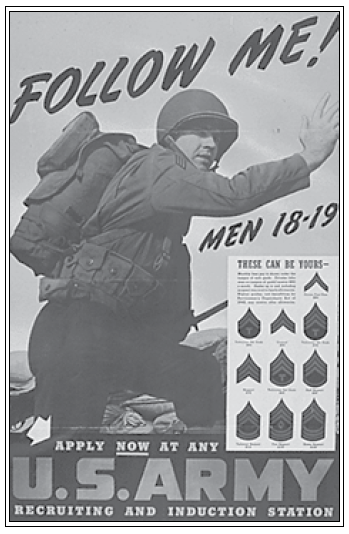
I'm still waiting for that shield with a flag on it.
Talents Have No Physical Explanation. There’s no Talent gene, Talent organ, or Talent particle. During the war, scientists will conduct everything from simple tests to autopsies on Talents, to no avail. To their frustration, they can only document the limits of any individual Talent, without knowing how it works.
Talents are Powered by the Mind. One thing that’s known (if not understood) is that Talent powers are a product of the Talent’s mind, linked to the deepest levels of consciousness. Most require awareness and concentration to work. Talents are fueled by willpower, and and anything that affects morale can cause Talents to fail--injury (especially head injury), fatigue, combat stress, and all kinds of personal problems.
Talents Detect Other Talents. Built into every single Talent power is the ability to detect other Talent powers within sight range. If you see a Talent use their power, no matter how subtle the effect, both of you immediately know that the other is a Talent. (This is because you’re using your Talent to detect theirs, then they detect yours in turn.) No one can detect your Talent when you’re not using it, so having a Talent that’s always on can be a liability.
This is why even “Duds,” Talents with useless powers, are still very valuable soldiers.
Talents Resist Other Talents.When a Talent tries to use their powers to directly affect another, a “contest of wills” ensues in which one tries to overcome the other. If the defender wins, the attacker’s powers fail dramatically. Talents can gain and lose willpower through these struggles, as if a spiritual power was being transferred from loser to winner. This only happens when Talent powers are used to directly hurt or interfere with another Talent.
Talents Don’t Obey the Laws of Physics, Except When They Do. Talent powers vary widely in how they interact with the physical laws that should govern them. Most teleporters, for example, make a sound like a gunshot when they use their powers, from air rushing in to fill the vacuum they created. Those that don’t have this limitation are far more valuable as infiltrators. Super-strong Talents still need leverage to lift and carry huge objects--except for those strength seems to work by nullifying the object’s inertia. They can pick up a tank by it’s gun barrel and hold it overhead without the tank breaking under its own weight.
Talents are conceptual. In a setting where powers are supposedly grounded in science, people ask common-sense questions like “How does Superman shave if his hair is as tough as the rest of him?” America’s Indestructible Man doesn’t have to worry about this, because his powers don’t make his tissues invincible--they make him immune to harm.
The downside of such powers is that Talent powers usually require concentration to work, or at least awareness. The Indestructible Man learned that his powers don’t work when he’s completely oblivious to danger--so he could shave, or get a tetanus shot, but he could also be killed by an assassin.
Because Talents are mental, they can also work according to ideas, rather than physical laws. The Talent power itself may even perceive things that the conscious mind does not. The best example I can think of is Misfire, an Australian Talent whose powers turned enemy explosives into sand--bombs couldn’t explode, and shells and bullets couldn’t fire. His power affected everything in a 1,000 yard radius, it could tell the difference between friend and foe, and it only affected weapons.
Talents are contextual. Another downside of the subconscious nature of Talents is that they don’t grant any special perks outside of the context in which they normally work. The infamous Nazi Der Flieger was immune to any adverse effects of flying at hundreds of miles per hour at 10,000 feet, but he was just as vulnerable to cold, friction, and asphyxiation as any other man when he wasn’t flying. Herkules was another Nazi Talent whose power was an immunity to tanks. He was invulnerable to being shot or run over by a tank, but totally vulnerable to being shot with a pistol or hit by a car.
Generally speaking, Talents can rely on their powers to protect them from their own effects, but not with fringe benefits. And if your powers should suddenly fail while you’re walking through a wall or holding a tank over your head, the results could be lethal.
Rules are Made to Be Broken. That said, almost all of these rules have exceptions.
The first notable exception is tribal magic. Some indigenous cultures, like the Saan and Kachin, possess Talent powers that can be transferred from one person to another, and that incorporate diverse “spells” which can be combined to produce new effects. People from outside these cultures simply cannot adopt the mindset required to make them work.
The other exception is the so-called “mad Talents.” Now, there are plenty of Talents out there who aren’t playing with a full deck. The Indestructible Man was a violent alcoholic. Der Flieger believed he was an Aryan superman. Plenty of Talents have deep personal flaws or bizarre beliefs about the source of their powers, and many manifest their Talents in life-threatening situations. But mad Talents have suffered trauma that completely unmoored them from reality--and from the mental limits of the Talent phenomenon. Such Talents, besides typically being very powerful, are immune to having their Talents tampered with by any other Talents. They are extremely dangerous and impossible to control.
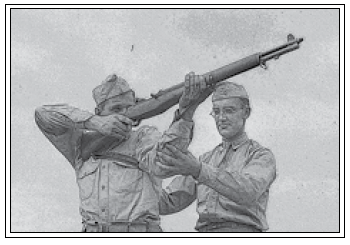
Setting Limitations on Powers
Now that that’s settled, let’s look at what powers do and don’t exist in the Godlike universe.
Precognition: Precognition exists, but it’s never perfect. Visions of the future are often hazy, or just static images, or come in dreamlike visions that must be interpreted. Visions of the future can also be just plain wrong. Thanks to the butterfly effect, visions of the future become less reliable the more you talk about them to others, so precogs are also reluctant to provide details.
Time Travel: Talents can travel into the past, but nothing they do will change the present, and no one will remember having seen them. Perhaps they create an alternate timeline, or only visit a complex illusion of the past--but they do travel somewhere.
Mind Control: Simple, absolute mind control doesn’t exist. The closest thing is having Hypercommand (a superhuman Command stat).
Telepathy: One-way telepathic messages are possible, but not any form of mind-reading.
Talent Manipulation: No Talent can permanently give, take away, or change another’s powers, nor can they absorb or imitate another’s Talent. “Zed,” a fairly common power, counteracts the effects of other Talents’ powers temporarily. (In fact, Zeds are one of the reasons that Talent-fueled plots don’t have a bigger impact on the world--Zeds are usually assigned to guard VIPs.) Some Talents can share the effects of their own powers (like teleportation or a force field) but not the Talent itself.
Talent Detection: Besides the line-of-sight detection that all Talents have, there are no broad-spectrum powers to locate other Talents.
Super-Science: Some Talents possess “Goldberg Science,” the ability to craft gadgets with wondrous powers. But these are just focuses for the Talent’s abilities, and don’t work when they’re not around. Talents with superhuman intelligence don’t create technological marvels because, long story short, they can’t be bothered. More on that later.
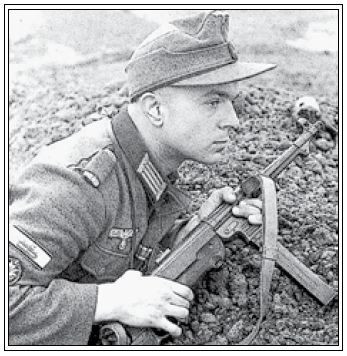
Buying and Using Powers
Powers are measured and used just like other things: you have a pool of dice and you roll them, looking for matches. They’re purchased with Will points, and PCs get 25 Will to spend. Leftover points add to your Base Will, which is important to Contests of Wills with other Talents.
This is a good time to bring up Hard dice and Wiggle dice again. Hard dice count as dice in your pool, but aren’t rolled; they’re automatic 10s. Wiggle dice can be set to any number after you roll the rest of your dice. Another advantage of Wiggle dice is that any time you take a penalty, Hard Dice are lost first, then normal dice, then Wiggle dice. If you have a Wiggle die in your pool, you’ll always get a set unless something reduces your pool to 1d.
Hard dice are powerful, Wiggle dice are skillful. Still, some powers (such as defensive and noncombat powers) will always favour having a big set of 10s.
There are three types of powers. You can buy regular dice, Hard dice, or Wiggle dice for any of them, noted as X/Y/Z. For example, Harm, a very useful power, costs 5/10/20, or 5 points for each regular die, 10 for each Hard die, 20 for each Wiggle die.
Hyperstats are enhancements to Stats; your points add to any roll using that stat. Having an effective stat of 6 or more also gives certain benefits unique to each stat. Some are mechanical while others are essentially narrative. All Hyperstats cost 2/5/10.
Hyperskills enhance skills in the same way. The only special benefit of Hyperskills is that with a Hyperskill pool of 7+, you don’t take a -1d penalty to multiple actions. All hyperskills cost 1/3/7.
Miracles covers everything that humans simply can’t do--flying, walking through walls, throwing thunderbolts, seeing the future, anything. Miracles have highly variable costs based on how useful they are, with guidelines for creating your own. They can also have their cost modified by Extras or Flaws that expand and limit their usefulness. A general disadvantage of Miracles is that because there’s no actual skill that corresponds to, say, summoning force-fields or causing earthquakes, you’re only rolling your Miracle pool whenever you use these powers.
Except for Power Stunts, that is. Power Stunts are skills that add to your Miracle pool when you’re using it for some specific trick you’ve learned how to do. (You can’t even buy these at character creation, only with experience points.) The advantage, of course, is that they’re as cheap to buy as skills, but they add to your power pool. The disadvantage is that Power Stunts should always be for some very focused or unusual use of the power. For example, the Dead Ringer power has a Power Stunt called Mix and Match, which allows you to use your ability to mimic other people to only mimic a specific feature, like fingerprints.
There’s some advice for the players on how to spend their points. A power like Harm or Break is attractive, but remember that you can often get more bang for your buck by buying Hyperstats and Hyperskills--they’re cheap, and you’ll get a full Stat+Skill dice pool for most of the things you do. Do you need heat vision when you can be a superhumanly good sniper? But the advantage of Miracles is that they can do things that Stats and Skills can never do, even when pushed beyond human limits. Break can tear a tank apart even faster than an anti-tank rocket. Miracles can also be versatile--a power like Telekinesis can both attack and defend as well as being useful for non-combat tasks.
I’ll go ahead and cover Hyperstats and Hyperskills in this update, and save Miracles for the next--along with the rules for using Will and improving Talent powers.
Hyperstats
Dice you buy in a Hyperstat stack on top of your normal rating. If your effective rating is above the human maximum, you get certain benefits from that. If your power fails in a Contest of Wills with another Talent, you lose the extra dice and roll using your normal rating. (Yes, using Hypercoordination to shoot another Talent in the head initiates a Contest of Wills, the same as if you tried to use a Miracle power to make his head explode.)
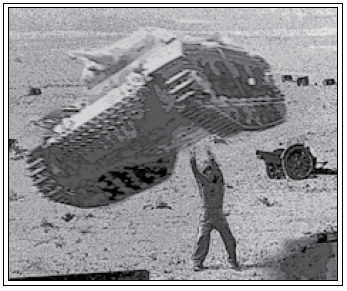
It's fun to stay at the YMCA.
Hyperbody makes you stronger and tougher than normal. This doesn’t change how strong you appear to be, but it does strengthen every part of the body. Something you should note is that while Hyperbody does make you superhumanly strong and tough, even Hyperbody 10 doesn’t make you bulletproof or able to lift a tank--for that, you need to purchase Miracles like Extra Tough and Heavy Armour.
Hyperbody 6: You can lift 800-2000 lbs. You get +1 wound box to your torso and each limb. Your unarmed attacks do +2 damage. You can also strike hard materials like stone and metal without hurting yourself (even if you lack the strength to actually break them.)
Hyperbody 7: You can lift 1-2 tons. Your unarmed attacks do +1 damage, but the damage is now Killing instead of Shock. You also have a natural Penetration rating of 3. You heal an extra Shock point after each battle.
Hyperbody 8: You can lift 2-4 tons. Unarmed attacks do +2 in Killing damage. Penetration rating of 4, and you can roll to tear apart and ruin heavy armour equal to your Body stat. You can broad jump your Body in yards, or half your Body in a vertical leap. You heal 2 Shock points to each location after battle. You can scream loud enough to shatter glass within a meter.
Hyperbody 9: You can lift 4-6 tons. Unarmed attacks do +3 in Killing damage. Jumping distances are doubled from Hyperbody 8. All Shock damage heals after battle. You can exhale hard enough to inflate a truck tire, and tear sheet metal like thin cardboard.
Hyperbody 10: You can lift 6-10 tons. Unarmed attacks do +4 in Killing damage. You can broad jump Body*3 or vertical leap Body*2 in yards. You can throw objects up to 3 tons as easily if they were baseballs. You can shatter glass within sight range with a scream.
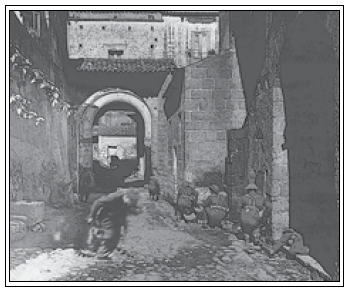
Who says the God-Stat is dead?
Hypercoordination enhances reaction time as well as muscle control throughout the body.
Hypercoordination 6: You can swing and climb with the ease of a chimpanzee.
Hypercoordination 7: You are an expert contortionist. More importantly, you can dodge gunfire with a Coordination+Dodge roll as if they were melee attacks.
Hypercoordination 8: You can catch slow projectiles like arrows in flight. You take no penalties for dodging multiple attacks, and even successful hand-to-hand attacks against you automatically have their Width reduced by 1. You climb so well you appear to stick to walls. You know, like a lizard.
Hypercoordination 9: Successful I'm a huge prick attacks have their Width reduced by 2. You can catch bullets in flight.
Hypercoordination 10: You have conscious control over every muscle, even in your internal organs. The width of any perceived attack is reduced by 2 (even Talent powers if they could conceivably be dodged).
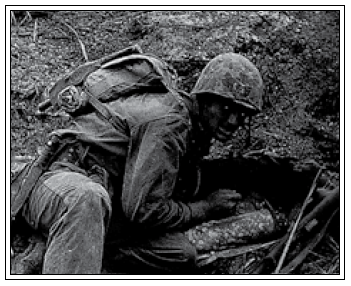
I can smell every soldier who's passed through this trench. And all of their socks.
Hypersense doesn’t give you senses people don’t have. If you want natural sonar--you know, like a dolphin--you need an appropriate Miracle. But it does enhance all your ordinary senses to incredible levels.
Hypersense 6: Your senses are sharp like a dog’s; you can smell and hear other people before you see them, and see in the dark.
Hypersense 7: You are impossible to ambush most of the time; you can detect motion through sight, sound, or scent up to a quarter-mile.
Hypersense 8: You can see in the dark, identify targets by smell, taste individual chemicals in a mix, and isolate individual sounds within a cacophony of noise. You can read print by touch..
Hypersense 9: You can see in near-absolute darkness, smell people up to a mile away, and track targets by scent. You can use your hands to detect the motion of even small animals within a mile. You can fire blind at only a -1d penalty.
Hypersense 10: No one can sneak up on you, ever, no matter what powers they possess. You see through any kind of camouflage or illusion instantly. You can fight invisible targets as no penalty--they’re not invisible to you.
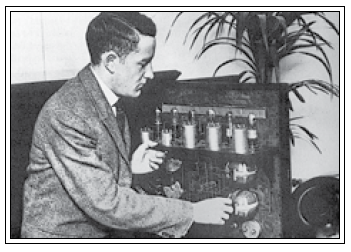
Increase the Flash Gordon noise and put more science stuff around.
Hyperbrains! Oh, this one’s a doozy. A big question, I’m sure, is why people with superhuman intelligence don’t develop advanced weapons, end the war, and rule the world. Godlike has an explanation for this, though I’m sure not everyone will find it satisfying.
The first reason is that few Hyperbrains are interested in using their talents in such a way. Hyperbrains spend most of their time considering abstract, theoretical problems that are far beyond the rest of us. Imagine asking Stephen Hawking to bend his talents toward solving some practical technological problem, and how far out of your league he is when it comes to his scientific interests and knowledge. Now imagine someone who’s as far out of his league as he is out of yours. Now, if you can, imagine trying to keep up a conversation with such a person while you work with them on a project. Fortunately for them, Hyperbrains are mentally equipped to handle the tedium of communicating with the rest of us--but they lack the skill to explain what they’re thinking. (Socially, Hyperbrains only really get on with fellow Hyperbrains, where they only have to suffer the mild inconvenience of having to communicate through the fairly inefficient means of squirting air through their meat.) Fortunately for us, Hyperbrains spend most of their lives “lost in thought” in what they consider the only real world--the world of ideas--and have no interest in money or power.
Second, super-intelligence is inextricably linked to super-empathy. A Hyperbrain can easily conceive some fantastical engine of war--and will, in the same moment, conceive the people, communities, and culture that will be annihilated by it, and even the implications for world politics well into the future. What’s that, Mr. Truman? You’d like me to build a supertank? Yes, as soon as I’m done imagining the birth, life, hopes, dreams, sorrows, and agonizing death of Lotte Kessler, who will be killed by the first one we roll off the production line--no sir, I don’t know her, but it’s likely that she exists. Yes, I’ll get right on that.
As a result, most Hyperbrains working for nations at war work as number-crunchers, acting as convenient computers for calculating taxes and other logistical problems. Hitler’s pet Hyperbrain, Der Archiv, concluded early on that he should try to steer Germany towards a peaceful surrender. Stalin’s chief Hyperbrain had to be sequestered to protect him from the sanity-blasting inhumanity of the war.
Hyperbrains 6: You have a photographic memory including sound and scent.
Hyperbrains 7: You can calculate numbers with the speed of a modern computer. You have a comprehensive photographic memory of everything you’ve ever experienced.
Hyperbrains 8: You get +1 experience points each session. You can draw things you’ve seen or transcribe conversations you’ve overhead with perfect accuracy.
Hyperbrains 9: You can calculate figures as fast as a supercomputer and work on intellectual problems even while asleep.
Hyperbrains 10: +2 experience points per session. Everything you’ve ever witnessed, down to the smallest detail, is remembered with perfect accuracy.
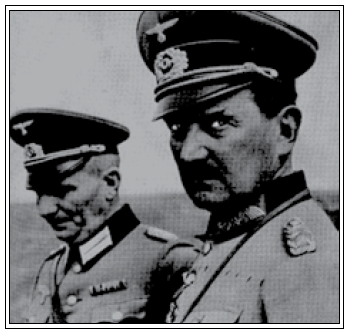
Even Mecha-Hitler is no match for Haunted House Painting Hitler!
To the leaders of the world, Hypercommand is the scariest superpower that exists. Talents with Hypercomand are so charismatic and convincing that people under their sway exhibit signs of hypnosis--it’s the closest thing to mind control that exists. Worse, perhaps, as those persuaded by Hypercommand have to live with the fact that they were merely persuaded. Fortunately, the effects of Hypercommand fade when the Talent isn’t around to reinforce his will. Mechanically, Hypercommand doesn’t add to Base Will.
Hypercommand 6: In a friendly conversation, you can convince anyone of even the most ridiculous intellectual proposition, given enough time.
Hypercommand 7: You can convince anyone of anything in a matter of days--you could convince the most ardent Nazi to become a pacifist and a Communist.
Hypercommand 8: You can convince whole crowds of anything in a matter of hours, even if you suggest riotous violence or mass suicide.
Hypercommand 9: You can bark simple orders in a voice that compels people to obey. (This doesn’t work with actions that give them time to think about what they’re doing, so it’s actually easier to convince someone to shoot themselves than to make you dinner.) Your ability to influence crowds works within minutes.
Hypercommand 10: You can turn a crowd into your ardent followers within an hour. You can change someone’s mind, breaking even the most extreme indoctrination, with a few simple sentences.
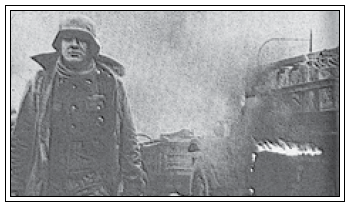
Trenchcoat grants a +2 bonus to Hypercool.
Hypercool is among the most subtle Talents, but eerie in its effect. Hypercool Talents have supernatural calm and self-control even in the most extreme situations. Unlike Hypercommand, Hypercool does add to Base Will.
Hypercool 6: +1 Width to all your combat rolls for purposes of initiative only. You can use Cool instead of Body for Endurance rolls.
Hypercool 7: +2 Width for initiative. You never suffer penalties due to pain, distraction, or exhaustion.
Hypercool 8: +3 Width for initiative. You are totally immune to pain and torture--pain is just another stimulus.
Hypercool 9: +4 Width for initiative. All your emotions are under your conscious control--even horrific personal tragedy can’t shake you. All feelings, physical and emotional, are just stimuli that you can consciously choose to use or not use however you wish.
Hypercool 10: You never have to make Cool+Mental Stability rolls at all. Even your automatic functions are under conscious control.
Hyperskills
Hyperskills are fairly self-explanatory. Besides not having a penalty to multiple actions with Hyperskill 7+, they offer no special benefits. All Hyperskills are fairly cheap at 1/3/7. So if, for example, you have other powers giving you super-strength, a bit of Hyperskill in Brawl isn’t a bad idea.
Next time I’ll be covering Miracles. At this time, I’d like to throw open the gate to suggestions for what powers to give our sample PC, Paul Beckert. I already had an idea in mind, but it turns out that my idea corresponds to the most annoying power in the game. So throw anything my way and I’ll try to build it in this system.
Next time on Godlike: It’s a Miracle! One man, one goal, one mission. One heart, one soul, Just one Solution!
Miracle Talents
Original SA post
Godlike, Chapter IV Part II: Miracle Talents
Godlike has a huge list of Miracle powers for you to choose from, with suggestions for Extras, Flaws, and Power Stunts. Most of the powers you’d want to create can probably be handled by what’s already in the book. Still, you can create your own powers, and the Miracle creation system explains why powers cost what they do. The Will cost of a Talent is based on what Qualities of usefulness it falls under: Attacks, Defends, Robust, and Useful Outside of Combat.
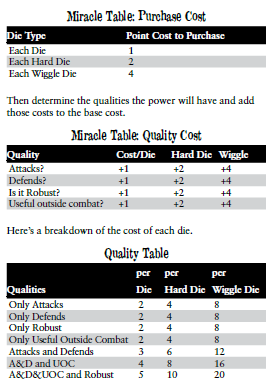
If a power can Attack or Defend, it means you can roll your Miracle pool to attack or to create Gobble dice. (It also includes some powers, like Heavy Armour, that aren’t rolled at all.) Robust means that the power is fairly easy to use and difficult to interfere with--most powers are Robust by default, but a power definitely isn’t Robust if it requires a place of calm and safety, or time to charge up, or isn’t even under your control (like prophetic dreams). Useful Outside of Combat is self-explanatory--if it's not used for attack or defense, it must be useful for something, right?
Extras and Flaws are modifiers that increase or decrease the cost of a power along with increasing or decreasing their versatility. The listed powers have suggested Extras and Flaws, and some generic ones are given for creating custom powers.
Always On (+1/2/4): Your power is always active. Only taking Killing damage or damage to the head can temporarily shut it off. The downside is that you can’t ever shut it off, and are thus always visible to other Talents.
Endless (+1/2/4): When your power is activated, it remains active until you’re distracted or hurt. Powers that don’t require constant concentration, like invisibility, could even stay on while you’re asleep.
Reflexive (+2/4/8): Your power automatically reacts to protect you at even a hint of danger. Even when taken completely by surprise you can roll at a -1 penalty.
No Upward Limit (+2/4/8): For each 5 points of Will you spend, you can double the effective range, weight, area, etc. of a use of your power. (5 Will doubles, 5 more will quadruples, and so on.)
No Inertia (+2/4/8): You cancel inertia on targets your power affects. So, for example, a super-tough talent could not only survive being hit by a tank or a bombshell, you could stand your ground and not even be moved.
No Leverage (+2/4/8): You don’t need leverage to affect targets with any kind of Talent strength. You could grab a truck by its bumper and pick it up.
No Weight (+2/4/8): As long as you’re strong enough to lift something, it behaves as if it’s weightless. You could pick up a tank and then walk onto a raft without sinking it.
As you can tell, several of the sample Extras are mainly for powers that deal in strength. Considering that they’re largely narrative and have no strict mechanical benefit, I question their cost.
Speaking of Extras, that’s where that “Talents don’t obey physics except when they do” factor comes into play. Powers are costed strictly based on the guidelines in the table above. It seems that whenever the designers thought a power was a little too good for its default cost, they added in stuff like “Invisibility makes you go blind,” unless you purchase an Extra to eliminate this problem. They don’t explicitly say so--surprising, since Stolze is exceptionally straightforward with readers about his design goals--but I think that’s what they were doing.
Flaws reduce the cost of a power, typically by reducing its Robustness--making it tricky, time-consuming, or even dangerous to use, or limiting the kinds of things it can affect. Not all these sample Flaws would logically apply to all powers.
Attach (-1/2/4): The power is attached to another power that must also be active. (Key example: moving super-fast while flying.) The powers must have the same Qualities. If one power fails, so does the other, so it can be dangerous to attack someone with a power set that is also protecting you.
Backfires (-2/4/8): Using your power inflicts a point of Killing damage to your torso.
Mental Strain (-2/4/8): Using your power inflicts a point of Shock to your head.
Expensive (-1/2/4): Using your power costs a point of Will.
Full Power Only (-1/2/4): Your power only works at its maximum setting. You always teleport exactly 1 mile, you always create exactly 2 tons of ice, etc.
Interfere (-2/4/8): Any Talent observing you can spend 1 Will to cancel your power, without a Contest of Wills. They also know they can do this.
No Contest (-2/4/8): Your powers automatically fail when other Talents are around.
Shy (-3/6/12): You must be completely alone to use your power.
Peace of Mind (-2/4/8): Your powers don’t work unless you’re in a particular mental state (GM discretion).
Nervous Habit (-1/2/4): Your power doesn’t work unless you perform a particular physical or mental ritual--singing a song, silent prayer, cracking your knuckles, etc.
No Physical Change (-1/2/4): Your power is based on a complex illusion. An invisible Talent can still be photographed, a shapeshifter still leaves human footprints, etc.
Short Duration (-1/2/4): The power’s effects only last (Width) rounds when you activate it. This even applies to damage--dead people were just knocked out.
Uncontrollable (-3/6/12): After activating the power, the GM determines when and how it works.
Before you ask, yes, it’s technically possible to have the power to become invisible when you’re alone.
Talent and Will
Before getting into all the Miracle powers, some notes on Will, which will be covered in detail later. Characters have a Base Will equal to Command+Cool (plus leftover Will points at creation), and a Will stat that fluctuates up and down.
Every time you use a Talent power, you have to “risk” a point of Will. If you roll no sets, you lose the point. If you roll a natural 10, you gain a point. (Hard and Wiggle Dice don’t count.) No Will left? Can’t use any powers.
Contests of Wills are a simple bidding war. I attack you with a power, you spend 1 Will to cancel it, I spend 1 Will to cancel your cancel, and so on until somebody runs out of Will or gives up. Winner regains 1 of the Will points he lost.
You also gain Will by achieving something significant, doing something really cool, saving lives, and defeating enemy Talents. Will is separate from experience points, and can be spent to improve your Talent powers or your Base Will. You can’t have more than 50 Will.
It’s tempting to stockpile Will, but you can instantly lose half your Will due to failing Mental Stability rolls, suffering a personal tragedy, or being subdued in combat. Losing all your Will doesn’t just stop you from using powers, it’s the road to permanently lowering stats and gaining mental illnesses.
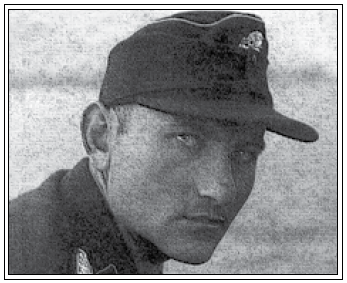
He’s got...Karl Donitz eyes.
Miracles
I’m not going to just copypaste this entire section of the book, but I’ll list each power (with its Qualities and Regular/Hard/Wiggle die costs in parentheses), discuss the more interesting issues, and highlight interesting Extras and Flaws.
Aces (ADRU 5/10/20): You have stupid crazy luck. You can add your Aces pool to any other die pool (10 die max still applies). You can choose to do this after you roll the other pool. The downside is that Aces costs a Will point for each die you use (2 for Hard and 4 for Wiggle dice!)
Contagious (+4/8/16): Nearby friends can also use your Aces dice. You spend the Will for each of them.
Flamboyant (+1/2/4) Aces acts in crazy ways--your bullets miss and kill enemies with ricochets, Nazis pants fall down, etc. like a cross between Final Destination and Buster Keaton.
Limited Height/Width (-1/2/4): Any sets higher than 6 or wider than 3 are discarded (two separate Flaws).
Affinity (ADRU, 5/10/20): You can adapt to an environment that isn’t normally comfortable, or even livable, for humans. The default version assumes you can adapt to whatever environment you’re in; limited Affinity gets cheaper as the chosen environment becomes common (desert), rare (Arctic), or very rare (in a raging fire). Protection from harm related to environmental conditions is automatic, but by rolling, you can get an extra +1d to all your actions (which is why this power has all Qualities by default).
Affinity Sense (+1/2/4): You can sense living creatures in your environment, within a mile.
Your Element (+2/4/8): You get +2d instead of +1d.
Sharing is Caring (+5/10/20): You can share your Affinity for (Width) minutes by touch.
Addiction (-1/2/4): You need to be in your element, and have to make Mental Stability rolls not to lose -1d from all pools when you go more than a day without it.
Alert (4/8/16): By activating your power you can sense danger in a given situation, like “Will we be ambushed if we go down into this valley?” Width determines how precisely you can measure the imminence of attack, Height gauges the strength of the enemy.
Deep Concentration (Power Stunt): Add this when you have at least an hour to meditate on the situation.
Detailed (+2/4/8): Alert gives you a detailed description of the danger--not including names, but how well-armed and prepared they are, how their forces are arranged, etc.
Dreams (-2/4/8): Alert only comes to you in dreams the night before a dangerous situation, and you only get “bad feelings” about a given situation.
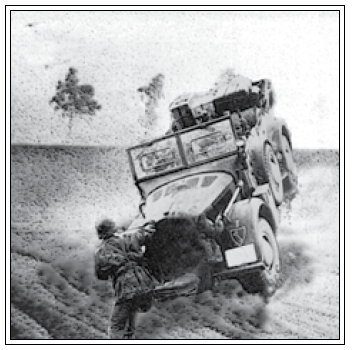
Jeepform
Alternate Form (ADRU, 5/10/20): You have an alternate form you can transform into by activating the power. The form can be almost anything, ranging in size from a hummingbird to an elephant, but the change is purely cosmetic--to simulate the form’s powers, you buy them with the Attached Flaw. (This power has all Qualities so that you can Attach anything to it.)
The advantage of the Form itself is that it takes damage separately--any wounds you’ve suffered don’t carry over, and if your Form dies, you revert to your human form. But the Form is “frozen” and doesn’t heal when you’re not in it. “Reviving” a slain form to use again costs 30 Will.
Bind (ADRU, 5/10/20): Your power binds a target, restricting it. Perhaps you squirt a sticky fluid, like some kind of human termite, or you have a magical lasso, like Cowboy Curtis. This power doesn’t do damage directly, but it can pin, bind, and strangle like a garotte. Targets can only use Body, not Body+Brawl, to break free. You can Bind up to your pool in separate targets at once.
Trip (Power Stunt): Add this when tripping targets.
Physical Stuff (+1/2/4): Your power creates some actual substance that binds people, which remains behind after you release the Bind.
Poof (-2/4/8): You have to be totally focused on your target or the Bind vanishes.
Block (DR, 3/6/12): You can generate a force that blocks an attack--much like bind, how this manifests is up to you. You need the Reflexive Extra or Hypercoordination to block bullets, and it doesn’t block Area attacks like gas or explosives. Sadly, this power doesn’t do a good job of mimicking having an invincible shield; you know, like Wonder Woman in Batman v Superman.
Blind Block (+2/4/8): Your Block reflexively deflects the most dangerous attack against you each round.
Linked (-1/2/4): Your Block is linked to a hit location (like a shield on your left arm, etc.). You need to be able to bring it to bear to use Block.
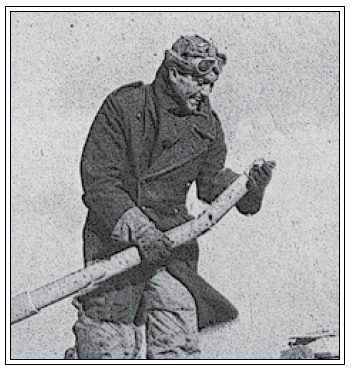
I was just cleaning it, and it went off.
Break (ARU, 4/8/16): One of my favourite powers, Break allows you to destroy heavy armour with your hands and feet. The Width of your roll permanently reduces a target’s HAR. Break doesn’t do damage to people directly, but anyone with a die of Break can do Killing damage with unarmed attacks.
This leads to an aside: this game doesn’t handle something like a “death touch” or “matter-disrupting touch” very well. Powers require concentration, so powers that require you to touch an enemy force you to take a multiple action, using the lesser of your Miracle or Body+Brawl pools at a -1d penalty and hoping for 2 sets. Ouch. The only upside is that the unarmed attack also deals damage. If you want a power that lets you destroy shit by touching it, buying both Break and a Brawl Hyperskill (which is pretty cheap) is a good bet. Weirdly, though Break works by touch, just using Break on an armored target doesn’t assume you need to take a multiple action.
Bend (Power Stunt): This lets you use Break to sculpt metal.
Control (+1/2/4): You can decide exactly how much HAR to reduce.
Picky (-1/2/4): Your Break only works against a certain type of armor (steel, concrete, etc.).
Containment (ADRU 5/10/20): You can create force fields that will contain and restrict anything--contain the force of an explosion, stop a cloud of gas from spreading, stop a vehicle in its tracks, or make bullets drop out of the air. You have to overcome the target’s Body, or a die pool based on its weight, in a dynamic contest. (Gas is trivially easy to contain, but something weighing 3 tons or more has 10 dice.) Containment works on anything and everything, which you could limit with a Flaw.
Actual Boundary (+2/4/8): Your Containment creates a real physical barrier that lingers for (Width) minutes.
No liquids or gases (-1/2/4): Containment doesn’t restrain liquids or gases.
Control (ADRU 5/10/20): You can control and manipulate a particular thing--steel, dirt, bullets, air, gravity, light, dogs, humans, chalk, anything! By default, the power can control anything, and you choose what you’re affecting when you make the roll. Like Affinity and Containment, you can reduce the cost by limiting it to something you encounter less often. Control of living creatures isn’t mind control, it just allows you to control them like puppets--they’ll freak and resist as much as possible, complaining all the while unless you force their mouths shut.
As is standard for powers of this kind, Width of your roll determines damage or a die penalty to whatever actions you’re interfering with. For example, with Control (earth) you could pelt someone with dirt to do Width damage, make the dirt open up under their feet to give them a -Width penalty to their attack roll, make the earth propel them upward to give them a bonus to a Body+Athletics roll, or increase or reduce the damage of an active earthquake. Control causes Killing damage unless the GM decides Shock would make more sense.
Create (ADRU 5/10/20): Similar to Control, this lets you create phenomena rather than manipulating them. How much you can create is based on mass and volume; with 10 dice you could create up to 1000 lbs. or 800 cu. ft. It uses the same rules as Control if you’re using your power to hurt, hinder, or help someone.
So why don’t you use this power to create a ton of gold? Things you create only last (Width) minutes. You can spend 10 Will to make them permanent, but even then, other Talents can spot the material and spend 1 Will to destroy it.
Craftsmanship (Power Stunt): Use this when you’re trying to make a small, detailed object, like guns or jewelry.
Duplicate (+2/4/8): You can use your power to duplicate precisely any object you touch and which your power can create. It doesn’t create functioning machines.
Greedy (-1/2/4): Your creations temporarily consume the Width of your roll in Will points, which you get back when they dissolve.
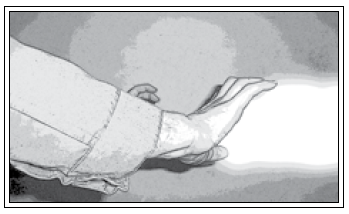
I can dampen anything but Photoshop filters.
Dampen (RU 3/6/12): In the same family as Control and Create but a bit more esoteric, Dampen allows you to reduce or eliminate some physical phenomenon. You could lift objects by dampening gravity, or turn off machines by dampening electrical conductivity. You can’t dampen matter out of existing, just energy and physical reactions. You can’t dampen, say, cold or darkness, because those things are just the absence of heat and light--but you could make it colder and darker. How quickly the effects of your power wear off depends on the phenomenon--if you dampened gravity, that would be instantly restored, but a chilled room would take time to warm up, and a deactivated radio would have to be switched back on.
You can also make this a Defends power by increasing the cost accordingly--you could manipulate inertia to make bullets fall out of the air, for example, or combustion to stop them from firing. As with Control and Create, you can make this power cheaper by limiting it to sets of linked phenomena (sound and vibration, gravity and inertia, etc.).
Contagious (+3/6/12): Anything that touches your target is automatically affected as if you’d rolled the same set against it.
Struggle (-2/4/8): You must roll to maintain the effect each round.
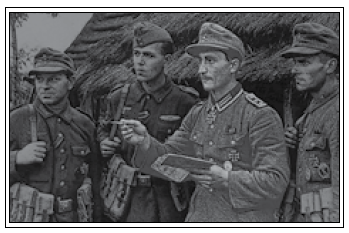
I am, in fact, the very model of a modern major general.
Dead Ringer (RU 3/6/12): You can become a perfect physical duplicate of another person, right down to voice, mannerisms, and even fingerprints and blood tests. All you have to do is touch the target and activate your power. If you can’t touch them, you can become a basically accurate double based on what you can see and hear, but you have to beat a Difficulty based on how long you’ve studied them. You can “remember” a number of forms equal to your pool.
Your stats and powers don’t change, and you don’t absorb any memories, though you will imitate something like a tic, limp, or cough. In fact, the only physical test Dead Ringer won’t fool is one for diseases. Dead Ringer allows you to change your sex, and you can sire or bear children (which are genetically yours and not the target’s). A male-to-female Dead Ringer will lose the fetus if he reverts to male before delivering the child. Speaking of which, you only revert if you choose to, you’re injured and fail to succeed at another Dead Ringer Test, or if you lose a Contest of Wills.
The main drawback of Dead Ringer is that while you’re in an assumed form, your power is always on. So you won’t fool Winston Churchill’s Talent bodyguards.
Mix and Match (Power Stunt): Use this to imitate only one aspect of a particular form, like fingerprints.
Animal Magic (+2/4/8): You can imitate animals, up to twice or down to half your true size.
Absolute Duplication (-1/2/4): You can’t “remember” previous forms--not even your own. You need to touch targets again to assume their form, and you can only reconstruct a semblance of your own form from old photographs. This Flaw does have a built-in advantage: you can’t be forced to resume your true face, because you no longer have one.
Vampiric (-1/2/4): You must taste your target’s blood to assume their form.
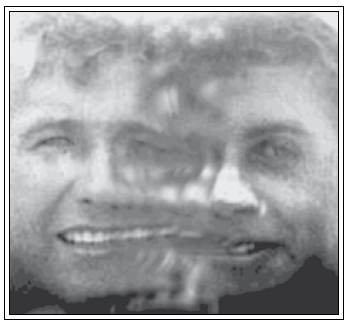
Vertigo disease.
Detection (DRU 4/8/16): You can detect specific phenomena at a distance. The most common and obvious use of this power is to detect enemy forces, but it could also detect people in general, animals, vehicles, salt, uranium, whatever. You can limit this power to certain things or groups of things. (Imagine being able to tell exactly how the enemy’s tanks are arrayed before a battle.) This power absolutely cannot detect Talents. The power only gives you a single still image when you activate it. (Unless targets are in visual range; then you can see them clearly through any camouflage or obfuscation.)
The Higher and Wider your roll, the more precisely you can detect the location of what you’re looking for, and the details of how it’s arranged. The maximum range of your power goes up with your pool, from 50 yards (1d) to 3 miles (10d). I don’t know why it has the Defends Quality--it doesn’t say anything about using it to anticipate and dodge attacks. I guess they just felt it was too good and needed to cost more.
Close Your Eyes and See (Power Stunt): Use this when you have a minute to close your eyes and concentrate. Considering you’ll mostly be using this power out of combat, that seems too good. Granted, your range is still limited solely by your Detection pool.
Tracking (+2/4/8): You can identify a specific target and maintain an up-to-date image of it.
Blind Spot (-2/4/8): Detection doesn’t work on targets in certain areas (in the dark or inside buildings perhaps).
See It First (-3/6/9): You can only detect targets you’ve seen before.
Disintegration (ADRU 5/10/20): You can erase objects (or living creatures) from existence by touching them. You can only erase whole objects, from 10 lbs. at 1d, up to 2 tons at 10d. Disintegrating moving objects, namely people, is tricky--you need to do a multiple action with Body+Brawl, unless you pin the target first.
So why would you want this power instead of Break or Harm? It does have some unique advantages. First, Disintegrate doesn’t deal damage--if you roll a set, the target is erased from reality. Second, it cannot be undone by another Talent. And of course there are advantages to making something vanish without a trace. This power Defends, so I’m assuming you can negate attacks against you by making knives or bullets vanish as they touch you. Perhaps this applies to someone grabbing or punching you, too.
Power Focus (Power Stunt): Spend 2 rounds concentrating, and you can add this pool on the 3rd.
No Touch (+1/2/4): You don’t need to touch things to disintegrate them, and can use Disintegration as a simple attack action.
Piecemeal (+2/4/8): You can disintegrate parts of objects--very handy for, say, disabling a vehicle.
Non-Organic (-2/4/8): You can only disintegrate non-living things.
Extra Tough (RU 4): This is the simplest power in the game: each die you buy gives you an extra wound box in every hit location. This isn’t a Defends power because you don’t roll it to Gobble dice from attacks--in fact, you’ll probably never roll Extra Tough at all. This power is Always On by default, so beware of being spotted by enemy Talents.
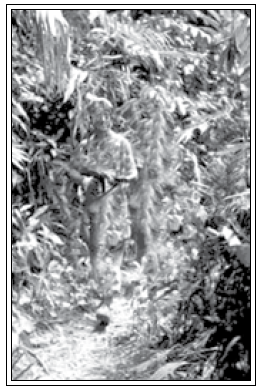
Wow, these cargo shorts really work.
Fade (RU 3/6/12): You can become transparent to the point that you are almost impossible to see (especially in darkness or fog). Activate Fade, and the Height of your set becomes a Difficulty for anyone trying to spot you. (You still make an Opposed Test using Coordination+Stealth as usual.) But once someone successfully spots you, they can attack you without penalty until you find cover. Fade lasts until you turn it off, sleep, or lose a contest of wills.
Stillness (Power Stunt): Add this when you are standing completely still.
Flicker (+1/2/4): You fade in and out rapidly to confuse enemies. Fade gains the Defends Quality, but only in hand-to-hand.
Up Close (-1/2/4): Your power only works on people at least 10 ft. away. Closer than that, people can see your form is faded-out, but you’re still basically visible.
Fetch (ARU 4/8/16): You can teleport objects you can see into your hands, from 210 lbs. at 2d up to 6-10 tons at 10d. They must be complete objects, and must appear in your hands. (Presumably, a truck would be standing in front of you with your hands on it.)
Distort (Power Stunt): Add Distort when you don’t care if you get an intact item--Fetched objects come to you twisted and ruined. (Remember that if you just want to wreck things, this power isn’t the easiest way to do it.)
Chain Lightning (-1/2/4): You can’t teleport an object without teleporting other things that are touching it--if you want to steal someone’s gun out of its holster, you also get his holster and all of his clothes, for example.
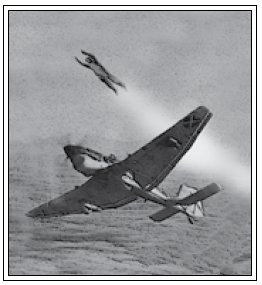
Fly like a puma
Flight (DRU 4/8/16): Activate your power and take to the air. You don’t need to roll again until you land, or if you’re attempting a difficult maneuver. Your max speed is based on your pool, from 20mph at 2d up to 110mph at 10d. (To go faster, buy Super Speed and Attach it to Flight.) To take other actions while flying, like shooting, you have to take a multiple action.
Barnstorming (Power Stunt): Use this for tricky stunts where you barely have room to maneuver, like taking a hairpin turn down an alleyway or flying through an open window.
Fast (Power Stunt): This increases your pool for purposes of max speed--you never roll faster.
No Altitude Limit (+2/4/8): This acts as a sort of Affinity power for high altitudes--you don’t have to worry about cold or axphyxiation. You can’t reach outer space.
Running Start (-1/2/4): You need a 30 ft. running start to take off.
Okay, that’s a big ol’ wall of powers. I will cover the rest of the Miracles in the next entry. By the by, I haven’t gotten any suggestions for what super powers to give my sample PC! Someone gimme something.
Next time on Godlike: Miracles from G to Z!
More Miracle Talents
Original SA post
Godlike, Chapter IV Part III: More Miracle Talents
Last update, I gave an overview of Talents and their powers, explained Hyperstats and Hyperskills, and covered about a third of the Miracle powers. This update covers the rest of the Miracles.
Ghost (RU 3/6/12): You can enter a trance and leave your body behind, traveling as an invisible, intangible ghostly form. As a ghost, you can walk or run about normally and pass through walls and other objects, but this also means you can’t touch objects or ride a vehicle. So scouting or spying can take a long time, and you can’t steal anything.
You can only activate Ghost in a safe, quiet place, and anything that disturbs your body snaps you back to it. But the biggest limit on Ghost is that your ghost form isn’t invisible to Talents, and any Talent that sees you can dissipate your Ghost by spending a Will point. So you won’t be sneaking into Mussolini’s office while his Talent guards are on duty.
Physical (+3/6/12): Your Ghost can pick up objects and even attack people, using your stats as normal. Any successful attack on your Ghost dissipates it.
Disturbing (+1/2/4): Animals can see your Ghost. I’m not sure how this is an advantage.
Dream walk (-1/2/4): Your Ghost only works when you’re asleep.
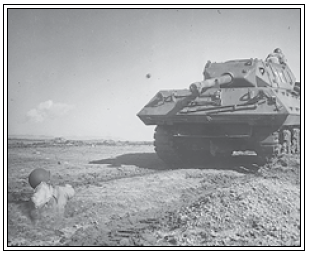
Presented without comment.
Go First (ARU I Don’t Know): Go First is another power that’s never rolled. Each “die” of Go First increases the Width of all your rolls in combat, but only for initiative purposes.
The tricky thing about Go First is that...I can’t tell you how much it costs. The table says it’s 8 points per level, the entry then says it’s 2, and I found an old preview pdf by Stolze with another table that says it costs 1. I’m going with 2, since for not much more you could buy dice in Hypercool that do the same thing and more.
Combat Precognition (+2/level): Go First works by allowing you to predict other people’s actions. If your action is a reaction to something someone else is doing (like dodging or trying to disarm someone who’s coming at you with a knife) add +1d to your action.
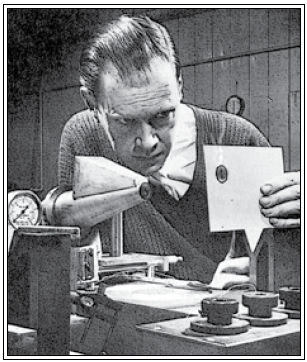
Our speech balloon technology is light years ahead of yours.
Goldberg Science (ADRU 5/10/20): Named after Rube Goldberg, this power allows you to create technological marvels that are decades ahead of modern science. The catch is that no matter how much time you spend tinkering with your creations, they’re really just junk--the devices are just a focus for your Talent.
But who cares? Whether you really know how to build a raygun, or just use your Talent powers to trick reality into thinking that you do, the point is that it works. Well, there are a few sharp limitations to Goldberg Science. (This is easily the most complex Talent in the game.)
First, Goldberg Science takes time and materials. The more powerful and convenient the device, the more difficult it is to build. You need access to a lab or workshop and heavy industry.
Second, Goldberg Science is extremely expensive, Will-wise. The power itself is expensive, and your creations have to be “invested” with Will points. Speaking of which, Goldberg devices are susceptible to being resisted or interfered with by Talents just as if you were using a power on them directly. If a device loses a contest of wills, it stops working forever the Will you invested in it is lost. The same thing happens if the device breaks, and most are quite fragile.
Last, your Goldberg devices only work within the range of your perception. You can arm the rest of the party with rayguns, but they’ll only work while you’re around and conscious. You can’t invest all your Will in creating an Illudium Q-36 Explosive Space Modulator, write “To Hitler, XOXO Marvin” on it, and fire it at Berlin, because it’ll drop out of the air as soon as it leaves your sight.
So with all those limitations, what’s the point? There are two huge advantages to Goldberg Science. First, your devices can imitate any other Talent power--for other Talents, buying completely new and different powers is very expensive after character creation. Second, this is the only way to “give” Talent powers to other people--even non-Talents! (Provided you’re around to watch them use it, that is).
So, uh, about actually creating stuff.
First the Goldberg Scientist decides what power he wants to put in the device, and what kind of device it will be. This will determine the Difficulty of the roll to create it. Next they spend Will points to purchase the powers for the device. It costs the same amount of Will as if you were buying those powers outright.
Then they have to actually create the device. The Difficulty of the roll is a base 2, 4, or 6, depending on whether the device is room, vehicle, or handheld-sized, plus 1/10th the Will cost of its powers. So a pair of super-gloves that grant Break 5d (20 Will) would increase the Difficulty by 2. You can’t build a device with a higher pool than your Goldberg Science Pool. Get a match, you made it. Fail, and you just lost all the Will you spent. Yes, it’s just gone.
Using a Goldberg device is simple; just roll its pool as if you had that power. Even non-Talents can do it! Goldberg devices can even gain and lose will like a Talent using their power; the Will gained is “held in escrow” in the device. Again, if the device loses a Contest of Wills, it fizzles out and dies.
But once the device is created, the creator has several other tricky issues to contend with. First, a Goldberg Scientist can’t have more active devices than dice in his pool. He can’t make more until he disassembles one, claiming that Will “held in escrow.” Second, a Goldberg Scientist with any active devices can’t gain Will normally--he only gains Will while using his devices, which absorb the Will, and any other Will gains are lost.
Frankly, I’d never want to play a Goldberg Scientist. Although it’s possible to make huge Will gains and wield great power by arming the party with your creations, it’s really fucking expensive and there are too many ways to just lose a huge amount of Will outright.
Fiddly Bits (+2/4/8): You can make your devices out of any old junk lying around, as long as you have a safe place to work on them.
Not Affected (+4/8/16): Your devices can’t be shut down by other Talents’ Will.
Voila! (+5/10/20): You don’t build your devices at all--simply concentrate on them and they appear from thin air.
Strenuous (-2/4/8): Building your devices inflicts [Width] Shock to your torso from the exertion of the effort.
One of a Kind (+3/6/12): You can only create one type of Goldberg device, simulating one power.
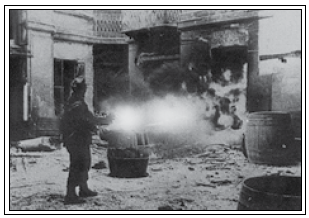
Kurt Vonnegut’s going to write a book about this.
Harm (ADRU 5/10/20): Simply put, Harm fucks shit up. Whether your Harm power takes the form of laser beams from your eyes or bolts of lightning from your arse is entirely up to you. All forms of Harm inflict Width in both Killing and Shock damage. It also has a lot of Extras you can add to simulate various kinds of Harm. Also note that Harm is a Defend power and can be used to Gobble dice from attacks!
Area (+1/2/4 and 5 Will per Area die): Harm causes an explosion that does Killing damage, plus 2 automatic Shock to everyone, within 10 yards.
Penetrating (+1/2/4 and 3 Will per rating point): Harm has a Penetration rating, able to blast through heavy armour.
Spray (+1/2/4 and 3 Will per rating point): Harm has a Spray rating like a submachine gun, representing a flurry of attacks (or perhaps a beam you can sweep across targets).
Electrocuting (+4/8/16): Harm hurts your victim twice, both normally and as an electrocution hazard.
Splash and Spread (+2/4/8): Harm inflicts 1 Shock on each hit location to the one you struck, and continues to spread, doing 1 Shock for [Width] rounds. Suitable for freezing or poisoning attacks, I suppose.
Burn (+1/2/4): Harm sets the target on fire.
Vicious (+1/2/4): Harm does an extra level of Killing damage.
Graphic (-1/2/4): The effects of your powers are as horrible to behold as any tank or machinegun. Make a Cool+Mental Stability roll when regarding your own handiwork.
Jumpy (-1/2/4): When surprised or startled, make a Cool+Mental Stability roll to avoid having your power go off in a randomly-rolled direction.
Healing (RU 3/6/12): You can heal injuries. Activate your power, and heal [Width-1] Killing damage and twice that amount in Shock damage to the target hit location. Plants and animals are easier to heal; use Width instead of Width-1.
Healing repairs wounds without leaving scars or permanent injuries, and it heals those things too, even crippled or severed limbs. The bad news is that human targets need to be conscious and willing, and Healing has no effect on diseases, just injuries.
Force of Will (+1/2/4): For each 5 Will you spend, you can increase the Width of a successful roll.
Empathic Healing (-1/2/4): Any damage still remaining on the target hit location affects you, as well.
Leaves Scars (-1/2/4): Your power can’t heal Killing damage without leaving normal scars.
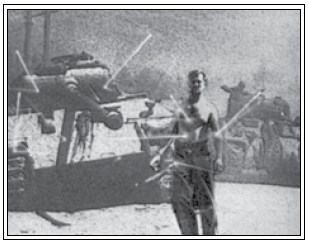
Heavy Armour (7/level): Another power with a fixed cost that isn’t rolled, Heavy Armour gives you a HAR, reducing the Width of all attacks against you (and negating any attacks with their Width reduced to 1 or less). Penetrating weapons affect it normally, and anything that penetrates your Heavy Armour knocks it out for a round. (Though if you’re relying on your armour to protect you from a tank gun and it fails, that may not be a concern.) Like similar powers, Heavy Armour is Always On by default.
Focus (+5/level): You can spend a round to “focus” your HA and move points from one hit location to another.
Hardened (+7/level): Penetration has no effect on your HAR.
Ablative (-1/level): Area, Spray, and Penetrating weapons reduce your HAR. You can spend 1 Will per point to restore it.
Immunity (DRU 4/8/16): You’re practically immune to a common source of harm. When it would hurt you, all Shock damage is erased, all Killing damage becomes Shock, and even that Shock damage is reduced by your pool. (This power is Always On and you don’t often need to roll it, but you will need to roll to reactivate it if you do get hurt.)
The listed cost assumed a very common form of injury, like kinetic damage. Less common threats cost less, 2/4/8 for things like cold and starvation, and 1/2/4 for rare dangers like acid or radiation.
Shared (+2/4/8): You can share your Immunity with a single target by touching them.
Unshaken (+1/2/4): Only Killing damage can shut off your power.
Perception-based (-2/4/8): Your power doesn’t work if you can’t see the threat coming.
Instant Death (AR -/6/-): This power kills people. Period. You can only buy Hard Dice, and it’s only good for killing people. Instant Death does Width in Shock and Killing, so 3hd is just more than enough to kill any normal human (effectively doing 4 Killing and 1 Shock to the head).
You can narrate the effects however you like--maybe you cause heart attacks, or turn people to stone, or make the earth open up and swallow them. But in any case, Instant Death means you just will people to die, so it bypasses any kind of physical armour or cover. If you see them, you can kill them. However, Instant Death doesn’t defend against attacks, damage vehicles or objects, or disable people non-lethally--it kills people. Period.
The other, “meta” disadvantage is that if you use Instant Death on another Talent, be prepared for them to burn all their Will trying to resist you. I might take my chances against another dangerous power rather than go to Will 0, but if I’m targeted by Instant Death I have nothing to lose. But against normal people, in Patton’s words, you’ll go through the enemy like shit through a tin-horn.
Multiple Targets (+2/4/8): You can split your dice between multiple targets at no penalty.
Must Beat Target’s Body (-2/4/8): You have to beat the target’s Body roll in either Height or Width to hurt them. If they win, they take no damage.
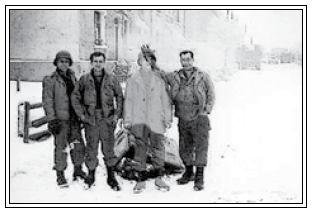
Insubstantiality (DRU 4/8/16): Welcome to the most annoying power in the whole fucking game.
I originally wanted to make my example PC, Paul Beckert, a guy who could walk through walls. Hacking this power into something anyone would actually want to use turned out to be not worth it.
Here’s how Insubstantiality works: activate your power and you, and what you’re wearing and carrying, are now insubstantial. You pass through objects and creatures and are immune to any attack. So why is that complicated?
Because your body no longer interacts with other matter. You can’t breathe, hear, or speak, because you’re no longer touching the air. You also sink into the ground just as readily as you pass through other objects. (I’m not sure why they didn’t declare that you’re blind, since light isn’t touching your eyes. For that matter, they might as well have said you aren’t affected by gravity, either, so you’re now standing in outer space as the Earth goes on spinning around the sun.)
The only way to actually use Insubstantiality to pass through things is to hop at them and turn insubstantial as you pass through them, then turn it off just before your feet hit the ground. I hope you have a big dice pool, or the other soldiers are going to laugh at you for running around jumping face-first into doors.
You can turn objects insubstantial (up to half your max lift), and they become substantial again when you let go of them. Also thanks to these weird assumptions about how Insubstantiality should work, there’s one way you can use it to attack people even though it’s not an Attack power. Make a multiple action (Insubstantiality and Body+Brawl) to leap at someone and pass through them, briefly turning them insubstantial as well. Succeed, and they take Width+1 in Killing damage to both legs from being merged into the ground.
I’m not sure, though, why I wouldn’t rather use this power to just lodge a handful of junk inside someone, and there are no guidelines for other tricks that turn other people insubstantial. (And why wouldn’t it make a door drop off its hinges and through the ground?) This is particularly odd because, as you’ll see later, one of the most famous uses of Talent powers in WWII was when someone used this power to foil an assassination attempt--turning the assassin and his bomb insubstantial, so that only the two of them were killed by a visible but silent explosion that didn’t touch anything else.
I’m unsatisfied with this power, but I think I understand why they handled it this way. Interpreting the power in a “common sense” way makes it quite potent in the world of Godlike.
Assuming a Talent can breathe, move normally, and carry clothes and gear while insubstantial, there’s virtually nothing you can do to stop them. The main way to stop a Talent using their powers is to injure them, or beat them in a Contest of Wills. Insubstantial Talents are immune to any physical attack and their power isn’t offensive, so that’s out.
An insubstantial Talent could walk around with a sack of grenades, immune to all harm, tossing bombs that became substantial again as soon as they left his hands. And that’s not an edge case, but something soldiers would figure out quickly. But not being able to phase anything but clothes would be a severe limitation in war. And if phased objects remained uncontrollably phased, now the Talent has the ability to dispose of any small object. It’s a conundrum.
Breather (+2/4/8): You can breathe.
No Sink (+1/2/4): You don’t fall through the fucking floor.
Lose Possessions (-1/-2/-4): All your gear and clothes fall off.
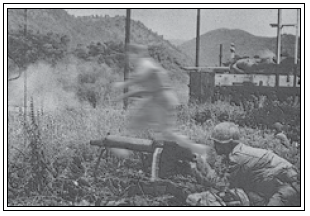
Invisibility (DRU 4/8/16): You can become invisible. Activate it and you go invisible for [Width] rounds in combat, or [Width] minutes out of it.
Besides being able to dodge attacks, once you’re already invisible, anyone firing at an invisible target loses 2d (and Wiggle dice go before normal dice do). Invisible people also can’t be dodged in close combat. (This doesn’t apply to people with lots of Hypersense, of course.)
There are two kinds of invisibility: mental and physical. The mental kind is much cheaper because you can take the No Physical Change Flaw. Physical invisibility requires you to buy an Extra if you don’t want to go blind from the light passing through your eyes instead of reflecting off them. Since it’s not like there were security cameras in the 1940s, I don’t know why you’d care.
Sidestep (Power Stunt): Add this when you’re going invisible to dodge attacks.
See While Invisible (+1/2/4): You don’t go fucking blind when you’re invisible.
Unshakeable (+2/4/8): Even being injured can’t cause your invisibility to fail.
Tiring (-1/2/4): Being invisible does a point of Shock damage to your torso each minute.
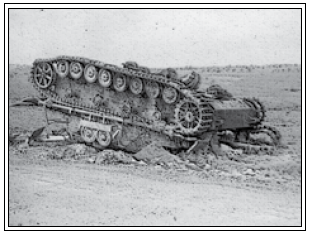
No springs!
Jinx (ADRU 5/10/20): The opposite of Aces, Jinx fucks people up when they do stuff you don’t want them to do. It can be rolled to Gobble dice from any opposing pool. Like Aces, Jinx is expensive, costing Will for any die thrown, and it can’t interfere with Talent powers.
Unconscious (-1/2/4): Your Jinx power acts uncontrollably on your subconscious impulses, affecting your shitbird drill sergeant and other people you don’t like. You still have to pay Will for it, too.
Multiple Actions (10/level): Surprisingly, this one isn’t too complicated. Each level of this power offsets a -1d penalty for doing multiple actions. You also get your Multiple Actions level in “free” Width to distribute among sets you roll. You still have to use the lowest pool if you’re taking different types of actions. For non-combat tasks, the increased Width reduces the time it takes to perform tasks, so you can potentially do hours-long jobs in seconds.
Switcheroo (Power Stunt): Add this when performing sleight-of-hand.
Blunt (-1/2/4): Your super-speed doesn’t all for delicate tasks. You can run, fight, and shoot, but not perform surgery or look for a proverbial needle in a haystack.
Perception (RU 3/6/12): You have some kind of sensory perception that humans don’t have. (This doesn’t simulate something like super-hearing; for that, you want Hypersense or a related Hyperskill.) You have to “switch” back and forth between your Perception and your normal senses, and you have to link your new sense to one of your existing ones. (So you have the ability to “hear” emotions, “see” radio waves, or “feel” heat like a pit viper.) On top of the base 3/6/12 cost, there’s an additional cost based on what sense you have. The ability to invent any new sense each time you activate your power is very powerful and very expensive.
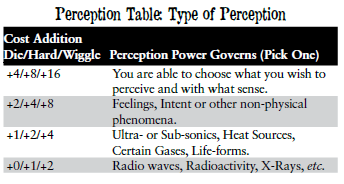
Mind reading doesn’t exist in the Godlike universe, but this power can detect things like emotions or intent by reading subtle physiological changes. A sidebar also notes that something like “X-Ray Vision” doesn’t work the way we imagine it. You can see someone behind a wall, see the gun in their pocket, even see how many bullets are in the gun. But you can’t see colours, or read papers, and seeing through people’s clothes isn’t erotic--because you’re not technically seeing them.
Superimposed (+1/2/4): Your Perception is laid over your other senses, so you don’t have to “switch” when you activate and deactivate your power.
Sensitive (-1/2/4): You’re vulnerable to having your Perception overloaded (as if by a blinding flash or sickening odor) which knocks it out of commission for a few hours.
Precognition (RU 3/6/12): You can see visions of the future. Events depicted are not inevitable; on the contrary, as soon as you begin acting on or even talking about your vision, the “butterfly effect” makes it less and less accurate. Precogs tend to be mysterious and secretive, saying and doing just enough to effect positive outcomes without creating unknown variables or negating the usefulness of their vision.
Precognition works in one of three ways, and it always costs Will. You can deliberately enter a trance and ask a question, which can be specific or open-ended. This costs 5/10/20 Will for each 1d/1hd/1wd you roll. It can also activate spontaneously at the GM’s discretion when you’re near something that will be important in the near future; this only costs 1/2/4. It can also activate spontaneously in your dreams, which only costs the 1 Will you would’ve gained from a night’s rest.
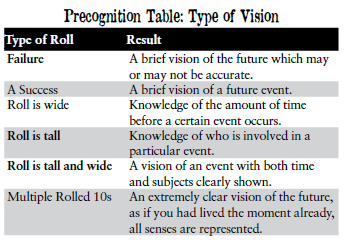
Update (Power Stunt): Add this when you’re trying to get an updated vision of something you’ve envisioned before.
Mothering (+1/2/4): Your power looks out for your close friends and family.
Static (-2/4/8): Your visions are only still images.
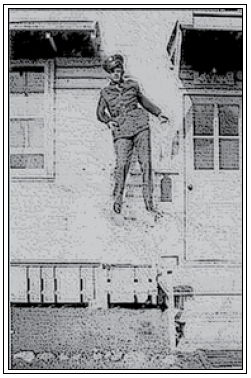
Like my invisible guitar? Anyway, I call this one the Blitzkrieg Bop.
Psychic Artifact (ADRU 5/10/20): This power creates fully-functional objects you can use, with a limit of 5 lbs. at 2d up to a half-ton at 10d. The objects last for Width in rounds (in combat) or minutes (out of combat). They’re only visible to Talents, and any Talent can attempt to destroy one by entering a Contest of Wills with you.
Machines like guns, radios, and vehicles require at least 2 points in a relevant skill, but simple tools do not. Weapons can’t do more than Width in Killing, and making weapons with qualities like Spray and Penetration costs 2 Will per level. (You can only duplicate weapons that exist, so no wonder weapons, no matter how much Will you have to spend.) Psychic weapons and vehicles never run out of ammo or gas, though.
This power Defends since, for example, you could summon an invisible brick wall in front of yourself. Everything you make is created in contact with you, though, so you can’t attack people directly.
Extended Duration (+2/+4/+8): Your artifacts last 3 times as long.
Levitating (+2/+4/+8): Your artifacts float in the air and can be controlled by your thoughts.
Visible (-1/-2/-4): Your Psychic Artifacts are fully visible, and look like an idealized version of the object made from translucent glass.
Rapport (U 2/4/8): You can establish a connection with a person or object you touch; after that, you can see and sense them by focusing. You can see what they see, their body, and their surroundings. You can target a number of subjects equal to your dice pool.
Other Talents can sense a Rapport, and break it by spending 1 Will. If your target dies, you take equivalent Shock damage to the same hit location.
Read Lips (Power Stunt): You can’t hear through the Rapport link, but add this when trying to read lips through it.
Emotional Rapport (-1/2/4): You can only form a Rapport with someone or something you feel very strongly about.
Regeneration (RU 3/6/12): With a successful activation and a small Will expenditure, you can heal wounds and even diseases. Activate your power and spend 1 Will, and you can heal either Width in Killing to one damage location, all Shock damage to all hit locations, or a disease (it even cures cancer). You can heal a crippled limb by spending 5 Will, but you can’t regrow severed limbs. Losing your head is still fatal, Highlander.
Automatic (+2/4/8): Regeneration activates automatically if you have Will to spend, even if you’re unconscious.
Regrowth (+1/2/4): You can regenerate severed limbs.
Side Step (DRU 4/8/16): You have the uncanny ability to avoid danger. Whether it’s limited precognition, bursts of super speed, or just miraculously standing in just the right spot, this power gobbles dice from anything threatening you. You can also use this power to “lead” an enemy’s attack into another enemy nearby, at a -1d penalty.
Side Step has two limitations: First, it’s an active power; it doesn’t passively defend you while you do other stuff with no multiple action penalty, or help against attacks you don’t see coming. Second, it’s not so great against Area attacks. Sure, you can dodge a grenade being thrown at you, but you still take the Area damage from being in the blast area. Same thing if the grenade landed at the feet of the ally next to you.
Leading (Power Stunt): Add this when redirecting an attack at another enemy.
Hand-to-Hand Only (-1/2/4): Only works in close combat.
Sidekick (ADRU 5/10/20): You have an invisible friend who follows you around and obeys your orders. Divide your Sidekick pool between its Body and Coordination; its other stats are the same as yours. You can buy other powers for your Sidekick with the Attached flaw.
Sidekicks are invisible to non-Talents, and enjoy the relevant benefits (-2d to attacks against them). If the Sidekick is hit in combat, it’s a dynamic contest between the attack and your Sidekick pool. Lose, and the Sidekick disappears for an hour and you lose a point of Will.
Second Pair of Eyes (+2/4/8): By holding still and concentrating, you can see through your Sidekick’s eyes.
Bad Dog (-1/2/4): Your Sidekick has a mind of its own. It obeys orders, but spends its free time getting into mischief.
https://www.youtube.com/watch?v=9Fu-Xmq0DHE
Stun (AR 3/6/12): This is a specialized Harm that only does Shock damage. Though it can never inflict Killing damage, it deals twice Width in Shock, and extra damage overflows into an adjacent location. Bear in mind, unlike Harm, Stun can’t defend against attacks.
Multiple Stun (Power Stunt): Add this when attacking multiple targets, to offset the die penalties.
Touch Only (-1/2/4): You have to hit your target in close combat, using a multiple action, to activate the power. On the plus side, the Brawl attack deals damage too.
Super-Speed (DRU 4/8/16): You can move incredibly fast. By itself, this power doesn’t let you perform multiple tasks deftly or quickly--you want Multiple Actions for that. It’s more like driving a car or flying a plane, increasing speed without increasing reaction time. It does Defend, however.
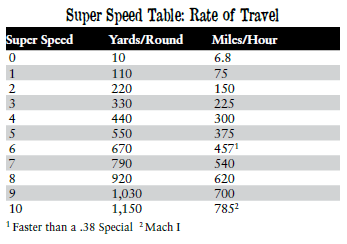
Super-Speed has to be attached to another ability--perhaps another movement power like Flying, or your Running skill or Body stat.
Mach One Punch (Power Stunt): Add this to your pool and use it to make a hand-to-hand attack. You punch an enemy many times at super-speed, dealing Width Shock. This only works if you add the Attacks quality.
No G’s (+2/4/8): You are unaffected by G forces, able to make hairpin turns at full speed.
Braking (-2/4/8): You need a full round to come to a safe stop. If you can’t, you roll 1d per 100 yards/round and take Width in Shock and Killing. Ouch.
Telekinesis (ADRU 5/10/20): You can move things with your mind. To use it, just activate it successfully--the weight limits for TK are the exact same as for the Body stat, using your TK pool instead. You can use TK to attack people, rolling a dynamic contest against their Body. You do Width Shock, or Width Killing at TK 7+. You can also use your TK pool to choke people, or to pick up a weapon and use it. (The virtues of telekinesis are versatility and working at a distance. If you just want to lift stuff, or to kill people, TK is an expensive way to do it.)
Multiple Hands (Power Stunt): Points in this skill offset the multiple action penalty for lifting multiple objects.
Touch (+1/+2/+4): Your telekinetic “hands” have a sense of touch, so you can use your power to feel around what you can’t see.
Clumsy (-1/-2/-4): You have to roll two sets, or beat a Difficulty of 5, when moving objects with finesse or handling fragile objects. Otherwise, your TK roughly jerks its targets around.
Teleport (ADRU 5/10/20): You can instantly teleport objects and creatures, including yourself. The limits on Teleportation are mass and distance, as seen in the table below. But unlike other powers, Teleportation is modular--you can take a step down on the Mass chart to increase Distance, and vice versa.
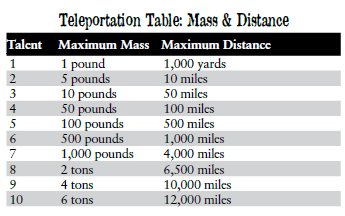
Teleportation is tricky. You have to touch the target, and you have to have a clear mental picture of where you want it (or yourself) to go. However, a good teleporter is very dangerous in combat--you can teleport grenades or heavy pieces of rubble right above targets. (They can roll Coordination+Dodge to get clear.) And if you can actually get ahold of an enemy, by taking a multiple action or pinning them first, you can easily kill most people by teleporting them high in the air.
Teleportation makes a loud noise, like a rifle shot, from air rushing in to fill the mass you displaced.
Reorientation (Power Stunt): Add this when you’re trying to change your body’s orientation without traveling far--like turning an instant about-face or going from prone to standing.
Silent (+2/4/8): Your teleportation doesn’t make noise.
Blind Teleportation (+3/+6/+12): You can teleport to places you’ve never seen before. Your power makes sure you “land” on solid ground, and not merged with other objects, but doesn’t protect you from any other dangers.
Forced Attendance (-1/-2/-4): You can’t teleport anything without going along for the ride.
Nothing Biological (-2/-4/-8): You cannot teleport anything biological (except yourself).
Self Only (-2/-4/-8): You can only teleport yourself. This doesn’t include clothes and gear. Greg Stolze wants you naked.
Slow (-1/-2/-4): You take multiple rounds to teleport, slowly fading away and reappearing. The upshot is that it’s relatively quiet.
Uncertain Arrival (-3/-6/-12): Depending on how well you roll, you may wind up to the left or right of where you intend, or up to 20 feet off the ground, risking injury.
Thought Control: Hypercommand 7+
Godlike is quick to point out that it doesn’t have any straightforward mind-reading or mind-control powers. But Hypercommand is close, and there are some Extras you can buy for it.
Buddy, Buddy (+1/2/4): No matter how horrible you are, people think you’re a great guy and feel compelled to go out of their way to help you. You probably know a guy like this.
Non-Verbal (+3/6/12): You can issue compelling commands non-verbally.
Eye Contact (-1/2/4): You must maintain eye contact with the target to convince them.
Thought Control: Projected Hallucination (ADRU 5/10/20): You can change people’s perceptions. This can be used for dramatic things like making people believe they’re covered with scorpions, or subtly, such as making someone think they’re talking to a different person.
Using Projected Hallucination is pretty simple: it’s a dynamic contest between your pool and the target’s Sense+Skill. If you’re fooling multiple senses, they get to roll whichever relevant skill is highest. If you’re just creating a bunch of distracting nonsense with no plan, your Width becomes a Difficulty for all actions. In any case, you have to keep concentrating to maintain illusions, and can’t take most offensive actions while doing so.
By the way, you can use this power to make someone feel like their arm is on fire or a vice is squeezing their head--roll the power to attack, and if you succeed, you temporarily disable that hit location as if it was filled with Shock.
Time Fugue (ADRU 5/10/20): You can freeze an object in time. If you beat a Difficulty based on the size of the object (a person is 4 and a 10-ton object is 10) you can freeze it for (Width) rounds. Frozen people and objects don’t move, aren’t affected by gravity, and can’t be damaged or changed in any way while time is frozen for them. When the fugue ends, they resume doing whatever they were doing--a truck will keep going, a rock will fall to the ground, bullets will speed toward their target, a grenade will explode, etc. A person will keep doing whatever they were doing, but likely stop and do a double-take as the world appears to have instantly changed around them.
(The rules don’t explain what happens when you do shoot someone who’s frozen in time, or hit them with a car, etc. If the bullets just stopped when they touch them and resume their path when the power wears off, that’s as good as shooting them right away. I suppose anything touching the target would lose its momentum.)
Vanish (+1/2/4): Your target disappears completely while it’s frozen.
Touch Only (-2/4/8):You have to touch your target.
Transform (ADRU 5/10/20): You can transform yourself into pretty much any creature or inanimate object, ranging in size from a bug to an elephant depending on your pool.
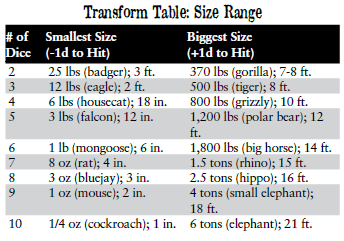
Turning into an inert, inanimate object is easy; activate your power and you become that thing for (Width) hours. The change is purely cosmetic, and any damage causes you to revert to human form. Turning into living creatures is more expensive: you have to spend 1 Will for each die needed to mimic that creature (so turning into a rat-sized animal costs 8 Will).
When you become an animal, you pool your Body, Coordination, and Sense stats and reassign those points in a way that makes sense (GM’s call). You also get your Transform pool as points to assign to stats or skills that make sense for that form. You can also “exchange” your Transform dice for Miracle dice that make sense for that animal (like a bat’s ability to fly and echolocate). But while you can turn into a fantastical creature, you can’t give yourself supernatural powers.
Most interesting is that any form you take looks like a generic, indistinctive example of that thing or animal. Most people don’t notice this when it comes to animals, but if you assume a “human” form you will look bland and indistinct to the point of being creepy.
Metamorph (Power Stunt): Add this and spend 1 extra Will when transforming to give your form some distinct features.
Light Armor (+1/2/4 and 2/level): This gives your Transformed forms a Light Armor rating.
Human Senses (+1/2/4 per sense): You can use your human senses while transformed into inanimate objects. Turn into a chair and spy on people.
Animate or Inanimate (-1/2/4): You can only turn into animate or inanimate objects, your choice.
Transmutation (ADRU 5/10/20): You can transform the substance of a target into another substance. You can’t change its shape, but of course if you turn a gun into steam or a bottle into snowflakes, it will do that on its own. You aren’t limited to base chemical compounds; you could turn Hitler into a Hitler-shaped statue made of matzo. (Note that if you just want to use this to kill people, an Instant Death power would be better, with an Extra to represent all that free bread.)
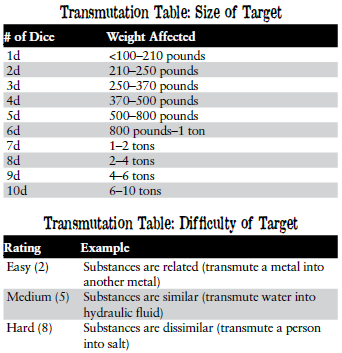
So why don’t you just make tons of gold? Any Talent can see that an object has been Transmuted and reverse the process by spending a Will point. (Anything you kill stays dead, though.)
Results Specialist (Power Stunt): Add this when turning the target into a particular substance you’ve chosen.
Selective (+2/4/8): You don’t have to target a whole object. Why strain yourself turning a truck into mustard when you could just turn the axles to mustard?
Zed (ADR 4/8/16): Named for the British term for zero, Zed is the only power that exclusively negates other Talent powers. It doesn’t work by stopping them from working--no Talent can do that--but by sensing what they’re doing and counteracting it. If your enemy is flying, it pushes him down to the ground. If he’s lifting something it makes it heavier. Zed doesn’t work on non-physical powers, or ones that only affect the Talent using them. (Zed does work on powers that are physical but don’t invoke laws of physics, like Transmutation or Teleportation.) Using Zed doesn’t invoke a Contest of Wills.
Specific Power (Power Stunt): Add this when you cancel a specific power you’ve chosen.
Radius (+3/6/12 and 3/level): Zed affects everyone in a radius around you, from a few feet up to 10 miles.
No Go (-1/2/4): There’s a specific power your Zed just doesn’t work against.
Next time on Godlike: Okay, it turns out that that was very long and it took a long time. I’m going to save all the details of Will, experience, and creating some sample characters for a future update!
Talents and Will
Original SA post
Godlike, Chapter IV Part IV: Talents and Will
Ultimately, all Talent powers are based on Will. Because all Talents are manifestations of the same Talent: the ability to impose your beliefs on reality. So the strength of your powers is based on your belief in them, as well as your self-confidence and morale.
Everyone, Talent and non-Talent, has a Base Will score equal to Command+Cool. Talents also have a Will score that fluctuates up and down. At character creation, any leftover points of Will become points of Base Will--a great bargain compared to what it costs to increase Base Will later.
War, huh, good god! What is it good for? All your Talent powers stop working if you have zero Will. When you use a power, you must risk 1 point of Will, and you lose it if you don’t generate a set and fail to activate the power. Losing all your Will is the fast lane to losing not only your powers, but your mind. You spend Will in Contests of Will with other Talents, and to improve your powers.
Gaining and Losing Will
You gain a point of Will whenever you roll a Height 10 set while using your powers. (Hard and Wiggle dice don’t count. Optional rule: at character creation, you can tie your Will to a Stat or skill instead of your powers: useful for those who only have hd or wd.) You get a point of Will any time you win a Contest of Wills, and if you defeat another Talent in combat, you gain their Command Stat in Will points. You also gain someone else’s Command Stat in Will points if you save their life. Finally, you get a point when you accomplish something significant (like taking an enemy position) or do something awesome and impressive--GM’s call, but if players are high-fiving you it probably counts.
Oh, and if your Will is lower than your Base Will, you get a point back for every good night’s sleep. That’s why Base Will is so important.
You lose a point of Will when to fail to activate a power. Most of the other ways of losing Will are severe, costing you half of your current Will total. Failing a Cool+Mental Stability check, suffering a great loss, and losing a fight with another Talent all cut your current Will in half. If you try to save someone’s life and fail, you lose their Command Stat in Will points.
Contests of Will
Contests of Will are a big part of using Talent powers, but the rules are really simple. If you use a Talent to harm another Talent, they can spend a Will point to stop you. You can then spend a Will point to negate their point, and so on, until someone gives up or is reduced to zero Will. Contests of Wills happen instantly and automatically and don’t require an action from anyone.
The only tricky part of Contests of Will is figuring out when they happen and when they don’t. They only happen when a Talent uses powers to directly harm or interfere with another Talent.
Is someone shooting lightning at you? That definitely begins a Contest of Wills. It also applies if someone is attacking you with a Hyperstat or Hyperskill--but if you win, you don’t negate their attack completely, just their extra dice. You can defend yourself normally. (Yet another reason to take Hyperskills instead of flashy Miracles.)
However, an invisible man attacking you doesn’t begin a Contest--his Invisibility power only affects him, not you. Likewise, you can’t stop another Talent from smelling you with his Hypersense or locating your squad with a Detection power--what he’s affecting is his own perceptions. A Contest does happen, however, if an enemy Talent uses the Control power to turn the dirt under your feet into mud--even though he’s affecting the mud, and not inflicting damage, in game mechanical terms he’s using his Control pool to try to reduce your dice pool, so that counts as harm.
As an example of how Contests do and don’t work, let’s say a super-strong Talent throws a truck at you. You can’t stop him from lifting the truck, because his Hyperbody is affecting the truck, not you. But a Contest begins when he makes a Body+Throw roll to toss it at you, because then he’s attacking you directly with his Body Stat.
Finally, a Contest of Wills only happens if the defender knows they’re under attack. That’s one reason so many Talents died in the war.
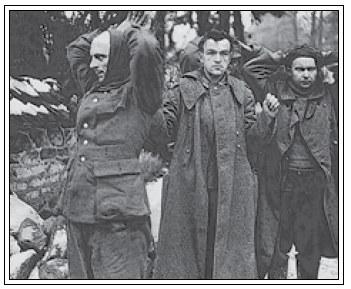
Battle Fatigue
Characters suffer combat stress from losing all their Will or from failing Cool+Mental Stability rolls. Talents are stronger at facing the horrors of war than normal people--the same Will that lets you tell gravity to fuck off acts as a buffer against things that would break an ordinary person.
You have to make a Cool+Mental Stability roll in these circumstances: when you witness a horrifying event, when you’re under immense personal stress, when you’re in imminent danger of death, and when you’re attacked by a tank or heavy weapon. As you see, most of these are up to the GM.
When you fail a roll, you have to do one of the following: flee as fast as you can (lose half your Will), curl up into a ball (lose half your Will), or stand your ground and fight on (lose all your Will).
Losing all your Will really sucks. You have to choose one of the following: lose 2 experience points, lose a point of Cool or Mental Stability, lose 2 points of Base Will, lose a die from one of your powers (or downgrade a special die to a normal die), or gain a mental illness.
Catatonia: The world outside your head has become too much to bear, and you enter a fugue. You stop moving and interacting normally, and are likely unable to even dress, bathe, and feed yourself. When you come out of it is up to the GM.
Depressed: Sometimes, you get so tired that the simplest tasks require great effort, and you feel disoriented and out of touch. The GM can require you to make another Mental Stability roll or fall into a deep depression where your Will can never rise above your Base Will.
Insomnia: You can’t sleep. Unless you’re in a totally soothing environment, you have to make a Mental Stability roll. If you fail, you don’t sleep, so you don’t recover Will or heal from injuries naturally.
Manic-Depression: Your mood cycles between lethargy and energetic recklessness. When you’re manic, you take dangerous risks and halve all experience gains. When you’re depressed, you lose a die from all pools. You can make a Mental Stability check to hold steady and ignore your symptoms for (Width) rounds in combat or (Width) minutes out of combat.
Phobia: Something scares you stiff. When confronted with it, you lose a die from all pools (and Wiggle dice go before regular dice).
Schizophrenia: You don’t understand what’s real and what isn’t. Elaborate fantasies, even visions, delusional beliefs, and false sensory stimuli are common.
Though schizophrenia is usually chemical in nature, and long-lasting, it can also be a curable illness. Whether or not you can recover is up to the GM to decide, but schizophrenia was poorly-understood in the 1940s. If your condition worsens incurably, you lose all ability to differentiate between fantasy and reality, but your Talent powers are no longer subject to being interfered with or resisted by other Talents. Congratulations, you’re now one of those “mad Talents” you’ve heard about. Hand your character sheet to the GM and roll up a new one.
Shell Shock: Godlike doesn’t attempt to detail the many and varied symptoms of PTSD. Professionals were already calling “shell shock” by other names before WWII, and some had guidelines for dealing with it, but the Allied powers often forgot or failed to implement the lessons learned in the first World War. Most military doctors with direct experience had aged out of the job.
To have Shell Shock means you can’t handle combat anymore. The very thought of it fills you with terror, and stimuli like loud noises are likely to drive you to panic. You’ll do anything, anything to stay away from the front, and being there is enough to send you to zero Will, day after hellish day.
Spending Will
Besides Contests of Will, you can spend Will points to improve your Base Will and your powers. (Stockpiling Will to win Contests is a valid tactic, but you risk losing half your Will due to sudden trauma.) You can’t store more than 50 Will.
Increasing your Base Will by 1 costs 20 Will points.
Improving your Talent powers is simple. Spend the required Will for those dice, just like in character creation. You have Harm 4d and you want to make it 4d+1hd? Spend 10 Will for that Hard Die and it’s yours. If you want to “promote” a regular die to a hard die or a hard die to a wiggle die, just pay the difference. Easy.
But what about buying entirely new powers? It’s nearly impossible. Becoming a Talent is a rare and fundamental shift in the way a person sees themself and reality--it’s even more rare for it to happen twice in a lifetime. A brand-new die in a Hyperstat or Hyperskill costs 30 Will in addition to the normal cost. To buy a die of a new Miracle, you have to build up a reservoir of 50 Will and spend it all. The GM can give you a break for 40 Will, if the Miracle is similar to your existing powers. In the Godlike setting, the only exception is those Mad Talents I mentioned--but they’re not PCs, anyway.
With the GM’s approval, you can also spend Will points instead of experience points to improve Stats and Skills. (This is actually meant to happen when you’re on a mission and not during downtime.) The reverse isn’t true; only Will improves Talent powers.
Experience Points
The rules for experience are important, but simple enough to seem like an afterthought. PCs can gain up to 3 experience points per session. Everybody gets 1 automatically. The GM awards another point to one player for good roleplaying or bravery or whatever. Then the players vote on who gets the third point. Ties mean nobody gets it, and Christmas is canceled.

You see here that you can also spend Will to improve stats and skills, representing gaining quick experience in the field and succeeding through force of will when lives are at stake. You can’t spend Will instead of experience points during downtime between missions.
And by the way, raising a Stat or Skill above 4 costs a point of Base Will. Experience is not enough to reach the peak of human achievement.
Talent Considerations
Concentration: Invoking Talent powers requires concentration. As with anything else, being hit in combat causes you to lose a die from your highest set. Always On powers that aren’t normally rolled may need a roll to activate Talent gets hurt.
Side effects: Players can give their PCs’ powers side-effects that aren’t significant enough to change the cost, but can be useful or perilous. A Talent who shoots fire will be able to light fires easily, but has to be careful around fuel and munitions. A Talent whose power generates light might use his power as a flashlight, but he’s likely to draw fire in combat.
Talent detection: As I’ve repeated, a Talent can identify another Talent using their powers, who will in turn identify the person spotting him. (Talents describe the effect differently--it’s difficult to explain, like describing a smell.) This only happens if the power-user is in plain sight, though--Invisibility and Fade don’t automatically fail when other Talents are looking at you, nor can Talents always spot each other through smoke and darkness.
Using powers to defend: Superficially, Defends powers are simple. You roll the power as if it were Coordination+Dodge to Gobble dice from an attack. But like some other aspects of Godlike I’ve discussed, the mechanics are simple, but determining whether or not it applies can get complicated.
Not every power that has the Defends quality can be rolled to Gobble dice--several powers have it because they defend or protect you in other ways. Some of these explicitly tell you not to roll them (like Extra Tough) while others clearly aren’t meant for dodging attacks (like Detection). Others are marginal cases: Affinity has both Attacks and Defends because it gives you extra dice for all actions and protects you from harm--but if I have an Affinity for subzero environments, can I roll it to Gobble dice from a freezing Harm power?
It’s implied that even Defends powers which are meant to Gobble dice can’t ward off any kind of attack. Flight is good example of one that’s situational: it can dodge, but probably not when you’re indoors. Harm is a key example--if you breathe fire at people, you can perhaps blast a hurled car out of the air or stop people from charging you, but it won’t stop a hail of machinegun fire. (You could argue that a cone of fire blinds and scares people too much to aim at you.)
This is a problem on a descriptive level: it encourages people to design powers that are bland but broad. A Harm power that creates invisible waves of force is less interesting than one that creates a torrent of razor-sharp icicles, but it gives you a stronger argument that your Harm can ward off most kinds of attack.
That said, there are some clear-cut limitations on using defensive powers. First, if it doesn’t have the Defends quality, it can’t defend, even if it seems logical for it to do so. The power is too narrow or too slow-acting to be used against attacks in the heat of combat. Second, you can’t use a power to Gobble dice from an attack with a Penetration rating higher than your die pool. Machineguns and shells are harder to dodge and block than bayonets and bullets.
Sample Characters
PurpleXVI posted:
Make a wizard, use powers to give him as close an analogue to iconic D&D spells as possible(fireball, magic missile, etc.), if at all possible, but physically fragile.
Melvin Humbert is a stinky nerd that nobody likes. He has Talent powers. Raised somewhere in the Midwest on a steady diet of Weird Tales and parental neglect, Melvin is not particularly intelligent but has taught himself to speak in an awkward imitation of the writing styles of Lovecraft and Smith, which annoys basically everyone he meets.
Nonetheless, Melvin’s powers endow him with an impressive ability to violate the laws of physics in multiple ways: invisible force fields, creation and transmutation of matter, and manipulation of fundamental forces such as light and gravity. However, Melvin believes that his powers are sorcerous rituals which require hours of “studying” his pulp magazines, and that the rituals store magical power within him that is consumed when he invokes it. What’s more, using his powers requires him to toy with miscellaneous articles he keeps in his rucksack. The logistics officers are forever annoyed within for requesting bizarre items such as glass rods, powdered rhubarb, and clumps of bat guano. Nonetheless, his superior officers value his flashy abilities for their considerable power...and their tendency to draw fire.
Containment 2hd (Flaws: Nervous Habit, Only Works Once Per Day, ADRU 1/2/4)
Control 2hd (Flaws: Nervous Habit, Only Works Once Per Day, ADRU 1/2/4)
Create 2hd (Flaws: Nervous Habit, Only Works Once Per Day, ADRU 1/2/4)
Detection 2hd (Flaws: Nervous Habit, Only Works Once Per Day, ADRU 1/2/4)
Harm 2hd (Flaws: Nervous Habit, Only Works Once Per Day, ADRU 1/2/4)
Transmutation 2hd (Flaws: Nervous Habit, Only Works Once Per Day, ADRU 1/2/4)
1 extra Will point.
Okay, the D&D Wizard actually works out to be pretty useful because I consider only working once per day to be a -3/6/12 Flaw for most powers. He’s still a gross nerd with bat shit on his fingers.
Hostile V posted:
Fade or Control or both.
Moshe Balbus was an aspiring young filmmaker when the war broke out. He expected to spend the war doing PR for the army, but when his Talent manifested he was snapped up for combat duty. Moshe has the power to control light, a power he can also use on himself to fade from view. The phenomena he creates are short lived, and he must “direct” the action with his hands, like a cinematographer framing a shot.
Control: Light 4d ((Extras: Precise Control. Flaws: Short Duration, Nervous Habit: Hand motions. ADRU, 3/6/12)
Fade 2hd (RU 3/6/12)
1 extra point of Base Will.
Nessus posted:
Godlike concept: A former petty criminal Japanese-American whose life goal is to get rich even if he's not a hostile (or particularly bright) sort. Power is heavy on Disintegration.
Terry Inoue has always had trouble fitting in. Things were alright in California, but when his engineer father moved the family to Indiana for a job, he found himself the focus of unwanted attention. After years of drifting, drinking, and petty confidence schemes, Terry accidentally killed a man who attacked him in an alley. He was still holding the man’s body when it suddenly vanished.
Disintegration 2hd (ADRU 5/10/20)
5 extra points of Base Will.
Kellsterik posted:
A dissident Japanese member of Oomoto-kyo who can turn herself into an embodiment of L.L. Zamenhof with Hypercommand and universal languages, working to end the war one soldier at a time.
Turn Into L.L. Zamenhof 2hd (Alternate Form, Flaws: No Physical Change, Peace of Mind, ADRU 2/4/8)
Hypercommand 5d (Attached to Alternate Form)
Language: You Pick 1hd (Attached to Alternate Form)
(Repeat the above 11 more times)
No extra Base Will.
This character brings some interesting peculiarities to light. First, the Attached Flaw makes it very very cheap to add Hyperstats and Hyperskills to an Alternate Form. Second, Godlike doesn’t have telepathic communication or mind-reading, and there are no “omni-powers” that simulate increased stats and skills at will. You can speak many languages, but truly universal languages isn’t possible with the powers they give you. So I created a Talent who can speak 12 extra languages when transformed.
Also, a Hypercommand Talent who speaks all languages is a terrifying idea if that person isn’t the very picture of benevolence.
That said, it’s pretty easy to justify creating a Universal Linguist power; Talents can’t read minds, but they can do things like reading emotions by reading subtle physiological changes. (Even if the Talent in question isn’t particularly intelligent or insightful in any other way--just like Side Step gives you super-dodging even if you’re a klutz.) So, say your Talent gives you an uncanny ability to learn languages just by listening to them.
Universal Linguist (RU, 2/4/8)
You have an uncanny ability to learn any languages you hear. Roll your Universal Linguist; if you succeed, you become temporarily fluent in that language (use your pool for relevant Tests). The effect lasts for (Width) hours or until you sleep. You can “store” a number of languages equal to your pool. The GM can assign a Difficulty to the roll based on how much of the language you’ve heard, if you haven’t been listening for at least a few minutes. You don’t learn these languages permanently, but you have a good case for being able to spend Will to learn them during a mission (and with no lengthy training, to boot).
Count Chocula posted:
Frank Sinatra gets drafted, gets powers
Thanks to his prepossessing confidence and charisma, few suspect that young Francis is secretly the deranged serial killer, Mack the Knife.
Hypercommand 4d (Extra: Buddy Buddy)
Hypercool 3d
Hyperskill: Knife-Fighting 4d
3 extra points of Base Will (and 3 from Hypercool)
chiasaur11 posted:
I was going to suggest a brash young English immigrant with a focus on improvised weapons and minor precog, but this is good too.
Go First 1d (ADR, Extra: Combat Precognition, 4) 4
Precognition 2hd (RU, Flaw: Only in Dreams 2/4/8) 8
Hyperskill: Brawling 2hd (Flaw: Only with a weapon, 1/2/4) 4
Hyperskill: Knife-Fighting 2hd 6
3 extra points of Base Will.
I wanted to add Side Step, too, but just didn’t have enough points. Defensive powers are great for two reasons: first, they can stop attacks that can’t be dodged and ignore cover, and second, they can save you from having to to bid a lot in Contests of Will. But it’s not worth it if you don’t have points to spend for a decent-sized pool.
Notice that I’ve made liberal use of Hard Dice. Some powers (like purely defensive ones) will never want Wiggle dice instead of a big set of tens. 2hd and 4d cost the same, and for noncombat powers (where Width is less important) it’s usually better to have a guaranteed 2x10 set than a 50% chance of generating a set at all. Just watch out for anything that penalizes your pool, like hunger, fatigue, and mental illness.
Next time on Godlike: Jesus fucking Christ, it’s finally time to talk about the setting.
A Godlike History of WWII
Original SA post
Godlike, Chapter V, Part I: A Godlike History of WWII
This chapter, which will be spread out over several updates, is an alternate history of WWII. It isn’t meant to be a nuanced textbook, just a general overview with an eye toward helping you create a playable campaign. It uses bullet points to mark events that are altered history or completely fictional in the first place. Super-soldiers will do that to a historical setting.
Later chapters cover things like American culture in the late 30s and 40s, weapons of the Allies and Axis, tactics, and the specifics of Talent commando groups, but the timeline chapter alone takes up 150 pages of the book, including profiles of the world’s most famous Talents. By the standards of a roleplaying manual, it’s impressively detailed.
Before getting into the timeline, it describes Talent-specific units that existed for each major power of the war.
RuSHA SA (Germany): From the appearance of the very first Talent, Nazi Germany was convinced that Talents were a racial phenomenon. Thus, Talent research was organized in a Special Department of the Rasse und Siedlungs Hauptamt (Race and Settlement Office) under Heinrich Himmler’s direction. Though the Nazis were the first to have a Talent research division, their devotion to bogus racial theories always held them back. They incorporated Übermenschen into Lebensborn programs that they hoped would result in an entire race of literal supermen. Out of more than 2,500 resulting pregnancies, only one person manifested a Talent. That said, the Nazis created exhaustive documentation of Talent powers over the course of the war--all of which was lost to the Soviets.
Special Sciences Office (Great Britain): The British presciently established a committee for Talent research soon after the first Talent was discovered in 1936. Once the Allies had their first Talent, they received new funding. The SSO spent a lot of time testing known parahumans and went to great lengths to recover the bodies of dead Talents for autopsy. They were the ones to discover that the Talent phenomenon is psychological and not physical, and changed focus accordingly. Though founded in great secrecy, the SSO was common knowledge by the end of the war.
Section Two (United States): President Roosevelt founded Section 2 as a secret division of the OSRD in 1941. (Section 1 was the precursor to the Manhattan Project.) Section 2 worked hand-in-glove with the SSO to the point that the two became indistinguishable, and Section 2 was similarly a household word by the end of the war. Their joint focus on psychological testing gave them a huge advantage over the Axis in locating and training Talents. Over the course of the war, they produced 12,500 British and 15,600 American parahuman soldiers. Detractors of the program (including MacArthur and Patton) called them “ Section 8” due to the noted eccentricities of many Talents.
Special Directive One (Soviet Union): And here’s where we go full-on supervillain! Stalin created this organization in 1940 to acquire parahuman test subjects by any means necessary. It was common knowledge that Stalin was paranoid about being overthrown by Talents, so many Soviet Talents hid their powers to avoid being sent to the front line or the bottom of a quarry. Instead, Special Directive 1 switched to experimental methods, under the direction of secret police chief Lavrentiy Beria. Beria refined a program of physical and psychological torture, called “biological reeducation,” that could reliably produce Talent powers. However, the parahumans thus created were anything but reliable. Their first and most powerful creation, the mad Talent Baba Yaga, plagued the Soviets for years. The program created about 1,000 parahumans, but was abandoned after many more Soviet citizens began manifesting Talents during the war. British estimates, never confirmed, but the Soviet Talent population at over 75,000 at the height of the war.
Unit 731 (Japan): Talent research and operations in Japan were controlled by the military’s biological and chemical weapons division. Japan never developed a large Talent population; no more than 100 were discovered during the war. All experiments to produce parahuman powers failed. The Japanese Army was enormously successful in creating Talents--in Burma, China, the Philippines, and other places they invaded and terrorized the civilian population, spawning Talent resistance fighters with nothing but hatred for the Empire of Japan. (I note that Godlike is remarkably sparse on mentions of Korea. Only twice in the book, and then only in passing.) The few powerful Japanese parahumans that did exist mostly died during the last few months of the war, often by suicide rather than combat. Unit 731 was never a significant threat to the Allies.
The Dawn of the Super Age
* June 8, 1936: The so-called “Super Age” began on June 8, a few weeks before what would have been the first-ever torch relay at the 1936 Summer Olympics. Reports of a manlike figure, flying through the air accompanied by thunder, had been dismissed as mass hysteria. And then he appeared.
He circled the stadium three times, then gently floated inside. Then then the man--tall, blonde-haired and blue-eyed, wearing a simple black flight suit bearing the swastika and the Schutzstaffel runes--lit the Olympic torch to inaugurate the games.
Later, the man stood next to German Chancellor Adolph Hitler as he made the opening speech of the Berlin Olympics. “So it has come to pass,” Hitler said. “Germany has shown the world
that only through purity of blood, strength of deed and fortitude of spirit can man strive to become one with the gods.” Presenting the crowd with a Nazi salute, the man then rose to the top of the stadium and flew off into the distance at incredible speed and with a loud thunderclap. Scientists later realized that the flying Nazi was the first man to travel faster than the speed of sound, with or without an airplane.
Hitler was unusually coy when asked about the flying mystery man, referring to him only as Der Flieger (“The Airman”) and declaring that he was the fruit of the Nazi racial purity initiatives. For the rest of the games Hitler seemed relaxed, his mind elsewhere, and he even took the African-American Jesse Owens’ 4 gold medals in track-and-field events with good humour.
Public reactions to Der Flieger were far more passionate. The headline of the New York Times’ read “NAZI SUPER-MAN!” while the London Times read “Flying German Stuns Olympic Crowd.” Famous pro-Nazis such as Charles Lindbergh pronounced Der Flieger a vindication of Nazi ideology, and even those who greeted the news with despair often assumed that he was indeed the product of Nazi eugenics. Photographs were scarce, and some held out hope that it was all a hoax, but it was no use.
Der Flieger had come to teach the world the Super-Man.
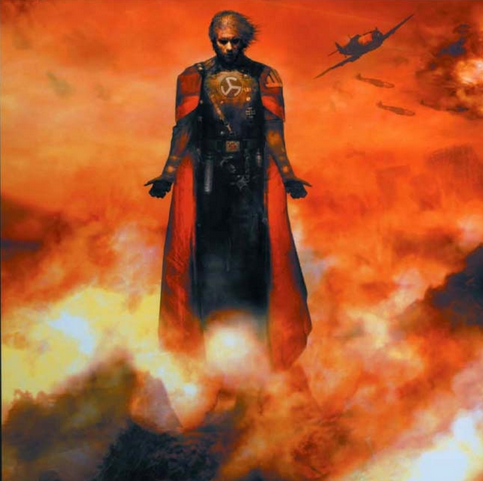
quote:
Der Flieger (“The Airman”)
1916-1944
Powers: Der Flieger could fly at speeds exceeding 800mph, much faster than any contemporary aircraft. He was also immune to shear stress, able to make instant hairpin turns impossible for any plane. He was immune to the effects of friction, cold, and lack of oxygen from flying at great height, although he couldn’t achieve orbit and rarely flew about 10,000 ft. He attacked enemies with the shock wave created by his flight.
Background: Konrad Rahn, a native of Hamburg, was the son of a loyal Nazi who died in the Beer Hall Putsch. When Hitler rose to power, he became an enthusiastic member of the Hitler Youth.
Rahn’s powers were the result of his fanatical faith in the Nazi Party and his unwavering belief that he was an example of the blonde-haired, blue-eyed Aryan master race. He discovered his power on April 30th, 1936. After demonstrating his powers to the German military, he became a favourite of Hitler and an internationally famous role model of Aryan superiority. Throughout the war he would be a prominent and effective symbol of Nazi propaganda, particularly in Scandinavia.
Rahn demonstrated his power to the world by lighting the torch at the 1936 Olympics. He later participated in the invasion of Poland, defeating the Polish air force almost single-handedly and using his sonic booms to “buzz” troops on the ground. He destroyed dozens of Allied aircraft during the Blitz and, later, in the defense of Berlin.
Der Flieger fought Allied Talents twice during the war, and was once defeated and injured by Cien. In the end, Der Flieger was not defeated by Allied Talents but by a simple advance in military technology. His speed made him too fast for anti-aircraft guns to track--until the Allies invented the proximity fuze. Der Flieger was blown to pieces while dropping propaganda leaflets over London, and his remains were recovered for scientific study. Most records concerning him were lost in the Soviet seizure of Berlin.
A Godlike History of WWII Part II
Original SA post
Godlike, Chapter V, Part II
In the last update I covered the beginnings of the Talent phenomenon and the reaction to the world’s first parahuman: a fanatical Nazi. In this portion, the major events are far bigger than any one man, even a Nazi Übermensch.
7/7/1939, the Second Sino-Japanese War: Although Japan had occupied Manchuria for six months, few expected to make a grab for more territory. General Doihara led a full invasion of southern China, killing thousands of Chinese soldiers and claiming city after city.
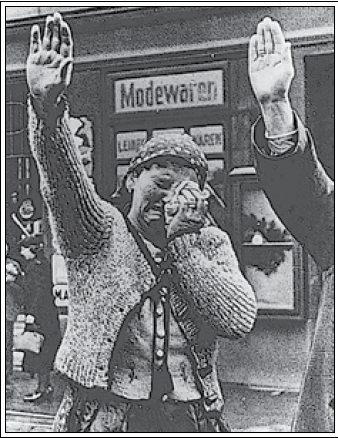
* 10/1/1938, Hitler Annexes Czechoslovakia: Germany forced Czechoslovakia to sign the Munich Pact, completely ceding control of the country on September 29th. Having already annexed Austria and border regions of Czechoslovakia, Hitler assured the world that this was the end of German expansionism, fulfilling the goal of bringing all culturally German people together under one nation. Infamously hailed by British PM Neville Chamberlain as bringing “peace for our time,” the Munich Pact was another step in Hitler’s plan to conquer Europe.
By October 1st, the swastika was flying over Prague. Nine days later, a scruffy young Czech man appeared at the British Ministry of Defense, claiming he was “blessed of God” and had escaped the Gestapo through a “passageway.” Though initially turned away, he kept appearing in the building, being thrown out again and again before they finally listened to his story and determined that, like Der Flieger, Briety Krizova had unexplainable superhuman powers.
Krizova became the backbone of a large British-backed Czech resistance movement, using his powers to move men and equipment and create a complex web of safehouses that allowed them to attack the Germans from behind their own lines. This earned him the name Pevnost (“Fortress”). Hitler inadvertently helped Krizova’s cause by refusing to entertain any notion that an “ untermensch” with parahuman powers existed; his High Command learned to keep their mouths shut. The British, on the other hand, only gradually leaked information about Pevnost to the press, waiting until the war escalated to use him for propaganda purposes.
quote:
Pevnost (“Fortress”)
1920-1987
Powers: Pevnost could link any two doorways he had previously passed through, creating a supernatural portal between them.
The doorways had to be of similar shape and design, with a maximum size of 2.7x1.1 meters. He could carry other people through, one at a time, as well as anything he could carry. His powers grew with age, to a maximum distance of 2500 nautical miles. However, his powers fluctuated and the process was fatiguing; he risked brain damage or even death if he overused them.
Background: Briety Krizova was a Czechoslovakian from a small farm who was educated at the University of Linz. He was socialist and vocally anti-German, and discovered his powers while fleeing the Gestapo. Returning home, he found himself in London, which he had visited years before.
After demonstrating his powers to the British, Krizova led a resistance movement in his home country throughout the war, using his powers to transport troops and stockpile weapons. When the Communists took power in 1948, he used his powers to evacuate over 200 families (including his own) who were at risk of persecution.
Krizova lived the rest of his life in London, a hero and a citizen of the world. He wrote 4 autobiographical accounts of the war, all of them critically praised and well-received. He died of natural causes at the age of 67. The world mourned.
10/12/38, Zindel Haunts Ethiopia: Italian occupiers in Ethiopia, already demoralized, were haunted by a “demon of the Badlands” that killed over a hundred soldiers in the span of a month. Authorities dismissed it as a rumour, but the salt effigies of the slain soldiers were difficult to ignore. Two of the effigies were sent to Rome for study. Scientists were surprised to find that they were indeed the bodies of the soldiers. Every part of them--clothing, skin, all the way down to their bones and internal organs--had been transformed into salt.
Zindel, as the Ethiopians called him, became a symbol of resistance even to those who had never seen him. Soon resistance fighters were battling the Italians with better organization and greater fervor than they had shown before. In the West, Zindel was dismissed as a popular myth and ignored along with the Ethiopian resistance. Ethiopia wasn’t front-page news, and they had yet to grasp that Talents were a growing phenomenon--as far as most people were concerned, there was an Axis superman and an Allied superman, and that was it.
quote:
Zindel (“Protector of Man”)
1901-1941
Powers: Zindel could instantly transform enemies into salt, including their clothes and gear. It sometimes reacted to threats he wasn’t consciously aware of. Using the power was fatiguing, and he sometimes went hours or days without using it.
Background: Amina Salasee was an Ethiopian Jew from a small village. He joined the resistance movement against the Italian invasion in 1936. Salasee was fervently religious, fascinated by pentateuchal stories of divine punishment and revenge. He likened the Italians to the sinful people of Sodom and Gomorrah, and often left religious graffiti on corpses and wrecked vehicles as a warning.
His power suddenly manifested when he and his comrades attacked an Italian squad. His power killed them before his men fired a shot; as a result, they blew apart an array of eight salt statues. Salasee took it as a sign from God, and learned to use “God’s will” to kill many more Italians. He became the leader of the largest resistance cell in Ethiopia and was loyal to the Ethiopian monarch in exile.
Salasee was killed by a landmine in 1941. His body was recovered and autopsied by the British SSO. They found no biological mechanism for his powers--a disappointing but important discovery.
5/22/1939, the Pact of Steel: Hitler and Mussolini signed the Pact of Steel, a mutual defense treaty. German High Command saw the pact as a formality, considering the Italian forces substandard.
8/23/1939, the Molotov-Ribbentropp Pact: Far more alarming was the Molotov-Ribbentropp Pact, a neutrality pact between Germany and the Soviet Union. Negotiations began at the order of Stalin, who was scared of Der Flieger and knew that the Soviet Union was not prepared for war. The pact essentially left Eastern European nations to fend for themselves, and created the right conditions for Hitler to wage wars of conquest.
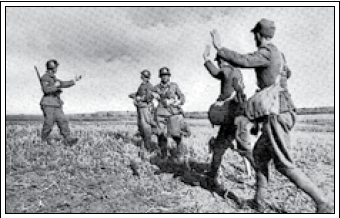
9/1/1939, the Invasion of Poland: Realizing that he’d accomplished all he could through diplomacy, Hitler was poised to make his bid to conquer Europe. Twelve Polish prisoners were dressed in Polish military gear and murdered, the corpses shot and presented as evidence of incursions into German territory. This gave Hitler a flimsy pretext to invade Poland.
Having joined a defense pact with Poland and France, Great Britain declared war on Germany. Within hours, a German submarine torpedoed the passenger ship SS Athenia. The British moved four divisions into France, awaiting further hostilities.
9/4/1939, Der Flieger Attacks Poland: Although the Luftwaffe was heavily involved in the assault on Poland, Der Flieger personally downed 83 of the over 500 Polish aircraft destroyed (making him the most successful flying ace to date) before going on to attack troops on the ground. The attack was excellent propaganda for the Nazis, as photographs and fearful stories of of the man the Polish called “Thunderbolt” silenced those who asserted that parahumans would never be militarily useful.

9/4/1939, Darkness to Fight Darkness: In Krakow, a single Polish officer took on a platoon of Germans and won. Piotr Ciowiski took out 153 German soldiers and 4 light tanks with his power to telekinetically control anything touched by his shadow, and earned the name Cien (“Shadow”). He fled to London and gave his support to the Polish government in exile. The Allies now had two parahumans to the Nazis’ one.
PM Neville Chamberlain was happy to be photographed with the two men, and several newsreels were made demonstrating their powers. Public interest in the parahuman phenomenon ignited. Hundreds of people came forward claiming to have superhuman powers, and numerous articles and books with religious or occult overtones were published. The Pope issued a statement that the matter required further investigation, while American millionaire Howard Hughes offered a $25,000 reward to the first American to display parahuman powers.
quote:
Cien (“Shadow”)
1904-1944
Powers: Cien could “touch” anything touched by his shadow as if he were actually holding or striking it. The larger the shadow he cast, the greater his strength, and he could exert incredible force by miming grabbing and striking motions. At his greatest height, he picked up a 43-ton Panther tank and threw it 45 meters, killing thirty-some enemies in one blow.
Background: Piotr Ciowiski was a colonel in the Polish Army when the Nazis invaded. He discovered his power during bloody street fighting in Krakow, and escaped the city after inflicting heavy losses. He fled to London and joined the famous Polish First Airborne.
Cien worked closely with other Allied Talents like Pevnost and the Indestructible Man. On D-Day, he fought Der Flieger in a small French village. Der Flieger made the mistake of buzzing too low, and Cien swatted him out of the air. A picture of Der Flieger, lying dazed and injured in the muddy road, became one of the most famous photographs of the war.
Ciowiski was killed in action as part of Operation Market Garden. The German commanders somehow determined that he was present and launched an assault by 14 Ubermenschen. Cleverly using a German air defense spotlight to backlight himself, he crushed Der Ziegel (“The Brick”) in his shadow hands and dropped 2 tons of stone bridgework on Siegfried. But a German officer shot out his spotlight, whereupon he was quickly overwhelmed and killed by the Nazi parahuman Krieg. Ciowiski was posthumously decorated with the Victoria Cross.
9/17/1939, the Soviet Union Invades Poland: Acting on a secret agreement from months before, the Soviets invaded and occupied Bellorussian provinces in Poland. Photographs of friendly meetings between German and Soviet troops on the new border made front-page headlines worldwide. Though Hitler was loath to grant territory to Russia, he knew he wasn’t ready to fight a war on two fronts.
October 1939, U.S. Fleet moves to Pearl Harbor: An order from President Truman moved the Pacific fleet from San Diego to Pearl Harbor to deter Japanese aggression.
10/14/1939, Sinking of the HMS Royal Oak: German U-Boat 47 attacked the HMS Royal Oak at its port in Scapa Flow, killing 833. Two days later, the Kriegsmarine issued a statement that any ship flying an Allied flag was subject to attack.
11/30/1939, the Winter War: After using “peace talks” as a pretext to establish bases in Estonia, Latvia, and Lithuania, the Soviet Union invades Finland. Rather than cede large territories and other concessions to the Soviets, the Finns chose to fight.
12/19/1939 Viljo, Death in Winter: Although massively outnumbered by troops and tanks, the Finnish soldiers held out. One small group was being hunted by an entire division for the affront of using a “Molotov cocktail” to attack several tanks. Hiding in a cave and unable to even light a campfire due to Soviet patrols, the men froze to death--except for one, Joseef Seppanen, who began to feel warm and comfortable in the terrible Finnish winter. Soon he found he could vanish into snowdrifts, track targets like a wolf, and fight with superhuman strength and speed.
A British reporter named Peter Viipuri, Finnish-born and embedded with their forces during the war, sent news of the legend the Finns called Viljo (“Resolute Protector”) back to London. After finding the bloody remains of an entire Soviet platoon, he took the only known photograph of Viljo, stark naked and whip-thin, carrying a huge knife through a snowdrift. Even tank platoons were afraid to cross areas where the Belaya Smert (“White Death”) was rumoured to operate.
quote:
Viljo (“Resolute Protector”)
1901-1941
Powers:
Background: Josef Sepannen raised reindeer in a family farm outside a small Finnish village. He probably would have remained their his whole life, wanting nothing from the outside world, had the Winter War not forced itself upon them.
When the Soviets invaded, Sepannen joined a group of Finnish soldiers and hid them at his farm. His knowledge of the terrain helped them cut off a tank platoon,and soon an entire division was tasked with destroying them. He discovered his powers in the wilderness and began operating alone, cutting a bloody swath through the Red Army with nothing but a hunting knife. He killed so many soldiers that Stalin himself declared that Viljo must be killed at all costs.
The Red Army set a trap for Viljo, leading him to believe that his brother and over a hundred political prisoners were being held at a certain camp. When he arrived, the Soviets blanketed the camp with an intense artillery barrage, killing him and some of their own soldiers placed there as decoys. No body was ever found, but he was never seen again and presumed KIA.
12/17/1939, the Graf Spee Is Destroyed: The German “pocket battleship” Graf Spee, patrolling the South Atlantic, attacked three British cruisers despite direct orders to the contrary. After the British were driven off, they cornered the Graf Spee at the port in Montevideo. Refused docking due to diplomatic pressure from the British, the Graf Spee’s captain scuttled the ship and committed suicide. It was a surprising defeat for the Kriegsmarine.
1/9/1940, the Nazis Lose Case Yellow: Only a month before the Nazis’ planned invasion of Holland, Belgium, and France, two German officers carrying a copy of the invasion plan, “Case Yellow,” crashed their plane in Belgium. The Belgians captured them before they could destroy the plans. The Belgian commander dismissed their importance--surely the Nazis would not enact it now that it had fallen into enemy hands! Fearing the loss of their neutrality, the Belgians only allowed a brief synopsis to circulate among the Allies. The Allies, too,assumed that if Hitler were going to invade, he would have done so before the French and British mobilized their forces. They were wrong.
2/14/1940, the Term “Talent” is Coined: New York Times science editor Stephen J. Whelan releases the last of a series of articles on the parahuman phenomenon. The articles considered everything from the known “super-men,” possible parahumans in early human history, and their correspondence with psychic phenomenena, citing a book by Charles A. Fort. “If the powers reflected in Fort’s book are called ‘Wild Talents’, I suppose what we are seeing now could be called ‘Talents’. Perhaps this is not an example of a new array of human capability, but simply the honing of some inherent and previously secret human skill which is just now coming to light.” Talent would soon become the most popular and enduring term to describe parahuman powers.
3/12/1940, End of the Soviet-Finnish War: After pulling back and reorganizing their forces, the Red Army broke the Finnish line and forced the nation to sign the Moscow Treaty, preserving Finnish independence but extracting even larger concessions than they originally demanded. The Allied nations were shocked at the defeat after the Finns had held out for so long, and the treaty scuttled plans to land three brigades to support the Finnish forces. Viljo continued fighting along with scattered groups of resistance fighters.
4/8/1940, Allies Mine the North Sea: British cruisers began mining Norwegian waters, in violation of international law, to stop them from shipping iron ore to the Germans. The Nazis responded with an invasion of Denmark and Norway the very next day. The Allies landed an expeditionary force, supported by the formerly neutral Norwegians. The German invasion saw the first use of airborne troops in warfare, with glider teams capturing forward airfields. Unfortunately, the Allied force was only prepared for preventive occupation, not counterinvasion.
4/11/1940, Vogel Appears: Although Denmark quickly capitulated, it produced one of the Allies’ most famous Talents. Part of a rag-tag group of resistance fighters captured while trying to liberate an armory, Jan Dinesen was the only one who escaped death by firing squad. He survived two rounds of rifle fire followed by three attempts by an Oberstleutnant to shoot him at point-blank range. Then he disarmed the officer, killed him with his own pistol, and quipped “Your aim is terrible” before calmly walking into the street followed by ineffectual hails of bullets. After the war, the story was corroborated by a German member of the firing squad. He fled to Britain and acquired the moniker Vogel (“Bird”).
Two months later, Vogel made a radio address widely heard across Britain, albeit in Danish. “Those who see this and do nothing, those who wait and watch with wide eyes and do not act, are worse than those who commit these crimes. Hitler and his armies are set to march as far and as wide as any will let them. Now is the time to stand and fight. The coming battle will be the measure of us all.” He soon returned to Denmark to aid resistance fighters there.
quote:
Vogel (“Bird”)
1920-1963
Powers: Vogel had the power to redirect incoming missiles so that they barely missed him. His power was subconscious and worked as long as he was aware he was in danger. It did not work against hand-to-hand attacks or attacks of which he was completely unaware.
Background: Jan Dinesen was the son of a prosperous enamellist in Copenhagen, Denmark. Though he grew up in the shadow of a younger brother who showed greater talent for the family business, the 1940 invasion of Denmark convinced him he could make a difference. He was caught while trying to liberate weapons from an armory before the Nazis could seize them, and discovered his power while being shot at by a firing squad. He escaped and became a leader in the Danish resistance.
Dinesen was good friends with the Polish parahuman Cien, and blamed himself for being unable to come to Cien’s aid during Operation Market Garden. Later, Dinesen and the Indestructible Man confronted and killed Krieg, the Nazi Talent who had killed Cien. Dinesen’s testimony helped exonerate the Indestructible Man from charges of allegedly killing Krieg after he surrendered.
Dinesen was one of the few veteran Talents to enjoy a high profile after the war. He became a Hollywood actor, aided by his good looks, charisma, and fame. He died in an automobile accident in Los Angeles in 1963.
4/12/1940, Aesgir Appears: In Norway, a Talent appeared fighting Nazi tanks with nothing but a toy. Fifteen-year-old Christian Hansen lost his home and family to the Nazi Wehrmacht Group II, but survived an artillery barrage to become the seventh known Talent. He claimed his powers came from a stage-prop spear he discovered while taking shelter in the ruins of a theatre. The spear, which he claimed called itself Aesgir, made him almost invincible and could be hurled through tank armor before instantly leaping back to his hand. He could also open a portal to an icy world he called Valhalla, using it to cross intervening distance in the real world. When he fled Norway, he took several refugees with him, and after days of walking through tundra they emerged on the shores of Scotland.
Aesgir made headlines around the world. Some groups protested the induction of a young teenager into the British military, but the scandal soon died down. Winston Churchill privately made it known that all Talent-related news must pass through British Intelligence before publication, or else.
quote:
Aesgir (“Spear of the Gods”)
1927-1944
Powers: Aesgir believed his powers were fueled by a magic spear which was actually a flimsy stage prop. However, in his possession, the spear became an incredible weapon. He could throw it great distances with great accuracy--it sometimes homed in on its target--and it could pierce tank armor. While holding the spear, he was tough enough to deflect 88mm shells with his hands. He could also use the sphere to open a portal to another world, which he called Valhalla, and take several others with him. By traveling on foot, they could cross an equal amount of distance in the real world. However, since Valhalla was endless, lifeless tundra, this was exhausting and dangerous. Aesgir also claimed the spear spoke to him and gave him advice about the future, but these abilities were not verified.
Background: Little is known about Christian Hansen before he manifested his powers while fighting off German invaders in his native city of Eivaan, Norway in 1940. He fought the Nazis for three weeks before fleeing to Britain to join the Norwegian forces there. Christian’s young age provoked a scandal at the idea of sending him into battle, but his powers were too great to ignore. The British Special Operations Executive trained him, and had him using his powers to cross “Valhalla” to lead missions behind enemy lines.
Hansen died in Caen, France in an assault to relieve Canadian troops. The gun emplacement they thought they were attacking turned out to be the 12th SS Panzer Division. Hansen was unable to open a portal in the heat of battle, and died protecting his troops. Fourteen made it back alive. He was posthumously decorated with the Victoria Cross.
Rumour has it that his spear--only a stage prop made of cheap wood and steel--was mounted on the wall in the Hauptamt SS by order of Himmler.
5/2/1940, Allies Retreat from Norway: Realizing that Norway was lost, the Allies evacuated their troops. The loss resulted in a political shakeup culminating in the resignation of Neville Chamberlain.
5/8/1940, Churchill Appointed Prime Minister: Winston Churchill, a seasoned British politician and former military man, had long opposed the Nazi regime. Upon his appointment as Prime Minister he immediately asked President Roosevelt for aid, continuing a correspondence that had begun when he was First Lord of the Admiralty. The Nazis, in turn, immediately launched their invasion of France and the Low Countries.
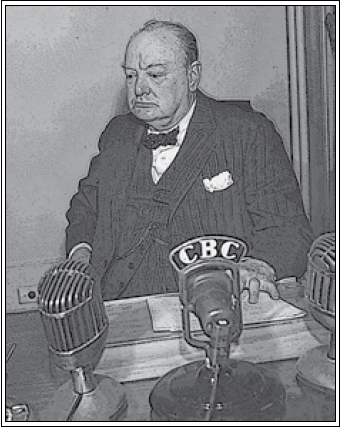
5/10/1940, the Invasion of France: The Luftwaffe launched attacks on French airfields at the same time as German Army Group B swept through Belgium and Holland. The Allies had predicted this, but had not predicted that it was a feint to lure them away from the Ardennes forest. German Army Group A easily pushed through the Ardennes and pushed Allied troops back to the river Meuse. In less than two weeks, remaining British, French, and Belgian forces were surrounded at Dunkirk, where only a German order to halt the advance (to consolidate forces and prevent a breakout) allowed the Allies to organize a massive evacuation of over 300,000 troops. After only 11 days of fighting, Britain was now the last European nation defying the Third Reich.
Next time on Godlike: Lots more history. Lots more Talents.
A Godlike History of WWII Part III
Original SA post
Godlike, Chapter V, Part III
The last update concluded with the Nazi invasion of France. But it’s always darkest before the dawn.
5/11/1940, Dawn in the Netherlands: A Dutch partisan named Jos Keller manifested a potent Talent. Called Daegal(“Dawn”) he could create blinding lights or total darkness over a large area. In a single attack near the Hague, his small unit killed over 100 Germans and 40 Dutch collaborators with the aid of his power. He would go on to wreak havoc on Nazi operations across the Netherlands, kidnapping and executing sympathizers and even derailing trains.
Meanwhile, Hitler continued to deny any possibility that anyone without pure Aryan blood could develop parahuman powers. As a result, his high command was unable to develop a plan to stop him or even classify him as a threat.
quote:
Daegal(“Dawn”)
1921-1944
Powers: Daegalcould control the intensity of light. He could create blinding flashes or total darkness in an area about the size of a city block. He was immune to his own powers and could see through the effects of his powers normally. He could also affect multiple targets, and create effects that persisted for some time after he was gone.
Background: Jos Keller was the son of a Dutch chimney sweep. When the Nazis invaded, Jos wanted to flee while his father, a socialist, counseled patience. His father was rounded up and died in a concentration camp in 1942.
Keller discovered his powers as a resistance fighter. Setting fuses in a sewer tunnel, he wished he had more light to see by--and suddenly did. With the aid of his powers, he fused several resistance cells into a sizable unit and fought the Nazis all over the Netherlands.
Keller refused offers to join the British and be trained as a Talent commando, but he did participate in Operation Market Garden. He was killed by the Nazi Talent Der Tragheit (“The Inertia”) in a skirmish on his way to assist Allied forces in Nijmegen. Robbed of its inertia, his body flew into space and burnt up in the atmosphere.
5/12/1940, a Wolf is Loosed in Belgium: As the Panzers rolled through Belgium, many would-be rebels tried to stop their advance. But civilians armed with old guns could do little against the Nazi war machine...until Jean Neuman became a Talent. Soon occupied Belgium was covered in pamphlets labeling him “armed and dangerous, do not approach.” Neuman was armed, but it mattered little. When his guns were empty, he beat enemies to death with them and pulled a knife. When his blades were broken off in the bodies of his enemies, he tore the next to pieces with his hands. The man the Belgians called Vevel (“Wolf”) was singlehandedly defeating entire infantry units.
By the time Vevel was active, the international press was actively on the lookout for news of new Talents, even as Hitler continued to deny their existence. The United States had already heard the story of the “Winoga Wonder,” a Wisconsinite girl named Mary Steiner, whose parents faked an elaborate series of poltergeist phenomena to try to claim the prize offered by Howard Hughes. Numerous stories across war-torn Europe told of supernatural creatures rising to fight the Nazis. Surely some of these were genuine Talents--but ones who died before they could became as famous as the likes of Daegal and Pevnost.
quote:
Vevel (“The Wolf”)
1921-1975
Powers: When under attack, Vevel entered a fugue state in which all threats were eliminated without mercy. In this state, he had superhuman strength, speed, and fighting skill. After battle he had no memory of what had occurred. When not aware that he was in danger, he was completely normal and vulnerable.
Background: Jean Neuman was an ardent pro-Soviet communist who was expelled from the University of Brussels for instigating riots and openly supporting the Soviet invasion of Finland. He returned to his hometown of Hasselt and worked as a baker, spending all his money to stockpile weapons and canned food in a bunker in the hills. He maintained loose communications with other Belgian communists who were wary of his paranoia, but shared his distrust of the Nazis.
When Germany invaded, he joined the resistance in Hasselt, a stop on the major road leading straight to Brussels. They didn’t stand a chance. Neuman’s power manifested when he was finally cornered in a ruined church, scared and out of ammo. Neuman blacked out. When he regained his senses, he was surrounded by the mangled and dismembered remains of over 40 German soldiers. (He had shoved his shotgun straight through one of them.) His fingers were raw from tearing men limb to limb with his bare hands, but he was otherwise unharmed.
Neuman worked mainly with Belgian resistance fighters and remained aloof from Allied forces, but he often provided them with intelligence and participated in a couple of missions.
Vevel personally killed over 700 Germans in the war and became a national hero. He drew many people to communism, but after the war, he became rabidly anti-Communist as Stalin’s atrocities came to light. He participated in many protest marches again the Soviet and Chinese governments. He died in Brussels of lung cancer in 1975 and was buried as a national hero.
5/14/1940, the Summoner Haunts Nazi France: As Germany stabilized its occupation in France, it billetted troops in small towns, enforcing martial law with brutality. Few French civilians risked defying well-armed soldiers. One man did. A week after the invasion began, the first German officer turned up dead, his throat slit. In another week he was followed by 8 more. The killer they called L’Invocateur (“The Summoner”) often left his victims disfigured with ritualistic symbols or mangled beyond recognition.
Thanks to the general chaos, news of L’Invocateur escaped France within days, even including a photograph of a murder scene. It made front-page news across the world. The killer was only spotted due to a mistake: two German soldiers opened a locked room to find a man carrying a knife, drenched in blood. Held at gunpoint, he simply disappeared.
[quote]
L’Invocateur (“The Summoner”)
1921-1961
Powers: L’Invocateur could become invisible (along with his clothes and gear) for as long as he wished--as long as he kept his eyes closed. He learned how to fight and move silently while blind.
Background: Luc Besont was a farmhand for a family outside Trélon, France. He watched helplessly as Nazis robbed the family, sexually assaulted their daughters, and cast them into the barn while they took over the house. Enraged, Besont snuck into the German officer’s room with a knife. When the officer returned, he was not alone, but had six other German soldiers with him. Besont simply closed his eyes and waited for the end.
Petrified with fear, Besont stood there for two hours with his eyes tightly shut while the Germans conversed with one another. During that time, he calmed down a bit and supposed he might be one of those “Talents” he had heard about. When the other men left and the officer retired to sleep, Besont slit his throat.
Besont soon discovered the nature of his powers through trial and error. Though the family begged him to stay, he went west with plans to assassinate as many Nazi invaders as he could. He killed 63 officers and 35 enlisted men during the war. Numerous Allied groups tried to recruit him, but L’Invocateur worked alone.
After the war, Besont moved to United States and was supposedly recruited by the CIA. He was shot to death by East German police while trying to cross a border checkpoint using his powers.
5/19/1940, Fire of the SS: Finally, the Nazis discovered another Übermensch among their ranks while driving French forces from occupied territory. Called Feuerzauber (“Fire Magic”) by the German press, he diffused any kinetic attack against him into a blast of flame. He was returned to Berlin where he became a favourite of Hitler and fast friends with Der Flieger.
Interested in his potential as a one-man shock troop unit, RuSHA SA created a scenario in which 200 Polish prisoners were armed and set to defend a perimeter against Feuerzauber. Bullets were useless and a grenade volley only knocked him down, leaving no Polish survivors. The experiment was declared a success.
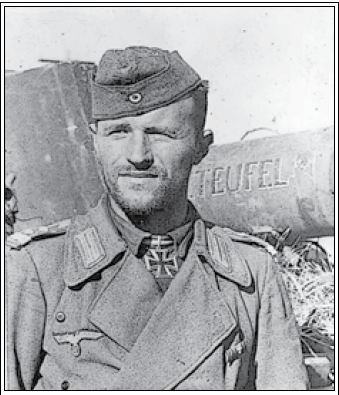
quote:
Feuerzauber (“Fire Magic”)
1910-1943
Powers: Feuerzauber unconsciously dispersed any kinetic force that struck him as a wave of heat. When struck, a sheet of flame erupted from his body, proportional to the force of the attack. He was immune to his own powers and to other sources of fire and extreme heat.
Background: Ernst Karsten was a decorated Obersturmbannführer of the SS, an veteran of Poland and Norway. He was a fanatical Nazi and favoured for his classic Aryan features.
In May 1940, he was assigned to coordinate support for tank units in the Twelfth Infantry in France. When his unit came under artillery fire, only he survived. Karsten ran back to the German lines while being shelled by mortars. Whenever he was struck, a blast of flame erupted from his body in all directions, destroying his clothes but leaving him unharmed.
After putting some pants on, Karsten was returned to Berlin to enjoy a short stint as a darling of Hitler before redeploying. Karsten and Konrad Rahn (Der Flieger) became close friends, and were often pictured together in Nazi propaganda.
On January 28, 1943, Karsten was killed in Stalingrad during an assault on a oil storage facility on the Volga. Although he was immune to both the Soviet artillery and the fire that erupted in the facility, he and all his men died of asphyxiation.
5/22/1940, the Ghost of Yungping: A Chinese farm boy who defied the Japanese survived execution when an officer’s katana passed harmlessly through his neck. The boy escaped, leaving Japanese authorities to contain rumours of the ghost of Yungping City. At this point, news about China was still filler as far as the Western press was concerned, and interest was only forthcoming after Japan declared war on the United States--and had pressed the “ghost of Yungping” into their service.
quote:
Zhao Zheng (“The Ghost”)
1925-1960
Powers: Zhao Zheng was completely immaterial. His power was permanent and could not be turned off. He was able to touch and lift objects, making them immaterial like himself, thus allowing him to eat, drink, and breathe normally.
Background: Chu Tso-Tsin worked on his family’s farm outside Yungping, China. He became increasingly anti-Japanese as the atrocities of the Manchukuo state intensified. His parents were tortured and murdered when he was 14, for the crime of hanging New Years’ banners that included English characters.
In the spring of 1940, while delivering vegetables to market, Tso-Tsin refused to bow to a Japanese officer who was demonstrating Chinese obedience to a visiting dignitary. He was dragged off to be beheaded. Chu’s power manifested and the officer’s sword passed right through him.
He fled the city, but the Japanese soon brought him under control. They rounded up his remaining family and passed threats along through those who knew him. Chu turned himself in and cooperated with the Japanese, acting as a spy. He could simply walk behind enemy lines for scouting missions, or into Allied bases to steal documents, immune to all harm.
In the end, Chu’s family was executed anyway as the Allies closed in on Japan. He was pardoned of all crimes--Douglas MacArthur even testified on his behalf. The haunted young man returned to work his family’s farm.
He was found dead in his home in 1960. He had committed suicide with a kai-gunto katana, a gift from MacArthur.
5/25/1940, Miracles at Dunkirk: After cornering the remaining Allied forces at Dunkirk, Hitler approved one of the most hotly-debated decisions of the war: a three-day halt in their advance. The halt gave the Allies time to plan one of the most audacious escapes in the history of warfare: an amphibious evacuation of over 300,000 troops. Pevnost personally evacuated 5,000 men using his power before collapsing from fatigue. He was hospitalized for weeks amid fears he wouldn’t survive, though he eventually made a full recovery.
On the last day of the evacuation, Captain Jonathan Lear was one of the few men who stayed behind, knowing it meant certain death, to allow others to evacuate. But he didn’t die. As Germans approached the beach, a stray thought tempted him to jump into the water and try the 25-mile swim to Dover. Instead, he jumped across the English Channel.
British and American citizens were ecstatic at the discovery of “Jumping Johnny,” the first Talent from an English-speaking country. He immediately became a symbol of hope for the Allies and an overnight celebrity--the press wanted to know everything about him from his family background to his favourite food to whose shirts he wore.
quote:
Jumping Johnny
1907-1944
Powers: Lear could leap incredibly high, covering 27 miles in a single bound. However, he could only leap exactly 27 miles. He landed with the force (and sound) of a bombshell. He was immune to the velocity and impact of his leaps, but only at the moment of impact.
Background: Jonathan Lear was the son of a prosperous and well-connected British family. His father and uncle were both members of Parliament and his brother served in the High Command. He wanted to be an officer from childhood, and joined the army right out of Monmouth School. A natural leader and tactician, he quickly rose to the rank of First Lieutenant.
Lear fought at the Battle of Dunkirk and sent his men to be evacuated ahead of himself, staying behind to hold off the Panzers. When the Germans broke through the lines, he leapt across the English channel, almost killing a group of men on the beach at Dover. The first native British Talent, he was an instant national hero.
“Jumping Johnny,” also called “Springheel Jack,” was used as a long-range scout in North Africa and Germany. He could cover hundreds of miles in a few hours, and became adept at map-making. He was killed when he accidentally landed right in a Waffen-SS ammo dump outside Stadtkyll, Germany. His impact ignited the ammo, killing a hundred people with a blast that was heard for over 200 miles.
5/28/1940, Belgium Surrenders: Wishing to spare his people further suffering, King Leopold III formally surrendered Belgium to the Nazis. He stayed behind while his Cabinet fled to Britain and retained control of the Belgian Congo.
6/10/1940, Italy Joins the War: Benito Mussolini declared war against Britain and France and launched a transalpine invasion of southern France. This was more a gesture of camaraderie, by a much smaller force, than a serious military development. But French troops repulsed the Italians from the mountains, humiliating the Italian army.
6/21/1940, the Life and Death of Bellerophon: In the small Lithuanian city of Alytus, a powerful Talent calling himself Bellerophon wrested control from the Soviet occupiers. With superhuman strength and speed and the ability to sense the weakness in any target, he could destroy men, tanks, and buildings with his bare hands or a knife. Bellerophon declared himself the saviour of Lithuania in a bold radio address.
By this time, the British SSO had begun to consider operations built around Talent powers. They devised a plan wherein Pevnost would parachute into Alytus and use his power to arm the Lithuanians with captured German equipment, creating a rift between Germany and the Soviet Union. Churchill scrapped the plan, unwilling to risk Pevnost.
Days later, the Soviets crushed Alytus with an artillery barrage that killed Bellerophon and most of the population.
quote:
Bellerophon
1920-1940
Powers: Bellerophon was parahumanly strong, fast, and tough. He also had the ability to see the weak point in any object, maximizing the force of his attacks. He could split stone with a punch and disable tanks with a knife.
Background: Salet Miceweski was born in Bucharest and raised in Lithuania. His father was a slaughterhouse worker, and Miceweski kept house for his mother, who suffered from lupus. A well-educated Greek, his mother made the most of her situation by teaching her son several languages.
When the Soviets occupied his home city of Altyus, Salet was furious at the lack of resistance. He vented his anger on the sides of beef in his father’s slaughterhouse. One day, he discovered he could punch straight through a frozen side of beef--and then a steel door.
Miceweski began his career as a resistance fighter by killing two Soviet soldiers with his bare hands. He later organized a riot that engulfed the city and overthrew the occupying Soviets. But only four days later, the Soviet 8th Army blanketed Altyus with a rolling artillery barrage, killing Bellerophon and nearly everyone in the city.
6/22/1940, the Fall of France: Overcome by the Nazis and put on the run to avoid capture, the French government was forced to sign a humiliating ”armistice” in the same rail car where Germany had formally surrended to the allies in 1918. Prime minister Reynaud resigned, leaving the armistice to be signed by his replacement, Philippe Pétain. The treaty divided France into an occupied zone and a “free” pro-fascist regime headed by Pétain.
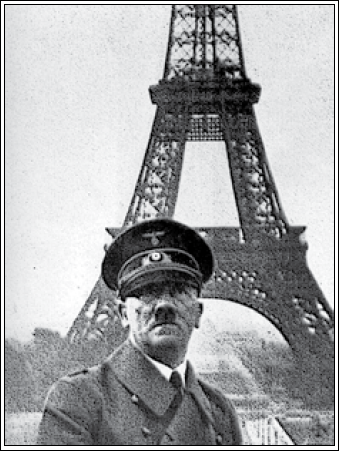
6/30/1940, Special Directive One: Under orders from Stalin, the NKDV creates a special division, under Lavrentiy Beria’s direct supervision, to search Soviet territories for native Talents. Beria, eager to please, systematically tortured thousands of victims culled from prisons and labor camps in the hopes of creating Talents. Over 3,000 people were tortured to death before he met with success.
7/3/1940, the Battle of Mers el-Kébir: Afraid that the Nazis could utilize the French fleet, the British cornered them in a North African port with demands that they defect to the Allies, scuttle their ships, or be destroyed. They chose the latter. Although several French ships escaped to Toulon, it was a great victory for the British.
7/10/1940, the Battle of Britain: Preparing for the invasion of Britain, the Nazis first needed air supremacy. Göring assured Hitler that the Luftwaffe would crush the RAF in a matter of days. Der Flieger joined German bombers as they attacked Falmouth and Swansea, and killed 15 British pilots in 3 days. The British endured. One British ace, Timothy Gooden, said “He’s just a man, no matter what they say. One day, something we put up will be fast enough to catch him, and then it will be my chance to take him for a turn.” His words would prove prophetic.
8/30/1940, the Day of the Super-man: RuSHA SA announced the discovery of 26 new Übermenschen in August alone. August 30 was made a special holiday, Übermenschtag, amid rallies across Germany. Allied strategists were terrified to see so many new Nazi Talents. It almost seemed as if the Nazis had discovered a way to create them.
During the course of the Battle of Britain, however, German bombing raids on British cities created 11 more British Talents. Soon they would have more Talents than any nation besides Germany.
9/7/1940, the Blitz: German bombing raids on London leave over 5,000 dead, 10,000 wounded, and massive destruction across the city. Propaganda leaflets dropped by Der Flieger only angered the British populace, but his performance in combat was nightmarish: he was far faster than any plane, defied physics with instant right-angle turns, and flew within meters of RAF fighters, ripping them apart with the shock front generated by his flight.
9/13/1940: After a series of humiliating blunders (including the death of Marshall Balbo by friendly fire), the Italian forces in North Africa launched a stunning coup against British holdings in Egypt, rolling over the undermanned positions with 14 tank divisions on the way to Alexandria and the Suez Canal.
9/27/1940, the Axis Forms: Germany, Italy, and Japan sign a mutual alliance, creating what Mussolini called “the Axis around which the world turned.” Adding Japan to the “Pact of Steel” was a deterrent to the United States entering the war and pressured European holdings in SE Asia.
10/7/1940: Hungary and Romania agreed to allow the Axis to arbitrate a border dispute over Romania. Axis generals responded by allotting large territories to Hungary and occupying Romania, which had already lost territory annexed by the Soviet Union. Mussolini was enraged by this “Silent Invasion” undertaken without so much as a by-your-leave. He planned an invasion of Greece, as much to spite Hitler as for any other reason.
10/10/1940, the Season of the Witch: The Romanian puppet regime had set about beating, pillaging, raping, and murdering anyone who opposed fascism. One of them, Antonina Ilescu, watched as her father’s skull was crushed by the rifle butts of the Iron Guard. At first, the thuggish guards were pleased at the sound of her screams. Then their ears bled. Then they burst. Antonina Ilescu leveled a city block and killed 40 people, soldier and civilian alike, with the power of her scream. She fled the country before she was discovered.
Antonina Ilescu was the world’s first known female Talent--and a fearsome Talent it was. RuSHA SA collected a great deal of data about the woman German survivors called Die Hexe (“The Witch”). They had never encountered an Überfrau before, and made plans to forcibly breed her with a loyal Übermensch in false hope of creating even more powerful offspring.
quote:
Die Hexe (“The Witch”)
1922-1943
Powers: Die Hexe could scream with devastating force, shattering stone and liquefying flesh. Besides its intensity, her power behaved like any other scream, so it was impossible to focus and difficult to control. At maximum effect it could flatten buildings and kill everyone within several hundred yards. She was immune to the effects of her power.
Background: Antonina Ilescu was a native of Bucharest who suddenly manifested her power when the Iron Guard beat her father to death in front of her. No witnesses survived. After a few weeks of hiding in the forest, she was taken in by a partisan camp. Mostly she helped by cleaning and cooking, but sometimes fought alongside the men, hiding her powers.
When ambushed by a Heer patrol in 1942, she shrieked, killing 22 enemy soldiers and deafening 3 of her fellow partisans. She spent the following year attacking Germans, called Die Hexe by the few who survived. The SS offered a bounty for her alive, sending special detachments to capture her for RuSHA SA.
Ilescu died as a result of conflicting orders. While Romanian forces had orders to capture her, other German soldiers had orders to shoot any female partisans on sight. On January 19, 1943, Ilescu was shot by a sniper and died three days later. She was 21.
10/28/1940, Italy Invades Greece Which Invades Italy: Angered that Hitler had invaded a region he regarded as part of his sphere of influence, Mussolini launched an invasion of Greece in a foolish plan to draw the British (who had a mutual assistance treaty with Greece) away from Egypt. Every aspect of the invasion was poorly planned, and the Greek Army pushed Italian troops back into Italian-occuped Albania, occupying part of it themselves. It was another humiliation for il Duce, whose bold plan to assert himself only made him militarily dependent on Germany.
11/5/1940, Roosevelt Reelected: President Franklin Roosevelt was reelected for an unprecedented 3rd term. Although the United States was still technically neutral, Roosevelt was rapidly preparing for war, bolstered by increasing popular support as news of invasion after invasion reached the public. He enacted a series of international programs to help other countries defend themselves in what was termed the “Arsenal of Democracy.” Still, some Americans favoured isolationism.
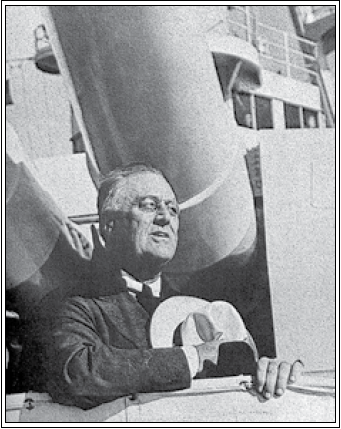
One vocal opponent was Charles Lindbergh, the famous aviator. He created a rabidly pro-Nazi isolationist group and, soon after Roosevelt’s reelection, moved to Germany and renounced his American citizenship. It was a great blow to American morale and a propaganda victory for Josef Goebbels, who featured Lindbergh at every opportunity.
11/10/1940, Rise of the Übermenschen: According to RuSHA SA records, on this date the population of Nazi Talents broke 400. Unlike the Soviet Union, where a justified atmosphere of paranoia prompted many Talents to hide their powers, the glory associated with being hailed as an Übermensch brought nearly all Talents into government service.
Meanwhile, Hitler still refused to hear of any “non-Aryan” Talents. RuSHA SA had already discovered several Jewish, Romani, and other “inferior” parahumans and dealt with them quietly.
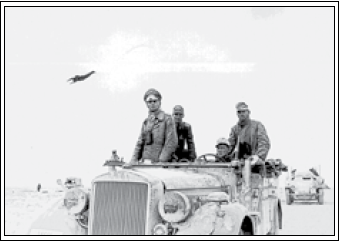
11/11/1940, the British Attack Taranto: British torpedo bombers launch a surprise attack on Italian ships at anchor in Taranto, Italy, losing only 2 aircraft and severely damaging 3 battleships. The Italians remain pretty shit at this whole war thing.
11/14/1940, the Blitz of Coventry: Over three nights, Germans bomb the industrial city of Coventry, dropping hundreds of tons of high explosives. Although casualties were low, the city was reduced to rubble. The attack created 31 new British Talents, including the ever-popular Cormorant.
quote:
Cormorant
1908-1944
Powers: Cormorant’s Talent manifested as an invisible dragon he named ‘Mr. Mitts.” Mitts was the size of a horse, could fly, and breathed fire. Despite being invisible, Mitts was loud, left large footprints, and often wandered off getting into mischief, though he would usually obey Cormorant. Mitts was very protective of Cormorant, and often acted out against people that Cormorant disliked.
Background: Michael Foreman was an overachieving British postal pilot who set the point-to-point record on the London-Coventry-Edinburgh route in 1933. When war broke out, he volunteered for the RAF and went on to become an accomplished fighter ace, nicknamed “Eyeball,” one of the first Hawker Hurricane fighter pilots.
Foreman’s entire squadron was downed during the Blitz of Coventry. His plane collided with a German bomber and, as he bailed out, his parachute caught fire. He was the only one of his squadron to make it back alive, and not in his own plane.
Foreman returned to the 12th Fighter Command to explain that he had been saved by his invisible friend from childhood, a dragon named Mr. Mitts. And they believed him, as Mr. Mitts set about accidentally knocking down doors and tripping people. Although Foreman had no delusions that Mr. Mitts was more than a Talent manifestation, it made no difference to Mitts, who often acted on Foreman’s subconscious urges.
Foreman was transferred to the SSO and codenamed Cormorant, but he wasn’t there long. After an incident wherein Mitts destroyed the officers’ barracks when CO made Foreman run extra laps for being late, he was declared unfit for combat duty and discharged, whereupon he was transferred to the Army for diplomatic service, accompanying Churchill to major summits. President Roosevelt and Mr. Mitts were quite taken with one another, although his presence made Roosevelt’s bodyguards very nervous.
Foreman refused to end his career as a diplomatic and pleaded with anyone who would listen until he was reassigned. He became a skilled and effective Talent commando, participating in raids leading up to Operation Overlord. In June 1944, he landed in the first wave on Juno Beach and fought his way inland, where he was killed in action by artillery fire in Banville. To this day, locals wholeheartedly believe that the invisible Mr. Mitts still haunts the town.
11/20/1940, Hungary and Romania Join Axis: Hungary, having already enjoyed great territorial gains by siding with the Nazis, signed the Tripartite Act. Three days later, Ion Antonescu’s pro-fascist government joined as well, executing any who spoke against the regime or its allies.
12/9/1940, Italians Routed in Egypt: After studying Italian defenses, British General Wavell detected a gap and launched a surprise assault on Sidi Barrani. Although badly outnumbered, the British captured 140,000 prisoners of war and seized tons of supplies and equipment. Jumping Johnny and 3 other British Talents joined the battle, demoralizing Italian troops which are very rarely mentioned in Godlike without the word “demoralized” in front of the word “Italian.” The remaining demoralized Italian forces were pushed back to the Gulf of Sirte, and looked forward to 70 years of being called cowards because they had shitty equipment and even worse leadership.
By the end of January 1941, the British invasion of Eritrea was pushing the Italians toward Ethiopia. Strong points of resistance were crushed by Talent assaults including Cien and the Human Bullet.
1/29/1941, ABC-1: The military staff of America and Great Britain met in Washington for the ABC-1 conference to discuss mutual defense and the Lend-Lease bill under debate in Congress. Roosevelt secretly requested an information-sharing protocol on the Talent phenomenon, to which Churchill agreed. He lobbied hard for cooperation between the SSO and American research programs. Roosevelt and Churchill’s agreement ensured goodwill and a strong future for America’s Talent program.
2/8/1941, Bulgaria Signs Pact with Turkey: Germany convinced Bulgaria’s pro-Nazi government to sign a friendship pact with Turkey, with plans of using Bulgaria as a corridor to Greece and Yugoslavia. Less than a month later, Bulgaria would officially join the Axis and host large detachments of Heer and Luftwaffe forces.
2/12/1941, Rommel Reinforces Tunisia: Hitler sent Erwin Rommel, general of the newly-formed Afrika Korps, to reinforce the demoralized Italians. Arriving with 15 Übermenschen in tow, Rommel would spend the next 2 years reversing the tide of battle in Africa.
3/5/1941, the First Fallen Talent: Bernhard Siegling, the Nazi Talent Jäeger (“Hunter”) became the first parahuman casualty of the war after a battle with two Hawker Hurricanes over the Libyan Plateau. He was spotted on a scouting mission, and pursued over 200 miles before Flight Lieutenant Jeffrey Rotman blew him out of the air after an hour-long chase. Churchill declared Rotman the first “Uber-Ace” of the war, while Jäeger received a hero’s funeral in Berlin. Siegling’s funeral was conducted with great fanfare including films, monuments, a tomb designed by Josef Thorak, and vows of revenge by fellow Nazi Talents.
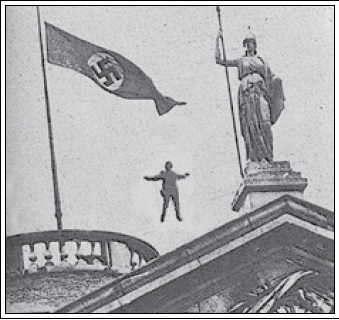
3/9/1941, Churchill Dispatches Talents to Alexandria: Eleven British Talents, the world’s first Talent commando group trained after their Talents’ manifestation, were transferred to General Wavell’s Alexandria Command. Secretly, this was a direct counter to Rommel’s Talent forces in North Africa.
3/11/1941, Lend-Lease Bill Passed: Congress approved a bill authorizing the president to lend, lease, or entitle war materiel to countries that, in his estimation, were defending the defense interests of the United States. The law sidestepped the 1935 Neutrality Act. Within days, a large detachment of ships and ordnance were headed for Britain. Prime Minister Churchill hailed the passing of the law “Hitler’s death warrant.”
Next time on Godlike: The war against the Super-Axis continues in Europe, Africa, and at home.
A Godlike History of WWII Part IV
Original SA post
Godlike, Chapter V, Part IV
The last update concluded with the signing of the Lend-Lease Bill. While not as flashy as a coup on the battlefield or the emergence of a powerful Talent, it was one of the most important acts of the war, a policy Churchill asserted would “stand forth as the most unselfish and unsordid financial act of any country in all history.”
3/16/1941, British Enter Ethiopia: British forces swept through Eritrea into northern Ethiopia, defeating Italian forces with ease. The Ethiopian offensive was made much easier by the tireless Ethiopian resistance under Zindel’s command. He joined up with British forces, providing invaluable intelligence as well as the use of his Talent.
3/17/1941, Battle in the North Sea: Allied convoys led by Captain Donald Macintyre defeated German U-boats, taking out the top two German submarine aces. Otto Kretschner was captured when his ship was forced to surface, while Joachim Schepke’s U-boat was lost with all hands...except for Oberleutnant Georg Klingen, who manifested a Talent that allowed him to survive. He lived in the sea for a month before he found another U-boat and a ride home.
quote:
Der Seefahrer (“The Seafarer”)
1910-1943
Powers: When submerged in water, Der Seefahrer required no air, food, or oxygen. He was immune to water pressure and decompression sickness, and could swim at speeds up to 40mph. However, he could not see in the darkness of the deep ocean.
Background: Georg Klingen was a long-time Kriegsmarine veteran who had joined the military to escape his violent, chaotic home life. Klingen enjoyed his work; he was enthusiastic, efficient, and well-favoured by his superiors. Klingen’s only flaw as a soldier was his pathological eagerness to please. In his spare time, he concocted wild plans to impress his superiors.
In 1940 he was assigned as a U-boat helmsman under the command of the famous Joachim Schepke. When U-100 was cornered by Allied ships after surfacing, Klingen countermanded a direct order to surrender and attempted to dive. The submarine was destroyed with all hands--except Klingen.
As his lungs filled with water and the men around him died in agony, Klingen discovered that he was an Übermensch. Trapped in the wreckage for days, surrounded by bloated corpses, he went temporarily insane before eventually struggling free.
After living in the water for a month, Klingen used his new abilities to board another U-boat. He was welcomed home as a hero (and kept his mouth shut about how U-100 went down). He was trained as a long-range scout to spy on British and American coastlines and was successful for a time. In 1942 he was discovered by a Coast Guard patrol on Shelter Island, NY. He was shot and captured before he could reach the water. During his imprisonment, the national press gave him the nickname “Hitler’s Pet Frog.” After a brief and very public trial, he was convicted of espionage and sentenced to death by lethal injection. Upon his death, Churchill quipped “I once had a frog as a boy. It died as well.”
3/21/1941, Viljo Dies: The Finnish Talent Viljo was killed by a well-planned Soviet trap that lured him into an artillery barrage. His scant remains were remanded to Special Directive One for study.
3/25/1941, Yugoslavia Sort of Joins the Axis: Though Yugoslavian legislators signed the Tripartite Act, Serb Army officers and King Peter II refused to collaborate. Hitler decided to simply invade.
3/26/1941, Einsatzgruppen Formed: Under orders from SS leader Himmler, Reinhard Heydrich formed the Einsatzgruppen (“task forces”). In practice they were death squads assembled to murder Jews and communists in German-occupied territories. By 1943, they had claimed over a million victims.
3/29/1941, the Blue Accord: Churchill and Roosevelt agree to enact “Blue,” a knowledge-sharing agreement concerning the Talent phenomenon in exchange for a large commitment of materiel and technology. The first “payment” was 2 American destroyers and a shipment of raw materials in exchange for 4 British Talents traveling to America for study.
3/30/1941, the First Talent Clash: The first Talent-against-Talent combat of the war took place during a tank skirmish on the border of British Libya. Der Tragheit (“The Inertia”) and Dunkelheit (“Darkness”), ambushed a unit of 7 British Talents. They used a long-practiced tactic wherein Dunkelheit would use his powers to blind enemies so that Der Tragheit could touch them, robbing their bodies of inertia and flinging them into space.
Golgotha and Puppeteer were quickly killed before the rest of the British Talents regrouped. Scythe used his powers to draw the oxygen from Dunkelheit’s body, killing him instantly, while John Tom used his hyperstrength to drive Der Tragheit off with a bombardment of debris.
Both sides claimed victory, with Britain pointing to total German losses while Germany only mentioned the dead British Talents. But less important than who won was the discovery that it was difficult and exhausting for a Talent to use their powers against another Talent...unless they caught them unawares. As in all forms of warfare, surprise was the easiest way to land a killing stroke. This drastically altered Talent vs. Talent tactics.
quote:
Der Tragheit (“The Inertia”)
1903-1945
Powers: Der Tragheit could remove the inertia from any object by touch. This caused the object to be hurled into outer space, usually burning up and disintegrating in Earth’s atmosphere due to friction.
Background: Oltho Gerbrecht was a gifted physics professor at the University of Berlin who joined the Nazi party and began working for the Luftwaffe, researching ways to reduce friction and drag on long-range bombers. His will to succeed led to the manifestation of his Talent in July 1940. At first, he thought he had made a stunning scientific breakthrough, then realized that he himself was causing the effect.
Gerbrecht was one of the first Übermenschen to be trained soon after his Talent manifested. He served under Rommel in the Afrika Korps and scored the first Talent-on-Talent kill of the war. He went on to kill several other Talents, including Daegal, and many enlisted men.
Gerbrecht went on to serve on the Russian front before returning to Berlin for scientific purposes. With the help of his power, Werner Von Braun’s Blitzen satellite was the first object sent into space.
Gerbrecht was on the front line more and more as Germany’s situation deteriorated. He fought during the Battle of the Bulge, inflicting many casualties before escaping. He committed suicide in the Führerbunker only hours after Hitler and Eva Braun. Although the Soviets claimed to have recovered the bodies, rumour still has it that he used his power to dispose of them.
4/3/1941, RuSHA SA Expands: As more Übermenschen were discovered, Hitler expanded RuSHA SA’s funding and authority. Talent training was recentered on a special camp under the direction of Albrecht Gehbart, an SS expert in Nazi racial science. They did glean some interesting data, noting that the most common powers were super strength (35%), telekinesis (25%), flight (15%), and various offensive powers (15%). RuSHA SA projected that the population of Übermenschen would crack 5,000 in two years.
4/4/1941, Rommel wins in Africa: General Rommel forced the British to retreat to Marsa Brega and launched another attack before they could establish defenses, putting them to full retreat across the desert and seizing northeastern Libya sooner than anyone expected. The Italian commander retired in disgrace while Rommel, who had just turned the tide in North Africa in less than a month, had established himself as a military genius. Within days he had seized Al Badya, Cyrene, Barce, and Derna, leaving the port city of Tobruk as the only thing standing between the Afrika Korps and Egypt.
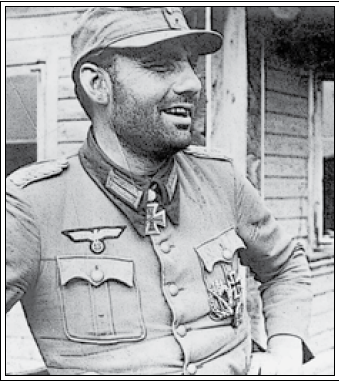
4/6/1941, Nazis Invade Yugoslavia and Greece: Germany invaded Yugoslavia, concentrating on Serbian positions. German propaganda assured Croatians they would be rewarded with an independent state. King Peter II and his cabinet fled to London to establish a government in exile. Hitler responded to Yugoslavian resistance with a bombing campaign that killed over 17,000.
While the Nazis were able to occupy and consolidate power in Belgrade, outlying regions were far from under control. Soviet-backed Communists and British-backed Serbian Royalists would threaten German power in Yugoslavia throughout the war. These resistance fighters prepared for a long battle as Hitler’s puppet regime formally surrended Yugoslavia on April 17th.
Although Greek and Allied forces repulsed the Germans at the Metaxas line soon after they pierced border defenses, they couldn’t withstand intense aerial bombardment and being flanked by the German forces in Yugoslavia. Allied troops were forced to evacuate, and thousands were surrounded and taken prisoner. By May 14, Greece was under German control, and the government signed an armistice on May 21st. With continental Europe now firmly under Axis control, Hitler returned to planning Operation Barbarossa, the invasion of the Soviet Union.
4/9/1941, Visions: The German invasion of Yugoslavia was not without setbacks. On the road to Sarajevo, an entire Panzer Corps was neutralized by Janes Sajovesek, a Talent with the power to project terrifying visions into the minds of his enemies. Though most recovered in hours or days, several spent the rest of the war in mental hospitals. When German troops regrouped, Sajovesek wisely fled the country as teams of Übermenschen began combing the hills for the man the locals called Stasio (“Stand of Glory”).
The very next day in Greece, British officers were trying to make sense of rumours concerning a return of the mythical Pythia, the Oracle at Delphi. When thousands of civilians migrated to the city of Katherine to hear a group of young girls foretell the future for any who made an offering to Apollo, it was clear that the stories were true. Major General Fryeburg said “I’ve never before seen civilians head towards a war.”
The British were forced to retreat south and abandon the city. When the German commander consulted the Oracle and was satisfied that their powers were real, news was sent back to Berlin.
quote:
Stasio (“Stand of Glory”)
1908-1944
Powers: Stasio could torment enemies with terrifying visions including images, sounds, and ideas. When activated, his power could tell friend from foe, and attacked all enemies within a range of about a quarter-mile. His power lasted for minutes at a time, and often induced seizures or lasting mental illness. Targets often accidentally injured themselves.
Background: Janes Sajovesek was a metalsmith in Mostar, Yugoslavia before the Nazis invaded. He joined Josef Broz Tito’s communist guerrillas and raided German convoys from the hills. He discovered his powers during one such raid on April 8, 1941, covering the retreat of his outnumbered unit and repelling an entire Panzer corps.
Sajovesek continued fighting under Tito’s command, but often worked with British Talent commandos. He was a clever guerrilla fighter, evading numerous traps and killing two Übermenschen sent to kill him. His main objective was the disruption of supply trains and troop movements throughout the country.
During the liberation of Yugoslavia, Sajovesek was struck in the head by a bullet and never recovered. He was buried as a national hero. A statue of him helping an injured soldier to his feet still stands in Sarajevo’s Mosa Square.
quote:
Pythia
It is generally accepted that the Pythia was “merely” an usual manifestation of a Talent. (Talents who consulted the Oracle have confirmed that a Talent power was in use.) However, the Pythia does stand as the only example in the Western world of a “tribal magic” Talent that could pass from person to person. The first Pythia were four sisters, but over the decades a series of young women have drifted in and out of the Trance, going on to lead more or less normal lives.
The Pythia Talent struck a young girl just before puberty, like an illness. It caused an otherwise normal girl to lapse into a catatonic trance with only brief and infrequent periods of lucidity. During these periods she conversed in “the Voice of Apollo,” a beautiful male baritone, answering questions about the future for any who made an offering to the god Apollo. As in myth, the answers were convoluted and poetic, and generally accurate but open to interpretation.
Hitler consulted the Pythia before Operation Barbarossa. Their answer was similar to that supposedly given to the legendary king Croesus before his invasion of Persia: “If Germany invades Russia, the name of Hitler will stay on the lips of loyal followers until the dawn of the next century; while Stalin will be forgotten, like a nightmare upon waking.”
4/13/1941, the Soviet–Japanese Neutrality Pact: The Soviet Union signed a peace accord with the Empire of Japan, supposedly strengthening a strained relationship following several skirmishes on the Manchurian border. Secretly, Stalin prepared for the worst, knowing that Nazism and Communism could not peacefully coexist for long.
4/14/1941, Australia Holds the Line at Tobruk: Despite being surrounded on all sides and reinforced only by the sea at their backs, the Ninth Australian Infantry bravely repelled Rommel’s ground and air assault. Though they suffered many casualties, Rommel was forced to call off his attack on May 4.
4/19/41, the Blitz Continues: The Luftwaffe made its worst attack yet on London, dropping 35,000 pounds of explosives and killing hundreds. Thirty-six new British Talents were “born” in the attack.
5/6/1941, the first USO Broadcast: American comedian Bob Hope hosts the first USO Show featuring many Hollywood stars, broadcast for servicemen on international radio from March Fields, California. Hope opened with a joke about British Talents: “I have no doubt Hollywood’ll develop Talents of their own shortly. Me, I’d just like to be strong enough to lift my own ego one day…”
5/10/1941, Rudolph Hess Captured: Deputy Führer Rudolph Hess made an attempted flight to England, hoping to singlehandedly negotiate peace between Germany and Great Britain. Disoriented in his attempts to avoid British radar, he was forced to bail out over Scotland when his fuel ran low. He was promptly captured and imprisoned in the Tower of London to await trial after the war.
Hess was a close confidante of Hitler (he edited Mein Kampf and shared many of Hitler’s eccentric interests) and historians are still baffled as to why he attempted such a bizarre plan. He had considered it for some time, having attempted to contact the Duke of Hamilton (a diplomatic contact made at the 1936 Olympics) and having outfitted a specially modified Messerschmitt for the journey. Most point to Hess’ diminishing importance vis-a-vis Martin Bormann as Hitler became totally focused on the war, and his concern that Operation Barbarossa would be Germany’s downfall.
Hitler was infuriated and eliminated all traces of Hess, replacing him with Bormann in all things. Churchill took advantage of the incident, implying in radio addresses that Hess had been the first, but not the last, target of a powerful mind-controlling Talent.
5/10/1941, Another Attack on London: The Luftwaffe launched an even more deadly attack on London, killing over 1,200 people with incendiary bombs. Ninety-four Talents were spawned by the attack, and defenders of the city downed 14 German aircraft.
5/10/1941, British Land in Iceland: The small but strategically important nation of Iceland struggled to maintain neutrality as a “sovereign kingdom in personal union” with Denmark, which had been overtaken by the Nazis. The British made the point moot by landing 60,000 troops at Reykjavik to secure transport lanes for Lend-Lease materiel. Presented with a fait accompli by Great Britain and the United States, Iceland officially cut ties with Denmark days later.
(Note: Britain actually invaded Iceland in May 1940. Whoopsie-daisy!)
5/13/1941, Zindel Dies: Ethiopian Talent and resistance leader Zindel was killed by a landmine near Nonna. His followers placed his body in a stone crypt, which was soon desecrated by the BSOE under secret orders from Churchill. Within weeks the remains were being studied by the SSO.
5/15/1941, Operation Brevity: A series of poorly-planned British attacks lead to the Eighth Army being flanked by Axis forces. Fortunately, a last-minute attack by 21 British Talents disrupted the Axis forces long enough for most of the British to escape, narrowly averting disaster and another great victory for Rommel.
Operation Rascal, as it was called, was commanded by 1st Lt. Reginald “Gabriel” Green. Divided into small 3-man squads, the Talents destroyed tanks and disrupted communications before retreating to Egypt. Labyrinth and Iron Pete were killed, but the mission was a success. Gabriel was promoted to Captain, and Churchill personally decorated him with four gold tank emblems for the four tanks he destroyed with his sonic powers.
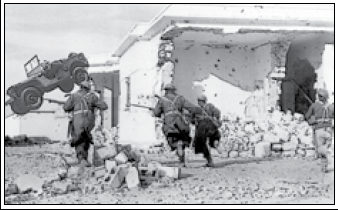
5/21/1941, the Robin Moor is Sunk: U-boat U-69 torpedoed the SS Robin Moor, an American freighter on its way to supply British forces in North Africa. Although the crew and passengers were allowed to board lifeboats (and were all miraculously rescue, though one later committed suicide), the American public was furious. Roosevelt used the incident to solicit further support for the war.
5/24/1941, Sinking of the Hood and Bismarck: The HMS Hood, the largest ship in existence at the beginning of WWII, was sunk by the German Bismarck in a battle in the Denmark Strait. Though damaged, the Bismarck managed to score a direct hit on the Hood’s magazine, triggering an immense explosion. Only 3 men survived out of a crew of over 1,200. Two days later, the Bismarck was set upon and badly damaged by Swordfish torpedo bombers, and sunk by the HMS Rodney and HMS King George V the next day. Only 110 survived out of a crew of 1,900.
5/27/1941, State of Emergency in America: President Roosevelt declared an “unlimited state of national emergency,” putting the military on full alert. In the address announcing his decision, he encouraged all Talents to report to their nearest government official.
May 1941, End of the Battle of Britain: Having lost over 700 aircraft in an attempt to crush British morale, Göring officially called off the attack on London at the end of May. He shifted his focus to the Soviet Union, anticipating success against the outdated Soviet air force.
June 1941, OSRD Formed: The National Defense Research Committee was reformed as the Office of Scientific Research and Development. Plans were made during May, and the organization was officially created by executive order on June 28, 1941. Headed by Dr. Vannevar Bush, who reported directly to Roosevelt, the organization was given virtually unlimited access to funding and resources. It would be responsible for innovations including the proximity fuze, penicillin, and the atomic bomb.
While atomic bomb research was the purview of the secret Section 1, Section 2 was concerned with Talent research. By the end of the war, Section 2 would be a household word and synonymous with American Talents.
6/9/1941, the Berlin Air Show: Thousands of Germans, including Himmler, Göring and Goebbels, attended a state air show featuring dozens of aircraft and cutting-edge Luftwaffe technology. But by far the most dazzling example was the demonstration of the prototype Düsenpack.
Oberstleutnant Björn Kafsack took the stage wearing a bulky silver backpack and, to the surprise of the crowd, took off. For several minutes he delighted the crowd with an aerial display, but when he momentarily flew out of view of the crowd, tragedy struck. Kafsack plummeted to the ground and died instantly, and no one knew what had gone wrong. The air show was immediately concluded and the national press obscured the incident with several misleading statements.
As it turned out, the inventor of the Düsenpack, Gunter Koen, was the first known example of a Talent power which the Americans would call “ Goldberg Science.” Koen appeared to be able to engineer machines decades or centuries ahead of modern science, but it was his Talent that “tricked reality” into allowing his machines to work--the engineering behind them was utter nonsense. Until his Talent failed, even Koen himself believed that he was “only” a gifted scientist--he had never demonstrated his device to any Talents. The performance in Berlin was preceded by several test flights to gain Hitler's approval--but all with Koen as the pilot. His Talent and his Düsenpack failed as soon as the device was out of the realm of his perception.
RuSHA SA quickly ascertained the limits of Koen’s Talent, but no attempt was made to utilize it--after his public, catastrophic failure, he was persona non grata. He was drafted into a regular Heer unit and would be killed in action in 1944. The “plans” for his Düsenpack are still on display at the Berlin Museum of Science and Technology.
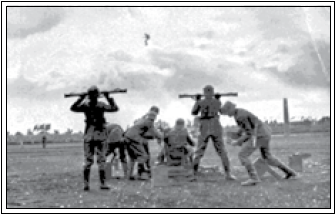
6/15/1941, the Best British Invasion Ever: As part of the Blue Accord, four British Talents traveled to the United States. They were there for very secret experiments with the newly-formed OSRD S-2, and a very public tour to promote the Lend-Lease policy. The Talents were extremely popular with the American public and increased support for Roosevelt’s stance on the war. The Talents were Arthur Smith, a pyrokinetic who could control the temperature of objects; Templeton “Bolt” Ruperelia, who could fly (but only in straight lines); Grant “Pop” Kearney, who could control the air pressure in objects to cause explosions and implosions; and the most famous, Lloyd “Bulldog” Feit, a skinny little man who could lift tanks over his head with ease.
The arrival of the British Talents presaged a revival in the popularity of all kinds of parapsychology. If the “super-men” were real, the average American reasoned, then why not ghosts, aliens, monsters, and reincarnation? While most of the public’s fancy was exactly that, reputable academics inferred correctly that Talents were linked to some mental ability. Princeton University founded a School of Psychology, Parapsychology and Physics (“4P”) which would become the world capital for the academic study of Talents in decades to come.
quote:
Bulldog
1922-1999
Powers: Bulldog had superhuman strength. At his peak, he lifted a 64-ton crane and held it overhead for 9 minutes. His strength circumvented basic laws of physics: he needed no leverage to lift, and was not concerned with inertia. He could stop moving vehicles without being pushed back, and when he lifted heavy objects while standing on a scale, the scale did not register their weight--his strength “tricked” the laws of physics into behaving as if objects he touched had no mass.
Bulldog was also superhumanly tough, but this power was unreliable and seemed to reach his peak only when he was very motivated or scared. SSO scientists were unwilling to tests the limits of this power for obvious reasons.
Background: Lloyd Feit was the fifth son of a well-known boxer and brewer from Coventry. Unlike his brothers, Lloyd was always small and weak. He earned the nickname “Bulldog” because of his mental toughness and refusal to back down from any challenge.
Lloyd was the only one of his brothers rejected from military service. He worked on his physique with his father coaching him, but despite their best efforts, it was no use. The elder Feit tried to discourage Lloyd, culminating in a screaming match that ended when Lloyd picked up a 200-lb. weight and threw it through a wall with one hand.
Feit returned to the recruiting office and was quickly accepted. After being tested by the SSO, he was turned over for diplomatic work, his power considered too unreliable for combat duty. Although Feit chafed at this, his publicity stunts on trips to the United States proved very valuable to the war effort. PM Churchill signed him over to act as President Roosevelt’s personal bodyguard, where he remained until Roosevelt’s death in 1945. “You’ve no idea what it’s like to lose a father twice,” remarked Feit, whose own father had died of brain cancer the same year. He had already lost two of his brothers in the war.
Feit planned to rejoin the war effort against Japan, but the war ended before this could happen. He returned home and ran the family brewing business until his retirement in the late 60s. In 1988, he sold the Bulldog Beer brand to a conglomerate for a huge fortune. He died of natural causes at the age of 87, wealthy, respected, with many children and grandchildren, a national hero of Britain.
6/15/1941, Operation Battleaxe: Marshall Wavell launched an attack on the Axis on the border of Egypt. It was a disastrous move; the attack was meant to lure Rommel out, but Rommel simply used the superior range of his Panzers’ guns to fire on the British from well outside the range of their guns. In two days, the British lost 91 tanks and 1,000 men. Churchill forced Wavell to exchange duties with Claude Auchinleck, then commander of British forces in India.
6/19/1941, SS Überkommandogruppen is Formed: Playing on Hitler’s desire to have all Übermenschen in the Schutzstaffel, his personal guard, Himmler successfully lobbied to have all newly-discovered German Talents placed under his command. Whereas Übermenschen had been divided among many branches based on prior membership, from now on they would all be enrolled in the Nazi Party and the SS. Many Übermenschen took the opportunity to transfer to the prestigious organization.
Überkommandogruppen trained its members for specialized assault, rescue, and assassination missions. Only the strongest and most fanatically Nazi were accepted into the elite Überkommando, who were presented to the public as ideal Aryans. A division within the spy agency Abwehr, called Wasserfall (“Waterfall”) trained Talents for espionage, sabotage, and assassination.
6/22/1941: In a very successful publicity stunt, Bulldog was allowed to “keep whatever he can lift” for the British war effort from the Albany, NY National Guard Armory. American millionaires like Howard Hughes offered to purchase for Lend-Lease everything he could lift in an hour. In that time, Bulldog lifted 152 tons of equipment. A photograph of Bulldog holding a 8.5 ton half-track overhead in one hand while bending down to pick up a heavy machinegun made the cover of Life magazine.
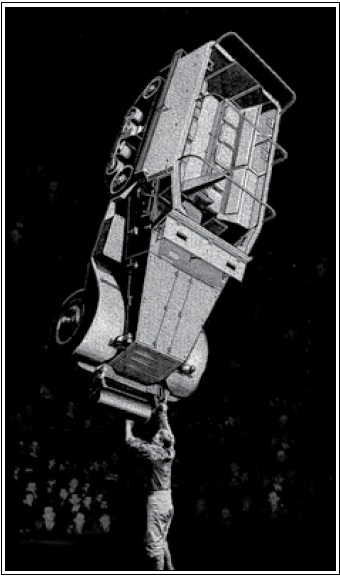
6/22/1941, Operation Barbarossa: The Heer and Luftwaffe launched a rapid series of attacks on the Russian border. It was the largest military assault in history, deploying almost 3,050,000 men. German infantry, tanks, artillery, and aircraft rolled through Soviet defenses. The paranoid Stalin at first refused to believe news of the attack, thinking it an Allied plan to trick him into attacking Germany. Meanwhile, Germany tore through one Soviet division after another on its way to Moscow.
6/22/1941, Baba Yaga: On the same day the Nazis launched their attack, the Soviet Special Directive 1 achieved its first “success” at artificially creating a Talent in their laboratories in Minsk. The man known only at Subject 3009 manifested powerful telekinetic abilities after a regime of torture and brainwashing that had killed all other subjects. Somehow the man managed to survive despite suffering starvation, dysentery, and bronchitis.
Subject 3009 began subconsciously defending himself. At about the same time his torturers realized he was suffering from paranoid schizophrenia, a pair of scientists taking a blood sample from 3009 were torn to shreds by his powers. SD-1 alerted Stalin and advised him to abort the project, but he refused, too preoccupied by the German attack to consider anything but finding a way to use the prisoner’s power to aid the war effort. More fearful of Stalin and Beria than of their subject, the scientists continued.
Five days later, Subject 3009 began screaming endlessly about “the witch and the house.” Those sent to sedate him were crushed to a bloody pulp, and soon the walls of his cell were cracking as he repeated “ Baba Yaga, Baba Yaga.” Stalin authorized the use of Sarin gas which was pumped into the facility, killing hundreds of prisoners. The building went silent...briefly...before something emerged. Accounts varied, but all agreed they had seen some sort of house, a small, brightly-coloured wooden shack, perched atop numerous scuttling spidery legs. The creature escaped, tearing through concrete walls and heavily armed soldiers with ease, before wandering into the Pinsk Marshes. Exhaustive searches yielded nothing, but Baba Yaga would be seen again.
quote:
Baba Yaga
????-????
Powers: Baba Yaga’s Talent manifested as a small, 16th-century Russian peasant cabin, measuring about 3x5x5 meters...perched on a cluster of spidery legs terminating in huge, serrated pincers. The house-creature was incredibly strong, able to lift 77-ton Panzer tanks with ease. It was also virtually invincible, ignoring tank shells as easily as raindrops. It attacked victims much like a cat toying with its prey: fearless, picking at corpses, often simply dropping and leaving enemies as if bored.
Baba Yaga could also vanish in a fog. Whether this was a result of great speed, illusion, or teleportation is unknown. It is still unclear if Baba Yaga actually transformed into the house-creature or projected it from elsewhere. As a “mad Talent” it was immune to having its abilities resisted or interfered with by other Talents.
Background: Nothing is known about the Talent who would come to be called Baba Yaga except that it was a male dubbed Subject #3009, imprisoned and tortured at the NKVD facility where Beria developed his methods. As all of SD-1’s records were destroyed, even the Russians know nothing about him.
Subject #3009 was the first and most potent of the Talents created by Lavrentiy Beria’s “biological reeducation” program. It immediately escaped from the Special Directive 1 facility, wandering the countryside. The NKVD tried to track it down, but only found a trail of deaths and sightings.
Baba Yaga began appearing frequently when the Germans invaded and broke through Russian lines. Whole companies went missing for days, only for their mangled remains to be found strewn across empty fields. Baba Yaga killed German and Russian soldiers alike, and seemed to be drawn to misery and slaughter--it often arrived on battlefields after the fighting was done, to pick through the corpses. It moved with no apparent agenda and was never known to communicate with anyone.
The only organized attempt to stop Baba Yaga was an assault by 13 Russian T-34 tanks. It responded to the barrage of 76mm shells by slowly getting up and walking towards its attackers.
Sightings of the house-creature dwindled after the war. The last confirmed sighting was near Archangelsk in 1951. Perhaps it still lives.
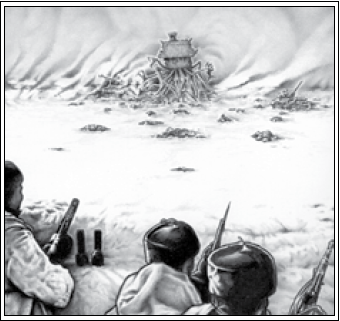
Next time on Godlike: America and Japan enter world war. Sheol emerges from the shadow of genocide. Two phantoms battle for the life of Winston Churchill. America gets its first Talent.
A Godlike History of WWII Part IV (again)
Original SA post
Godlike, Chapter V, Part IV
The last update concluded with the German invasion of the Soviet Union and the creation of the most famous and powerful “mad Talent,” Baba Yaga.
6/12/1941, Vichy France Surrenders in Syria: The Vichy puppet state’s holdings in Syria were a vital hub for the Afrika Korps. A combined force of Indians, Australians, British, and French troops forced them to surrender, and a Free French government was soon established.
7/19/1941, SSO Studies Zindel: After two weeks of extensive autopsy, the British SSO gave up further study of Zindel’s body. Even meticulous study of the brain failed to reveal anything physically unusual about the Talent.
8/4/1941, the August Uprising: Pevnost used his powers to coordinate a heavy assault on several Nazi facilities in Prague. He had access to several Gestapo and SS headquarters; one converted building had been his grade school! Czech partisans and British commandos took their targets completely by surprise.
The partisans held the city for four days before retreating to escape the arrival of a Panzer division. During that time, impromptu trials saw the execution of ten high ranking Nazis and Czech collaborators, including Jozef Tiso (president of the Nazi puppet state in Slovakia) and SS Reichsprotektor Reinhard Heydrich. They were shot before cheering crowds on August 6 as the August Uprising became international news. Thanks to Pevnost’s powers, only 209 partisans and British were killed in the retreat.
8/9/1941, the Newfoundland Conference: Roosevelt and Churchill convened a top-secret conference to discuss issues such as the invasion of the Soviet Union, Japanese expansionism, the war in North Africa, and a potential Atlantic Charter. Roosevelt arrived via the SS Augusta while Churchill was escorted by Pevnost. Other Talents, including Bulldog, Cormorant, Basilisk, and Flip, were present to demonstrate their powers and potentially serve as bodyguards for both men.
Roosevelt congratulated Pevnost for his assault on Nazi Prague and promised to supply arms to the Czech government in exile. Bulldog was detached to act as Roosevelt’s adjutant and unofficial bodyguard through the end of the war.
Five days later, the two leaders signed the Atlantic Charter as a joint declaration. The Charter supported self-government and access to trade for all nations, global economic cooperation, freedom of the seas, and a general postwar disarmament. Furthermore, it declared that the Allies would not seek to increase their territory without the consent of the governed, nor to impose punitive economic sanctions on Axis nations after defeat--a repudiation of the treatment of Germany in the Treaty of Versailles, which caused the social upheaval that allowed fascism to rise. Hitler saw the Charter for what it was: a potential alliance against him.
8/15/1941, Section 2 Report on Talents: Section 2 submitted a secret report on the results of a month of study on the British Talents. They documented numerous violations of physical laws undertaken by Talents.
The most prominent example was Bulldog, who was asked to lift an 11-ton weight while standing in a pile of sand, which itself rested on a large scale. Not only did Bulldog lift the weight without having the necessary mass or leverage, the scale only registered 169 pounds...the weight of Bulldog and the sand. His feet didn’t even sink. It was the Section 2 scientists who first correctly deduced that Talent researchers should be more concerned with psychology than with physics.
8/21/1941, Nazi Persecution of Czechs: Two-hundred Czech citizens from the small towns of Lidice and Levzacky were rounded up and shot, and their homes demolished. Germany boasted that the towns had been “erased.” From that point, Pevnost concentrated his attacks on military positions and did not dare attack command posts in Czechoslovakia.
9/19/1941, the Fire of Kiev: German forces occupied Kiev, crushing all resistance and instituting martial law. Hitler prematurely declared that Russia was effectively defeated.
Three days later, the western sector of the city caught fire following several explosions. At first the Germans, who were rounding up remaining Soviet forces, suspected a counterattack. Instead they discovered a naked man walking unharmed and unconcerned through the intense blaze.
The fire died down after intense shelling of western Kiev, but by that time more than a quarter of the city had been leveled by fire and artillery. The mysterious “fireman” was never seen again. A report was filed with RuSHA SA, who immediately covered it up. Hitler still denied the existence of any non-German parahumans, and they refused to be associated with the incident.
9/23/1941, de Gaulle Forms Free French Government: General Charles de Gaulle formed a Free French government in exile to promote the liberation of France. He attempted to contact L’Invocateur to help cement his status as the unofficial leader of French rebels worldwide, without success. Allied leaders considered him a massive egoist and a thorn in their side, but he would remain a French military and political icon for decades after the war.
9/29/1941, Allies Send Advisors to Moscow: The United States and Britain sent advisors to determine how best to help the Soviet Union repel German invasion. While Churchill considered sending Talents as a show of commitment, he was concerned that Stalin would hold them hostage.
10/17/1941, Tojo Becomes Prime Minister: Prime Minister of Japan Konoe Fumimaro was removed in favour of General Tojo Hideki. Konoe, a member of the royal family who wished to avoid war, was ultimately defeated by the para-fascist movement he had founded. Tojo, a veteran of the Manchurian occupation, was a fervent militarist who had taken over Komoe’s IRAA. The Imperial Diet was now dominated by men calling for war with the U.S.
10/20/1941, Operation Typhoon Falters: The Luftwaffe had crushed the Soviet air force as predicted and subjected Moscow to intense bombing, and the Heer had taken nearly 700,000 prisoners. However, the offensive against Moscow came to a halt 60 miles from the city when the autumn rains began. Refusing to retreat, Hitler’s forces laid siege to the city while Stalin waited for reinforcement by his most potent ally: Russian winter.
10/31/1941, America’s Godlike Talent: The German U-boat U-562 sunk the SS Reuben James with a direct hit on the destroyer’s magazine. The explosion sank the ship in less than a minute. One of the few survivors was sitting on top of the magazine when it exploded. Ensign Lawrence Moreland was thrown a quarter-mile into the water, where he was rescued by the HMS Victory, shaken and incoherent. As British sailors attempted to restrain the crazy naked American, he leapt three stories from the bridge to the deck and sprang to his feet shouting “I’m indestructible!” The British radioed the news to nearby American ships.
As he was boarding a transport to the SS Eustis, a British mate punched Moreland in the back as a joke--and knocked him flat. He was pissing blood for three days. But the injury was perhaps a blessing in disguise, as it taught Moreland the limits of his Talent: it only protected him from injury when he could see it coming. This vulnerability would become a closely guarded military secret.
Moreland returned to the U.S. in secret, but Churchill congratulated Roosevelt in a private communiqué. “If there was a more fitting way for good to rise out of an evil so great, I could not think of it. America’s ‘Indestructible Man’ shall be quite a potent weapon indeed. This is nothing less than yet another nail in Mr. Hitler’s coffin.”
On November 10, Roosevelt announced the sinking of the Reuben James and the existence of the Indestructible Man in what came to be known as the “Godlike” address. “Now we have our own Talent. A son of these United States, who is invulnerable to all weapons turned against him. Never before has the power of creation been so directly placed within the hands of humanity. Godlike in their abilities, let us hope this new breed of man will carry the burden of a suffering world to our ultimate and unwavering goal—freedom for all the people of the Earth.”
For over a week, the American media was obsessed with Moreland, his importance briefly dwarfing that of the war itself.
11/6/1941, U.S. Commits to Aid Soviets: Roosevelt promised the Soviet Union over $1 billion in aid to defend themselves from German invasion. Few were optimistic about their plight, but Roosevelt and Churchill agreed that complete unity against the Nazis was necessary. (However, they considered their Talent research too vital to share with Stalin, and Soviet requests for same were simply denied.) The implications of the decision were felt at all levels by every major power involved in the war.
11/10/1941, Britain Repudiates Japan: Churchill announced that any action against the U.S. by the Empire of Japan was an attack on Britain as well. However, this did little to affect Japanese decisionmaking--Britain had relatively few military resources in the Pacific.
11/16/1941, Siege of Sevastopol: The last holdout of Soviet resistance in Crimea was Sevastopol, a port city defended by mines, mortars, and machineguns and reinforced from the sea. German troops laid siege to the city. Überkommandogruppe Section Blue did not arrive in time to launch behind-the-lines attacks...but the Soviet Talents were already busy. General von Runstedt barely escaped bomb attacks that killed four of his staff. He knew better than to allow rumours of Soviet Talents to get out, but the British and Americans learned of it. The SSO and Section 2 theorized that the Soviet Union had a large untapped population of Talents.

11/21/1941, the Indestructible Man on Film: Lines stretched around the block to see a special March of Time newsreel featuring the Indestructible Man. He was shot, stabbed, blown up, and set on fire to no effect. Americans drove for hours, to wait for hours, to watch a 30-minute newsreel and were delighted to do it--again and again. New York City’s Mayor LaGuardia called it “the most amazing thing I’ve ever seen. This is history!” Further newsreels continued to fascinate the American public.
11/14/1941, Marines Occupy Surinam: By invitation of the government of the Dutch West Indies, the U.S. Marines occupied Surinam and other Dutch Caribbean islands in case of Japanese attack. Few Marines commanders believed it would happen.
11/25/1941, Sinking of the Barnham: U-331 sunk the HMS Barnham, the first battleship sunk by a submarine in WWII. All 861 crewmen were killed...except one. Yardley Smythe survived by teleporting back to Britain. Soon called “Rook,” he would become one of the most important British Talents of the war.
quote:
Rook
1916-
Powers: Rook could teleport any distance to any location, whether or not he had seen it. But first he needed to use his power to “feel around” for an equivalent amount of mass with which to switch places, a process that sometimes took minutes or even hours. He could switch places with a person as long as they were the same weight; sometimes clothes or other accessories were left behind to “even out” the transfer. His feel for his target differentiated between living and nonliving matter. His power was not tiring and he could cover vast distances quickly with repeated jumps.
Background: Yardley Smythe ran a family fishing business with his brothers near Cornwall in Britain. In 1937, he and one brother joined the Royal Navy, and was quickly promoted to officer rank.
The manifestation of his Talent allowed him to escape the sinking of the HMS Barnham in November, 1941. He found himself back in Cornwall, having switched places with most of a small tree. He promptly turned himself in to show he was not a deserter.
The SSO quickly identified Smythe as potentially very valuable as a saboteur. He was able to easily insert himself behind enemy lines in France and Germany to aid insurgents. In 1944, he was the center of a secret project codenamed Blitz. The plan was for Smythe to “rook” Adolf Hitler himself. Perhaps the intelligence on Hitler’s weight was faulty, or the diet program wasn’t quite right, but Smythe spent 7 months on a miserable diet to no avail before the plan was scrapped.
After the war, Smythe gathered intelligence from Soviet satellite countries, but apparently disliked his work. He moved to the United States in 1983 where he became something of a character actor, popping up in movies and music videos. As of 2002, Smythe was still alive and showed no signs of stopping.
11/18/1941, Auchinleck’s Offensive: General Auchinleck’s offensive by the British Eighth Army reversed the tide of war in Africa in a matter of months. In response to British gains near the Egyptian border, Rommel simply waited.
When the British engaged the Panzers, the fighting broke down into engagements by small forces without either side able to issue clear orders from the top. Then Rommel made a rare mistake, sending 100 tanks in hopes of capturing Alexandria or even Cairo. Auchinleck’s troops captured Tobruk, forcing Rommel to retreat and give up all the territory he had gained since his arrival in Africa.
11/27/1941, Section 2 Studies Indestructible Man: Section 2 completed a psychological evaluation and a series of physical tests on the Indestructible Man. They filmed him shrugging off 20mm cannon shells to the chest and Howitzer rounds to the face. Seeing the footage, General Nathan O’Sullivan remarked “Off the record, let me just say, fuck, am I ever glad he’s an American.” The scientists also discovered his vulnerability to surprise attack, a carefully guarded secret. Direct orders from Roosevelt transferred Moreland to the Department of the Army.
12/1/1941, the Arizona Disarms: In Pearl Harbor, Hawaii, Rear Admiral Isaac Kidd awoke with a strange urge to have the huge cannon rounds removed from the magazine of his ship, the battleship USS Arizona. He wouldn’t say why. Naval command thought it strange, but not enough to officially question the decision. His men worked 26 hours straight to transfer the explosives from the Arizona’s hold to dry-dock.
12/2/1941, Hitler Moves Fliegerkorps II: Hitler moved a 325-aircraft unit to patrol the Mediterranean and disrupt British shipping to North Africa. They were joined by 4 flying Übermenschen from RuSHA SA.
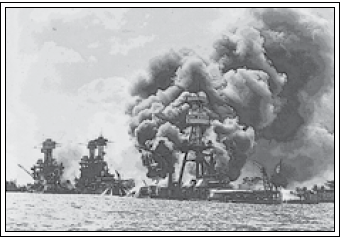
12/7/1941, a Date Which Will Live in Infamy: The Japanese attacked the U.S. Pacific fleet as it lay in port at Pearl Harbor, Oahu. Ironically, the fleet had been moved to Hawaii to deter Japanese aggression in the Pacific. Luckily, the American aircraft carriers which were the prime targets of the attack were all out of port--otherwise, the strike could have been a decisive victory in the Pacific without the U.S. launching a single ship against Japan.
Still, American losses were devastating. Of 8 battleships, 4 were lost and 4 heavily damaged; the Oklahoma was sunk with all of its 1,200 strong crew. Many other ships were damaged, and hundreds of aircraft were destroyed on the ground. The Japanese had 2 hours of total air superiority, even strafing nearby civilian towns without fear of counterattack.
Thanks to the prescient vision of its commander, Rear Admiral Kidd, the battleship Arizona fought back, despite a 1,750lb. bomb hit to its deck, downing 14 enemy aircraft. Its crew had been at battle stations since 7:00am, as if expecting attack. (Kidd’s foresight was probably the manifestation of a Talent, but if so, it never activated again. Kidd went on to become Vice Admiral of the Navy after the war, and after months of repairs, the Arizona fought in the Pacific before being destroyed as part of the Able atomic bomb test.)
Other crews downed 29 Japanese aircraft, and 5 midget submarines were destroyed before they could attack. Despite their losses and their failure to attack the aircraft carriers, it was a huge victory for the Japanese. At the cost of a small number of ships and planes, they had crippled most of the Pacific fleet and destroyed three-quarters of its aircraft. The attack was coordinated alongside attacks on Wake Island, the Philippines, Midway, Guam, Malaya, Thailand, and Shanghai. The Japanese conquest of the entire Pacific region had begun.
The next day at noon, President Roosevelt delivered a radio address to a public still recovering from news of the attack. The speech was short and to the point, explaining to the public that the Japanese had attacked in spite of ongoing peace talks, the attack had inflicted great loss of life and destruction of materiel, and that it was the center of a large plan of attack across the Pacific. “There is no blinking at the fact that our people, our territory, and our interests are in grave danger,” Roosevelt concluded. “With confidence in our armed forces—with the unbounded determination of our people—we will gain the inevitable triumph. So help us God. I ask that the Congress declare that since the unprovoked and dastardly attack by Japan on Sunday, December 7, a state of war has existed between the United States and the Japanese Empire.”
The United States and Great Britain declared war on Japan within the hour, and were joined the next day by China’s General Kai-Shek, who moved his reserve armies into Burma. Two days later, Germany and Italy declared war on the United States. The Second World War had begun.
12/10/1941, Allied Defeats in the Pacific: Japanese bombers sunk the HMS Repulse and HMS Prince of Wales off the coast of Malaya. (The latter ship had participated in the destruction of the Bismarck and helped Pevnost escort Churchill to the Newfoundland conference.) Without air support, they were set upon by 80 bombers and quickly destroyed.
On the same day, the Japanese also took American forces by surprise. A large landing force took Guam, and the Marines (numbering only about 500) were forced to surrender.
12/11/1941, a Spirit in the Forest: When Japanese forces landed near Rangoon and put the British on retreat, the British were squeezed were squeezed on both sides by the Japanese and by Burmese nationalists who resented British dominion. One Burmese, a Karen tribesman named Kata, put his newfound Talent to use disrupting the British retreat from Prome. The entire 151st Indian Mountain Regiment was lost in the retreat. Their bones would be found 9 months later, scattered in the undergrowth and hanging from trees. The Talent called Chanduk (“Spirit of the Forest”) would go on to kill hundreds, possibly thousands, of British and Japanese troops during the war.
quote:
Chanduk (“Spirit of the Forest”)
????-????
Powers: Chanduk could control plants and animals in the forest, causing sudden changes in topography. These effects were permanent and often deadly. He could also move through dense forest quickly and silently.
Background: Little is known about Kata Nawng, except that he was a tribesman of the Karen people born around 1900. The Karen people were insular, desiring their own homeland and resenting British rule.
Nawng’s powers manifested days before the Japanese arrived. At first, he took them for a liberating force and used his powers to aid them. When he realized they were worse than the British occupiers, he began killing them as well. Nawng killed large groups of men at a time, using his powers to stalk them from a distance and cut off their attempts at navigation until they died from lack of food and water. Many victims weren’t found until months or years later.
The only survivor of Nawng’s attacks was Lieutenant Nelson “Cupboard-Guts” Till, an American Talent who didn’t need to eat or drink. Till reported that after the rest of his group was dead, a small tribesman came and silently shared his camp, answering his questions only with smiles and nods. In the morning, Till found that Nawng had left him a clear path out of the jungle.
Chanduk is still rumoured to wander the highlands of modern-day Myanmar. The Talent magicians of the Kachin report that Chanduk occasionally appears at their border, silently observing them, but there have been no confirmed sightings in 60 years.
12/13/1941, the Battle of El Agheila: The Afrika Korps engaged the British 8th Army’s 7th Armored Division. The British were preceded by Larsen’s Folly, a 26-man Talent platoon that acted as a shock troop and recon unit under the command of Anthony Larsen. Larsen paled when he discovered he was facing the 280-strong Überkommandogruppe 2. Larsen decided to cover the retreat of the 7th Division.
In the first large-scale Talent battle of the war, Larsen’s Folly dug in near El Agheila and repelled 13 separate attacks throughout the night. Nine British Talents died including Pop, one of the first 4 who traveled to America. But Larsen’s Folly had killed 29 Übermenschen and allowed the 7th Armoured to escape. When they returned with reinforcements from the New Zealand 20th Infantry, Überkommandogruppe 2 collapsed. One hundred and twelve escaped, nine were captured, and the rest were dead.
Larsen’s Folly defeated Überkommandogruppe 2 largely thanks to ordinary military training. His men had all been fighting in North Africa for months and relied on orthodox tactics, whereas the Übermenschen expected their powers to do their fighting for them. For example, several were killed when Larsen feigned a collapse in their line and enclosed the Germans who foolishly rushed in, a simple inverted wedge formation. With such tactics he held off a force that outnumbered his 8-to-1, and took revenge for the deaths of Golgotha and Puppeteer.
Larsen earned the Victoria Cross for his actions, and a simple monument still bears the names of those who died in the battle. The 6 members of Larsen’s Folly who survived the war met there on the anniversary of the battle for decades, until Moamar Gaddafi’s government removed it in 1980. The ceremony resumed at the newly-built Talent War Memorial in 1996. At the time of writing, the last two members of Larsen’s Folly were still meeting.
12/18/1941, Japanese Invade Hong Kong: The Imperial Japanese Navy blocked the port of Hong Kong and shelled British and Chinese positions. Despite being totally surrounded with no chance of reinforcement and outnumbered by tens of thousands, the British and Chinese held out for days. When they refused to surrender, the Japanese responded with intense bombing that ruptured all the city’s water mains. Without clean water, the defenders were forced to surrender, and Japan had captured Hong Kong.
(Note: the Battle of Hong Kong began on 12/8, as the body of the entry states. I’m guessing that the authors made a typo and then slotted the entry in the wrong order based on that.)
12/19/1941, Hitler Assumes Control: Displeased with the halt on the Eastern front in the face of Soviet resistance, Hitler assumed direct command of the Heer. While the general staff still made many operational decisions, Hitler now had final authority and began managing the war in the East, hopelessly out of his depth.
12/20/1941, a Tiger Talent: The 1st American Volunteer Group, better known as the “Flying Tigers,” flew defensive roles for the Chinese Nationalists before their first major engagement over Kunming. With only 100 outdated P-40 Tomahawk fighters, the Tigers disrupted a bombing run by a much larger Japanese force.
During the attack, a pilot named Robert Young was forced to bail out when his plane was crippled by machinegun fire. His parachute also failed to deploy--forcing Young to manifest a Talent which allowed him to float gently to the ground. The man who would be nicknamed “FSAM” became America’s second Talent.
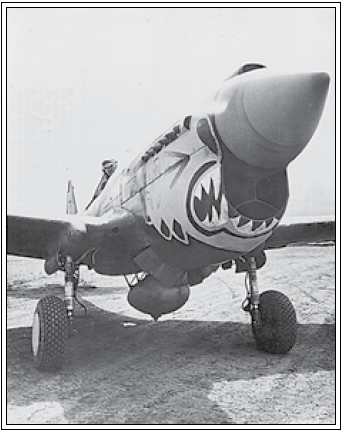
quote:
F-SAM
1909-
Powers: F-SAM could increase or decrease the effects of gravity on any object in sight range, plus or minus 70 to 90 times, for a period of 10-35 minutes. Used in combat, the effects of his power were often destructive.
Background: From childhood, Robert Matthew Young was obsessed with flight. He collected models, worshipped fighter aces, and even got Orville Wright to sign his cast after he broke his wrist jumping off his roof with a pair of tin wings. He became an airplane mechanic and trained to be a federal postal pilot, but was kicked out for his outrageous flying style. He then became a stunt pilot in an “air rodeo.”
Young joined the American Volunteer Group to aid the Chinese Nationalist government. While defending Kunming from attack in December 1941, he discovered his Talent when it saved him after his parachute failed to deploy.
Young returned to the United States to join President Roosevelt for a press conference to showcase new American Talents. After being the subject of studies by Section 2 and propaganda newsreels, he returned to China to fight with the 1st AVG “Flying Tigers.” It was a show of commitment by Roosevelt to impress Chiang Kai-Shek and intimidate Japan.
Young flew 67 combat missions and downed 63 Japanese aircraft mostly using his powers. Suddenly multiplying the gravitational pull on enemy planes caused wings to buckle and engines to fail. (Though this made him the highest-scoring American ace of the war, he acknowledged Major Dick Bong as the superior pilot.) His nickname, FSAM or “Fold, Spindle, and Mutilate” was a throwback to his time as a postal pilot.
Young returned from the war as a 1st Lieutenant in the Air Force. He taught the art of fighter piloting, and fought again in the “MiG Alley” of the Korean war, ironically fighting the Chinese he had helped defend. In the age of jet fighters, his powers were even more destructive, as the planes would shatter and explode when pushed past their limits.
Young retired from the Air Force at 45, bought a home in his native Connecticut, and started a business selling his powers to the highest bidder, mostly for construction and demolition projects. Young Talent Services became a multi-state corporation hiring Talents with powers useful for construction. Now run by his son, the company is worth $80 million.
12/22/1941, Roosevelt and Churchill Trade Talents: Churchill traveled to Washington to discuss the logistics of a joint war effort. Churchill was escorted by Jot, a powerful British teleporter, and 11 other highly trained and totally loyal Talent bodyguards. He detached two of them, Boxer and Mole, to American command in the Far East in exchange for concessions in the European theatre. While there, the two men developed an invasion plan for North Africa.
12/22/1941, the Dragon Stirs: A large Japanese landing force attacked a much smaller Filipino Army unit on Luzon. When his commander, a U.S. Army Captain, and 11 fellow Filipino soldiers were killed by a shell, Santiago Corzon was left unharmed. He charged the Japanese, transforming into a giant, fire-breathing, bulletproof dragon. He tore his way through an entire batallion with his teeth and claws before his power failed and he was forced to retreat. He joined the Hukbalahap, Filipino communist guerrillas, and continued the fight from the countryside.
By this time, Allies had received 16 reports of Asian parahumans, whom the Japanese called Gaki (“hungry ghosts”). Three were allegedly created in the attack on Hong Kong. Two escaped to join the resistance, while the last, a woman who could induce seizures, was killed. The Japanese displayed her head on a pole in front of the former British consulate building as a warning.
Most Gaki were Chinese, Mongolians, and Burmans who fiercely resisted the Japanese invaders. Section 2 dispatched advisors to assess the growth of the Chinese Talent population and offer aid and training.
quote:
Anguis (“Dragon”)
1919-1945
Powers: When angered, Anguis transformed into a dragon, 26 feet long and weighing 3.5 tons. He could breathe fire, and his claws and teeth could tear quarter-inch armor. He was nearly immune to small arms fire and resistant to explosives. His transformation normally lasted 1-3 hours, but could be extended with effort. After reverting to human form, he was exhausted and could not transform for several days.
Background: Santiago Corzon was raised in Our Lady of Perpetual Sorrow, a British nunnery and orphanage. Fluent in English, he got a job with the United States Army translating Filipino requisition forms. He joined the Filipino Army (mostly under American command) himself, part of a rapid build-up against the Japanese.
Corzon was part of a shoestring Filipino detachment which came under attack from a large Japanese landing force in December 1941. He only survived thanks to his emerging Talent, inflicting heavy losses before retreating to Luzon. He joined up with the Hukbalahap, or Huks, communist guerrillas who were so successful at seizing territory in the “Japanese controlled” Philippines that they printed their own currency.
Corzon was a terror to any Japanese unit below battalion strength, waging a tireless personal war against them. His power failed suddenly during the defense of Manila, and his weakened human form was killed by a tank shell. The Huks suspected a Japanese Talent had deactivated his power. He was buried at Tarlac Point.
12/27/1941, MacArthur Retreats to Bataan: Overwhelmed, General MacArthur was forced to retreat to the Bataan peninsula. He hoped to use the mountain caves as natural defenses, but his forces were poorly equipped and trained. General Homma’s forces sealed them off and hit them with repeated attacks. MacArthur was rapidly losing the Philippine islands.
12/29/1941, British Talents Exceed 750: An SSO report to Churchill listed the names and powers of 756 British-born Talents. The number of parahumans now exceeded their ability to carefully study every one. They reduced the examination period to 3 days, and Churchill anticipated fielding over 1,000 Talents before the spring.
12/30/1941, Sheol Emerges: By this time, the Nazis had begun the systematic mass murder of Jews, Roma, and others deemed “life unworthy of life” in occupied Europe and Russia. SS Einsatzgruppen committed numerous acts of mass murder, while the first death camps had opened in Germany and Poland. Amid the carnage and terror, rumours circulated of a powerful Nephilim . This Talent was a Jewish girl who could absorb the minds of those she touched. Jewish partisans jealously guarded her, and sometimes brought her out of hiding to preserve within herself the memories of those taken away to the camps. By the age of 18 she had absorbed 3,000 minds...and lost her own within the maelstrom of personalities she carried. The Gestapo hunted her relentlessly for three years as she traveled from one safehouse to the next, preserving the minds of the people Hitler sought to exterminate.
quote:
Sheol
????-2001
Powers: Sheol copied the personality and memories of anyone she touched. The process knocked Sheol and her target unconscious. When they awakened, usually in minutes, a copy of the subject’s mind was stored in Sheol ’s subconscious. When a personality surfaced, she perfectly imitated that person’s voice, mannerisms, and knowledge.
Sheol ’s “native” personality, if she still had one, was impossible to identify. When stressed, she switched personalities so rapidly that she had conversations with herself. It was possible to evoke a personality using memory cues, but never for more than about 15 minutes.
Background: Nothing is known about Sheol ’s origins except that she was a Jewish girl, between the age of 15 and 20 when her Talent manifested, protected and hidden by the Jewish underground in Poland. Sheol seemed to have a sense of self-preservation and often copied the minds of German soldiers, using their knowledge to help the Jewish operatives who protected her from the Gestapo and Einsatzgruppen .
When rumours circulated that there existed a Nephilim who saved Jews from the death camps, she became a legend. But having one’s mind preserved by Sheol was a questionable salvation. Most personalities that surfaced were terrified when they lost their grip and receded into the depths of her mind. It was impossible to determine how many personalities Sheol absorbed during the war, but Israeli scholars estimated somewhere from 800,000 to over a million.
The SS captured Sheol in 1944 just moments before the Russians liberated the region of Poland where she hid. But the Nazis released her on the day of Hitler’s death, and the Russians turned her over to the Allies in a deal brokered by Eisenhower. The Jewish Legion of Five Thousand took adopted Sheol as their spiritual figurehead, and when the nation of Israel was formed, Sheol resided in a small home that every Israeli youth was required to visit. There were rumours that from time to time, Sheol would choose certain people to copy, though the government strenuously denied it.
Sheol died of natural causes in 2001, her real name and age unknown. Her house remains as a memorial to the memories that she saved--for a time--from the fires of Holocaust.
1/1/1942, the Paukenschlag Plot: On New Year’s Day 1942, representatives of 26 Allied nations gathered in Washington, D.C. to sign the Atlantic Charter, unifying the free world against the Axis. They were guarded by 37 Talents on the lookout for spies and assassins.
Just minutes before Roosevelt and Churchill’s meeting in the Oval Office, British Talents Bulldog and the Shade discovered an Übermensch in parahuman disguise, attempting to sneak a bomb into the White House.
The Shade tackled the German spy from behind, using his power to put both of them “out of phase” with the physical world. The explosion went off in complete silence, killing both men. Everyone else at ground zero was literally untouched by the explosion. Defying the Axis, Roosevelt and Churchill held a moment of silence for the young man’s sacrifice and continued the signing of the Charter which would be the beginning of the United Nations.
It was only after the war that the details of the attack from the German side came out. Called Paukenschlag (“Drumbeat”), the operation was an Abwehr plan to eliminate both Churchill and Roosevelt, utilizing the powers of their premier spy, Doppelgänger . Doppelgänger ’s powers of disguise were perfect but for one fatal flaw: it was always active, and thus always visible to nearby Talents. Poor intelligence had led Wasserfall to believe that few Talents would be present at the conference.
Next time on Godlike: War across the world, and two major powers build concentration camps.
Godlike, Chapter V, Part V
Original SA post
Godlike, Chapter V, Part V
The last update ended with the Declaration by the United Nations, uniting the free world against the Axis...and with the Paukenschlag Plot, a failed attempt by a Nazi Talent to assassinate the assembled world leaders.
Emil “the Shade” Broaden was buried with great honours, and a plaque at the west gate of the White House still commemorates his sacrifice. Curiously, Secret Service agents still witness silent “ghost explosions” repeating every year on the anniversary of his death. It’s their policy to make sure the President is always elsewhere that day, just in case.
The foiling of the Paukenschlag Plot highlights a crucial change in the way Talent powers were used in the war: Soon after, even useless “Dud” Talents became valuable for their basic ability to spot other Talents, usually as bodyguard detail for VIPs. Wasserfallwasn’t ignorant of the nature of Doppelganger’s powers (which were always active and thus always visible to Talents), but their intelligence told them that few Allied Talents would be present. As the world population of Talents increased, so did Talent-related security.
1/2/1942, Japan takes Manila: General Homma’s forces secured the capital city of the Philippines, despite continued resistance from within the city and surrounding area. Anguis killed 64 Japanese troops and destroyed 3 tanks during his retreat.
1/3/1942, Wavell Holds the Line: Churchill ordered General Wavell to hold the Malay line in Southeast Asia at all costs to halt the Japanese advance, and assigned the powerful teleporter Jot to Wavell’s command to maintain lines of communication with Washington and London.
Nonetheless, by the end of the month, the Empire of Japan had expanded significantly as their forces prepared to enter Burma.
9/10/1942, Saratoga Torpedoed: A Japanese submarine attacked the aircraft carrier Saratoga, killing 5 and causing extensive damage. One crew member, Walter “Ironclad” Kelly, manifested a Talent which protected him from the explosion and made him harder than any medal. He was immediately reassigned to Section 2. The Saratoga required 5 months of repairs.
1/20/1942, the Wannsee Conference: Göring, Himmler, and Eichmann convened to decide the “final solution” to the “Jewish problem” in Nazi-controlled Europe. Though they had already carried out mass slaughters of “undesirables,” Hitler considered their current policies unorganized and inefficient. So at his orders, the Nazi leaders agreed on a plan for systematic genocide.
The Nazis used the notes of the late Reinhard Heydrich to adopt a system using gas chambers to kill large numbers of people at once, using cyanide-based gas. Prisoners deemed “inferior” or “unworthy of life”--including Jews, Roma, Slavic peoples, and the disabled--were to be gathered up, sorted according to their ability to work, and either immediately killed or forced to work themselves to death. In the end, these massacres would claim at least 5,800,000 lives.
The subtext of the Wannsee Conference was how to deal with Talent manifestations among those deemed untermensch, a topic still deemed verboten by Hitler himself. Göring considered them “wayward Aryans” who might be reeducated and used for the war effort; Himmler rationalized their existence as “throwbacks to the time of race mingling and mongrelism” and wanted them eliminated. Eichmann only cared about dealing with the sheer scope of the plan to imprison and murder millions. No firm policy was reached; for the time being, they were treated like any other member of their ethnic group.
1/21/1942, German Counter-Attack in Libya: Rommel’s forces, led by Übermenschen, attacked the British line near Benghazi. However, the clever Rommel was merely using his Talent forces as a distraction while his main force went in a different direction. Overconfident in their powers and importance to the Heer, three were captured when their offensive line folded.
1/22/1942, the Evacuation of Leningrad: After all rail lines were bombed out and supplies dwindled, 440,000 Russian citizens were evacuated from Leningrad in 50 days. The first five (sane) Soviet Talents to publicly reveal themselves assisted in the evacuation.
1/26/1942, Section Two Launches Propaganda: Section Two sent a report to Roosevelt indicating a stunning 70 American Talents discovered in the wake of the Pearl Harbor attack and the discovery of the Indestructible Man. Quickly grasping the psychological aspect of the Talent phenomenon, they recommended publicizing inflated numbers, which they believed would actually increase new Talent manifestations.
The same day, the first ship carrying American troops to Britain arrived after a dangerous trans-Atlantic journey. The Indestructible Man was onboard. Popular in Britain, he embarked on a three-week public relations tour that included many demonstrations of his powers and the release of books, pamphlets, and other media.
quote:
The Indestructible Man
1911-1977
Powers: The Indestructible Man was completely immune to injury of any kind, as long as he knew he was in harm’s way. Weapons, extreme temperatures, gas, acid...all were useless against him unless he was completely oblivious to danger. His power did not protect his clothes or gear.
Background: Lawrence Clyde Moreland, Clyde to his friends, was the son of a poor coal-mining family in Booth, Virginia. His father suffered from black lung, and he was forced leave school and enter the mines at 13 to support his family, whom he grew to hate for “stealing” his childhood. When his father finally died and work dried up, he joined the Navy to escape the Depression. He found he enjoyed it, and he continued in the service.
As hostilities increased in 1941, Moreland was eager for combat. He rode on three convoy runs to Britain and North Africa before manifesting his Talent when his ship, the Reuben James, was sunk. Moreland was transferred to the Army by Roosevelt’s direct orders, and as America’s first Talent he was made into a hero and role model overnight. Numerous novels, comics, and movies fictionalized his life which, up to that point, had been relatively uneventful.
Moreland trained as a Talent commando and became leader of TOG 1. He served on 11 missions into occupied countries and joined the first wave at D-Day. He was friends with many foreign Talents, who saw him as competent and down-to-earth, and was part of an international circle of friends.
Moreland was incensed at the death of Cien and swore revenge on his killer, the Nazi Talent Krieg. (He was reprimanded for making public statements against Field Marshal Montgomery, the mind behind the doomed Operation Market Garden.) Moreland got his wish in the ruins of Leipzig. He executed Krieg, who was surrendering, with a bazooka shot at close quarters. It is likely that only Vogel’s testimony on his behalf saved him from prison, or at least a ruined career.
Moreland continued to feature in the news after the war. In 1955, he walked away from a 10-megaton nuclear test. His popularity ended in 1958 when his youngest brother Stuart published Prodigal Son, a memoir excoriating Clyde as an abusive, racist drunk who abandoned his family. The public devoured the scandal with glee. Many more negative stories, both real and fictional, would be released in following years, sometimes accusing him of despicable conduct towards black soldiers and Jewish POWs.
In 1977, Clyde Moreland was found dead of acute cirrhosis in his tiny Virginia apartment. America’s Indestructible Man had finally self-destructed.
1/27/1942, Zyklon B and C: At the Auschwitz-Berkenau concentration camp, Nazis killed over 4,000 Jews in early tests of Zyklon-B gas. (Carbon dioxide had been deemed “too inefficient.”) However, during one test, a Jewish boy manifested Talent powers, killing Rudolph Höss (the creator of Zyklon-B) and 5 SS men before being killed himself.
Within two months, Nazi scientists developed Zyklon-C under orders from Himmler. This version, released several minutes after the initial use of Zyklon B, included a blinding agent and secondary poison to kill any survivors.
1/28/1942, Rommel Takes Benghazi: With a series of bold maneuvers and clever feints, Rommel pushed and scattered the British Eighth Army. They pulled back to the Gazala line, giving him access to Benghazi. Having secured the capital, but lacking fuel and supplies,
2/1/1942, the Reign of Quisling: Hitler appointed collaborator Vidkun Quisling the prime minister of occupied Norway. But the next morning, he was found dead, the victim of an apparent Talent assassination. His skin was hard as stone; his body fluids had congealed. SS Obergruppenführer Franz Jeckeln was swiftly appointed to replace him. The assassination was a heavy blow to the growing pro-Nazi sentiment in Norway, but Quisling himself commanded little respect, and there was no real effort was spared to investigate Quisling’s death.
(It was not until 1954 that the truth of Quisling’s death came out due to a leak from British intelligence. Operation Tumult, carried out by the BSOE, saw Aesgir use his powers to transport a six-man team into occupied Norway. Local resistance fighters snuck them into the PM’s mansion, where the British Talent Quagmire killed Quisling with his power to solidify liquids. There was little negative reaction to the news.)
2/11/1942, the Channel Dash: The Germans launched a force of 4 cruisers through the English Channel into the North Sea. The RAF and Royal Navy sent dozens of aircraft to sink them, but the attack was poorly organized and over 50 craft were lost. Although two of the ships were heavily damaged by mines, it was still seen as a humiliating defeat for the British in their home territory.
2/13/1942, the last Sea Lion Conference: Despite fervent lobbying from Der Flieger, Hitler decided to abandon Operation Sea Lion, the plan to invade Britain across the Channel, in favour of his growing preoccupation with the Eastern front. Der Flieger was transferred to the French coast, a clear sign of Hitler’s disfavour.
2/18/1942, the Japanese Invasion of Singapore: Japanese forces chased British forces across the country and soon landed two Marine divisions, cutting the Commonwealth forces in half. The Japanese lost fewer than 10,000 men while the British lost more than 138,000--many from disease and impure water. In the Battle of the Sittang Bridge, the British managed to destroy the bridge to Rangoon, but suffered heavy losses. Both armies regrouped, the British badly demoralized.
Fourteen new Allied Talents manifested during the fighting, but 10 were captured and killed. 2 escaped into the wild, leaving only 2 who escaped back to Australia.
2/19/1942, Eisenhower Leads War Plans Division: General Dwight D. Eisenhower was appointed the head of the Army’s General War Plans Division. He immediately resolved to strengthen American presence in Britain and plan Operation Sledgehammer, a cross-Channel invasion of Europe.
He also called for intelligence estimates on the tactical use of Talents. The “Eisenhower Plan” would become the policy for the use of Talents in the Army.
2/19/1942, the Bombing of Port Darwin: An attack on the Australian port city of Darwin from a Japanese aircraft carrier killed 172 and disabled 16 ships at harbor. The Australian public was shocked, anticipating a full invasion of Australia. Churchill soon sent 67 British Talents to Australia to allay their fears.
2/27/1942, Engagement at the Java Sea: A pitched naval battle between American and Japanese forces resulted in a defeat for the Allies, who lost five cruisers, five destroyers, and hundreds of sailors including Rear Admiral Karel Doorman.
2/28/1942, Radar Station at Bruneval: A group of 16 British Commando paratroopers, including Cien and Cormorant , attacked a German radar position at Bruneval near Le Havre. The two Talents occupied the Germans while the commandos disassembled their radar transmitter and rigged explosives to their emplacements. The group escaped in captured boats, and research on the inferior German radar technology led to methods for effective countermeasures.
3/7/1942, Disaster in Southeast Asia: The Allied situation across Southeast Asia grew ever more dire. General Sir Harold Alexander’s forces abandoned Rangoon. Although it was the only British entry point into Burma, they realized they could not hold it. They redrew the line at the Salween River and continued to be pushed back. U.S. General Joe Stilwell prepared for the worst as he readied his forces to defend the vital Burma Road. The AVG Flying Tigers sent one wing to assist him, led by America’s second Talent, Robert “FSAM” Young.
Dutch Allied forces in the Dutch East Indies were forced to surrender to the Japanese. Unluckily, many troops had been transferred to Malaya and Java, and those left behind were bereft of supplies.
General Douglas MacArthur reluctantly surrendered command of the badly demoralized forces in the Philippines, under direct orders from Roosevelt. Uttering the famous line “I shall return!” he took command of Allied forces in Australia.
3/12/1942, Roosevelt forms TOC: President Roosevelt formed the Talent Operations Command. Composed of high-ranking members of all branches, and reporting only to the President and Joint Chiefs of Staff, the TOC used voting committees to decide where Talent soldiers would be assigned. Talents were not allowed to choose their branch of service.
In less than two weeks, the first TOG (Talent Operations Group) began training at Achnacarry British Commando School in Scotland. Nine-man TOGs were used as scouts and shock troops, and TOG 1 included the Indestructible Man himself. The Achnacarry school would graduate 500 commandos within a year’s time.
3/28/1942, Failure at St. Nazaire: A British commando operation to destroy the dry-dock at St. Nazaire failed, in large part due to a defending force of 65 German parahumans. Der Auge (“the Eye”) foresaw the attack and hastily (and illegally) gathered his fellow Übermenschen. Many of his comrades defied orders to join him, but they knew Der Auge’s visions were rarely wrong. Out of 611 Allied troops, over 400 were killed and many of the rest were captured. It was a severe blow to British morale.
( Der Auge’s defense of St. Nazaire was the first large-scale use of precognition in warfare--and it would remain one of very few. In a magazine interview, American Talent Lt. Andrew “Lucky” O’Donnell likened precognition to navigating a tightrope in the dark--hard to grasp, and you can only follow where it leads or take a blind leap from it. And if you talk about the rope, it changes position and doesn’t lead where it once did. Most successful uses of precognition were small-scale tactical actions on the battlefield. Strategists and scientists quickly learned that it was sharply limited in its use for large-scale intelligence.)
4/9/1942, the Last Days of Bataan: General Homma’s army pushed the remainder of MacArthur’s forces back to the peninsula. Commanding General Jonathan Wainright and 2,000 men fled to Corregidor Island, leaving behind almost 100,000 to be captured by the Japanese. Few would live to see the end of the war.
4/10/1942, Japanese Offensive in Burma: Lt. General Iida pushed the British further north, despite reinforcements from Chinese and American forces. Thousands of Allied troops died of disease, thirst, and starvation. The Japanese captured the valuable Yenangyaung oilfields. If they could capture the Burma Road, it would be their entry point into India.
4/18/1942, the Doolittle Raid: Lt. James Doolittle led 26 B-25 bombers in a daylight raid on Tokyo, Kobe, Nagoya, and Yokohoma. The attack inflicted minimal damage, and only 64 out of 130 men returned safely to China. But the successful attack on the Japanese home islands had a huge impact on Japanese and American morale.
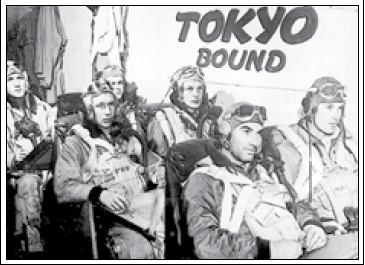
4/19/1942, Japanese Gain First Talent: In a rough squall, a Japanese pilot lost control of his plane and crashed into the deck of the aircraft carrier Shoho. Instead of dying, Lt. Hoshi Katamura was teleported to his quarters elsewhere on the craft. Hoshi (“Star”) was Japan’s first Talent. Unit 731, the Japanese biological weapons division, took him back to Tokyo for study. His existence would remain a closely-guarded military secret for ears.
quote:
Hoshi (“Star”)
1920-1981
Powers: Hoshi’s power was defensive teleportation. When in mortal danger he would teleport, naked, to the last place he slept. His power had global range.
Background: Hoshi Katamura was an unexceptional pilot in the Japanese Navy. He lived in the shadow of his brother, a more skilled pilot and officer, until his Talent manifested in the spring of 1941. He discovered his Talent when he teleported to his quarters from the cockpit of a dive bomber that he had just crashed into the deck of an Allied carrier.
Katamura was transferred with great secrecy to be examined by Unit 731, who carefully tested the nature of his powers. He continued to be a closely guarded secret, considered a national military asset on par with the atom bomb or the V-2 rocket. The Imperial Navy continued to send him on kamikaze missions using a modified “Zero” overloaded with explosives.
Starting in 1942, the Navy built plans around Hoshi involving their new submarine aircraft carrier. The oversized submarine could carry 4 aircraft long distances underwater; The plan was for Hoshi to destroy the locks of the Panama Canal, forcing the Allies to move ships all the way around the tip of South America. Once the Allies began their push toward the Japanese home islands, the plans were scrapped.
Hoshi flew 130 highly propagandized kamikaze attacks on American naval vessels in the last days of the war, though he never achieved a significant hit. No longer a secret, the American press dubbed him “The Kamikaze Kid.” He surrendered along with Emperor Hirohito and his generals on September 2, 1945.
Katamura spent the rest of his life in self-induced obscurity in Kyoto, where he died of emphysema in 1981.
4/24/1942, Bombing of Exeter: In retaliation for the RAF bombing of Lübeck, Hitler ordered the Luftwaffe to attack all significant British cities listed in the Baedeker Guides. The bombing raid on the city of Exeter inflicted severe damage.
4/29/1942, Burma Road Cut: Japanese forces seized Lashio, effectively cutting off the Burma Road. (Chinese Nationalists were already almost completely dependent on airdrops for supplies.) Allied forces were put to flight for the Indian and Chinese borders. The teleporter Jot returned to London to utter the famous words, “We’ve lost Burma, sir.”
The Chinese 6th Army made for Yunnan province while Stilwell led a smaller force toward India. Thousands died in the disorganized forced march towards the borders, through some of the world’s most difficult terrain.
The Japanese fortified their positions and failed to locate either force. But by May 20th, they had secured the Indian border, completing their conquest of Burma.
5/2/1942, Japanese Launch Coral Sea Force: The Japanese launched a large carrier task force in the Coral Sea, with aims of attacking the Solomon Islands, seizing Port Moresby on New Guinea, and forcing a decisive conflict that would end the U.S. presence in the Pacific. Unbeknownst to them, American cryptographers had deciphered the Japanese naval code. Admiral Charles Nimitz had plenty of time to withdraw from the Solomon Islands and prepare a counterattack.
Under the command of Rear Admiral Frank Fletcher, aircraft carrier Task Force 17 deployed to sink the Japanese carriers. Although they only located several minesweepers, destroyers, and landing craft, they took out three sweepers, one destroyer, and several small craft and airplanes.
5/4/1942, the Last Boat from Corregidor: This island fortress was the last American position in the Philippines. It was a rallying point for the Allies, but a nightmare for the only 2,000 troops stationed there, living in tunnels and enduring thirst, starvation, and constant shelling. The Japanese invaded and took General Wainwright prisoner as the submarine Spearfish managed to escape to Australia with 13 nurses and 12 officers.
5/5/1942, British Invade Madagascar: The British invaded the Vichy French held nation of Madagascar to prevent them from assisting Japanese naval operations. The Vichy forces quickly surrendered, and the British SSO soon established the “First Long Range Special Reconnaissance Group,” a scouting force of 17 flying Talents, to direct anti-naval operations within a 1,000 mile sphere of influence. During the war they wrought havoc on Axis ships traveling off the tip of Africa.
5/7/1942, Battle of the Coral Sea: Japanese and American forces in the Coral Sea had circled one another, often without anything but radio contact. On this day, 19 American craft set off to find two Japanese aircraft carriers identified from a garbed Japanese broadcast. Instead, they found the light carrier Shoho and destroyed it in minutes. Commander Robert Dixon sent back the famous message “Scratch one flattop!”
The Japanese retaliatory mission was a debacle. Bad weather forced them to jettison their bombs and return, only to be intercepted and picked off by Allied fighters. Later, a disoriented Japanese force tried to land on the American carrier Yorktown and several were shot down before the rest fled.
The next day, Japanese planes located the American carriers. After a four-hour battle, the Yorktown was severely damaged and the Lexington was abandoned and destroyed. Bombing runs from the Yorktown inflicted minimal damage on the Japanese carrier Shokaku.
Although the Japanese seemed the overall winners, their losses were two great. At the cost of one carrier and a few dozen aircraft, the Americans had thwarted any hopes for a Japanese invasion of Australia.
5/12/1942, Debacle at Kharkov: Soviet forces prepared their first offensive against German forces in the Ukraine. General Timoshenko’s 6th, 9th, and 57th armies pushed toward the valuable mining city of Kharkov to encircle and destroy the Germans. However, they were soon surrounded by an even larger Nazi forces. The Germans killed 70,000 Russians and took 200,000 prisoner. The victory opened the way for Hitler’s forces to attack the oil-rich Caucasus.
5/21/1942, Molotov Begs for Second Front: Soviet foreign minister Vyacheslav Molotov (he of the Molotov-Ribentropp Pact) plead with PM Churchill and President Roosevelt for a second front in Europe, hoping to peel 40 German divisions away from the Russian front. But both leaders had agreed that an invasion of Europe would have to wait for 1943 or 1944 while they focused on Africa and the Suez Canal.
5/27/1942, the Desert Fox: Rommel launched a huge offensive in Libya, ignoring the Gazala line in favour of attacking Bir Hacheim. His attack on the town failed, and soon his forces were boxed in with their backs against a huge minefield. RuSHA SA sent an Überkommandogruppe to evacuate Rommel, but he had other ideas. He used the Übermenschen to scout the British forces and harry their poorly-planned attacks while his engineers cleared the mines. By June 1st his forces escaped through the minefield and attacked the British 150th Brigade.
By June 19th, Bir Hacheim was in German hands and Rommel was attacking Tobruk. General Auchinleck was forced to pull his troops back to El Alamein. In a month, the Afrika Korps had gone from being nearly pinned down and destroyed to forcing the British to discard all their previous gains in North Africa.
6/1/1942, Soviet Lend-Lease Begins: The U.S. sent its first shipment of war materiel to the Soviet Union, comprising several hundred tons of weapons, equipment, and supplies.
6/5/1942, the Battle of Midway: The Japanese attacked the tiny American-held island of Midway for the third time, instigating the largest sea battle of all time. The Japanese goal was to capture Midway and the Aleutians, creating a perimeter to prevent anything like the Doolittle Raid from reoccurring. Again hoping to draw the U.S. into a decisive battle that would end their naval presence in the Pacific, Admiral Yamamoto sent a huge task force centered on 8 aircraft carriers.
Fortunately, the Americans had once again deciphered Japanese codes well ahead of time, and the U.S. was well-prepared for the assault.
Following a brief assault on the island, the Japanese torpedo planes unloaded their torpedoes after a long wait with no targets in range. But at that moment, Rear Admiral Fletcher sighted two Japanese carriers and sent 35 dive-bombers to attack. Within two hours they were joined by 70 planes from the Enterprise and Fletcher’s still-damaged Yorktown. The Allied force searched for the Japanese while they were still trying to refit and launch their own planes.
Japanese Zeroes and AA guns picked American Devastator torpedo planes out of the air. But their sacrifice was not in vain, as they had brought the Zeroes to a low altitude, allowing the next wave of American fighters to come in flying high and bomb the Japanese carriers unopposed. The Akagi, Kaga, and Soryu were overloaded with fully-fueled aircraft and explosives. Soon all three were ablaze. The Hiryu was also destroyed, but not before it launched enough torpedo bombers to finally destroy the Yorktown. Most of the crew was saved as the ship was abandoned.
The Japanese lost 4 aircraft carriers, 2 destroyers, 250 planes, and 3,500 men. The battle was decisive, but not as Yamamoto had hoped. Midway was a turning point in the war against Japan.
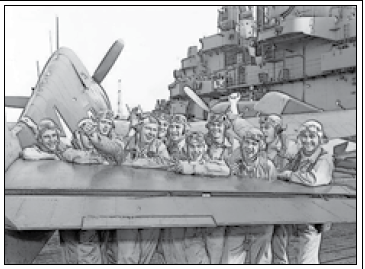
6/7/1942, Japanese Invade Aleutian Islands: The Japanese landed a force on the Aleutians to secure their northern flank from attack. During the war about 10,000 troops were garrisoned on the island.
6/13/1942, Operation Pastorius: Four German agents landed at Long Island, burying their sabotage gear near Amagansett Bay. They headed for NYC, but were discovered by a Coastguardsman. Not wanting to leave a corpse behind, one of the agents, George Dasch, bribed the guardsman to “forget he ever saw them.” The guardsman accepted the bribe but immediately reported them to the FBI.
The next day, Dasch himself called the FBI, attempting to surrender peacefully, but was dismissed as a crank caller. He eventually, uh, convinced them to arrest him, and informed on his fellow agents and the incoming second team. Eventually, all members of both teams were captured except for one, Werner Theil. The FBI cornered him in Bridgeport, Georgia, where Theil revealed his Talent abilities (of which even his fellow saboteurs were unaware). He killed 4 FBI agents and 2 local policemen before a sniper killed him.
George Dasch and Ernest Burger (another cooperator) received 30 years and life imprisonment, respectively, while the other surviving German agents were sentenced to death. The second landing of an Übermensch in the U.S. had ended in dismal failure.
6/13/1942, Roosevelt Creates OSS: President Roosevelt established the Office of Strategic Services, under the direction of the Joint Chiefs and led by Brigadier-General William Donovan. Although Army Intelligence and J. Edgar Hoover lobbied against the creation of an espionage department, Donovan’s background gained him an ally in Roosevelt. Donovan had led the Office of the Coordinator of Information, traveling the world to gain intelligence on the fascist powers and their activities. He filled the OSS with the smartest (and often most egotistical) men he could find, following the BSOE’s example in planning operations attempting to accomplish great things while risking few men.
After the Bridgeport standoff and the creation of the OSS, Hoover demanded Talents for the FBI. Telling the Joint Chiefs he would “not be held responsible” for Talent espionage on U.S. soil, the implied threat was that he would make the matter public if they forced his hand.
In response, President Roosevelt assigned 12 Talents to the FBI on August 1st. “Hoover’s Dozen” were all “Dud” Talents: one could read books without opening them; another could float an inch off the ground, but only with his eyes closed. Furious, Hoover gave up. However, the Talent agents turned out to be very effective at detecting and countering enemy Talents in the U.S. and South America.
6/18/1942, America Betrays the Constitution: Under the War Relocation Authority, the military began detaining and imprisoning Japanese Americans on the west coast of the United States to prevent “insurgency, sabotage, and assistance to the enemy.” Despite the fact that not a single act of espionage was ever attributed to a Japanese American, about 120,000 men, women, and children were imprisoned in concentration camps under armed guard. Many had their property confiscated or were forced to sell it at great loss. A Japanese American citizen named Gordon Hirabayashi took the matter to the Supreme Court, which ruled in favour of the WRA. An official apology for these cowardly actions would not come for more than 50 years.
Despite their poor treatment, over 18,500 Japanese Americans would volunteer for combat when a series of policy changes allowed for it in February 1943. The segregated 442nd Regimental Combat Team would become the most highly-decorated unit in U.S. history relative to its size and length of service. The 442nd also had the highest percentage of Talent manifestations of any unit in the war--almost every third member developed a Talent, and by the end of the war almost every surviving member was a Talent. (Due to segregation, the TOC did not reassign them.) Section 2 analysts pointed out that it was almost as if the 442nd was manifesting Talents because the population of Japan was not.
6/21/1942, Rommel Takes Tobruk: Rommel’s forces secured Tobruk, capturing more than 20,000 Commonwealth troops and earning the wily commander a promotion to Generalfeldmarschall.
During the attack, however, one Australian manifested a Talent which allowed he and 70 others to escape to Egypt. “Misfire” became Australia’s first Talent.
quote:
Misfire
1919-1981
Powers: Misfire subconsciously turned all enemy explosives within a 1,000 yard radius into sand. The power somehow distinguished friend from foe without Misfire’s conscious awareness. Gunpowder and other combustibles were turned into silt so that guns could not fire and grenades, shells, etc. could not detonate.
Background: Peter Fitzgerald joined the Australian Army right out of school, served in the British Expeditionary Force, and was one of the men evacuated from Dunkirk. He was briefly in North Africa before fighting at the Metaxas Line and in Crete. He eventually obtained a commission and returned to North Africa in June 1941. There, he was promoted to Captain and given his own command for a feat of bravery in which he single-handedly captured two Übermenschen.
Despite his storied career as a soldier, no one is sure exactly when Fitzgerald became a Talent--not even Fitzgerald himself. He discovered his Talent in June 1942 when his position was overrun by Panzers. He braced himself for an attack, but enemy tanks failed to fire and a few thrown grenades turned out to be duds. When he saw a strange aura around one of 3 Germans sent to take his position, he correctly guessed that he was a Talent.
Fitzgerald immediately launched a counterattack, and with the help of his power, he and 70 men pushed through the German lines and used captured vehicles to escape back to Allied forces near the Halfaya pass.
Fitzgerald was reassigned to the British X Corps and fought in the invasion of Italy as well as Operation Market Garden, including the battle wherein the Indestructible Man executed the Nazi Krieg.
After years of fighting, Fitzgerald retired to Sydney as a beloved national hero. He cashed in on his fame, partnering with a real-estate magnate. At the time of his death from natural causes in 1981, he owned 20 hotels across three countries and was worth over $500 million.
6/29/1942, Mussolini Prepares for Victory: Italian dictator Benito Mussolini flew into Derna, Libya, in anticipation of leading an Axis victory parade through Cairo. However, he found that Rommel’s lines were thinly spread and ill-supplied, and the British had fortified themselves for a last stand at El Alamein. Disappointed, he returned to Italy.
7/13/1942, Dead Man’s Hand: In occupied Paris, the mutilated bodies of 4 SS officers were found in a private room at the Petit Casino club. All had been stabbed to death, with occult symbols carved into their faces. The “dead man’s hand” was laid out on the table.
Although official policy still denied the existence of non-German parahumans, anti-Talent measures at various levels of the German military had been going on since the summer of 1941. Later that year, the Gestapo set a trap for L’Invocateur, sending several Übermenschen to parade around Paris playing the part of obnoxious (but ordinary) SS officers. When three of them turned up dead, the Gestapo abandoned their plan.
When asked in a postwar interview how he had done it, L’Invocateur quipped “The invisibility is luck. My true Talent is with the knife.”
7/13/1942, Hitler Splits His Forces: Personally commanding the Eastern Front, Hitler called for a simultaneous push on Stalingrad and the oil-rich fields of the Caucasus. The dual offensive was far beyond the capabilities of the Heer, and everyone but Hitler could see that the gap between the Armies would be quickly exploited.
Even worse, Hitler reassigned the 4th Panzer Army to the southern force, slowing their advance as they regrouped. Hitler realized his mistake and countermanded the order, but this only robbed the offensive of its momentum completely, giving the Soviets time to muster a large defense force.
7/22/1942, the Clearing of the Warsaw Ghetto: Under Himmler’s orders, 300,000 Jews were transported from the Warsaw Ghetto to the Treblinka extermination camp, where they were massacred by gassing or starvation.
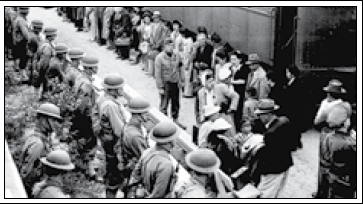
Next time on Godlike: Guadalcanal, Operation Torch, Stalingrad. Lots of war stuff. Not to mention the world’s first Hyperbrain, the Golem of the Ghetto, and Stalin’s beauty treatments.
Godlike, Chapter V, Part VI
Original SA post
Godlike, Chapter V, Part VI
The last update contained such historic events as the Battle of Midway, the U.S. forming the Office of Strategic Services and the Talent Operations Command, the internment of Japanese-Americans, and the implementation of the Nazis’ “final solution.” Not to mention continuing Axis gains in Southeast Asia and North Africa.
7/22/1942, Japanese Land on New Guinea: Major-General Horii’s forces landed at Buna, hoping to use the island as a stepping-stone for an invasion of Australia. Many Australian troops were gone, fighting in North Africa. Those who remained at the southern port of Moresby knew they had to hold the city, lest the Japanese bomb Australia and cut it off from support.
Horii’s plan was daring and risky; he intended to move his troops down muddy tracks and across the sharp peaks of the Owen Stanley mountains.
7/31/1942, Wisconsin v. Taft: A civilian named Louis Taft caused numerous traffic accidents one May morning, when he used his recently discovered Talent powers to levitate himself to work. He refused to stop for a police officer, and was arrested on charges of disturbing the peace. The case went to the Supreme Court of Wisconsin, which ruled that it was illegal to use Talent powers in public without special dispensation from local, state, or federal authority, or in a life-or-death situation. Similar laws were soon enacted in every U.S. state.
8/7/1942, the Battle of Guadalcanal: The 1st Marine Division landed on Guadalcanal and Tulagi in the Solomon Islands, beginning a campaign that would last into the following February. Their mission was to prevent a Japanese “island-hopping” invasion of New Zealand. The Marines captured the airfield after intense fighting, but Japan was able to bring in numerous reinforcements and attack American supply ships in “Iron Bottom Sound” off the coast. The Marines held the line, fighting off wave after wave of enemy soldiers.
8/9/1942, the Battle of Savo Island: Japanese cruisers attacked an Australian/American force off Guadalcanal, destroying 5 cruisers. U.S. Marines on the island were now cut off from resupply.
Franklin Wolensky, a Navy ensign, was the sole survivor of the USS Barton. He escaped all the way to the 1st Marine Division at the renamed Henderson Field--by walking on water through Japanese territory.
quote:
Super Swabby
1916-1971
Powers: Super Swabby could create an invisible and invincible sphere around himself or others. He could create his “Bubble” anywhere in sight range, but only one at a time. Anyone inside a Wolensky Bubble was virtually immune to harm. Large explosions would send the Bubble flying off at high speed, ricocheting off hard surfaces.
Background: Franklin Wolensky was an Ensign on the USS Barton when it was struck by a Japanese attack north of Guadalcanal. An exploding ammo crate blew him into the water--where he found he was bruised and aching, but otherwise floating safely above the water. He “walked” his Bubble to the shore, then kept walking until he reached a Marine position.
“Hershey bar!” they called out. “Yes, please,” he replied. He’d passed the test.
Wolensky refused to evacuate Guadalcanal, even after receiving direct orders from Vice Admiral Ghormley. “God gave me this, and I’ve got to make it right. Court-martial me if you want,” he wrote back.
The Marines on Guadalcanal gave Wolensky the names “Super Swabby” and “Pinball” (for the way his Bubbles responded to explosions). As other Talents manifested during the campaign, he became their unofficial leader. He was wounded when he sacrificed his own Bubble to shield two Marines in a machinegun post, taking two bullets to the left arm. For this, he was finally evacuated to Pearl Harbor--and instead of a court-martial, he received a promotion to Captain and the Distinguished Service Medal.
Wolensky recovered and kept on fighting, in the Philippines and Iwo Jima. After the war, he soon married a widow and moved to her family home in Minnesota. He died of heart disease in 1971.
8/12/1942, Stalin and Churchill Meet: Escorted by Talent bodyguards, PM Churchill traveled to Moscow to meet Stalin for the first time. The unstoppable force of Stalin’s personality met an immovable object in Churchill, and the meeting did not go well. An argument ensued over the delay of a second front in Europe. Churchill’s Talent bodyguards were also made nervous by the presence of a Talent among Stalin’s entourage. Soviet handlers answered questions about the “adjutant” with smiles and prevarications. The conference was cut short; Churchill returned to Britain on the 20th.
quote:
Cobaka
????-????
The Soviet Talent known only as Cobaka (“Dog”) was discovered by Special Directive One in early 1942; soon, he was Stalin’s constant companion. Stalin’s staff observed that he seemed to trust the man and often confided in him. His powers remained a mystery throughout the war, even to Stalin’s inner circle. Rumours said that he could control minds, kill with a thought, or create force fields. One SSO study even implied that Cobaka was the power behind the throne in the Soviet Union.
The truth did not come out until Soviet Talent files were declassified at the end of the Cold War. Cobaka could tell, with absolute certainty, whether or not a spoken or written statement was true. His power did not predict the future, and didn’t apply to opinions or speculations--only things the speaker/writer knew were true or false.
Cobaka’s Talent helped Stalin retain power, and to assure the good intentions of the Allies. Cobaka was kept in line by Stalin’s threats (which he knew to be genuine), but Stalin had him tortured regularly, just to be sure. In the summer of 1949, Cobaka abruptly vanishes from the public record--present for one party meeting and gone the next. No one knows what happened to Stalin’s Dog.
8/12/1942, Montgomery Takes Command: Churchill sacked General Neil Ritchie, commander of the British 8th Army in North Africa, and replaced him with General Bernard Montgomery. Despite a reputation for tactlessness and egotism, Montgomery relied on careful planning to achieve victory, and prepared for a defense of El Alamein.
8/13/1942, TOG 1’s First Mission: Talent Operations Group 1 made a secret night landing in Zeebrugge, Belgium. Their mission was to destroy an oil plant, two dry-docks, and a rail line. The nine-man group split into two teams. Lt. Roger “Crazy Eight” Yelt led the attack on the docks and rail line, easily defeating the few guards. (Nine were captured by Cpl. Michael “Shell-Game” Messner, who teleported them to a stockade in Massachusetts.)
Meanwhile, the Indestructible Man led an assault on the oil plant which met fierce resistance. An unknown German Talent killed Sgt. Kevin “Max” Harris, and the group was soon surrounded. Yelt's team heard the firefight and arrived to bail them out. The plant’s main tank was ignited, causing a huge explosion and raining down debris that set houses on fire for three blocks around.
All the remaining members of TOG 1 escaped to the landing craft. At the cost of one Talent, TOG 1 had destroyed a million dollars of equipment that would take years to replace. The mission was a big success.
8/14/1942, Eisenhower Leads Operation Torch: General Dwight Eisenhower was chosen to lead the British/American invasion of Vichy French Africa. Eisenhower was intelligent and persistent, but also moral, obedient to his superiors, and demanding cooperation among the Allies first and foremost, traits which commanded wide respect.
Eisenhower’s plan was simple: Land 110,000 troops in Morocco and Algeria to squeeze Rommel between them and the British 8th.
8/17/1942, Raid on Makin Island: This Marine raid on Japanese territory in the Gilbert islands was meant to distract and divert Japanese reinforcements from Guadalcanal. Lt. Col. Evans Carlson led a force of 222 Marines that included President Roosevelt’s son, Major James Roosevelt. A covert submarine landing went well until an accidental rifle discharge alerted the Japanese. After a day of intense fighting, “Carlson’s Raiders” had destroyed an ammo and fuel dump and captured vital Japanese intelligence. With only 30 casualties, the raid was considered a success.
8/19/1942, the Push to Stalingrad: General Friedrich von Paulus’ German 6th Army finally broke through Soviet lines surrounding Stalingrad. But then they came to a halt, exhausted and out of supplies, facing a huge Soviet defense. But when supplies arrived they pushed forward, and by August 23rd they were fighting within the city limits of Stalingrad.
Gruppe Weiss was also transferred to von Paulus’ command. “White Group” was a highly-trained, 200-man Übermenschen unit, including Feuerzauber, the second German Talent. It was the most powerful Nazi fighting force ever known. Over the course of the war, 453 Nazi parahumans would fight for Gruppe Weiss. Only two of them survived the war on the Eastern Front--by deserting.
8/19/1942, Disaster at Dieppe and the Ghost of the 14th: As a test-run for a full invasion of Europe, a large Allied force landed at the French port of Dieppe across the English Channel. It was a disaster from the start.
Composed of 5,000 Canadians, 1,000 British, and 60 U.S. Army rangers, their goal was to make a covert night landing and secure the port. (No Talents were part of the assault; it was believed their presence would lead to Übermenschen mobilization.) German ships discovered the main landing force and bombarded them with machineguns and coastal artillery. Many Allied troops died before they landed; many of those who did never left the beach.
Casualties were already mounting when the British commander called for retreat; by then, the Germans had deployed 7 Übermenschen. The Nazi parahumans tore through regular troops and the few tanks that had made it ashore, searching for officers to capture. The remains of the 14th Canadian Tank Battalion protected their mortally wounded commander, Major Graham Tunney. When the Übermensch Tristan killed 9 of them to get to him, something happened when he grabbed Tunney by the collar: Tristan died with a look of horror on his face, and Tunney stood up. Canada’s first Talent, the Ghost of the Fourteenth, had been born.
quote:
The Ghost of the Fourteenth
1889-1945?
Powers: The extent of the Ghost’s powers were never well understood. He seemed to be immune to nearly all attacks (including Talent powers). He could teleport vast distances, walk through walls, and kill with a touch. He continued to live despite fatal wounds that never healed. He was the first “mad Talent” of the Allied forces.
Background: Graham Tunney was a major in the Canadian Army, a career military man and a veteran of WWI. Between the wars, he studied new tactics in coordinating infantry, artillery, and tanks. After being called back into service, he served with the British Expeditionary Force in France.
Tunney was assigned to command the new 14th Canadian Tank Battalion, and spent most of 1941 training his troops in Scotland. The following year, he and his men were eager to join the invasion of German-occupied France. When the 14th Battalion landed at Dieppe, Tunney was raked by a German machinegun before his feet hit the sand.
Tunney’s men bravely defended their dying commander until the Nazi parahumans arrived. Tristan killed 9 of Tunney’s men, casting them aside to get to him. But when he grabbed Tunney by the collar, he dropped dead with a look of terror on his face. Tunney stood up, and the Ghost of the Fourteenth was born. He single-handedly chased the rest of the Übermenschen from the beach, later destroying two coastal guns and four machinegun nests, covering the Allies’ escape.
Tunney had the distinction of being the first Canadian Talent--and the first “mad Talent” of the Allied forces. At first, British intelligence eagerly received the reports of his immunity to the German Talents. Later, they realized that his “death” had warped his mind, and his Talent with it. Like the Soviet Baba Yaga, he was beyond the rules of other Talents, but beyond sanity as well.
The Ghost of the Fourteenth appeared sporadically across Europe, joining Allied troops and fighting in random battles. He often appeared to assist the 14th Canadian Tank Battalion when it needed him most. He never spoke and refused to follow orders, but would “fall in” alongside his fellow soldiers and fight with them. He did this despite missing half his face, with a ¾” hole blown through his chest.
Only later did the Allies realize that the Ghost’s appearances were not as random as they had believed: he was hunting the 6 surviving Übermenschen from the raid on Dieppe. After Obersturmbannführer Franz “Rot” Gille died in 1945, the Ghost of the Fourteenth was never seen again.
4/23/1942, Italy Wins: In the last successful cavalry charge against modern troops, 600 mounted troops of the 8th Italian Army routed the 3rd Soviet Division, north of Stalingrad. It was one of few successful uses of Italian forces in Russia.
8/23/1942, Battle of the Eastern Solomons: The Japanese Navy sent a large task force to secure the Solomon Island sealanes, comprised of 3 carriers, 3 light carriers, 7 cruisers, 22 destroyers, and transports carrying 7,500 Marines. The American force was massively outgunned.
However, American forces spotted the Japanese before they could be lured into a battle in the Coral Sea. U.S. aircraft sunk the Ryujo and fought off a counterattack. Over two days of fighting, the Japanese also lost a destroyer, a transport, and 61 aircraft while U.S. forces only suffered heavy damage to the Enterprise. It was another surprising blow to the “invincible” Japanese Navy.
The Allied campaigns in Guadalcanal and the Solomon Islands benefited greatly from the aid of the Coastwatchers, a group of civilian volunteers in Australia and New Zealand who kept watch for Japanese ships. They lived along the coastal wilderness, reporting their sightings on ship and troop movements. In addition to the U.S. cracking the Japanese naval code, they were a valuable component of the Allied war effort in the Pacific.
8/23/1942, Stalingrad Bombed: The Luftwaffe bombed the city to “soften them up” for the coming invasion. Though thousands died, it catalyzed resistance unlike the Nazis had ever seen.
8/30/1942, the Desert Fox Runs: Low on supplies, Generalfeldmarschall Rommel made a desperate grab for the Alam Halfa Ridge behind British lines in Egypt. His “surprise attack” was a trap laid by Montgomery, and Rommel’s forces walked into minefields and artillery barrages. Rommel was forced to withdraw.
9/12/1942, the Golem of Warsaw: 400,000 Polish Jews had been imprisoned in the 3.5 square mile Ghetto in Warsaw. Since July, 340,000 had been sent to the Treblinka death camp, leaving the survivors to starve. On September 2nd, SS Hauptscharführer Alfred Meier, the officer in charge of Jewish deportation, was ripped in half by a “creature” while he ate dinner with friends in a local tavern. Witnesses described the “beast” as man-shaped, made of clay, with a symbol on its forehead. Every Jew who heard the story recognized the mythical golem, but remained silent.
Investigations were inconclusive, though it’s widely accepted that the Golem was created by a Talent. The creature was never seen again. Some even theorize that Meier himself manifested a Talent that he used to kill himself out of guilt. A more likely explanation is that the Golem was created by a Jewish Talent who was, even then, already on their way to Treblinka.
9/13/1942, Battle of Bloody Ridge: Two U.S. Marine divisions in Guadalcanal repulsed a huge Japanese Marine force, inflicting almost 700 casualties. They were assisted by 7 Talents led by Flank “Super Swabby” Wolensky. Wolensky himself was wounded, and evacuated to Pearl Harbor for treatment.
9/16/1942, Attack on Port Moresby: Major-General Horii’s force crossed the treacherous Owen Stanley mountains and attacked Australian forces at Port Moseby. The 7th Australian Infantry repulsed them again and again, but the Japanese pressed forward. Disease and malnutrition claimed more casualties than combat. Australian morale received a boost when Marcus “Typhoon” Gladden became the first Australian Talent on New Guinea, using his powers to attack the Japanese from the rear with wind, rain, and hail.
On the 26th, the U.S. 32nd Infantry and Australian 9th Infantry landed and took the Japanese by surprise. The Japanese were forced to withdraw but the Australians attacked them at every turn. Typhoon killed 74 Japanese troops near Imita Ridge.
10/23/1942, the Battle of El Alamein: Starting with a radio blackout in western Egypt caused by the British Talent Damper, Allied forces launched an assault on Rommel’s lines. Seven Talent teams attacked behind enemy lines, targeting officers to disrupt the chain of command and capturing General Georg Stumme, the commander in charge while Rommel was on leave. Casualties on both sides were high, but the British were well-supplied and organized.
Soon an offensive called Operation Supercharge had pushed the Axis into Libya, with reinforcements coming from U.S. troops. Early November was the beginning of the end for the Axis in Africa.
10/26/1942, the Battle of Santa Cruz: Japan launched another large, four-carrier task force hoping to draw the U.S. Navy into a sea battle away from Guadalcanal. Two carrier groups led by Admiral Kinkaid met them at the Santa Cruz islands. The USS Hornet was destroyed, but the Japanese were forced to retreat after serious damage to two destroyers, two carriers, and two cruisers.
11/8/1942, Operation Torch: Eisenhower’s plan was simple: An American/British landing force would capture the Vichy French territories of Algeria, Morocco, and Tunisia, squeezing the Afrika Korps between them and the British 8th Army. (Due to poor relations between France and Britain, it would be a largely American force; even British officers wore American uniforms.)
Major General George Patton led 25,000 soldiers landing in Morocco. They hoped that French Admiral Jean Darlan would not offer resistance, but resist they did. Nonetheless, the inexperienced American force managed to surround Casablanca after fierce fighting.
Major General Lloyd Fredendall’s 39,000-strong task force failed to take the Algerian harbor of Oran, suffering heavy casualties, but British reinforcements helped capture Oran the next day. The Allies now had a road from Algeria to Casablanca to transport men and equipment.
Unfortunately, TOG 3 was lost in the operation. Sent as an advance squad, their mission was to capture a rail-line to Tunis at Bône. Due to poor intelligence, they expected about 200 German troops and a few light armored vehicles. Instead, they encountered the German 21st Armored Division, supported by Überkommandogruppe 12. The entire squad was dead by dawn.
Major General Charles Ryder launched an attack on the Vichy French capital of North Africa-Algiers from two landing points. Darlan declared a ceasefire, and soon made an official agreement with American General Mark Clark. In 8 days and with minimal losses, Operation Torch had snuffed out the Vichy French presence in North Africa and had secured territory just 80 miles from Tunis...and Rommel himself.
11/11/1942, the Fall of Vichy France: Axis forces invaded the territory of their own puppet government, fearing an invasion from Algeria and Morocco. Southern France had enjoyed limited autonomy under the Nazis, but no standing army of its own.
Admiral Darlan had defected to the Free French government, and disagreements among other French commanders led to the scuttling of the French fleet in the Toulon to prevent them from falling into German hands, rather than defecting to the Allies outright.
11/12/1942, U.S. Draft Expanded: Congress voted unanimously to extend the draft to 18 and 19-year-old men. They also fmandatory draft for all Talents was also discussed, but the House was divided on the issue.
11/13/1942, Allies Take Tobruk: The British 8th chased Rommel across the desert, forcing him to abandon Tobruk. Without Tobruk, Africa was lost. However, as he retreated, he set up multiple folding lines of defense that forced the British to fight every step of the way. German forces held the Mareth line while the British were forced to stop and wait for reinforcements.
11/19/1942, Soviet Offensive at Stalingrad: The 66th and 62nd Soviet Armies launched Operation Uranus, a huge counteroffensive against the German lines. They broke through the 4th Romanian Army and, within a week, and totally surrounded General Paulus’ forces. A quarter-million German troops were now trapped, cut off from resupply. Hitler refused Paulus’ request to attempt a breakout; Göring offered to resupply them from the air, a practical impossibility. Paulus settled in for the long Russian winter and prepared for he and his army to die a slow death.
12/2/1942, the Chicago Pile: Enrico Fermi and his team at the University of Chicago built the first atomic reactor pile. Fermi had the control rod removed, creating the first stable nuclear reaction. It was the first true step toward the atomic bomb.
12/9/1942, Relief at Guadalcanal: General Alexander Patch’s division arrived to relieve the 1st Marine Division. The Marines had held out for four months, losing over 1,000 men while inflicting 20,000 casualties on the Japanese.
On December 31st, Emperor Hirohito ordered Japanese forces to withdraw from the island. Attempts to retake it had led to a disastrous loss of men and ships.
On January 10th, the remaining Japanese fled Guadalcanal under cover of darkness. The retreat was so secretive that most Marines didn’t realize they had evacuated until weeks of patrols failed to sight any Japanese forces. When flyovers confirmed the evacuation, Admiral Halsey declared “We’ve got the bastards licked!”
12/24/1942, Darlan Assassinated: A French resistance fighter named Fernand de La Chappele shot Admiral Darlan in Algiers. The assassin was tried, sentenced, and executed within two days. Darlan’s successor, General Giraud, refused to postpone the execution, leaving the young man’s motives mysterious. As a monarchist, anti-fascist, and supporter of de Gaulle, he may have shared de Gaulle’s disgust with a Vichy official still commanding a Vichy state. His conviction was overturned in 1945.
1/2/1943, Allies Capture Buna, Lose Typhoon: General MacArthur’s forces finally captured Buna, New Guinea, after a month-long battle that destroyed an entire Japanese garrison, leaving less than 40 troops alive to surrender. The Empire of Japan had now lost its southernmost port.
Ten days later, the 7th Australian Infantry pushed General Horii’s forces off the Kokoda Trail. The Talent Typhoon used a localized storm to pin down Japanese troops as they were hit with mortars and machineguns, killing 600 men in a single attack.
A Japanese soldier “playing dead” sat up and shot Typhoon in the back as he surveyed the destruction. For two weeks, the island was hit by unusual storms. Australian flags hung at half-mast for a month, and Imita Ridge was later renamed Typhoon Ridge in his honour.
1/12/1943, Misha, the First Hyperbrain: Just 40 miles from the Moscow front, Special Directive One discovered a 12-year-old boy with incredible intelligence. Analysis soon revealed young Misha to be a Talent, the world’s first Hyperbrain.
Misha worked as an assistant under the command of General Ivan Konev. His job was to track materiel for the 31st Soviet Army Group. Soon he had dispensed with lists altogether and was correcting field commanders in their calculations of troop strengths. As Misha’s strategic predictions came true with startling accuracy, Konev realized the boy’s potential.
Special Directive One moved him to a training facility in the Urals, where he absorbed the entire bureaucracy of the war-torn Soviet Union in 3 weeks. He became a living filing system for the eastern half of the nation, his incredible mind able to track men and materiel, and manage the supplies to maintain them, down to the last bullet. In his spare time, he learned languages, literature, and physics, and compiled a definitive history of Russia.
In light of his abilities, everyone forgot that Misha was still a young boy. He began suffering sudden manic-depressive episodes, brought on when certain information synergized within his mind. Periods of intense productivity gave way to long depressions when, for example, he suddenly calculated a 55% probability that over 21 million Russians would die in the war. The more he knew, the worse he got.
Fortunately, Russian commanders handled Misha much more delicately than many other Severch Loodi. They realized that if Misha self-destructed, he would take their entire organizational structure with him. Special Directive One desperately searched for more Hyperbrains, and eventually assembled a group of 5 who were trained to share the information load with Misha. The plan worked and Misha returned to normal function, though his strategic value was limited as his handlers limited his access to information about the war.
As the first Hyperbrain, Misha is also a prime case study in why Hyperbrains did not alter the course of the war in the ways you might expect. Their impact on the war was significant, but subtle. Most worked in the fields of planning and logistics.
Hyperbrains could, in fact, make all the calculations necessary to build superweapons. But there are two problems with this.
First, it is simply beneath them. Hyperbrains live largely in an internal world where they consider theoretical questions far beyond any practical bent. Although some do work on scientific research projects, they often find them too petty to be worth their time, and struggle to communicate their ideas to “normal” genius-level intellects. Even if a Hyperbrain agreed to build a superweapon, the project would be fraught with confusion.
Second, and more importantly, hyper-intelligence includes hyper-empathy. A Hyperbrain can not only devise how to build an atomic bomb, they can envision, in vivid detail, every single human life that will be destroyed by it, from the first time they hear “I love you” to their last dying scream. They can also predict with great accuracy such a weapon’s effect on history, culture, and economy. Nearly all Hyperbrains are pacifists.
As a result, the only military outlet for their Talent was in the staggering logistics of mobilizing entire nations to warfare--something that was happening anyway, and out of their control. Hyperbrains became strategic supercomputers, calculating variables involved in troop movements, supply chains, and the economy at home. They weren’t always right, but their efforts were being countered by Hyperbrains on the other side. Hyperbrains’ primary impact on WWII was better troop deployment and resupply, and allowing instant answers to logistical questions well before militaries began using computers. But to people outside relevant fields, these changes were hard to see.
1/12/1943, Rush’n’Attack: The Red Army consolidated its forces surrounding the Germans, who were now reduced to skeletons in rags. The 6th Army required 600 tons of airdropped supplies per day, and the Luftwaffe was dropping 100 tons per day when it flew at all. Even Übermenschen forces couldn’t move supplies past the Red Army; the need was too great, and the Russian Talents too vigilant. The remaining 100,000 Germans trapped in Stalingrad froze, starved, and died. Those who could still fight knew that it was pointless.
1/14/1943, a Rendezvous at Casablanca: Churchill and Roosevelt met at a secret conference in Casablanca to discuss the progress of the war, protected by 36 Talents. Generals Charles de Gaulle and Henri-Honoré Giraud also attended, protected by the French Talent Le Mur (“The Wall”). Stalin declined to attend, but sent two Talent advisors.
Roosevelt agreed with Churchill’s plan to launch the invasion of Europe from Sicily, followed by a cross-Channel assault on the mainland. On the 27th, the Allies made their demands public: they would accept no less than total surrender from Japan, Germany, and Italy.
1/15/1943, Tripoli Falls: The British 8th Army seized Tripoli, capital of Libya, as German forces retreated to the Mareth line in Tunisia. There was little hope left for the Afrika Korps.
1/18/1943, the Battle of the Warsaw Ghetto: After a brief inspection, Himmler ordered the SS to deport the remaining Jews in the Warsaw ghetto and demolish it. The SS expected no resistance from the Jews, who were by now living on smuggled food and sporadic deliveries of rotten rations. But faced with the prospect of gassing or starvation, many chose to fight.
An initial attack by the Warsaw residents, using makeshift weapons, killed 40 Germans. The SS retaliated with an attack that killed over a thousand, but were forced to withdraw due to snipers. With nothing left to lose, the Jews fought on through weeks of vicious street fighting as the Ghetto became a fortress.
German Übermenschen were brought in to break their will, but this only prompted the Jewish Talents to finally reveal their presence. Eleven Nephilim killed Der Panzer and attacked the German position, inflicting heavy casualties before most of their number were killed. Their attack allowed over 300 Jews to escape the Ghetto into the city. Though only 50 of them would survive the war, the attack was a huge morale boost. Stunned, the Schutzstaffel fell back and prepared for another assault.
Rosen’s 26 posted:
Meyer Rosen was only 16 when he became a Nephilim in the Warsaw Ghetto. He could teleport great distances in random directions, and used his power to smuggle food back into the Ghetto. HIs power was fatiguing, causing migraines, and wouldn’t work without food and clean water. During the uprising, he smuggled 26 children out of the Ghetto, all of whom survived. His laft act was to teleport his 3 siblings to Switzerland. He died of a brain hemorrhage 4 days later.
Untitled post
Original SA post 1/19/1943, Die Hexe Killed: A German sniper shot and killed Antonia Ilescu near Walchev, Romania. Known to the Germans as Die Hexe (“The Witch”), Ilescu was the world’s first female Talent and a Romanian partisan who killed dozens of Nazi soldiers and destroyed tons of equipment. The Germans had no idea they had killed her, and the hunt for her continued.1/22/1943, Japanese Lose New Guinea: Allied forces pushed the Japanese off the Bulldog track, cutting them off from reinforcement. They dug in and prepared to fight to the death. Japanese soldiers dying of disease manned pillboxes made out of logs and reinforced with the rotting corpses of their comrades. They held off the Allies for another two months before the pillboxes were finally cleared.
1/28/1943, Feuerzauber Dies: The Übermensch Feuerzauber and his entire battalion died in an attack on an oil storage facility held by the Soviet 62nd Army. Shelling caused the refinery to explode. Feuerzauber was immune to flame, but the fire was so intense that it consumed all oxygen in the area, and he died by asphyxiation along with his men.
2/2/1943, Siege of Stalingrad Ends: Hitler had forbidden General von Paulus to surrender, gave him a promotion to Generalfeldmarschall, and reminded him that no German field marshall had ever been captured alive. Nonetheless, Paulus surrendered to the Soviets. By this point his 300,000 trapped soldiers had been reduced to 93,000. Few of the surrendering soldiers would survive Russian imprisonment to see their families again.
Four Übermenschen from Gruppe Weiss were among those captured, and were hung before cheering crowds. Their bodies were remanded to Special Directive One scientists for study.
2/8/1943, Soviets Retake Kursk: The Soviets reclaimed the shattered city of Kursk after 2 years of German occupation, but there was little to retake. Most of the population had been murdered or taken as slave labour, and buildings lay in ruins.
2/10/1943, Zed: During a demonstration of Talents for Allied VIPs, Major Peter Cesay manifested a heretofore unseen Talent when he volunteered to be teleported. The Polish Talent using Cesay as a test subject found his power simply wouldn’t work. Other Talents present identified him as a Talent, too, but didn’t feel the usual “resistance” when he stopped them from using their Talents...they just failed. This went against everything known about the Talent phenomenon, and the SSO began studying him immediately. They codenamed him Zed, or Z.
After Cesay’s appearance, many other Talents were found with similar powers (many of whom thought they were the only Zed). Zed didn’t affect many mental powers, and in the end, most Zeds were reserved for special duty (usually bodyguarding VIPs or as forward defense). The Zed Talent was a factor in warfare, but Zed himself was not the magic bullet the SSO initially hoped.
quote:
Zed
1910-1944
Powers: Zed projected forces that countered other Talents’ attempts to use their own powers. For example, he would cause a flying Talent to fall by pressing them down, or counteract a hyperstrong Talent by making the object they lifted much heavier. Zed could counter powers that weren’t a matter of simple physical forces (such as teleportation and invisibility), but he could only counter powers with noticeable physical effects.
Background: Peter Cesay was a British intelligence officer who tracked photographs and radio traffic to determine the deployment of troops, vehicles, and equipment. After the raid on Dieppe, he was tasked with tracking enemy Talents. Cesay excelled in his new position, coordinating intelligence reports, newspapers, and Nazi propaganda to determine where the Übermenschen lived and trained. He accurately drew up a command structure of the SS Überkommandogruppen and predicted its exponential growth, and profiled German Talent commanders and their powers.
Cesay’s report impressed Churchill, and he was rewarded with a position as liaison between Whitechapel and the SSO. The War Office usually considered his opinions on Talent performance in combat more realistic than those made by SSO scientists. He discovered his power while working with Talents demonstrating their own powers for the SSO, and was quickly put through months of intense training so that he could train BSOE and American TOG groups for the invasion of Europe. He used his powers to whip Talents into fighting shape, forcing them to rely on training when he caused their powers to fail.
Though he asked to be part of the Normandy invasion, he was assigned to the landing force at Anzio. He used his powers to disable 15 German Talents and personally captured two.
The next day, Cesay was killed when Kesselring’s forces shelled the beachhead.
[b2/15/1943, Kharkov is Liberated][/b]: The Red Army moved on Kharkov to cut off German forces in the Ukraine. Seeing the thread, Hitler ordered Lt. General Paul Hausser’s II SS Korps to defend Kharkov “at all human cost.” But Hausser ordered his men to withdraw, declining to get his troops slaughtered in a hopeless defense.
However, the detachment from Überkommandogruppe 4 rebelled. Felix “ Skorpion” Höttl executed Hausser and 12 of his officers for defying Hitler’s direct orders,and the Übermenschen took command. Two days later, the 6th Soviet Army annihilated the entire Korps.
2/16/1943, the White Rose: The “White Rose” group at the University of Munich was composed of disillusioned soldiers, students, and scholars opposed to Hitler. They met in secret and circulated propaganda leaflets. In a bold act, the young leaders of the movement--two siblings, Hans and Sophie Scholl--dropped leaflets from a university building urging the nation’s youth to depose Hitler. The Gestapo captured the Scholls and 100 other dissidents, and the Scholls were executed by beheading.
2/18/1943, the Chindits: This long-range assault force, composed of Gurkha, Indian, and British troops, entered the Burmese jungle to destroy Japanese infrastructure. They ambushed troops, demolished rail lines and bridges, and spied on the Japanese command. Churchill was an avid supporter and authorized their Leader, Brigadier Orde WIngate, to form two larger units.
2/18/1943, Soviet Overreach: Though stunned by the loss of the German 6th Army, Generalfeldmarschall Erich von Manstein saw that the Red Army’s lines were overextended, and launched one of the last successful German offensives on the Eastern Front. His attacks cut off 9,000 Soviet soldiers and killed 25,000, including 77 Soviet Talents.
12/21/1943, Operation Cartwheel: General MacArthur prepared for an “island-hopping” campaign from New Guinea to Japan. Operation Cartwheel would identify Japanese islands and, instead of taking them, would surround and cut them off. Cartwheel began with the invasion of the Russell Islands, the first step toward Okinawa and later Japan.
MacArthur refused offers from multiple branches to assign Talents to his command. “No one man is better than the Army, no matter what he can do.”
2/26/1943, The Professor is Discovered: An amateur inventor from Tacoma, Washington became an instant celebrity when he publicly demonstrated his “Pneumo-Ray,” a rifle that could generate hurricane force winds. Wendell Greene was first thought to be America’s first Hyperbrain, but in fact, his devices were just focuses for his Talent. He was of average intelligence, but his Talent allowed him to turn flashy junk into the stuff of comic books and TV serials.
Journalist Robert Graves coined the term “Goldberg Science” in a New York Times article in 1943. Understanding the nature of “The Professor’s” powers, he explained why such “Rube Goldberg” science wouldn’t win the war. Like Zeds, Goldberg Scientists would become increasingly common in many countries. But despite their amazing devices, they did not change the course of the war.
quote:
The Professor
1923-1999
Powers: Greene could create machines that violated scientific laws and seemed to be hundreds of years beyond modern science. But in fact, the machines were just props that acted as a focus for his Talent.
Background: Wendell Greene was an amateur inventor obsessed with science and science fiction from a young age. Before he had graduated high school, he’d burned down his uncle’s barn with a “heat ray” (merely a modified egg lamp) and broken his leg while testing a homemade hot air balloon.
Nonetheless, Greene studied to become a scientist and was accepted to the University of Washington, for which his parents had saved for many years. But news of the attack on Pearl Harbour shifted his focus. He became a sullen recluse, secluding himself and spending his college money on supplies to develop “weapons for the army.”
After two years of failure, Greene produced a “pneumo-ray” that generated 200mph winds. He and his ecstatic parents demonstrated the device to Army officers, and soon Greene was being studied by Section 2. They found that his Talent was active when he was using and building his devices, and that the devices didn’t work in his absence. They classified his powers as “Talent science,” and the TOC assigned him to the Army Air Corps.
Greene became an accomplished combat pilot, flying dozens of sorties and downing over 20 enemy planes during the war. He flew a modified P-47 Thunderbolt armed with his devices, which he named “Nemo.” (The Nemo now hangs in a Seattle museum, still “armed” with its harmless superweapons.)
Near the end of the war, Greene produced a device that would keep him famous for the rest of the century: the P-Engine. It was an almost perpetual motion engine, providing power without fuel. Most importantly the P-Engines worked even when Green wasn’t present, although they would eventually break down.
After the war, Greene spent 9 years “perfecting” the “design” of the P-Engine, and produced a Mark II P-Engine that ran indefinitely. For 20 more years he produced P-Engines for corporations and the government, and became the CEO and sole employee of a company worth over a billion dollars.
Until his death, no one realized that Greene’s obsessions had changed the nature of his Talent. His P-Engines ran perfectly with or without his presence, but he had focused his powers until he could only build P-Engines. When Wendell Greene died of colon cancer in 1999, the world’s 149 P-Engines all stopped working.
2/28/1943, the Plant at Norsk: Aesgir led 9 Norwegian commandos through “Valhalla” to attack a Nazi heavy water plant in Norsk, Norway. The German atomic bomb program was already years behind the Allies, but when Aesgir and his men destroyed the station, those already slim hopes were destroyed.
3/2/1943, the Battle of the Bismarck Sea: Australian and U.S. forces destroyed 8 Japanese destroyers and transports traveling to New Guinea. More than 3,000 Japanese died in the attack, and no more reinforcements were sent to New Guinea.
3/5/1943, the RAF Hits Back: The British Royal Air Force launched a huge bomber offensive on the Ruhr industrial region of Germany. Three hundred and sixty nine aircraft dropped 2-ton “blockbuster” bombs on the city of Essen, disabling the Krupp Steel Works.
3/6/1943, Last Gasp of the Desert Fox: Rommel’s thinly-spread Afrika Korps made a last-ditch attack on Allied lines in Tunisia. After heavy losses, Rommel was recalled to Germany. The Nazis had lost the war in Africa.
3/13/1943, Der Auge Sees All: Der Auge, the Nazi precog who had foreseen the St. Nazaire raid, awoke one night in Berlin after a vivid dream of an assassination attempt on Hitler. Thirty minutes later, 14 high-ranking Heer officers had been captured and sentenced to death. A 12-pound bomb was discovered in Hitler’s transport craft, wired to explode shortly after takeoff.
Der Auge was awarded the Iron Cross...after the Gestapo had spent ten days interrogating him and torturing him with beatings and electricity. They were sure he had been a fellow conspirator, turning on his accomplices to gain Hitler’s favour. He was released and returned to SS duty, but his loyalty to the regime was never the same.
3/13/1943, Yama, God of Death: The first Indian Talent appeared in Kanglatongbi near the border with Burma. A young refugee, sick with fever, collapsed in the street. So many were starving that he was just one of many bodies filling the street. Nine days later, locals clearing the bloated corpses away found the young man still breathing, but with sky-blue skin and milky-white eyes. When they gave him water he sat up and smiled, speaking to them in a deep, perfect voice. “I am returned. Lord Yama, God of Death. Do you not recognize your own father?”
quote:
Lord Yama, God of Death
????-
Powers: Yama can kill people by looking at them, and is parahumanly strong, fast, and tough. He has not aged and may be immortal. He can heal grievous injury to himself and others. He possesses superhuman charisma that compels others to obey him, and allows his worshipful followers to act without fear and feel no pain.
Background: Nothing is known about the self-styled Lord Yama before he manifested his Talent in Kanglantongbi in 1943. Apparently a refugee dying of fever, his rescuers found him with sky-blue skin and milk-white eyes, claiming to be the Hindu god of death.
Yama quickly built a cult around himself, centered on a keep in Kanglantongbi. British colonial attempts to destroy the cult ended in disaster--the 9th Indian Division was defeated by Yama’s followers, armed with little more than sticks and stones. Yama commented on the battle with jovial callousness: “Many will travel my path to the land of the dead today, but only my followers will find their way back.” Blessed by Yama in mass prayer meetings, his followers fought with no regard for human life, even their own.
Lord Yama eventually made a pact with Field Marshall Wavell to fight the Japanese in exchange for the recognition of an independent nation. He sent 65,000 followers to reinforce British/Indian positions at the Arakan pass.
When the Japanese 15th Infantry Division made the mistake of passing through Kanglantongbi during their brief invasion in 1944, not a single Japanese soldier survived the excursion. Thereafter, Yama’s troops went into battle wearing necklaces of Japanese ears, fingers, and teeth until the end of the war. As before, most did not even have guns, fighting with swords and knives.
The U.S. and Britain recognized the nation of Assam in 1946. Yama remains largely aloof from international politics, his stock response to any political question is “All men are the same in my Kingdom.”
When the Indian government refused to recognize Assam in 1960, Yama dismissed offers of alliance from the Soviet Union, and expelled its ambassador when he admitted he did not believe in God. “But I am a god,” Yama said. He did accept President Kennedy’s offer to mediate the 1962 treaty which established a peaceful border with India.
Assam joined NATO in 1969 and allowed American bases to be built there. It has become wealthy and prosperous, and extremely controversial. Because its people work only for the glory of Lord Yama, he has made deals with multinational manufacturers that bring in immense income. Critics call Assam the world’s largest cult, but its residents call it a paradise; they are well fed and cared for--and feel no pain. Assam maintains an open border for any who want to immigrate, and over a million have done so since 1965, many of them terminally ill. All of Lord Yama’s followers echo his message: “Pain is an illusion. Only Death makes men whole.”
3/14/1943, the Germans Strike Back: Von Manstein’s forces managed to encircle and destroy the 3rd Soviet Army, killing over 23,000 and capturing 9,000. His offensive saved the Axis front in Russia...for a time.
The next day, German forces pushed the Russians back across the Donets river, but his plan to destroy all Soviet defenses near Kursk had to be put on hold. After surviving the Russian winter, the Germans now had to endure the spring thaw, which made the terrain too muddy to move German vehicles. The reprieve gave the Russians time to bring in 500,000 soldiers and more than 215 Talents to defend Kursk.
3/20/1943, the Mareth Line Crumbles: The 15th Panzer Division mounted a successful counterattack in Tunisia, but were flanked by the New Zealand Division and forced to withdraw. Allied forces were halted by a rainstorm that turned the terrain to mud, but Montgomery called in airstrikes and had his troops travel around the storm to flank the Panzers. By April, the Mareth line was gone, and Axis forces in Tunisia were surrounded.
3/27/1943, Call Me Alias: An investigation by Reich internal security resulted in the arrest of 4 Gestapo agents for treason. The men were hung for giving intelligence to the French Resistance. All four agents had been coopted by female agents of the Maquis, and descriptions of the women were circulated across the country. The Nazis did not know that all four women were the same: Alias, France’s new and potent Talent. In a year’s time, 20 more high-ranking Nazi officials would become playthings of Alias and tools of the Allies.
quote:
Alias
1922-1986
Powers: Alias appeared differently to everyone who saw her, though she could focus and project a single image if she wished. To men, she always appeared as a beautiful young woman; to women, she appeared as various forms of both sexes. Her power did not change her actual physical attributes (and did not disguise her voice), but films and photographs showed the illusion. In addition, men found her requests almost impossible to refuse, no matter how outrageous. This power did not affect women or Talents.
Background: Isabelle Compegne was the privileged daughter of the largest French import/export magnate in Algiers. Her teenage love affairs prompted her parents to send her to a private Catholic school, where she became a quiet and studious young woman.
Due to the war in North Africa, her family returned to France only to be caught by the German invasion. Her father was imprisoned for unspecified crimes, and her mother was disappeared for her ties to a communist organization. Isabelle stayed at school--the Nazis had mostly left it alone, and the nuns used their “immunity” to shelter people from the Gestapo. One of them was a resistance fighter, Charles Pettigny. Isabelle fell in love with him, and they left the school together. Soon she was a hardened resistance fighter, planning attacks on the Nazi occupiers.
The Gestapo caught up with them in late 1942. Pettigny was quickly captured, but Isabelle escaped. When she returned to the school seeking shelter, the nuns turned her away, insisting she was a stranger. When Isabelle saw her reflection in a window, she realized she was a Talent. She quickly assessed the extent of her powers.
Compegne was a terror to the German occupation through the war. She turned loyal Nazis into puppets who would die for her while supplying vital intelligence that she fed to the Allies.
After the war, Compegne was reunited with her father and lived with him for a time, enjoying the attention befitting a Talent national hero. In 1951, she kicked off a career as an actress by starring in the hit Gene Kelly film, An American in Paris. When she attended the Academy Awards, the American media was entranced by the “woman without a face” who appeared differently in every photograph.
Compegne enjoyed a decades-long career as a model and actress. Her power made her appear young, beautiful, and always in synch with current style. She died of lung cancer at the age of 64. Even in death she was in high demand--a controversial photograph of her body, which made the cover of the New York Daily News, showed her real face for the first time in over 40 years.
4/10/1943, Allies Capture Sfax: The British 8th Army captured Sfax, a port city vital to the war in Tunisia. It reduced supply lines by more than 600 miles and allowed the Allies to pour in fresh troops and equipment. The Axis now held only a thin strip of land in Tunisia, stalling an invasion of Sicily.
4/17/1943, The Eighth Bombs Bremen: B-17s of the American 8th Air Force executed a massive bombing raid on Bremen, Germany. Bremen was the industrial center of Germany’s U-boat operations. Only 16 of the 100 B-17s were lost. Two Übermenschen destroyed the Green River, making it the first American aircraft destroyed by an enemy Talent.
4/19/1943, the Second Battle of Warsaw: Afraid of losing Hitler’s favour, HImmler sent the 21st Panzer Division to annihilate the Warsaw Ghetto. Nephilim held them off for 3 months, killing 400 Schutzstaffel troops and 12 Übermenschen. When the Panzers finally rolled into the Ghetto itself, they had no idea what was waiting for them.
Allied Talents had been reinforcing and supplying the Jews for over a month, and the Nazis encountered 400 well-armed, well-equipped members of the Hagganah Jewish defense force as well as Nephilim and a British-American Talent squad. Hours later, the 21st Panzer Division retreated after losing 750 men and 19 tanks.
That night, lit by the fires of burning German tanks, a flag bearing the Star of David flew over the Warsaw Ghetto.
Next time on Godlike: The invasion of Europe! The Eastern Front! Assassination attempts! Executions! An Italian dies, while another cannot die! And...look! Up in the sky! It’s a bird! It’s a plane! It’s...Super-Man!
Chapter V, Part VI
Original SA post
Godlike, Chapter V, Part VI
The last update concluded with the (thoroughly ahistorical) Battle of Warsaw, in which a group of Polish Jewish Talents, reinforced by the Allies, defeated the armies of the Reich and flew the Star of David over the Ghetto. Before getting into the historical events for this update, I’d like to discuss two subjects which are mostly presented in sidebars and don’t fit neatly into the chronology of wartime events.
The first is Soviet Talents. Publicly, Stalin loved the hundreds of Russian Talents who sprang up in the first year of the war with Germany, and heaped praise on them in radio addresses, speeches, and official pronouncements. Privately, Talents were a potential threat to his supreme authority, and Stalin’s paranoia reached a fever pitch wherever Talents were concerned.
To Stalin, Talents were valuable tools, but ones that should be destroyed as soon as they outlived their usefulness. As a result, the vast population of Soviet Talents was poorly mobilized, to say the least. Talents working for the state were often killed or “missing in action.” Many did fight for the Red Army, and many died, but many were also sent on suicide missions or murdered by the NKVD (whose leader, the psychopathic Lavrentiy Beria, was also head of SD-1).
Russia’s most successful Talents kept their powers hidden from their commanders, operated outside the army as resistance fighters, or served openly and risked Stalin’s purges. Many who survived the war fled the Soviet Union, and those who didn’t had little hope of a long and happy life.
In 1990, the extent of Stalin’s megalomania was revealed. Already in his 60s when the war began, it took a took on his health, and he began taking injections of “invigorative extracts” up to 20 times a month. Why did the NKVD collect the “vitamins” for St;alin’s treatments, and why did SD-1 doctors administer them? As it turned out, Stalin had the remains of Soviet and German Talents liquefied and injected them into his body, hoping to absorb their power and vitality. Just as the Great Purge of the 30s had killed thousands, a Talent purge continued from wartime until Stalin’s death in 1953. (Strangely, this alternate history story more closely resembles Hitler’s relationship with Dr. Theodor Morell.)
The second subject is British colonial possessions. The historical narrative ends shortly after the war, but we’re told that the politics of British colonial nations after the war are vastly different thanks to the Talent phenomenon. As I mentioned briefly in a previous chapter entry, some tribal societies possess “magic” which breaks the rules of conventional Talents. It can be taught, it can pass from person to person, and it can have many different effects. During the war, Great Britain made many promises of independence to its colonial holdings, none of which were formal and some of which were outright lies. After the war, both tribal sorcerers and conventional Talents among these subaltern peoples forced the British Empire to make good on its promises.
After repulsing a Japanese invasion, Lord Yama carved out an independent state for his followers, forcing Great Britain and later India to recognize the nation of Assam. In Burma, when negotiations between the Kachin tribesmen and Great Britain broke down in 1946, the Kachin Arvat priests responded with a threat: Britain would recognize an independent Kachin nation, or every child in London would die of fever. The nation of Gamgaw was created that day.
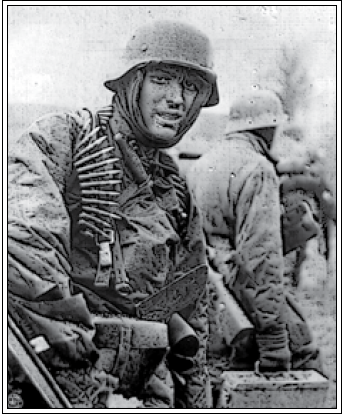
Wizard supremacy? Really?
4/21/1943, the Plague of Rangoon: British command received word that the Kachin tribesmen planned to “attack” Japanese-held Rangoon. The British were confused as to how they could possibly have the weapons and manpower to mount the attack, but they paid attention. Soon they intercepted reports that Japanese medics were scrambling to treat an epidemic. Over 2,500 Japanese died from a “Red Fever” that caused bloating, burst capillaries, and fatal blood clots.
Soon, Brigadier-General Wingate met with Arvat Sittuang and his fellow magicians. They demonstrated their power on a captured Japanese soldier, who burst into flame after a few minutes of chanting from the magicians. Wingate passed the news along, and Allied analysts were forced to rethink the situation in Burma.
4/21/1943, Yamamoto Dies: Mistaking MacArthur’s “island-hopping” for a defensive line, Admiral Yamamoto toured forward positions to raise morale. Once again, American cryptographers delivered a victory by decoding his itinerary. Eighteen P-38s shot down Yamamoto over Ballale island. The reluctant architect of the Pearl Harbor attack was dead at59.
4/30/1943, Target: Montgomery: A squad of 12 Überkommandos, transported by the powerful German teleporter Der Springer, launched a surprise attack on General Montgomery’s headquarters in Qairwan. However, Montgomery was far away in Le Kef, meeting General Patton. The Übermenschen killed more than 40 Allied troops before retreating due to mounting losses--seven were killed, and two were captured by Flare, a Canadian Talent.
5/7/1943, Fall of the Afrika Korps: The British 11th Hussars pushed the Germans out of Tunis, while General Omar Bradley took Bizerta the same day. What remained of the Afrika Korps was now trapped between American and British lines or on the Cape Bon peninsula. Generaloberst Hans-Jürgen von Arnim and his forces prepared to fight to the bitter end to delay the Allied invasion of Sicily.
On the 13th, von Arnim surrendered to Montgomery and Patton, ending the war in North Africa. The Allies took over 200,000 prisoners, as well as 200 tanks and thousands of other munitions. No Übermenschen were among the prisoners, most having escaped to Sicily or southern Africa.
5/10/1943, Eli the Brain: Section 2 discovered Eli Watson, the first American Hyperbrain, in New York City. Once a lousy student, the 18-year-old Watson had graduated with a college degree in mathematics within months and was considering a doctoral program in physics. Ironically, it was his mother who figured he was a Talent and sent him to the recruitment office--the thought had never occurred to him. Soon, Watson was demonstrating his powers to the public with a press conference in which he he answered complex math questions and speed-translated Latin “for fun.”
On the 27th, Watson became part of the atomic bomb project at Los Alamos. He assisted with some engineering specifics, but “the Brain” was mainly utilized as a human calculator, able to provide instant answers to complex equations.
5/12/1943, U.S. Army Retakes Attu: The U.S. 7th Infantry landed on Attu in the Aleutian Islands, attacking Japanese positions at multiple points. After 18 days of fighting, only 30 out of 2,400 Japanese soldiers survived to surrender. Though the withdrawal process took 2 months, Japanese presence in the Aleutians was now over.
5/16/1943, the Fall of the Nephilim: The Jewish forces in the Warsaw Ghetto were finally overcome when Hitler ordered the 2nd Panzer Army and a huge Übermenschen force into the Ghetto. The remaining 250 Jews offered fierce resistance but were badly outnumbered. Fourteen thousand Jews and 3,500 Germans had died in the uprising. When the Nephilim leader Hashomer was hanged the next day, his last words were “I die today dreaming of Israel.”
5/22/1943, Doenitz Suspends Patrols: Doenitz was finally forced to call off U-boat patrols of the North Atlantic. Improved radar and sonar and increased coastal patrols led to the destruction of over 100 U-boats within months, along with the most experienced crewmen. Though new U-boats were still launched, the Reich’s iron grip on Atlantic waters had been broken for good.
5/26/1943, the Battle of Montenegro: Over 120,000 Axis troops attacked Josef Tito’s force of 16,000 Communist partisans at Montenegro, aiming to capture or kill the leader of the Yugoslavian resistance. Despite being badly outnumbered, the British-trained partisans forced the Axis to withdraw after 3 weeks of intense fighting. Tito and his Talent bodyguard Stasio escaped unscathed, rallying even more Yugoslavians to the Communist resistance.
5/29/1943, Der Archiv: Walter Zingel, the first German Hyperbrain, was discovered during an exam for SS candidates. Zingel listed numerous professions on his resume, and skeptical officers found that he was indeed an expert on numerous subjects despite lacking any college education.
A night clerk at a Berlin library, Zingel suddenly attained an encyclopedic memory while sorting books. He knew the number and location of the 3,521 books he had sorted--and soon, he had memorized their contents as well. Der Archiv (“The Archive”) was assigned to Hauptamt SS command to work on war logistics.
Zingel’s career amounted to little more than frustration. It didn’t take a Hyperbrain to trace every strategic blunder back to Hitler himself--Zingel’s intelligence simply made it impossible to ignore. Like so many Nazi commanders before him, Der Archiv tried to make changes without being noticed. When he suggested withdrawing from the Ukraine, only Albert Speer’s intervention saved him from being sent to the Eastern front. He survived the rest of the war as Speer’s adjutant.
Zingel was never an ardent Nazi, but a patriot who wanted the war to end quickly with minimal loss of life. His only substantial impact was in convincing the high command to disperse German industry in the last months of the war, discouraging a focused Allied bombing campaign. Beyond that, his “contribution” to the war effort was keeping his mouth shut. For example, his wartime diary shows that he quickly deduced that Britain had subverted every German spy within its borders through the XX System. Der Archiv hid this and other insights, hoping for a swift end to the war.
6/5/1943, Montgomery Burns: At a public rally in London, General Montgomery was incinerated by a German Talent, Der Feuermann (“The Fireman”). Three others were killed and 16 injured, and Der Feuermann escaped.
The next day, it was announced that “Montgomery” had actually been a body double, 1st Lt. Bernard Law. King George presented his widow with the Victoria Cross.
6/10/1943, Operation Pointblank: In advance of a cross-Channel invasion of Europe, the RAF and American 8th Air Force launched Operation Pointblank, an intense year-long bombing campaign against German air bases, factories, and industrial cities.
The operation included the “Bullseye” system, in which Talent fliers and teleporters marked bombing targets with flares. After losing 54 Talents in a few months, Bullseye was scrapped due to unacceptable casualties.
6/21/1943, Super-Man Attacks New Georgia: A force of 750 U.S. Marines made a covert landing on New Georgia in the Solomon Islands, to seize a 76mm coastal gun. They accomplished their mission quickly but were besieged by 3,000 Japanese troops. Reinforcements rushed from Guadalcanal.
Sgt. Harry O’Malley manifested his Talent after a Japanese grenade bounced off his chest and into a group of four men huddled nearby, killing them but leaving him unhurt. O’Malley tore off his shirt, screamed “I’m Super-Man!” and proceeded to rout the entire Japanese force by himself, capturing their commander to boot. O’Malley was an incredibly powerful Talent, exhibiting superhuman strength, speed, and stamina, invulnerability, flight, and even “heat vision.”
When the landing force arrived, they found that O’Malley had already secured New Georgia. They also found him to be utterly insane. A few days after his Talent manifestation, he killed a fellow Marine “for murder,” decapitating the man as he fired back at a Japanese spider-hole. Soon it was clear that O’Malley was a “mad Talent.” He refused to answer to any name but Super-Man. He told General Darrenovsky “All these guns, all this killing, it’s wrong,” and announced “I’m going to end this war, starting now.” He immediately began disabling vehicles and weapons with his powers.
Four Marine Talents subdued O’Malley while he was building “houses for all the good people to live in.” He was shipped back to Pearl Harbor command, who decided he was too dangerous. “Super-Man” was lobotomized and spent the rest of his life in a California sanitarium.
7/1/1943, Null: A RuSHA SA recruiting drive discovered Hartmann Landers, soon codenamed Null. Landers was not only the first German “Zed” Talent, but likely the most powerful Zed who ever lived, able to affect dozens of Talents at a time.
Null was the answer to the high command’s prayers, and not for his potential in combat. Hitler had become so paranoid he could hardly function, even employing food tasters. He only trusted his Überkommando bodyguards, and after the March 1943 bomb plot, even they were suspect. Null was the solution to Hitler’s demand for a defense against Talent powers. Soon he held the title of Führerprotektor and was by Hitler’s side 24 hours a day.
7/4/1943, Carnage at Kursk: The Nazis launched Operation Citadel, a massive assault on Kursk. The assault included 900,000 men and 3,000 tanks, but the Russians had mustered 1.3 million troops and 215 Talents to defend the city. The Germans were hammered by air raids and repulsed by infantry, while behind-the-lines Talent assaults disrupted their organization. Days later, they threw a 212-strong Überkommandogruppe at the Russians’ southern flank, but after a brief surge, they were slaughtered by artillery fire. An enraged Hitler ordered another 200 Übermenschen to the eastern front.
7/9/1943, the Invasion of Sicily: General Montgomery and Lt. General Patton landed 180,000 men on Sicily. Initial landings by British gliders and American paratroopers resulted in heavy losses when high winds blew them far off course, but when the 2,500 ships landed their troops, they quickly gained the advantage over the 315,000 Italian and 50,000 German troops on the island.
Four TOG and three SSO teams, comprising 84 total Allied Talents, inflicted huge losses on the Italian 6th Infantry, holding off 3,000 men at Pointe Grande until British forces relieved them. The Allied attack on the “soft underbelly” of the Axis had begun.
7/11/1943, Göring v. Patton: The Hermann Göring Division attacked Patton’s forces at Gela, attacking with Tiger tanks and the 24-man Überkommandogruppe 19. They almost pushed Patton to the sea before he received air support from Pantelleria. Patton rushed his tanks forward while his paratroopers attacked from the rear. They suffered heavy losses, but forced the Hermann Göring Division to pull back and evacuate Sicily.
Patton was always skeptical of the use of Talents in warfare, not least because his massive ego wouldn’t allow him to share glory or headlines. TOG teams were used in North Africa and Sicily over his protests. Eisenhower was aware of the public obsession with Talents, and cared more about public morale than Patton’s vanity.
However, after seeing 4 Übermenschen scatter an entire tank company, Patton changed his mind as he examined the ruins of a hurled tank. In August 1943, twenty-six American Talents were assigned to his command. Soon known as the “Good Time Boys,” they were led by 1st Lt. John “Muscles” Meyer. The team wrought havoc on Axis forces in France and Germany...and graciously allowed Patton to take credit for their accomplishments. Meyer himself considered Patton “like a father” and credited him with the group’s many victories.
7/13/1943, Tanks and Talents Clash on Eastern Front: A Soviet counterattack at Prokhorovka interrupted von Manstein’s plans for another push, leading to the largest battle of Talents yet seen in warfare. The Germans sent 600 tanks and 111 Übermenschen against 850 Soviet tanks and 105 Talents.
Over 9 days, Germany lost over 600 tanks and half a million men, as well as 71 Talents. Hitler canceled the offensive and pulled forces back to defend Italy. Like von Paulus before him, von Manstein found that Hitler had steered him into disaster and then left him high and dry, all his gains reversed, with no recourse but to fight the Russians to the bitter end.
By the 17th, Soviet forces were storming disorganized German positions around Kursk. Von Manstein had no time to organize a retreat, so the German 2nd and 9th armies were scattered by Russians who were well-supplied, reinforced, and supported by tanks and air support.
7/15/1943, the Push to Palermo: Patton and Montgomery’s forces swept up opposite coasts toward the Sicilian capital of Palermo. While Patton’s forces met little resistance, the British 8th Army endured heavy fighting, and the retreating Überkommandogruppe 19 held them off near Mt. Etna despite a flanking maneuver by the 1st Canadian Division.
On the 2rd, Patton entered Palermo at the head of a huge tank force, greeted by cheering crowds. Most of Sicily was now under Allied control as Axis forces retreated to the mainland. Patton then violated direct orders by moving his forces east--he and Montgomery were now in a race for Messina, the entry point to Italy.
7/19/1943, Rome Bombed! Rome was bombed for the first time, by an Allied force launched from a Sicilian airbase. The Allies gave the populace several hours’ warning via radio and propaganda leaflets, and avoided historical landmarks.
7/23/1943, WINDOW: The British introduced a brilliantly simple technology to aid bombing runs on Germany. Called WINDOW, we know it today as chaff--small, thin sheets of aluminum dropped to overwhelm radar with false echoes. The next night, a raid on Hamburg killed 30,000 people and 14 Übermenschen, reducing most of the city to rubble.
7/25/1943, Il Duce Under Arrest: On the 19th, Hitler and Mussolini had their last meeting in Letre to discuss Italy’s role in the war for Europe. Mussolini asked Hitler to seize control of Italy, and was refused. Mussolini had never enjoyed the same support as Hitler, and neglected to mention that his political position was in freefall. On July 25th, the Fascist High Council restored King Emmanuel to power and deposed Mussolini. His replacement, Marshal Pietro Badoglio, imprisoned him and went through the motions of creating an interim government, secretly hoping to negotiate a separate peace with the Allies.
7/26/1943, the Soviet Push: German High Command finally ordered their forces to retreat to the Hagen line in the Ukraine. Hitler ordered von Manstein to hold the Soviets at Kharkov, and refused to allow an orderly retreat to positions with shorter supply lines. Stranded and ill-supplied, the troops were completely demoralized.
On August 5th, the Soviets launched a 3-front assault on the Hagen line; von Manstein was barely able to hold them off by rapidly moving his tanks from one gap to another.
8/1/1943, Ploesti Bombed: American bombers attacked facilities at Ploesti, the Romanian oilfields that supplied over half of Germany’s oil. The bombers flew low and dropped hundreds of tons of bombs, inflicting considerable damage that took two months to repair. Fifty-four planes were lost, and some pilots were forced to land in neutral Turkey where they were interned for the duration of the war.
8/3/1943, Axis Retreat from Sicily: Axis forces made a full retreat across the Strait of Messina to the Italian mainland. Air patrols by ME-109s and Übermenschen covered the Axis retreat. After Cantania surrendered to the British 8th on the 5th, Sicily was lost.
8/7/1943, the Death of Il Duce: Suspicious of Badoglio’s government, Hitler ordered his forces to seize power in portions of Italy, dividing the country politically. He also ordered an Übermenschen to free Mussolini...orders which were canceled when news of Il Duce’s death reached Der Führer.
Marshal Badoglio dealt with the Allies in extreme secrecy, even relying on an American teleporter named Peter “Fastball” Tucker to transport negotiators. The Allies demanded unconditional surrender and the extradition of Mussolini, so Badoglio stalled for a better deal. Meanwhile, a British/American Talent group lead by Major “Camo” Carter uncovered Mussolini’s location.
An Allied commando group stormed the Abruzzi hotel where Mussolini was held, but only secured the building after a half-hour of fierce combat. Captain Thomas “Goliath” Levin was the last person to see the dictator alive--standing on a chair with a noose around his neck. “He looked at me, looked at my beret, smiled, and jumped.” Mussolini died instantly from a broken neck.
8/15/1943, Kiska Abandoned: A Canadian/American force landing on Kiska in the Aleutian islands found that the Japanese garrison had already left. The loss of Attu and ruptured supply lines had convinced them to abandon the Aleutians. As part of the Alaska Purchase, it was the only American territory that had been lost to the Japanese.
8/17/1943, Sicily Falls: Montgomery and Patton inflicted heavy losses on retreating Axis troops in their race toward Messina. Neither would admit that the push to Messina had become a competition between two massive egotists. On the 17th, Patton reached Messina less than 2 hours before Montgomery. The soft underbelly of Axis Europe was about to be punctured.
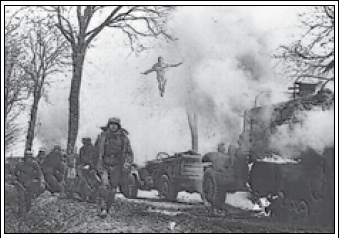
8/22/1943, the Flying Bricks: The U.S. Army Air Corps created a team of 21 “flying bricks,” Talents who could fly and were hyper-tough. They escorted bombing raids by the 8th Air Force, a direct response to fears of Übermenschen air defense. The “1st Non-Mechanized Long Range Flight Group” had their first sortie escorting 276 B-17s on a daylight raid over Schweinfurt. While they lost two Talents, they killed one Übermensch and downed 11 planes.
It was some time in 1943 when Prof. Daniel Talbot, a Section Two scientist, realized a link between the age and education level of Talents and the powers they manifested. Many young men manifested flight, invulnerability, hyperstrength and speed, and even “heat vision” and “x-ray vision.” After a brief conversation with his young son, he realized that servicemen were gaining the powers of their favourite superheroes. Comic books were soon a common sight in the hands of enlisted men.
8/23/1943, Retreat from Kharkov: Hitler finally gave the order to withdraw from Kharkov, after General Raus held out for two weeks. Russian forces took the city the next day.
8/25/1943, Baba Yaga Must Die: Thirteen T-34 tanks from the 18th Soviet Army attacked Baba Yaga as it picked through a battlefield near Kharkov. The tanks coordinated fire on the “creature” from less than 1,000 yards, but Baba Yaga reacted to the hail of 76mm fire by slowly getting up and turning towards its attackers, as if intrigued by a sudden light snowfall. Then it rushed the Soviet positions and tore them to shreds, killing 2,000 and wrecking 60 tanks. The Russians retreated.
9/3/1943, Italy Surrenders: In a radio address, Badoglio announced Mussolini’s suicide and Italy’s unconditional surrender to the Allies. “Fascism,” he stated, “is over forever in Italy.” Many Italians were overjoyed but others were frightened--German troops were still garrisoned across Italy, especially in the north. Hours later, Generalfeldmarschalls Rommel and Kesselring occupied Italian territory. Meanwhile, the British 8th Army crossed the Strait of Messina. The Allied invasion of Europe was underway.
9/8/1943, The Immortal: A young man named Dionisio Valenti became the first Italian Custos (“Keeper”) defending his hometown of Orvieto from Nazis as they looted, raped, and burned. To the Nazis, every Italian was a traitor and a valid target. Valenti himself was beaten, stabbed, and finally doused with kerosene and left with a live grenade. His body was blown to pieces and incinerated. A few days later, he stood up.
quote:
Immortale
1927-
Powers: Immortale does not age and can recuperate from any injury. Even the blood of these whores can’t kill him. Bullet wounds heal within seconds, whereas injuries from burns and explosions can take hours. (He heals much more quickly when his brain is left intact.) Even when completely incinerated by explosives, his body reforms in about 3 days. Pain no longer affects him.
Background: Dionisio Valenti was only 16 when Italy surrendered to the Allies and the occupying German soldiers looted his hometown of Orvieto, Italy. While his family fled, he stayed behind to defend their home with nothing but an old shotgun. He lost.
After his Talent manifested, he joined the Italian communists and launched attacks on Germans and Italian fascists from behind their own lines. His favourite tactic was to rush enemy positions wearing a backpack full of explosives with a handheld detonator. He would fight until cornered, then detonate the explosives, killing dozens. In a few days, he would be ready to fight again.
In 1944, Valenti led a group of Italian Custodes in attacks on the Gustav line. They fought and defeated the Italian fascist Talent group, Legionari della Patria, on two occasions. The fascist Talents were under the command of the 29th Waffen SS Grenadiers, and were a major threat until their final defeat in 1945.
After the war, Valenti testified in war crimes trials, and was elected to the Italian parliament at the age of 25. Like many of his comrades, he became disillusioned with communism as the Cold War progressed, and he supported Alcide De Gasperi’s administration. Eventually he became entirely disgusted with the political environment of Italy and emigrated to the United States.
Valenti became the toast of New York City and was a fixture of Andy Warhol’s Factory. He dated the singer Nico and acted in several of Warhol’s films, including a real decapitation scene in Blood for Dracula.
Valenti settled in Hollywood, where he became associated with action stars such as Steve McQueen and Lee Marvin. In 1976, he invested his personal fortune in an autobiographical film called Immortal. The film took six years, cost $20 million, and was a legendary flop, still a fixture of “worst films of all time” lists. Valenti retired, though he continues to supplement his income as an occasional stuntman.
Eternally 16 years old, Valenti spends most of his time with his wife and seven children, some of whom now appear more than twice their father’s age.
9/10/1943, Nazis Seize Rome: On the 9th, the Allies landed 2 large forces on the Italian mainland. Lieutenant General Clark’s force at Solerno endured heavy resistance and two Übermenschen attacks on his headquarters before TOG 6 and TOG 10 were attached to his command. Still, Anglo-American positions were overextended, while the Germans were well-reinforced. Meanwhile, the British 1st Airborne landed at Taranto, and a British Talent force seized Montecorvino before being pushed back.
The next day, Generalleutnant Maelzer’s forces seized Rome from confused and outnumbered Italian troops. Maelzer ruled Rome with an iron fist, enforcing martial law with murder and torture.
9/11/1943, the Fate of the Italian Fleet: The small Italian fleet moved to Malta as part of an agreed-upon surrender to the Allies. They were attacked en route by Luftwaffe and Überkommando forces. In the first use of a guided missile in warfare, the Roma was sunk by Fritz-X glide bombs with all 1,200 crewmen aboard. The Übermenschen Tyr and Sonnenrad damaged the Italia so badly it remained in port for 18 months. A few days later, the British battleship Warspite was also crippled by glide bombs.
9/23/1943, Italy Divided: Hitler officially established the Reichskommisariat Norditalien (“North Italian Protectorate”). Northern Italy was now part of the Third Reich. On October 13th, Marshal Badoglio’s government officially joined the Allies. While Hitler’s Italy was no more than a buffer state for Germany, loyal Italian soldiers were too scattered to assist the Allies.
10/1/1943, Montgomery Takes Naples: Paratrooper reinforcements had narrowly saved Allied forces from being pushed back to the sea. But with reinforcements and support from the British 8th, Clark’s forces broke through the German 10th Army. The British took Naples on October 1st, greeted by cheering civilians.
10/14/1943, Allies Destroy Schweinfurt: The U.S. 8th Air Force attacked the ball bearing plant at Schweinfurt again. They lost 25 B-17s, two P-47s, and 1 Talent, but took down 12 ME-109s and 4 FW-190s...and killed 4 Übermenschen. The factory was leveled.
10/30/1943, Russians Seal Crimea: Generals Tolbukhin and Petrov’s Soviet Army Group attacked Crimea from points north and south, trapping the Germans on the peninsula. The USSR was now poised to invade Germany with millions of soldiers and thousands of tanks.
11/1/1943, Allies Invade Bougainville: The 3rd New Zealand Division made diversionary landings to allow U.S. forces to invade Bouganville, largest of the Solomon Islands. It was a perfect staging ground to launch bombing raids on Rabaul, the Japanese base on New Britain. The 1st Marine Amphibious Corps landed at Torokina with 14,000 troops and 40 Talents. Progress was slow, but they built airbases almost as soon as territory was secured. By December 10th, the Allies had pushed the Japanese beyond a controlled perimeter and were ready to launch air raids on Rabaul.
11/20/1943, Battle for the Gilbert Islands: When the 2nd Marine Division landed on Makin and Tarawa, they expected little resistance. Little did the know that a network of tunnels and caves had protected Japanese forces on Tarawa from air raids. The Marines fought for every inch of ground; only additional landings allowed them to move past the beach. The Marines lost 1,500 and killed 5,000 Japanese over four bloody days.
11/28/1943, The Big Three: Churchill, Roosevelt, and Stalin all met for the first time in Tehran to discuss the war and plans for a cross-Channel invasion. Tehran was chosen for its neutrality and its apparent lack of Talents; the 3 leaders had 80 Talent bodyguards between them.
While they negotiated, the city raged. Riots between the Tudeh (“Masses”) and the Shah’s supporters resulted in fires across northern Tehran. (Even worse, Stalin and Churchill supported the Shah while Stalin supported the communist Tudeh.) The non-Russian Allied Talents were dispatched to support the Shah; over 2,000 civilians and 500 soldiers were killed. Several Talents were detected in the riots, but none captured.
Nonetheless, the “Big Three” came to terms on several issues, including plans for the invasion of Europe.
12/1/1943, Der Seefahrer Executed: Convicted of espionage after a brief military trial, Georg “Der Seefahrer” Klingen was executed by lethal injection in New York State Prison. His body was remanded to Section 2 for study.
12/13/1943, the P-51 Mustang: The P-51 was perhaps the greatest single-seat, prop-driven fighter ever created, unmatched by similar craft in its speed, range, and maneuverability. It made its debut in an attack on Kiel. By the end of the war, almost every Allied force employed the P-51 as its primary attack craft.
12/14/1943, Russian Winter: The Germans hoped that the oppressive Russian winter would keep the Eastern Front static. Instead, a massive Soviet army moved on Kiev, and encircled or destroyed every German unit in their way. The Russians were soon occupying the Polish border.
Baba Yaga attacked Russian and German forces throughout the offensive, stalking the Pripet marshes north of Kiev. Any unit that encountered the invincible monster had no choice to withdraw. It seemed mostly content to pick through corpses and wreckage. Mostly.
12/26/1943, Allies Invade New Britain: The 1st Marine Division invaded New Britain. The Japanese had been wracked by bombing raids and monsoons, and the Marines faced little resistance. After the Marines secured the island’s airbase, Rabaul would cut off--they would be bombed and starved out without a costly siege war.
1/3/1944, Russians Enter Poland: The 1st Soviet Army swept through German defenses, invading Poland from multiple points. The USSR had invaded the country along with Germany in 1939, and Stalin had not recognized the Polish government-in-exile. Many Poles feared what would come next, and Cien’s inquiries to the Russian foreign minister Molotov (he of the Molotov-Ribentropp Pact) went ignored.
1/4/1944, Operation Carpetbagger: “Carpetbagger,” a huge airborne and Talent operation, went behind enemy lines to supply resistance groups in Axis-occupied countries with tons of weapons, equipment, and medical supplies in preparation for the D-Day invasions. Over 14 months, even field artillery and small vehicles were airdropped and teleported into the hands of partisans.
1/12/1944, Crossing the Rapido: General Alphonse Juin led a French Allied expeditionary force on a successful march across the Rapido River near the Germans’ Gustav line, despite great losses. The march restored flagging Allied morale in Italy and was a prelude to the Battle of Monte Cassino.
1/15/1944, Leningrad Liberated: The besieged Russian city of Leningrad was finally relieved by a huge Soviet army, including over 160 Talents. German forces were attacked on three sides and eventually pushed 50 miles from the city.
1/17/1944, Monte Cassino: The small town of Cassino, on the Rapido river, became the center of a costly battle as the Allies tried to break through the Gustav Line and seize Rome. German forces on the mountains rained artillery down on a series of Allied assaults.The Allies believed they were using the Benedictine abbey of Monte Cassino as a spotter position, but 3 days of recon by TOG 6 determined that they were not even occupying it, and air strikes were called off. Instead, British forces launched a frontal assault, and planned a landing to attack the Germans from the rear.
On the 20th, American troops suffered severe losses clearing a path for armored units to move in. TOG 10 launched behind-the-lines operations to disrupt German communications and build bridges faster than the Germans could destroy them. Soon, hundreds of tanks and heavy vehicles had crossed the river.
1/22/1944, Anzio: The Allied VI Corps landed behind German lines at Anzio. Expecting limited resistance, the landing force encountered 45 Übermenschen and an entire battalion of Waffen SS. The Allies triumphed after a long and bloody battle, thanks in large part to Zed’s ability to neutralize German Talents. General Lucas made a costly mistake when he ordered his men to dig in, instead of advancing on Rome.
1/23/1944, Randolph Churchill’s Landing: Major Randolph Churchill, son of the Prime Minister, parachuted into occupied Yugoslavia in support of Tito’s partisans. After linking up with Tito and Stasio, their force of about 9,000 escaped an attack by the Germans and Chetniks.
1/27/1944, Zed Dies: German reinforcements surrounding the Allied bridgehead at Anzio, pressing them against the sea with continuous shelling. Peter “Zed” Cesay, the world’s first Zed Talent, was killed early in the fighting by an 88mm shell.
1/30/1944, Operation Flintlock: The U.S. 7th Infantry and 4th Marine Division seized the Marshall Island atolls over several days, killing 11,000 Japanese troops. From the airbase at Roi, they could launch attacks on the Caroline Islands, with plans to attack the Mariana Islands soon. Meanwhile, Rabaul wasted away.
On the 18th, Captain Peter “Whippet” Murphy captured the command post and airbase on Engbei almost singlehandedly using his Talent powers, and received the Medal of Honor. After 4 days of intense combat that saw 4,000 Japanese casualties and only 400 American casualties, Eniwetok was in Allied hands. It was the first Japanese pre-war territory captured by the Allies.
By the 20th, the Japanese had been forced to abandon the airbase at Rabaul. Although 91,000 stranded Japanese would hold on more than a year, the base was no longer a threat to the Allies.
2/19/1944, Big Week: The U.S. 8th Air Force and the RAF launched day and night raids on German industry in over a dozen cities. The campaigns were successful, but the dispersal of German industry at Der Archiv’s recommendation prevented the Allies from totally crippling them. The 1st Non-Mechanized Long Range Flight Group now boasted over 65 Talents, and claimed 20 German craft and three Übermenschen during “Big Week.”
2/20/1944, Bloody Anzio: Supported by artillery in the surrounding high ground, ten German divisions surged forward to attack the Allied positions in an offensive called Fischfang. Besieged American/British forces suffered massive losses, determined to maintain their beachhead behind the Gustav line. General Lucas exploited the lack of Übermenschen in the battle, ordering several Talent teams to attack until air support could be called in. The plan worked, but the Talent death toll ran high; fewer than 20 of the 135 Allied Talents present survived the battle. Due to heavy casualties, the Germans were forced to call off the attack and retreat to a defensive perimeter. The German offensive made Anzio the bloodiest battle of the Italian campaign, with over 20,000 casualties on each side.
2/26/1944, One Hundred Fifty Thousand Talents: Michael “Specs” Lovetz, a Hyperbrain conducting a study for the U.S. Army, published the first paper estimating the world population of Talents. Lovetz accurately estimated approximately 155,500 Talents worldwide, over 60% of them undiscovered. He projected over 200,000 Talents by 1945, and 1,200,000 by the year 2000.
Next time on Godlike: Market Garden, D-Day, and the deaths of several famous Talents.
Chapter V, Part VII
Original SA post
Godlike, Chapter V, Part VII
My last Godlike update (link here, as it’s been awhile) left off at the end of February, 1944. The Allies continued to press the advantage, as the German Army had met with one disastrous failure after another on the Eastern Front, the Americans are rolling through the Pacific islands in the war against Japan, and the Allies have invaded Italy and established air superiority as they bomb German industry.
However, these victories have been offset by bloody and demoralizing losses at Anzio and Monte Cassino. At Anzio the Allies lost Zed, the British Talent for whom the Talent-nullifying power is named. Months earlier the RuSHA SA discovered Null, the most powerful Zed Talent in history, and made him the personal bodyguard to an increasingly paranoid Hitler. Estimates by an American Hyperbrain now place the world Talent population at over 150,000.
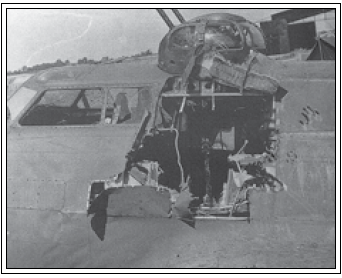
3/4/1944, Disaster at Berlin: The U.S. 8th Air Force launched 600 B-17 bombers in a raid on Berlin that ended in disaster. Fewer than 30 planes reached their target. German Talents destroyed 40 aircraft; most notably, a huge “Chinese dragon” that incinerated 6 planes before being shot down. The attack dropped 1,600 tons of explosives, but lost 60 planes and 9 Talents.
3/7/1944, Operation U-Go: “U-Go” was a Japanese plan to seize the road between Imphal and Kohima in India to contain Allied advanced in Burman. The 33rd Japanese Division attacked the 17th Indian while two other Japanese divisions crossed the border. One division crossed into Kanglantongbi, the home of Lord Yama. It is a fearful thing to fall into the hands of a living god. Yama’s followers, many armed with no more than knives and rocks, launched suicide attacks on the Japanese. In two days, every single member of the Japanese 15th Division was dead, and Japanese forces in India retreated to Burma.
3/20/1944, Hitler Invades Hungary: Fearful of Allied propaganda and numerous guerrilla attacks in the wake of Operation Carpetbagger, Hitler invaded Hungary and installed a pro-Nazi regime, leaving the pro-Nazi Admiral Miklós Horthy in command. The Nazis prepared to stem a Soviet invasion.
On April 3rd, an Allied force bombed Budapest, causing light damage. By this point, Hungarians were fed up with the occupation, the Reich economy, and staggering military losses. Hungary had come to realize that the fruit of allying with the Nazis was to have their country used as a buffer state and a battleground.
4/8/1944, the Crimea Push: General Tolbukhin’s forces attacked and divided the 200,000 Germans remaining on the Crimean peninsula, preventing a mass evacuation by sea. Stalin personally promoted Tolbukhin to General-Polkovnik.
Two days later, General Malinovsky’s 3rd Ukrainian Front drove back General Ferdinand Schörner’s German and Romanian Axis forces; Hitler’s orders forbade an orderly withdrawal. Soviet forces destroyed several German divisions and killed or captured 22 Übermenschen before seizing Odessa. Schörner’s last-ditch attempts to save the city only resulted in more losses, and Schörner himself was killed when an unknown Soviet Talent ripped his plane apart with a “giant hand.”
On April 20th, Tolkbukhin’s forces captured Sevastopol, where the remaining 115,000 Germans surrendered. In 3 days, Soviet forces intercepted several transport ships and captured another 15,000 German troops trying to cross the gulf. Crimea was now in Soviet hands, and the German 17th Army had ceased to exist.
4/15/1944, Kilroy Was Here: American Ship Inspector James J. Kilroy went to bed and woke up in the Reichchancellory in Berlin. As soon as he figured out where he was, his new Talent power transported him back home to Boston. Kilroy was a teleporter whose power unconsciously, and randomly, teleported him to restricted locations when he slept.
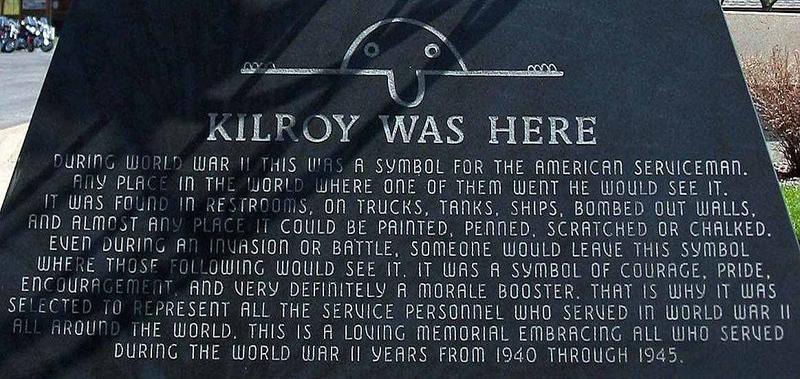
I wish I had a picture of the Kilroy my grandfather spraypainted on the wall of the garage where he worked in his spare time for over 40 years.
Kilroy was already a minor legend thanks to the graffiti he left on unfinished ships sent overseas. “Kilroy was here,” a mark that the rivets had been properly checked, was found in sealed hulls no vandal could have reached. After evaluation by Section 2, he was transferred to Army Intelligence’s propaganda arm. Soon, “Kilroys” were found all over Germany...and Russia. Hitler discovered it in the Wolfsschanze, his secret Eastern Front headquarters, while Stalin found it in his private bathroom. In 1945, the Kilroy was almost as common across Europe as the “V for Victory.”
5/11/1944, the Taking of Rome: Allied forces advanced toward Anzio, with British forces suffering and inflicting heavy losses. After French troops threatened to flank their line, the Germans were forced to make an orderly retreat toward Rome. The U.S. Army VI Corps pushed forward, and Allied forces linked up at Sezze on 5/23. Meanwhile, Polish forces defeated the Germans and liberated the monastery at Cassino.
Generalfeldmarschall Kesselring obtained Hitler’s permission to abandon Rome, and his 14th Army retreated across the Tiber. Uncoordinated Allied attempts to cut off their retreat failed, and General Clark heeded public pressure to focus on Rome. Neither the Axis nor the Allies wanted a terrible urban battle that might level the city. Kesselring declared Rome an “open city” at the Pope’s behest, and most German forces fled the city. General Clark and his 5th Army seized Rome on 6/4, capturing about a thousand soldiers from the German rearguard, including 2 Übermenschen. One, Der Nebel (“The Fog”), was a high-ranking SS officer who provided valuable information on the Nazi Talent program.
6/5/1944, the Superfortress: The B-29 Superfortress debuted in a raid on Bangkok. The B-29 was the first pressurized long-range bomber, with greater speed, altitude, and range than any other. Seventy-seven were launched; 5 were downed due to technical problems.
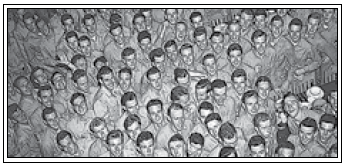
For thousands of soldiers, D-Day was their first combat experience.
6/6/1944, D-Day: Supreme Allied Commander Eisenhower gave the order to launch Operation Overlord, the invasion of France across the English Channel. The operation was launched in spite of bad weather that had already delayed it by two days; Allied command felt that the world had waited long enough.
Operation Neptune, the landing of several forces along the coast of Normandy, comprised 156,000 troops in 4,000 landing craft and 2,000 warships, preceded by gliders and paratroopers. It was the largest amphibious invasion in history.
British Major John Howard’s forces landed 6 gliders along the Caen Canal at midnight, to seize the bridge there. Three were scattered by wind, but the others landed within yards of the bridge. Thinking that the gliders were the spearhead of a large force, the Germans abandoned their posts, and the glider troops captured the bridge with only 1 casualty.
At 1:00am, Lt. Col. Terence Otway’s British 6th Airborne parachuted in to destroy a German coastal gun at Banville. Winds scattered the troops across 50 miles, and Otway was only able to assault the battery with 150 of his 750 men. Half the assault force were killed, but the coastal gun was destroyed.
The American 82nd and 101st Airborne, comprising 18,000 paratroopers, landed near Carentan at midnight. Though these troops were also scattered by wind, this confused the German forces, who often hesitated until it was too late. Aided by 115 Talents split into 3-man TOG groups, this force secured the bridge across the Taute river.
Two groups of the 82nd Airborne landed in the middle of Ste.-Mère-Eglise, a small village. After a stray firebomb set off a blaze, the German garrison was alerted. Most American troops were dead before they hit the ground, picked off by machinegun and even rifle fire. Amazingly, after the slaughter, the Germans retired to sleep! This allowed another group of 91 paratroopers (including 4 Talents) to land outside the village and capture it within 2 hours.
The most important paratrooper landing consisted of a single man: the Czech called Pevnost. Dropped at the Orne river bridge just after it was captured, Pevnost created one of his “passages” on a bridge doorway to transport 140 commandos and 150 Talents to France instantly, in a sequel to 1941’s Operation Rascal. While Pevnost rested, these “Rascal” teams spread out to “cause trouble in the way only Talents can.” Their goal was to draw Überkommandogruppen away from coastal defenses before the first Allied troops hit the beaches at Normandy.
The second Operation Rascal succeeded brilliantly. “Invincible” Brown defeated an entire Panzer division before leading Überkommandogruppe 13 on a wild goose chase, away from their post at Caen before the British 2nd Army landed. “Tag” Montgomery was captured, but not before teleporting 12 German tanks into the ocean from a coastal repair depot. “Wrongway” Mertz had an entire German garrison at St. Laurent firing their guns at illusory bombers for an hour, while he snuck into their command post and stole their codebooks and orders. Soon, 350 Allied Talents were operating in occupied France.
At Pointe du Hoc, Lt. James Rudder’s 2nd Ranger Batallion assaulted a 155mm cannon emplacement atop a 100 foot cliff. Sadly, the nine-man TOG 41 were all killed as they surmounted the cliff carrying heavy equipment, mowed down by a Heer machinegun nest. The Rangers cleared the nest minutes later, only to find that the cannon had been moved.
At 5:30am, Allied warships began attacking the coastline, supported by 10,000 aircraft. At this point the Germans realized that they were under massive attack. Over 100,000 French resistance fighters, supported by the Rascals, had severed communications. It would be over an hour before news reached Berlin.
All these actions were to clear the way for five beachheads, codenamed Utah, Omaha, Sword, Juno, and Gold.
Major General Barton’s U.S. 4th Infantry was forced 2,000 yards south of its target by currents and mines, but the result was that they landed on a more lightly defended beach. Brigadier Gen. Theodore Roosevelt (son of the former president) made the snap decision to order reinforcements to arrive at the new landing sight, and was later awarded the Medal of Honor for this decision. The 4th Infantry quickly established the beachhead, supported by a 2nd Talent Assault Group assembled from 32 TOG teams which destroyed a few tanks and gun emplacements. By nightfall, the 4th had linked with the 502nd Parachute Infantry and brought the 90th Infantry ashore.
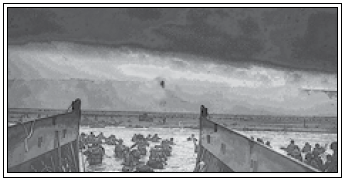
Into the jaws of death
The landing force at Omaha Beach was not so lucky. Hitting the beach at 7:00am, their amphibious tanks were almost completely destroyed by high seas. Without armored support, the infantry had to swim to shore while under fire from machineguns, mortars, and enemy Talents. Überkommandos and mortars sunk 14 landing craft were sunk with all hands aboard, and the weather left many troops off-target and bunched together, pinned down by German machineguns.
Heroism by leaders like Col. George Taylor and the mortally wounded Capt. Laurence Taylor rallied the survivors to push inland toward the “shingle” where the sand offered partial cover from enemy fire. Enemy Talents continued slaughtering Allied troops...until the 1st Talent Assault Group waded ashore.
The battle that followed was dubbed the “Ten Minutes of Hell” as Talents tore each other apart in an assault on the German fortified positions. Übermenschen snipers inflicted heavy casualties in seconds, but Allied fliers and teleporters achieved flanking maneuvers that turned the tide. The Indestructible Man was teleported into a 75mm gun blockhouse and calmly pulled the pin from a grenade. Captain John “Iron Man” Kelly hurled half-ton logs like javelins into German bunkers. Entire squads were incinerated, entire portions of the beach teleported into the ocean, and super-strong Talents ripped each other apart in hand-to-hand combat. Casualties were high on both sides, and most of the dead Allied Talents were killed not by Übermenschen, but by machinegun fire. By 10:00am, the 1st U.S. Division had established a tenuous beachhead. But with only 24 survivors out of 289, the 1st Talent Assault Group no longer existed.
At 7:30am, British forces landed at Sword Beach southwest of the Orne river. With heavy tank support, the landing was a huge success. Defenses were eliminated within an hour. British Talents captured a gun emplacement, allowing the 2nd Battalion to link up with the glider troops who had seized the Caen and Orne bridges. British forces hesitated before attacking Caen, believing it to be defended by the 21st Panzer Division, which was actually just returning to the town. This would prove a costly mistake.
In the small town of Banville, Cien and the British 6th Airborne encountered Der Flieger. The Übermensch had already downed 11 aircraft and buzzed Allied troops on Sword Beach. When he flew in low to identify Cien’s group, he was swatted out of the air by an enormous shadowy hand. A combat photographer snapped a picture of Der Flieger, sitting in the mud with a broken leg and ribs. Though Der Flieger took to the air and escaped, Cien had forced one of the most potent Axis talents to abandon the air battle over Normandy. The photograph made the cover of Time with the headline “The Super-Man in Defeat.” It became one of the most famous photographs in history and a boost to Allied morale.
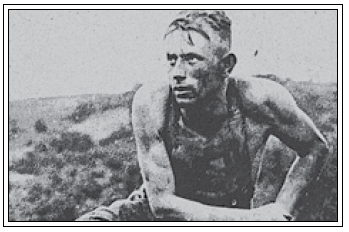
All fucking Nazis must fucking hang
Five miles west of Sword, the 3rd Canadian Division landed at Juno Beach. With fire support from two battleships, they pushed inland despite lacking any tanks. The Canadian troops broke through German defenses on the path to Caen, and killed 15 of the 16-man Überkommandogruppe 16 without any Talent support at all. By nightfall, they’d linked up with British forces from Gold Beach in time to repel an attack by the 12th SS Panzers, and were holding a line outside Caen.
Further west, the 50th British Division landed at Gold Beach with heavy support from the Dorset Armored Battalion, the cruiser Ajax, and minesweeping “Crab” tanks, protecting the infantry from mines and coastal guns. The 47th Royal Marine captured Arromanches and linked up with American forces. At the cost of thousands of lives, the Allies now controlled a single unbroken beachhead in occupied France.
6/7/1944, Cormorant Dies: Captain Michael “Cormorant” Foreman and 9 members of his British commando team were killed by an artillery shell in Banville. Pevnost had used his powers to turn Banville into a staging area for commando ops, and the Heer retaliated with an artillery barrage. He was not reported KIA until 4 days later, when a survivor from his team regained consciousness in hospital.
Next time on Godlike: Heavy casualties on both sides as the war continues all over Europe and Asia...and the disastrous Operation Market Garden.
Chapter V, Part VIII
Original SA post
Godlike, Chapter V, Part VIII
First, an observation: I’ve realized that doing many brief updates is more readable than doing a smaller number of megaposts out of some irrational fear of having too many chapters.
Second, ALL FUCKING NAZIS MUST FUCKING HANG.

Ahem. The last update ended with Operation Overlord, or Operation Neptune, or the Battle of Normandy--anyway, the Allies launched the largest amphibious invasion in history, establishing beachheads at five points along the coast of Normandy, France. The capture of Omaha beach included the greatest Talent battle in history, dubbed the Ten Minutes of Hell, where 400 Talents fought until only 24 Allied Talents survived.
6/9/1944, Russians Invade Finland, Again: After negotiations for a separate peace broke down, Stalin sent his 7th and 32nd Armies into Finland, destroying much of the Finnish II Corps. The Finns had little defense against Soviet tank divisions until a group of Finnish Talents stalled the invasion by destroying an entire battalion and rallying the Corps. In response, Stalin sent in 450 Talents of his own.
6/10/1944, Massacre at Oradour-sur-Glane: The 2nd SS Panzer Division responded to attacks from French resistance fighters by rounding up 642 villagers, locking them in a church, and setting it ablaze, gunning down any fleeing the debris. Only a dozen survived, 11 by playing dead, one by manifesting a Talent.
6/11/1944, Advance on Japan: For four days, the ships of American Task Force 58 bombarded Saipan and other Pacific islands with their heavy guns. The force included the Arizona, a survivor of Pearl Harbor. On the 15th, two Marine Divisions invaded Saipan, cutting the island in half after 3 days of fighting with high casualties on both sides. When they established an uneasy perimeter and landed reinforcements, Japanese forces retreated into the mountains.
6/13/1944, Wittmann’s Ambush: Leutnant Michael Wittman, believing his SS 501st Tank Battalion was in imminent danger of being destroyed, took a single tank to ambush the British rearguard at the French village of Villers-Bocage. He destroyed 25 armored vehicles (most unmanned) before Captain Daniel “Gremlin” O’Connor deactivated his tank. Wittman surrendered in a jovial mood, and remained in a POW camp until 1946. (Note: In the real world, Wittmann escaped after the attack, was promoted and hailed a national hero, died in a later battle, and became an idol to Neo-Nazis.)
5/13/1944, the Buzz Bomb: Four V-1 “Doodlebugs” were launched on London. Only one hit its target, killing 6 people with a half-ton warhead. The world’s first guided missile, these gyroscopic devices were a simple but powerful innovation on par with the Allies’ proximity fuze. The 400mph missiles were difficult to shoot down. Despite the best efforts of Allied flyers, thousands of these devices would kill hundreds of London civilians over the next 6 months.
6/15/1944, Raid on Japan: The U.S. 20th Air Force launched the first successful bombing of Japan, destroying steel works at Yahata. Only 1 of the B-29 force was lost.
6/16/1944, the Taking of Burma: General “Vinegar Joe” Stilwell’s 22nd Division captured Kamaing from the Japanese, supported by 14 Talents. The Chindits, Kachin magicians, and “Merrill’s Marauders” drew away Japanese reinforcements and scattered them. By the 28th, the 77th Chindits Brigade had captured Mogaung for the Allies after a fierce battle.
6/18/1944, Cherbourg Cut Off: General Bradley’s 1st U.S. Army secured a perimeter that trapped the German garrison at Cherbourg and seized a portion of France for the Allies. Though Hitler ordered his men to fight to the death, 21 Übermenschen surrendered to the Allies.
Many more German Talents, disillusioned with the war, would surrender over the coming year. On the 29th, Allied advances forced the Germans to surrender after destroying the city’s port. The German Talents responsible surrendered to a lone sentry at a checkpoint after failing to reach German lines.
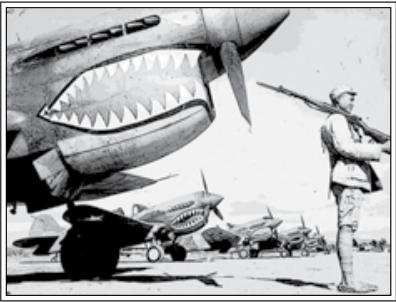
6/19/1944, the Great Marianas Turkey Shoot: Still hoping to defeat the Allies in a decisive naval battle, the Japanese launched Operation A-Go, a massive nine-carrier force commanded by Vice Admiral Ozawa, to attack Task Force 58. Once again, their plans were foiled by Allied codebreakers, and Vice Admiral Mitscher was waiting for them off the coast of Guam with an even larger fifteen-carrier force.
The initial Japanese air attack was a disaster; Navy pilots dubbed the battle a “turkey shoot” and 240 Japanese planes went down. American subs wrought havoc and Ozawa’s own flagship carrier Taihō was destroyed. The next day, American aircraft pursued the fleeing Japanese ships, sinking another carrier and damaging several more. The U.S. lost 102 planes (most because they ran out of fuel attacking the Japanese at maximum range), but the Japanese lost several large ships and 426 pilots, losses they could not afford.
(Seriously, guys. This is like the third time the Japanese forced a huge naval battle, and lost, because they got fucked in the ass by Allied cryptographers.)
6/20/1944, Germans Hold the Line: In Italy, British attacks on the Albert Line (a rearguard south of the Gothic Line) were repulsed by German Talents. The Überkommandogruppen destroyed tanks and guns and killed over 500. British forces struggled to prevent a breakout.
6/22/1944, von Ribbentropp Escapes Death: Nazi Foreign Minister Joachim von Ribbentropp was nearly killed by two Russian Talents who attacked his transport plane en route to a meeting with the Finnish government in Helsinki. The plane escaped and made a crash-landing in Estonia. Ribbentropp made the mistake of telling Hitler the truth about the “Russian super-men” and was subject to one of Hitler’s tantrums. He was later heard to say “I hope the next time it happens, he is in the plane as well.”
6/22/1944, Imphal Relieved: The British 2nd Division repulsed the Japanese forces laying siege to the 5th Indian Division at Imphal. Lord Yama’s fanatical worshipers reinforced the line assaulting Japanese positions. When their forces were defeated at Bishepur, the Japanese presence in India was a thing of the past.
6/23/1944, Bagration: Operation Bagration, comprising 1.2 million Soviet soldiers, launched an attack on the German Army Group Centre. The 1st Baltic and 1st, 2nd, and 3rd Bellorussian fronts attacked along a 300-mile line in the Ukraine. Already outnumbered 4-to-1, German command was further disrupted when Soviet Talents seized Generalfeldmarschall Busch’s command post. Hitler simply ordered them to “hold the line.”
6/23/1944, Attack on Ploesti: The U.S. 15th Air Force launched a 761-strong force to bomb the oil plants at Ploesti, Romania, which survived half of Germany’s oil. Over a dozen previous attacks had not inflicted enough damage to halt production, and had only resulted in Ploesti becoming the most heavily defended Axis stronghold besides Berlin and Vienna.
Going into battle with poor intelligence and no Talent support, the Americans were easily repulsed by Axis fighters and 126 flying Übermenschen. Allied losses included 204 planes destroyed in battle, 40 crash-landings, 51 lost at sea, 12 missing, and 87 landed in neutral Turkish or Soviet territory.
It was the greatest defeat in the history of the Army Air Corps. The public backlash was immense; General Henry Arnold publicly apologized. President Roosevelt quelled the outcry by announcing a “Talent for every plane” policy, though in practice this was impossible to carry out. The Air Force never attacked Ploesti again.
7/2/1944, the Albert Line Breaks: The British XIII Corps finally broke the German line at Trasimeno in a pitched battle that killed over 40 Übermenschen. Eighty-six more were killed or captured during the clean-up afterwards.
7/5/1944, Minsk Liberated: Russian forces encircled Minsk, killing 70,000 and capturing 40,000 soldiers of the German 4th and 9th Armies. The population was liberated, along with many Talent resistance fighters, but Minsk had been devastated by 4 years of combat.
7/15/1944, the War in Finland: The Soviet offensive in Finland stalled as new Finnish Talents appeared each day, a growing threat to Soviet Talents and conventional forces. Marshal Carl Mannerheim, commander of Finnish forces during the “Winter War,” took control of the government and severed ties with Nazi Germany. Stalin turned his attention to the march on Warsaw.
7/17/1944, Rommel is Injured: After leaving occupied North Italy to take command of Army Group B at Normandy, Generalfeldmarschall Rommel was injured when his car was strafed by an Allied fighter. Rommel was out of action for several days.
7/18/1944, Aesgir Killed in Action: The Norwegian Aesgir used his powers to transport 150 members of the 3rd Canadian Division into Caen, expecting little resistance after days of heavy bombing. Attacking behind the German lines, they were surprised to find the 12th SS Panzer Division, who had hid during the bombing and suffered little damage. After more than a full day of heavy fighting, Aesgir was killed during an attack on an 88mm gun position. Only 14 of his troops escaped. RuSHA SA recovered his fabled “Spear of the Gods” for study.
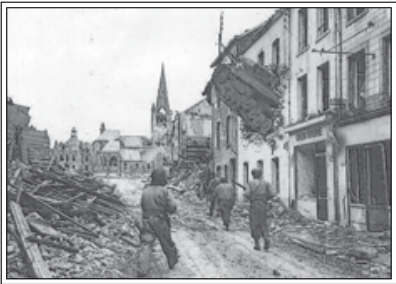
7/18/1944, the Battle of St. Lô: The U.S. 29th Infantry fought the German 352nd and Überkommandogruppe 65 in the town of St. Lô. The town was a strategic crossroads in the “Battle of the Hedgerows,” a period when the embankments and thickets dividing the borders of country estates allowed the Nazis to stall the Allied advance. The presence of Überkommandos made the battle a bloody house-to-house streetfight, and three TOG teams were brought in to counter them. After several days, Überkommandogruppe 65 were all dead, and few of the 352nd survived to surrender. The TOG flag soon flew over the town’s church. (Note that in the real world, the Allies bombed the entire town to ruins, inflicting high civilian casualties. Playwright Samuel Beckett, then a journalist, dubbed the town “The Capital of Ruins.”)
7/20/1944, Operation Valkyrie: Led by retired General Ludwig von Beck, a conspiracy of high-ranking military men and politicians enacted a plot to kill Hitler. Realizing that continuing under Hitler’s leadership was national suicide, they planned to kill him, take control of Berlin, form an interim government, and make peace with the Allies to stave off a Russian invasion.
The assassin was Oberst Claus Schenk von Stauffenberg, who was General Fromm’s chief of staff and considered above reproach. He continued to serve loyally after losing an eye and most of his hands in Tunisia, and carefully concealed his hatred for Hitler. His position gave him access to briefings at Hitler’s Wolfsschanze. Stauffenberg became a leader and decisive voice within the conspiracy, and eventually decided to conduct the assassination himself.
On July 20, Stauffenberg arrived for a military briefing with a bomb hidden in his valise. In the conference room, he was distressed to find that Hitler’s bodyguard Null was sick that day, replaced by another Talent, SS Sturmbannführer Otto Foertsch. Stauffenberg decided that the bomb needed to be as close to Hitler as possible to ensure his death. However, a last-minute move around the table saved Hitler when the bomb went off. Stauffenberg and Foertsch were killed instantly; several other officers were killed and many injured. But Hitler escaped with only some nerve damage and a pierced eardrum.
Unfortunately, the other conspirators had put their plan into motion. Within hours, they were rounded up by the SS. The conspiracy set off a witch-hunt by the Gestapo and SS that would continue well after the conspirators were dead. On August 8, eight of the conspirators were hanged in Berlin. They refused to beg for their lives and died with dignity, despite being hanged with piano wire. The paranoid Hitler refused to attend, but had the filmed to be played over and over for his entertainment.
Next time on Godlike: The Warsaw Uprising, Operation Market Garden, and the deaths of some of the most beloved heroes in modern history.
Chapter V, Part VIII
Original SA post
Godlike, Chapter V, Part VIII
As a reminder, ALL FUCKING NAZIS MUST FUCKING HANG.

So anyway, the last update concluded with the famous July 20 bomb plot, which almost killed Hitler. In real life, Hitler was saved when another officer pushed the briefcase behind a heavy table leg; in Godlike, it was Hitler’s spontaneous decision to walk around the table that saved him. In both cases he escaped with no worse than a ruptured eardrum; the main difference is that in Godlike the assassin was instantly killed, rather than caught and executed later. The failed plot led to mass arrests and executions as the Nazi high command took advantage of the situation to eliminate political enemies with no connection to the plot.
7/21/1944, U.S. Takes Guam: The 1st Provisional Marine Brigade and 3rd Division landed at Guam. The Japanese allowed them to come ashore, where they found themselves surrounded by dug-in positions. The fight became a war of attrition for every inch of ground, even devolving into hand to hand combat. “Banzai” suicide charges were common, but usually resulted in disastrous Japanese losses as they were mowed down by machinegun fire. By August 10, the Marines had lost 1,044 men, but the Japanese garrison was almost totally wiped out.
7/23/1944, U.S. Takes Pisa: The U.S. 34th Division entered Pisa after securing the port of Livorno. The Reichskommisariat Norditalien was now reduced to a cluster of troops in the mountains. Axis presence in Italy was over.
7/25/1944, Operation Cobra: General Collins’ U.S. VIII Corps launched Cobra, a southward push to flank the Germans from the west. Air support, artillery, and TOG teams crushed the German front line, followed by tanks. After four days of fighting, the Allies flanked the Germans near Marginy.
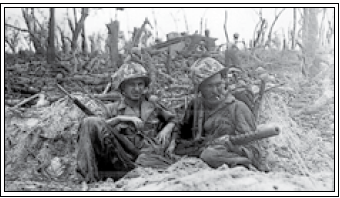
8/1/1944, the Warsaw Uprising: The Polish Home Army--loyal to the Polish government-in-exile in London, with British-American support--seized key points in Warsaw with 38,000 troops, inflicting heavy losses on the German garrison in brutal street fighting. Pevnost kept the Polish troops well-supplied, while Cien destroyed 11 tanks by himself. Over a dozen other Polish Talents killed about 8,000 Germans in 2 weeks. The Polish troops hoped to deliver Warsaw for the Polish government, giving them a bargaining chip with Stalin.
On August 2, the 1st Bellorussian Front crossed the Vistula into Poland, bringing 50,000 troops and 2,000 tanks into the country. It seemed they would take Warsaw, but Stalin had the advance suddenly stop for “lack of supplies.” It was obvious that Stalin was letting the Germans and Polish fight it out, intending the seize what was left. Cien and Pevnost were recalled under protest.
On the 15th, Stalin made a brief announcement that the Soviet Union only recognized Poland’s communist Committee of National Liberation, considering the Polish government-in-exile “irrelevant.” Despite public outcry from Cien and other Talents, the Allies did nothing.
By the 29th, the Polish Home Army was devastated by heavy German support, fighting back from hidden boltholes in the sewers. Only 6 of the 12 Polish Talents were still alive, and special Überkommandos called Hunds were brought in to hunt them down. Without aid from Russia, they were unlikely to survive until the city’s liberation.
8/1/1944, Death on Tinian: Forty thousand Marines assaulted a 6,000 strong Japanese garrison; fewer than 25 Japanese soldiers survived to surrender. Only hours later, the Seabees began building an aistrip large enough to land a B-29 Superfortress. Soon the Allies were bombing the Japanese islands from over 1,500 miles away
8/15/1944, Operation Dragoon: Part of a coordinated effort to have more military operations with kickass names, Operation Dragoon was another landing in France designed to force the Germans to fight on three fronts. After a night of raids by British and French commandos, 94,000 men and 11,000 vehicles landed near Montpellier, quickly pushing for Lyons. The Germans were surprised and forced to retreat. Within weeks, Dragoon had liberated Toulon and Marseilles and was miles from linking with Operation Overlord forces. In less than a month, the two forces would comprise a single gigantic front from the English Channel to the Mediterranean.
Surrounded by Allied forces at Falaise, the German 5th Panzer and 7th Army fled east across the Seine. But Canadian/American closed the Falaise “pocket,” leaving 60,000 Germans surrounded on all sides. After losing 10,000 to air attacks and artillery, the Heer defied Hitler’s orders and surrendered.
8/21/1944, Der Flieger Dies!: After the humiliation at Falaise, Hitler sent Der Flieger and 14 flying Übermenschen on a propaganda mission to drop leaflets on London. After buzzing the capitol for a half-hour, they dropped propaganda on Buckingham Palace and the House of Commons. Since the “Flying Krauts” were doing no real damage, the 1st Non-Mechanized Long Range Flight Group was grounded.
As the Germans prepared to leave, they were attacked with AA fire using the new, OSRD-invented proximity fuze. In the end, Der Flieger met his match not in a greater Talent but in a simple yet brilliant advance in weapons technology. All but 2 of the Übermenschen were blasted out of the sky.
Konrad Rahn, “Der Flieger,” the world’s first known Talent, was dead at 28. A lavish state funeral was held in Berlin. The paranoid Hitler refused to attend.
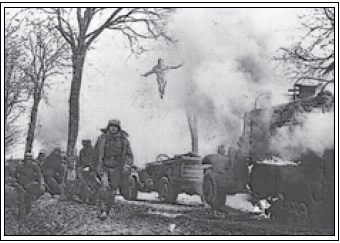
8/23/1944, Romania Rebels: Nazi-Allied Romania was now trapped between Germany and Russia; their reward for joining the Axis would be to have their country used as Hitler’s battleground, then seized as Stalin’s prize.
King Michael’s agents negotiated an armistice with the Western Allies, then were forced to sign one with the Soviet Union. Prior negotiations by the Big Three, and the reality of a half-million Soviet soldiers on their border, meant that Romania’s future was a Soviet one.
Nonetheless, King Michael announced the arrest of Hitler’s insane puppet, Prime Minister Ion Antonescu, and Romania’s defection to the Allies.
8/25/1944, the Liberation of Paris: Ignoring orders to bypass the city, the 2nd Free French Armored Division entered the city to assist the Maquis uprising, forcing American forces to follow. German General von Choltitz, by now disgusted with Hitler’s insanity, refused his orders to level the city rather than surrender it, and handed Paris over to French forces.
However, 14 Übermenschen had not surrendered. Their orders were to reduce Paris to “a heap of rubble and ashes,” and they had the power to do it. Over the following week, they came out of hiding periodically to launch terror attacks. An attack on the Hotel Meurice killed 14, and 4 American officers were murdered the next day. Der Schreck held an entire train station hostage with his powers. Worst of all, the Talent Die Resonanz had begun creating a destructive resonance that was already shattering windows and causing nosebleeds across the city, and could eventually collapse every stone building in the city.
The attacks were only stopped when General Eisenhower peeled off 230 American Talents to capture the Übermenschen. TOG 33 killed 2 Übermenschen moments to stop them from destroying the Eiffel Tower with a huge bomb, and 9 more were captured and shot as spies when they tried to sneak through a checkpoint in stolen American uniforms. The last 3 Übermenschen were cornered and killed in the Paris sewers at the cost of 2 TOG commandos. This is where you should set your campaign, by the way.
8/26/1944, Bulgaria Withdraws: Cut off from Axis reinforcements by the Romanian defection, King Simon II of Bulgaria decreed that Bulgaria was withdrawing from the war. They hoped that this would prevent a Soviet invasion. They were as wrong about this as they were about Axis victory.
On September 5th, the Bulgarian government resigned hours before Communist partisans seized vital positions and the Red Army crossed the border. Nine days later, a pro-Soviet government was installed with support from the 50th Soviet Shock Army, made up of almost 1,000 Soviet Talents.
8/30/1944, Ploesti Falls: The 2nd and 3rd Ukrainian Fronts, under Generals Malinovsky and Tolbukhin, reached Ploesti and easily destroyed the German garrison. With Romanian assistance, they freed almost 1,000 Allied airmen held prisoner there. About 120 Übermenschen were stationed at Ploesti; 25 chose to die fighting while the rest fled.
9/2/1944, the Allies Enter Belgium: Overlord and Dragoon forces linked up and nearly liberated all of France that summer. But when they entered Belgium, their advance slowed to a crawl. General Eisenhower took command of the ground forces, planning to pass through Belgium on the way to capturing the Ruhr Valley, the industrial heart of Germany.
British-American forces had early success in Belgium, but after liberating Brussels and Antwerp, German forces reorganized and small pockets of resistance slowed the Allied advance. With help from Vevel’s Communist partisans, the 3rd Canadian Division seized the port of Zeebrugge. Vevel, who had spent the war terrorizing Nazi forces in Belgium, destroyed dozens of German positions. The 50,000 German troops still in Belgium were now scattered in isolated areas. Vevel rules.
9/4/1944, Armistice in Finland: Bogged down by Marshal Mannerheim’s defense of the country, the Soviets were ready to end the war in Finland. Von Mannerheim outmaneuvered Stalin politically as well as militarily, giving the Soviets only the Karelian Isthmus they had won in 1940.
9/8/1944, V-2 Attacks: The first V-2 missiles were launched on London. Far more dangerous than the V-1, these huge rockets with one-ton warheads flew in 60 mile arcs to hit their targets, impossible to intercept. Thousands were made with slave labor in secret underground bunkers, and could be launched from mobile platforms. These weapons would kill thousands in just a few months.
 /1944, the Good Time Boys Scout Bitburg: General Patton’s Talent team entered Germany and reconnoitered positions near the border of Luxembourg after a few brief engagements with the German 7th Army. “Well, that sure was a hell of a lot of Germans,” said 1st Lieutenant “Muscles” Meyer. “It looked like two Nurembergs and a Barbarossa put together.”
/1944, the Good Time Boys Scout Bitburg: General Patton’s Talent team entered Germany and reconnoitered positions near the border of Luxembourg after a few brief engagements with the German 7th Army. “Well, that sure was a hell of a lot of Germans,” said 1st Lieutenant “Muscles” Meyer. “It looked like two Nurembergs and a Barbarossa put together.”9/15/1944, Tito Links with Soviets: General Tolbukhin’s Soviet-Bulgarian force entered Yugoslavia, destroying what little resistance remained after Communist leader Josip “Tito” Broz had liberated much of the country. (Don’t ask me about Communist guerrillas and their assumed names, it’s complicated.)
Amazingly, Stalin welcomed Tito as a comrade and agreed that Soviet presence in Yugoslavia was a temporary measure. Tito admired Stalin, but intended to take control of Yugoslavia after the war. His forces linked with the Red Army at Kragujevac, and the combined force turned their attention to German forces in the northwest.
9/15/1944, the Soviet 1st Polish Army: After the scant remains of the Polish Home Army surrendered, the Soviet 1st Polish Army crossed the Vistula and invaded Warsaw. Stalin had deliberately allowed the Polish patriots to be destroyed so that he alone could determine Poland’s future.
9/17/1944, Operation Market Garden: Field Marshal Montgomery’s plan called for airborne forces to seize key bridges in Holland behind enemy lines. This would allow Allied tanks to move through the country and threaten Germany’s Ruhr Valley. It was at that point the largest airborne force in history.
The U.S. 82nd and 101st Airborne dropped on the evening of the 17th. American forces faced little resistance, but the British 1st Airborne encountered strong resistance at Arnhem--the key to the operation, since the tanks had to travel through there to reach the Rhine. Only Col. John Frost’s unit made it to the bridge, where they were cut off, but refused to abandon their position.
The British XXX Corps encountered heavy resistance in Holland, and American forces found resistance increasing. It was obvious that the entire operation was in danger of collapsing. They should have given it a cool name like Pitbull or Lancer.
9/20/1944, Talents Converge on Holland: The fierce fighting in Holland drew a large number of Axis and Allied Talents. Forty Allied Talents (including Cien, the Invincible Man, and Misfire) parachuted into Holland, and were soon joined by independent partisans like Vogel and Daegal. One-hundred-and-six Übermenschen arrived to reinforce the Axis.
Only 18 Allied Talents would survive the operation.
On the 20th, Cien and 350 men of the Polish 1st Independent Parachute Brigade pushed toward Arnhem to reinforce Col. Frost’s unit. After a 4-hour battle, they broke through the 12th SS Panzers but never reached the bridge. The Panzer division’s 14 Übermenschen cut off Cien’s forces as they crossed the IJssel river. Cien killed Siegfried and Der Ziegel (“The Brick”) with his powers before dying of wounds inflicted by Krieg. His force was quickly eliminated.
The same day, Daegal and 15 more Dutch Talents fought their way toward Eerde to support the Allies, encountering Überkommandogruppe 99. Der Tragheit (“The Inertia”) killed Daegal by pretending to be in awe of his power and surrendering. He then touched Daegal, which robbed his body of its inertia and flung it into the upper atmosphere where he burnt to ashes. The ensuing battle was brief and deadly. Only one Dutch Talent escaped by teleporting to Allied territory.
9/26/1944, Market Garden Fails: The XXX Corps arrived at Arnhem but couldn’t take the bridge. Instead, the tanks held off German attacks as Allied forces evacuated south to the lower Rhine. The Allies had suffered 3,000 deaths and 7,000 troops captured in a failed operation famously dubbed “a bridge too far.”
Next time on Godlike: Nuts!
Chapter V, Part VIII
Original SA post
Godlike, Chapter V, Part VIII
The last update concluded with the collapse of Operation Market Garden, one of the greatest Allied defeats of the war. The Talents Cien and Daegal were killed in the fighting.
Der Flieger, the world’s first Talent, died earlier that year, killed by anti-aircraft fire while dropping propaganda leaflets over London.
10/1/1944, the Battle of Aachen: As the Allies encroached on Germany, the commander at Aachen defied orders and withdrew east. However, the Allies were unaware, giving the Germans time to heavily reinforce the city. Aachen became one of the largest and bloodiest urban battles of the war...and the first German city captured by the Allies when Nazi forces finally surrendered on the 21st. Though most civilians were evacuated, the city was so damaged that a general being driven into the city asked “When do we get to Aachen?” “This is Aachen,” replied the driver.
10/10/1944, Stasio Dies: The Yugoslavian Talent Stasio was killed in a BSOE commando assault on a German gun emplacement near Banja Luka. Struck in the head by machinegun fire, he died two days later.
10/14/1944, Rommel Dies: Implicated in the July 20 bomb plot, Generalfeldmarschall Erwin Rommel was recalled to Berlin and given a choice: execution in disgrace, or suicide and a state funeral. He opted for suicide to spare his family and staff from retribution. The official story, widely doubted, was that he died of complications from the injuries he suffered when his car was strafed months earlier.
10/14/1944, Allies Occupy Athens: After the Axis fled, British and Greek forces occupied Athens to prevent the Red army from moving in. Tensions between Greek communist partisans and the British fostered civil unrest.
10/18/1944, Soviets Invade Czechoslovakia: The Soviets moved through newly Allied Romania to attack Axis forces in Czechoslovakia. They received heavy support from various Czech partisan groups. Pevnost led a large contingent of men loyal to the Czech government exile, hoping to prevent the country from being absorbed by the Soviet Union.
10/20/1944, Soviets Take Belgrade: Soviet forces and Josip Broz Tito’s guerrillas seized the Yugoslavian capital of Belgrade. With the Axis forced into the mountains, Tito began consolidating power and presenting himself in propaganda as the new leader of Yugoslavia.
10/23/1944, De Gaulle Recognized: The Allies formally recognized General Charles de Gaulle’s provisional government. The general led a victory parade up the Champ d’Elysees, flanked by his Talent bodyguards Le Teinte (“The Shade”) and Le Mur (“The Wall”).
10/23/1944, the Battle of Leyte Gulf: Though it’s arguably the biggest naval battle in history, Leyte Gulf doesn’t get as much space as, say, D-Day. I’ll just present it as it is in the book and let Cythereal go hog wild on it
 . The only thing I’ll add is that both the Japanese and U.S. forces consisted of huge combined fleets with no overall commander, leading to blunders on both sides due to poor communication.
. The only thing I’ll add is that both the Japanese and U.S. forces consisted of huge combined fleets with no overall commander, leading to blunders on both sides due to poor communication.Having declared “I shall return” when he abandoned the Philippines, Gen. MacArthur was quite eager to retake the islands. Lt. General Krueger’s soldiers landed on Leyte, a small Philippine island southwest of Luzon. Japanese forces withdrew to inland defenses, having already prepared for an invasion of the Philippines.
The Japanese plan, called Sho-1, involved a huge fleet divided into 4 groups. You may have noticed by now that the Japanese only had one naval strategy: draw the Americans into a huge pitched battle and crush them. This always got blown to hell by superior Allied recon and intelligence. This time, they had a more clever plan: divide the Americans, then destroy their landing craft. This also got blown to hell by superior Allied recon and intelligence.
Sho-1 quickly went wrong when American submarines spotted 2 Japanese cruisers and sunk them, alerting Admiral Halsey to the Japanese presence. The next day, American carriers damaged two Japanese battleships, but did not detect others in the area. Halsey’s 3rd Fleet moved north, chasing them, and eventually sank the Musashi with 2,339 men aboard.
Nonetheless, the Japanese believed their plan to draw U.S. forces away from Leyte had worked, and they sent Force C through the Surigao Strait to attack the landing craft. The entire American 7th Fleet was waiting for them, and as they came through the strait, they were crippled by what was the last naval broadside in the history of warfare.
The next day, the 7th Fleet detected the fourth Japanese fleet near Cape Engano, and carrier aircraft sank three carriers and a destroyer as the Japanese fled. However, by this time the 1st Japanese Diversion Force reached the American landing force at Leyte. The American ships retreated, protected by a screen of destroyers that suffered huge losses. Vice-Admiral Kurita wisely backed off before Halsey’s fleet could return and trap them.
The Japanese Talent Hoshi (“Star”) debuted in the attack on the landing force in what was the first organized kamikaze (“divine wind”) attack of the war. His 24-Zero squadron attacked American escort carriers, inflicting heavy damage and sinking the St. Lô with 100 men aboard. Hoshi’s defensive teleportation power returned him to the 201st Air Group on Leyte, and he led two more waves of kamikaze attacks.
Despite the damage to the American landing craft, Leyte Gulf was the final blow to the Japanese war machine, destroying 4 carriers, 10 cruisers, 11 destroyers, 3 battleships, and over 500 aircraft. By the end of the battle, the U.S. had more ships than the Japanese had airplanes.
11/8/1944, Canada Conquers Belgium: The last Axis forces in Belgium surrendered to the Canadian 1st Army. Sixty-five Übermenschen had died in the last weeks of fighting, and 12 more surrendered along with 41,000 regular troops. Vevel and his communist partisans reported to the 3rd Canadian and offered to join the Allies, but Eisenhower refused.
11/9/1944, Patton Advances: General Patton’s 3rd Army crossed the Moselle river with over 500 tanks and 500,000 men, after the “Good Time Boys” Talent commando force eliminated German defenses. “Waiting is what loses wars,” he told a Stars and Stripes reporter, after squeezing his forces across the 2 intact bridges in record time. He was only forced to delay his advance due to Überkommando attacks on the front of his southernmost forces.
11/12/1944, Sinking of the Tirpitz: The British Command stepped up attacks on the German battleship Tirpitz, which had been damaged by their submarines. It took seven bombing runs, the last made with 2.5 ton “Tall Boy” bombs, to sink the ship. It sank with over 1,000 men aboard.
12/3/1944, Crossing the Siegfried Line: U.S. Forces finally penetrated the Siegfried Line near Saarlautern, opening the way into Germany.
12/4/1944, Beginning of the End in Burma: The British 14th Army attacked Japanese airfields, rail lines, and supply routes with help from the Chindits and Kachin. The remains of the Japanese 15th Army retreated to the jungle, prepared to fight to the last man.
12/9/1944, Blitzen: Werner von Braun, the mind behind the V-2 missile, played on Hitler’s love of grandstanding by proposing a plan that was a “first in the history of man which could never be undone.” With Hitler’s permission he constructed the Blitzen (“Lightning”), a 2-ton satellite that could be launched into space by Der Tragheit’s powers.
The Blitzen was indeed the first man-made object to reach outer space, which Der Tragheit launched from Peenemünde on December 9th. Its radio transmitter “beeped” for 12 hours before disappearing. When Allied scientists confirmed it, the world was shocked. As the Germans did not say anything about how they launched the satellite, Allied command feared that a “Super V-2” was in the works.
12/16/1944, the Battle of the Bulge: Hitler’s last major offensive was a surprise attack aimed at the inexperienced U.S. VII Corps in the Ardennes Forest. Generalfeldmarschall von Runstedt commanded the 6th SS and 5th Panzer Armies, 7th Army, and Überkommandogruppe SS Heinrich Himmler, a massive force of 205,000 men.
Hitler believed that he could split British and American forces with a drive toward Antwerp, breaking the will of the Allied forces by inflicting heavy losses. The Ardennes was considered a quiet front, and poor weather prevented aircraft and Talent flyers from detecting the buildup in the Schnee Eifel region.
Überkommandogruppe SS Heinrich Himmler achieved near-total surprise when they broke through the line at St. Vith and decimated the U.S. VII Corps. The 6th Panzer Army followed through the gap and headed for Antwerp; the rest of the German force tore through American positions on their way west. American forces held on despite heavy losses; the VII Corps lost 15,000 of its 22,000 men, and the Germans overran the 106th and 28th American Infantry.
Generalmajor Skorzeny launched Operation Greif (“Access”) in which German commandos dressed in American uniforms disrupted American communications by cutting phone lines and giving false orders.
12/20/1944, Jumping Johnny Dies: While using his power to scout behind enemy lines, the British Talent Jumping Johnny was killed in a freak accident. While his power protected him from the incredible impact of his miles-long leaps, it did not protect him from any resulting effects. He was instantly killed when he landed in an SS ammunition dump, igniting an incredible blast that could be heard for miles away.
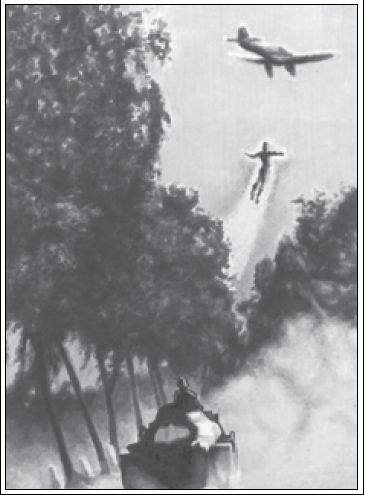
12/22/1944, the Twilight of the Gods: General Eisenhower saw a weakness in Hitler’s plan to use the fearsome Überkommandogruppe SS Heinrich Himmler to clear a path for regular forces. If the Überkommandogruppe could be cut off from the army that followed it, the push would stall. Eisenhower had over 20,000 Talents under his command, and was able to assemble 3,571 British, American, French, and Polish Talents at Spa on December 21st, under the command of Lt. General Hodges.
At dawn the next day, the First Talent Army fought the Überkommandogruppe SS Heinrich Himmler near Spa, while U.S. forces cut them off from the German LXVI Corps. The overconfident Nazis chose to fight a Talent battle instead of falling back to their own lines.
The battle lasted for days, leveling Spa and the surrounding area in the world’s first clash of Talent armies. The Allied TOGs were trained to fight in small teams, which turned out to be a huge advantage in urban combat. They were also taught to use their powers to support conventional weapons and tactics, while the Übermenschen relied on large formations with heavy Talent firepower.
Überkommandos made 9 seprate attacks on Lt. General Hodges at his headquarters. At one point, an SS teleporter appeared while Hodges was on the radio with Eisenhower’s command. “Wait,” he muttered, and after calmly shooting the Nazi in the head, he continued “Go ahead.”
On the 26th, Allied Talents backed off while air and artillery crushed the remains of the Überkommandogruppe. Two days later, the last of them surrendered. In 6 days 2,592 German Talents and 1,554 Allied Talents had died. The press called it “The Twilight of the Gods.”
12/22/1944, Nuts!: On the 22nd, the 101st Airborne and other survivors were surrounded in the French town of Bastogne. When the Germans offered Brigadier General McAullife the chance to surrender, his reply was one word: “Nuts!” The Americans fought on despite lacking food, supplies, and ammo. On Christmas day, the Good Time Boys arrived ahead of the 3rd Army, forcing the Germans to withdraw the next day. “It was the best Christmas gift I ever got,” quipped McAullife.
The same day, the German offensive ground to a halt when the 1st and 3rd American Armies swept down from Belgium. By mid-January, the 5th Panzer Army was trapped. Despite achieving a surprise attack and inflicting heavy losses, the Germans had themselves lost 125,000 troops, hundreds of vehicles, and thousands of Talents, none of which they could afford to replace. Hitler’s cause was lost in both the west and the east.
Next time on Godlike: Fire and blood across the Pacific and the Rhine.
Chapter V, Part IX
Original SA post
Godlike, Chapter V, Part IX
The last update saw crippling blows to the Axis war machine at the Battle of Leyte Gulf and the Battle of the Bulge, not to mention the famous Twilight of the Gods wherein Allied Talents trained in conventional tactics defeated Hitler’s Überkommandos.
12/31/1944, Hungary Turns: After the Soviets surrounded Budapest, rebels captured the pro-Nazi leader Ferenc Szalasi, and Hungary formed a provisional government friendly to the Soviet Union. A month later, Hungary declared war on the Axis.
1/1/1945, Attack on Army Group Center: The Soviet 4th and 2nd Ukrainian Fronts easily pushed through the German front on the border of Czechoslovakia. German Army Group Center, with only a million men, was the last line of defense on the Eastern Front. But the Soviets held air, tank, and Talent superiority, with Talent shock troops softening up the Germans before the main assault.
1/5/1945, Kamikaze at Luzon: The Allies’ next target in the Pacific was Luzon, the largest island of the Philippines. The U.S. 7th fleet and Allied aircraft began attacking Japanese positions around the island in preparation for a landing force.
Hoshi led waves of kamikaze attacks on the U.S. 7th Fleet in the Lingayen Gulf within northwestern Luzon. With Hoshi as a propaganda tool, the Japanese launched over 4,000 kamikaze planes which sunk 26 ships and damaged 400 more.
At the first sight of the landing ships, various Filipino resistance movements rose up and seized 2 airports and several ammo dumps. On the 9th, the 6th Army came ashore and the Japanese made a planned retreat to the mountains. They had hoped the Japanese would surrender Manila, but instead they were forced to fight every step of the way. By the end of January, they’d linked up with the Hukbalahap, the largest Filipino resistance force, led by the Talent Anguis.
1/5/1945, Death of the Luftwaffe: The Luftwaffe launched Operation Bodenplatte (“Base plate”) to support the Ardennes offensive and gain air superiority in Belgium. Over 1,000 aircraft and 300 Übermenschen attacked Allied airfields, losing 400 planes and 150 Talents in less than a week. The Luftwaffe was hamstrung--they still had plenty of planes, but no experienced pilots to fly them.
1/10/1945, Pevnost Fuels the Fire: A huge force of 150,000 partisans attacked German occupiers all over Czechoslovakia, ruining any attempt to hold off the Red Army. Pevnost was the architect of the plan, using his power to arm the rebels with 30 tons of weapons and equipment within a month. Sabotage and assassination completely destabilized the German position in the country.
The 10th Soviet Shock Army, composed of 3,000 Talents, stormed through German defenses and linked up with 12,000 Czech communists near Dubuzy. All German forces either fled towards Austria or found themselves surrounded.
1/12/1945, the Vistula Oder: A huge 2 million strong Soviet force poured across the Vistula river and into Poland. By the 20th, the Soviets had crossed the country crushing all German resistance in their path. The Red Army was now less than 200 miles from Berlin itself.
1/15/1945, Allied Counterattack!: The Allies considered their next move. Eisenhower proposed a plan to penetrate the Siegfried line, followed by a two-pronged assault to surround the Ruhr Valley.
Montgomery’s 21st Army Group slowed down when they entered the thickly forested and heavily defended Reichswald (“Empire Forest”), then heavy flooding paralyzed all troop movements in the region. General Omar Bradley’s forces in the south broke the Siegfried line and pushed towards Mannerheim. Patton’s Good Time Boys captured bridges and eliminated Überkommando teams in advance of the main force. The German forces no longer had the men and materiel to resist, and were slowly crushed from all sides.
1/17/1945, North Burma Cleared: Chinese forces seized Namhkan, totally eliminated Japanese forces in Burma and restoring the Burma Road from India to China.
2/10/1945, the Yalta Conference: The “Big Three” met again at Yalta to discuss the disposition of the world after the war. Stalin refused to meet in Cairo, citing health trouble, which made Roosevelt and Churchill’s bodyguards nervous. But Stalin merely wanted to meet in Soviet-occupied territory to flaunt his power.
To the public, Yalta was a meeting of Allies, but the three leaders shared little agreement on how the map should be redrawn. Roosevelt and Churchill came to terms to counter Stalin; having already secured a secret agreement that gained him Hungary, Berlin, Czechoslovakia, and Romania, he was just grandstanding at this point. He agreed to affirm the Atlantic Charter, to fight Japan after the war in Europe was finished, and to a communist/government-in-exile coalition government in Poland.
On the 10th, the three leaders posed for their last photograph together, flanked by their generals and top Talents.
2/11/1945, Anguis KIA: The Filipino resistance leader Anguis died fighting the remains of General Homma’s forces on the streets of Manila. When his shapeshifting powers failed him, reverting him to human form, he and 14 fellow Hukbalahap fighters were killed by tank fire.
2/14/1945, the Resurrection of Dresden: A RAF force of 873 bombers dropped thousands of tons of explosives and incendiaries on the German city of Dresden, igniting a fire that raged for two days as American planes continued bombing the wreckage. Though many made it to bomb shelters, the intense heat consumed so much oxygen that hundreds died of asphyxiation.
The attack accomplished its aim of disrupting rail lines through the city and crushing German morale. Most of the city was destroyed and 200,000 people were killed, including American expatriate Charles Lindbergh.
A day later, over 3,000 native survivors had the same dream, of “a Dresden not yet built.” Their leader, an ex-priest named Matthias Kniep, preached of “a world of symmetry and beauty where nothing is destroyed except destruction itself.” By the end of the war, Die Erbauer (“The Builders”) had over 5,000 followers, who would go on to publish Die Wiederauferstehung Dresdens (“The Resurrection of Dresden”), a manifesto both spiritual and architectural.
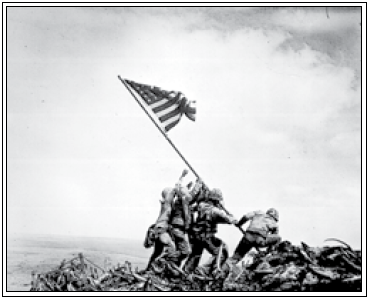
2/19/1945, Iwo Jima: A huge U.S. landing force invaded Iwo Jima, a tiny island 660 miles from Japan itself, after 3 days of bombing. Mistakenly believing that the bombardment had destroyed the enemy, U.S. troops met fierce resistance and suffered heavy casualties.
Japanese defeat was inevitable; the Americans had air and naval superiority, and the initial 30,000-strong landing force was larger than the entire Japanese garrison of 21,000. But as they had done before, the Japanese retreated to positions in the mountains and were ready to fight to the bitter end. Their positions were prepared with hundreds of pillboxes, spider-holes, and a vast network of underground shelters and command positions.
The Marines fought tooth-and-nail, sometimes literally, for every inch of ground. On the 23rd, six men raised a large American flag on the peak of Iwo Jima. Three would later die in the fighting.
Over 6,800 Marines and about 18,000 Japanese died in the fighting; only 216 Japanese were taken prisoner. Casualties are difficult to estimate due to thousands of Japanese who continued hiding after the garrison surrendered, many succumbing to their wounds days or weeks later.
The Second Coming posted:
Pvt. John McGrath of Albany, NY was a marine just out of training when he landed with the first wave on Iwo Jima. In the midst of barbaric combat, his mind snapped. On February 21st, he shouted “Lazarus, go forth,” and a nearby dead Marine rose up, his fatal wounds healed.
From then on, McGrath refused to carry a weapon, follow orders, or answer to any name but “Jesus.” Over 200 Christian Marines deserted to following McGrath to the East Boat Basin, where he performed “miracles” such as walking on water and transforming field rations into fish. Even nonbelievers could sense his charisma, and the command had him arrested with the help of the man he had brought back from the dead, Pvt. Micah Williams. McGrath went quietly, kissing Pvt. Williams and saying “I forgive you, Judas.”
John McGrath remains imprisoned at Leavenworth, “suffering for the sinks of mankind.” A huge following believes he is the Second Coming of Christ, although all large Christian organizations dismiss his claims.
Strangely enough, McGrath was the son of a carpenter.
2/21/1945, Crossing the Irrawaddy: General Slim’s British 14th Army crossed the Irrawaddy River, destroying the Japanese troops holding the bridgehead in central Burma. Allied offensives forced the Japanese into the wilderness.
2/26/1945, Bombers Over Berlin: 1,200 bombers of the American 8th Air Force dropped thousands of tons of bombs on Berlin. American losses were light thanks to the Luftwaffe’s defeat; AA guns downed 24 craft. The First Non-Mechanized Long Range Flight Group, sent to protect the bombers from flying Übermenschen, were startled to find the skies so empty.
3/3/1945, the Good Time Boys vs. the Überkommandos: Patton’s Talent team, going in advance of the 3rd Army as usual, met Überkommandogruppe 101 while securing a bridgehead across the Kyll river. The Good Time Boys lost 4 men, but the Übermenschen were all killed in a battle that leveled 3 city blocks. The Germans managed to destroy the bridge, pausing Patton’s push across the Rhine.
3/7/1945, Cologne Captured: Germans abandoned their 3rd-largest city for defensive positions to the west. Capturing Cologne was a great victory for the Allies. Over 200 Übermenschen surrendered to the 1st Army as it secured the city.
3/20/1945, Across the Rhine: After piercing the Siegfried Line, the Allies surged across the Rhine river, into the Ruhr Valley and towards Bavaria. British artillery and airstrikes destroyed German positions and liberated much of the Netherlands. Patton’s forces swept toward Leipzig, while the 7th Army pushed the German 19th into Bavaria. German forces were in chaos, outgunned by air, artillery, and Talents, and their few counterattacks resulted in disastrous losses of soldiers, weapons, and Übermenschen.
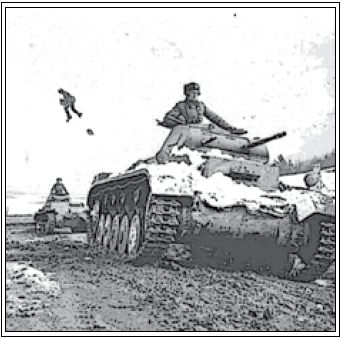
3/30/1945, the Soviets Invade Austria: General-polkovnik Tolbukhin’s 3rd Ukrainian Front crossed from Hungary into Austria, surrounding the 6th SS Panzer Division. As in the west, German counterattacks ended in disaster and 6 Überkommandogruppendied launching behind-the-lines attacks to disrupt Soviet defenses. The attacks were successful, but the follow-up assaults never came. Tolbukhin set his sights on Vienna.
On April 9, a Soviet force led by 3,000 Talents seized Vienna after a day of fierce urban combat with a small Austrian defence force. The rapid victory allowed 10 Soviet divisions to pour through Vienna towards Prague and the German border.
4/1/1945, Okinawa: The largest of the Ryukyu islands was the last stepping-stone to invading Japan. After five days of American bombardment and Japanese kamikaze attacks, a combined Allied fleet of 1,500 vessels began landing troops on April 1. Marine and Army forces seized airfields with little resistance until, a few days later, they encountered the heavily defended cave complexes.
The Battle of Okinawa was an extremely long and bloody one, lasting until the last week of June (the book says July 2nd for some reason). American forces picked away at Japanese defenses with rifles, mortars, and even naval guns. This was the bloodiest battle of the Pacific war, so awful that I can’t even settle for an accurate count of casualties. Godlike says that over 8,000 Americans and 107,000 Japanese died on Okinawa, but a Japanese war memorial counts over 243,000 total dead on all sides.
As part of this battle, the battleship Yamato was sent on a suicide mission with orders to beach itself on Okinawa and fight to the death. On April 7th, the ship was spotted and sunk by American bombers before reaching the island, sinking with 2,500 men aboard.
By May 29th, Japanese defenses were failing, and almost every Japanese soldier on the island was dead by the end of the battle. The U.S. now had the perfect staging ground for an invasion of the Japanese home islands.
Next time on Godlike: The end of the war.
Chapter V, Part X
Original SA post
Godlike, Chapter V, Part X
The last update included the bloodiest battles of the war, as the Axis cause was now lost in Europe and the Pacific. Iwo Jima, Okinawa, Dresden, and the push through Germany inflicted high casualties. So here it is, the last update from Godlike's chronology chapter. The next chapter is a brief overview of life in the United States in the '40s, life in the Army, and how people reacted to Talents.
4/2/1945, the End of Army Group B: U.S. Generals Simpson and Hodges linked their 9th and 1st Armies at Lippstadt, encircling the 350,000 Germans of Army Group B. Their commander, Generalfeldmarschall Model, would eventually commit suicide on the 21st when he realized there was no hope of a breakout. Army Group B surrendered the next day.
4/12/1945, Roosevelt Dies: In poor health and suffering from exhaustion, President Roosevelt took a brief vacation in Warm Springs, Georgia. Parahuman attempts to stabilize his failing health, by Talents such as the British Nightingale, had failed. On the morning of the 12th, Lloyd “Bulldog” Feit went to fetch the president some aspirin for a headache, and returned to find him dead of a massive cerebral hemorrhage.
VP Harry Truman was sworn in as President immediately, while news of Roosevelt’s death reached even the front lines of the war in a matter of hours. The longest-serving president of the United States had died, just weeks before the end of the war in Europe.
4/10/1945, the Final Push in Italy: The harsh winter of ‘44/’45 had ground combat in Italy to a standstill. Now the Allies prepared for the final push. They seized Bologna and swept around the Axis to encircle them. They repelled attacks by the Legionari Della Patria, the pro-Nazi Italian Talents, forcing them to disperse back into the mountains.
Immortale and his fellow Free Italian Talents launched attacks on the German rear while American and British forces advanced on Brescia and Venice, trapping the remains of the Reichskommisariat Norditalien against the Alps. Defying orders from Berlin, General Vietinghoff surrendered to Field Marshal Alexander at Caserta on May 2. The few Italian fascist Talents, holding out in the mountains, were now the only Axis force left in Italy.
4/17/1945, Revenge in Leipzig: Three Übermenschen, surrounded by the 1st Army in the ruins of Leipzig, were attacked by an Allied Talent squad after negotiations for surrender failed. Vogel, Misfire, Smasher, and the Indestructible Man fought Krieg, Tyr, and Nacht in a six-hour battle.
Smasher and Tyr fought hand-to-hand, throwing wrecked tanks around like toys. That fight was ended with a single shot by Misfire on sniper duty. Moments later, Krieg killed Smasher and injured Misfire with a flamethrower, forcing Misfire to retreat. Vogel and the Indestructible Man charged Krieg’s position without waiting for reinforcements.
Due to Nacht’s darkness powers, only Talents could see the battle, giving conflicting reports of what happened next. The official report claims that Vogel charged Krieg, immune to his Hyper-accurate gunfire. Nacht hurled an incendiary grenade, hoping that fire could hurt the bullet-immune Vogel, but Moreland snuffed it out with his own body. Krieg leapt at the Indestructible Man with a knife, and Vogel then hurled a grenade, killing Nacht.
As the darkness receded, with dozens more witnesses, reports varied even more wildly. Some claimed Krieg was killed in action, others that he surrendered and was murdered in cold blood. Some claimed that Krieg lunged, but the ranking British officer claims that the Indestructible Man shouldered a bazooka, said “This is for Piotr,” and fired into Krieg’s face. The Nazi was decapitated, and Moreland was blown clear. The two Talents walked away from the fight holding three ruined Iron Crosses.
In the end, a brief military trial cleared Moreland of all wrongdoing thanks to Vogel’s testimony. “He got what he deserved,” was all Vogel would say after the trial.
4/29/1945, the Liberation of Dachau: The U.S. 7th Army seized the Dachau Concentration Camp, discovering a sea of emaciated corpses and 46,000 starved and traumatized survivors, still guarded by the SS. It was one of the Army’s first glimpses into the “Final Solution,” and even the most hardened veterans were shattered by what they saw.
Many SS guards tried to surrender peacefully as if Dachau was just another POW camp, but U.S. commanders looked the other way as troops carried out vigilante justice. Some reports implied that soldiers assisted survivors in executing “Death’s Head” guards. Captain Rudolph “Concrete” Reisenberg executed Sturmbannführer Adam Grünewald by turning him to stone, having witnessed the deputy commandant shoot a prisoner during negotiations for surrender. “Incidents” claimed the lives of 26 more SS Nazis during the liberation, and no charges were ever filed.
Despite the Army’s best efforts, 27,000 survivors died within weeks of liberation due to dysentery and other diseases.
4/23/1945, the Battle of Berlin: After three days of relentless shelling, the 1st Bellorussian and 1st Ukrainian Fronts attacked Berlin. The German defense was hopeless, made up of depleted units and supplemented by Volkssturm (“People’s Army”) units of teenage boys and old men. Their only advantages were desperation, and over 1,500 Übermenschen scattered through the city.
The Soviet advance was slowed by high casualties and Übermenschen attacks. In response, Marshal Zhukov deployed the 4th Soviet Shock Army on the 25th. Three days of combat with the Übermenschen resistance destroyed landmarks around the city, including an earthquake that destroyed the Reichstag. Führerprotektor Null lead a counterattack that killed 35 Soviet Talents, but with no escape route, the attack folded. By the 29th, Soviet Talents had reached the Führerbunker while the two Soviet Fronts linked up at the Brandenburg gate behind them. Nearly 200,000 Germans and Russians died in the Battle of Berlin.
4/30/1945, the Suicide of the Reich: Even as the Allies approached Berlin, Hitler refused to leave his Führerbunker, a large high-security underground bunker. He spent his last days reminiscing, writing, pointlessly examining maps and plans, and issuing deranged orders concerning the future of the Reich.
“The end of Germany has come,” he told Bormann, “and I too must end with it.” Grossadmiral Dönitz was appointed the new Führer, while Himmler and Göring were sentenced to death for parlaying with the Allies. (Both committed suicide in Allied custody.)
Hitler refused to leave Berlin even though Der Reisende (“The Traveler”), Germany’s greatest teleporter, was available to evacuate him. On April 30, Hitler prepared a final statement, married his longtime girlfriend Eva Braun, then shot her and himself. His body was supposedly destroyed by Der Tragheit, but Soviet troops claimed to have recovered the remains.
Der Tragheit, Null, Herkules, and 62 other Übermenschen defending the Führerbunker followed Hitler in committing suicide. Meanwhile Der Reisende gathered over 100 Nazi officials, using his powers to take them all...somewhere. They were never seen again.
5/6/1945, Germany Surrenders!: After weeks of sporadic fighting, the remnants of the German military unconditionally surrendered to the Allies. Generaloberst Jodl, acting as Dönitz’s agent, formally surrendered in Reims, France along with 27 other high officials including the Übermensch Der Archiv. The Thousand-Year Reich was over after 12 years of violence and horror, and Germany would be divided by the Allies.
Der Archiv posted:
Albert Speer gave Der Archiv access to top-secret files, hoping to “preserve what good can be found amidst the awfulness.” In the last months of the war, Der Archiv memorized over a million pages of records including rocket designs, Swiss bank accounts, and all of RuSHA SA’s files.
After surrendering, Der Archiv was quickly and quietly smuggled back to the United States, considered as valuable as von Braun and the V-2 engineers. While the Russians had Berlin and most of the Nazis’ files, the United States had Der Archiv.
quote:
In 1944, the six-man Überkommandogruppe Sektion Gelb (“Yellow Section”) managed to capture Sheol, killing 13 Nephilim in the operation. She was taken to Berlin and held there for almost a year.
Meticulous RuSHA SA records establish that the SS rushed her to the Führerbunker just 15 days before Adolf Hitler’s suicide as part of a special mission called Valhalla. All records on the purpose and details of Valhalla were destroyed. But there are clues.
Once, in front of a group of terrified Israeli schoolchildren, the voice of Adolf Hitler rose from Sheol’s lips, repeating “I live! I live!”
Israeli media suppressed the story, and from then on, Sheol was kept under heavy guard at all times. The government still denies the story, though several witnesses have confirmed it.
6/28/1945, Victory in the Philippines: General MacArthur announced the surrender of Japanese forces in the Philippine islands. Clean-up operations against fanatical holdouts continued for 2 years, and one lone Japanese infantryman would emerge from the jungle in 1972.
7/15/1945, Mass Defection of the Severch Loodi: Near Wismar, Germany, almost 2,000 Soviet Talents of the 16th Shock Army surrendered to the 2nd British Army as political refugees. The Talents, many of whom were Jewish, Polish, or Ukrainian, were afraid to go home. They described the brutal policies of the NKVD toward Talents in the Soviet Union, and the British commander tentatively accepted.
PM Churchill, already fed up with Stalin, accepted their plea for asylum. This triggered a mass defection among Soviet Talents in Western Europe, and almost 5,000 of them fled to British and American territories before the end of July. Stalin was furious, and Truman and Churchill refused his demands to return the refugees. The defection set off further purges and defections in the Red Army, and some Soviet Talents were suddenly decorated and promoted while others were executed for treason.
7/16/1945: Potsdam, a ruined suburb of Berlin, hosted the conference that would decide the fate of postwar Germany and of the entire world. Truman had succeeded Roosevelt and Clement Attlee had defeated Churchill in election, leaving Stalin the only remaining member of the original Big Three.
Truman and Attlee met first and agreed that Stalin would not be allowed to absorb Greece, nor to recover his Talent refugees. (The mass defection had created tension on the borders of the various occupation zones.)
The conference itself did not go well. Stalin made vague threats of another war in Europe. Having received notice of a successful atomic bomb test, a confident Truman informed Stalin of this, but got no reaction--thanks to his spies, Stalin was already aware of it. For 6 days, the conference centered on the Talent refugees rather than the reconstruction of Europe. On the 22nd, Stalin finally agreed to the borders drawn at the Yalta conference and promptly left.
After the conference, all Soviet cooperation ceased outside agreed-upon sectors of Berlin. A brief memo from the Kremlin informed the Allies that the Soviet Union would not join the war against Japan.
Rudolph Hess posted:
Rudolph Hess’ bizarre attempt to defect to the Allies in 1941 remained a mystery to the Axis and the Allies. After the war, he was convicted of war crimes and imprisoned in Berlin’s Spandau Prison for the rest of his life. For over 2 decades, after Albert Speer’s release, he was the prison’s only inmate.
Hess’ former comrades claimed that the prisoner was not Hess at all, and some insisted that he must have been replaced by a lookalike. After his remaining close associates were executed for war crimes, such claims were rare and impossible to verify.
The British maintained that Hess was simply mentally ill. After his death in 1987 at the age of 93, German authorities quickly cremated his body and destroyed his effects.
Two books claimed that Hess was actually an unidentified German Talent. Explanations differed, but both claimed that American Lt. “Bubblegum” Jackson sensed Hess’ Talent power at the Nuremberg trials. Jackson died in 1973, having never confirmed or denied such claims. The identity of Rudolph Hess, and the reason for his defection, remains a mystery.
8/6/1945, Hiroshima and Nagasaki: To break the morale of the Japanese people and prevent the need for an invasion of Japan, President Truman authorized the use of two atomic weapons on the Japanese cities of Hiroshima and Nagasaki. “Little Boy” was dropped on Hiroshima on August 6, and “Fat Man” was dropped on Nagasaki on the 9th.
The bombs killed over 210,000 people, most civilians, and created 3,500 Japanese Talents. The Japanese Talent population was instantly elevated to normal levels.
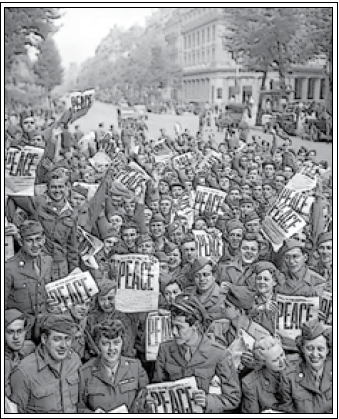
9/2/1945, Japan Surrenders: After months of bombings and the incredible death toll of atomic weapons, the Japanese Diet and the Emperor had no choice but to accept an Allied offer for surrender. Emperor Hirohito made his first-ever radio address to announce the surrender on August 15, and on September 2, he signed the agreement on the deck of the battleship Missouri, in front of General MacArthur.
Within days, Japanese forces in China and Korea surrendered to the Allies. The war in the Pacific was won.
9/6/1945, the Legion of Five Thousand: At a refugee camp at Cologne, the Legion of Five Thousand--a Jewish force of well over 6,000 Talents--made formal demands for a Jewish homeland in Israel, or else “Europe would burn again.” Stalin offered to “deal with the upstart Jews,” but the British and Americans preferred to contain both the situation and the Red Army.
Truman convinced Attlee to withdraw his troops in the Palestine to a partition, cutting the region in two. The Hagganah seized the territory as the British left it, and the Legion migrated there over a five-month period. On May 14, 1946, the United States and Britain recognized the sovereign nation of Israel. With a population of about 780,000 Jews, almost 5% of them Talents, Israel had the highest Talent population per capita of any nation in the world.
1/1/1946, the Cold War Begins: It began when two railroad cars, full of supplies for American-occupied Berlin, were denied entry at the border of East Germany. It escalated from there. On the 4th, all traffic from West to East Germany was officially forbidden. American, British, and French zones in Berlin were cut off and surrounded by Soviet troops, who made no move to enter. The Cold War had begun.
Next time on Godlike:
I kept in touch with those guys over the years, and I found out that Hoshi’s parents shipped him off to military school. After the army, he became one of the pioneering developers of bungee jumping. Of course, we all know why.
Vevel, well, Vevel got really into the ‘60s, and no one ever saw him again.
F-SAM and the Professor became an architect and a contractor. They started out small, designing playground equipment...and prefabricated tree houses. But they became multimillionaires when they invented mini-malls.
Lord Yama grew up and married Alias. They have nine kids. They bought India, and they still own it to this day.
L’Invocateur became a professional wrestler. You know him as the Ghost of the Fourteenth.
Super Swabby played AAA ball, but he never got to the majors. He owns his own business now, and he coaches a little league team that his sons play on, called the Bulldogs.
Mr. Mitts lived to be 99 years old--uh, in dragon years.
I was the last one to move away. But when I did, Baba Yaga was still there.
Chapter VI: Life in these United States
Original SA post
Godlike, Chapter VI: Life in these United States
So, a brief recap of the history chapter: at about a hundred pages of the book, it’s Godlike’s longest chapter. I really appreciated the way they put some focus on oft-neglected theatres of the war, like Scandinavia and Czechoslovakia, but I felt they gave short shrift to China and Korea. This is reflected in the featured Talents: we get a Dane, a Czech, a Finn, and one Chinese and one Japanese guy. They make it clear that Talents are psychological, and cultural memes influence Talent creation, but “Japanese people don’t develop Talents” is an odd device to give Japan short shrift.
I also would have liked to see some meaningful changes to major battles of the war. I mean, the biggest Talent-related changes to the war include things like a greater role for resistance groups thanks to Pevnost, the assassination of Quisling, and the Russians not being able to raise the Red Flag over the Reichstag because it was already leveled. In fact, the occasionally-mentioned “tribal magic” has a much greater impact on the setting than anything the Talents of the developed world did. Lord Yama is sort of the exception that proves the rule.
Anyway. Chapter 6 is a brief overview of life in the 1940s and how it was changed by Talents, focused on the United States. The book hastens to say that Godlike isn’t meant to be U.S.-centric, but they don’t have the space to describe daily life in every country affected by the war. By the same token, if anything here sticks out as terribly wrong, remember that you’re reading my summary of their summary of various summaries.
The first thing this chapter points out is that the U.S. made a huge contribution to the war effort, but our perspective tends to be skewed by the fact that we never fought the war in our homeland. We fielded over 16 million military personnel over the course of the war, and lost over 400,000 people counting a very few civilian casualties. Compare that to the USSR, which fielded 20 million soldiers and lost as many as 11 million soldiers and 20 million civilians.
American in the 40’s
At the end of the 1930s, the U.S. was busy recovering from the Great Depression. The economy was recovering rapidly thanks to the New Deal, so despite years of hardship, the public was optimistic about the future. Many people were the first person in their family to own a radio, a washing machine, or a car. The downside of this is that few questioned the status quo. Even as the Nazis invaded Poland, unless you were Polish, Poland might as well be the moon.
It was a time when people obeyed the rules, spoken and unspoken. Husbands were heads of the household, wives were homemakers, children obeyed their parents, and they all attended church together each Sunday. Prosperity took the wind out of communism and other dissident political movements that had gained popularity in the ‘20s.
Women were objects to be protected, kept away from “real” labour. Career women were harassed and blackballed and couldn’t do much about it. With rare exceptions, American women weren’t combatants, even while China, the USSR, and many resistance groups deployed women soldiers.
Different ethnicities didn’t mix, and minorities created their own communities including their own networks of businesses, churches, etc. Nonwhite people, Jews of any ethnicity, and anyone noticeably foreign were considered second-class citizens at best, and blacks suffered under a bevy of “separate but equal” laws. Racial slurs were common, but aside from that, most people didn’t even consider racial stereotyping to be bigoted or cruel--it was just “the way things are.”
After Pearl Harbor, Japanese-Americans were rounded up and interned in concentration camps to prevent a nonexistent “insurgency.” Later a group of Japanese-Americans, the 442nd Regimental Combat Team, fought in Europe and became the highest-decorated unit in Army history, but the government and the media never mentioned their accomplishments. The all-black 99th Fighter Squadron was similarly overlooked.
Public Opinion
The Great Depression and the death toll of WWI imbued the U.S. with a strong isolationist sentiment that held out even as the Nazis rolled through Poland. That isolationism waned rapidly as Germany attacked the English-speaking United Kingdom. Americans were gradually persuaded by such things as Edward R. Murrow’s reports from ruined British cities, the courage of Winston Churchill, and their own President Roosevelt’s “fireside chats.” American antiwar opinion was almost totally eroded before Pearl Harbor caused it to collapse.
(On a personal note, I once assisted a research project that had me skimming a lot of Boston newspapers from the late ‘30s. There seemed to be a mixture of ridicule and bemused concern in articles about Germany doing such things as starting an Aryans-only national chess league.)
In Godlike, American opinion shifted more rapidly thanks to Talents. Joe Blow American didn’t give a shit about Slovakia or Finland, but he was fascinated by Der Flieger and Pevnost. A related reason was the expatriation of Charles Lindbergh. In real life, Lindbergh was indeed a pro-Nazi racist who nonetheless supported the war effort after Pearl Harbor. In Godlike, the appearance of Der Flieger convinced Lindbergh of European racial superiority so strongly that he expatriated to Germany and renounced his American citizenship. Hating Lindbergh soon became a national pastime, even including mass burnings of memorabilia commemorating his famous flight.
Lastly, the British Talent fundraising tour in the summer of 1941 did a great deal to rally American public opinion in favour of Lend-Lease and entering the war. Bolt, Pop, and Bulldog became instant celebrities.
The Arsenal of Democracy
Even in hindsight it’s hard to grasp how quickly the U.S. mobilized for war after the attack on Pearl Harbor. In 1939 we had 170,000 active military; at the end of the war there were well over 8 million. Almost every able-bodied person volunteered for the war, if not as active military, then as part of civil defense. The support for the war on the “home front” was just as remarkable as the country shifted to a war economy overnight. The U.S. produced over a million fighting vehicles, millions of guns, and over 41 billion rounds of ammo.
Scrap rubber, metal, and oil were collected, and consumer goods like gasoline, sugar, and meat were controlled by rationing laws. But that was small potatoes compared to the wholesale redirection of American industry toward making planes, tanks, bombs, guns, ammunition, and other military equipment. Roosevelt’s administration made war production good financial sense--also true for the millions of women who entered industrial jobs for the first time.
While America had incredible manpower in the wake of Pearl Harbor, our military was ill-equipped to properly train them. Tactics were obsolete relics from the trenches of WWI, and drills were practiced with antique equipment or none at all--grenadiers and machine gunners practiced with potatoes and broomsticks. There were far too few schools to train officers and specialists.
You’re in the Army Now
The Army expanded its facilities and updated its methods until by late 1942, training was intense and efficient. Recruits in boot camp had vanishingly little free time. Every soldier learned many specialized skills including map reading, artillery spotting, radio ops, handling POWs, and the list goes on. For some men, this was the first time they were taught basic literacy, hygiene, and first aid skills that we take for granted today. After boot camp and before deployment, on the other hand, soldiers often had little to do besides busywork dreamed up by their commanders.
Life in the field was rough. Soldiers slept in foxholes, waiting for rations, ammo, and news delivered by couriers on foot. When occupying a town, troops were just grateful for cooked rations and a roof over their heads. Looting valuables was common. Some officers punished it harshly, while others simply demanded the first pick for themselves. On the other hand, looting and bartering enemy weapons and equipment was openly tolerated.
Propaganda, Propaganda, Propaganda!
WWII was arguably the first time that media had an impact on the war, not just vice versa. Media publishers in every country followed government orders, and opportunism, artistic vision, and heartfelt dissent were all put aside in favour of the war effort.
In the U.S., the most widespread popular entertainment was radio. Popular programs included Your Hit Parade and Truth or Consequences, and shows featuring popular hosts such as Milton Berle, Red Skelton, Jack Benny, Bob Hope, the list goes on. Not to mention superheroic shows shows like Superman, The Shadow, Green Hornet, and Buck Rogers!
Movie theatres were also popular. The era produced stars such as Humphrey Bogart and Judy Garland, and now-classic films like Casablanca and Citizen Kane. People also flocked to theatres to see newsreels like The March of Time. For most this was the only way to see events across the world.
The fascist countries were making effective use of propaganda long before the United States. In Germany, Minister of Propaganda Josef Goebbels oversaw the production of film, radio, and print media glorifying the race and the Reich and damning the “Jewish-Bolshevik conspiracy.” Massive statues of Aryan demigods, and films like the masterfully-directed Triumph der Willens portrayed Germans as a pure Apollonian warrior race.
https://www.youtube.com/watch?v=GHs2coAzLJ8#t=5382s
https://www.youtube.com/watch?v=iH6a1iYQ0GA
In the United States, once we were committed to war, that was it: the media supported the government one hundred percent. Certain unspoken rules were followed. Newspapers discarded any story, no matter how valuable, that might threaten operational security. Mainstream journalists avoided directly criticizing President Roosevelt, and he was always depicted in such a way as to minimize his disability.
A division of Warner Bros. was incorporated into the Army. Stars like Clark Gable and John Wayne were making propaganda films, along with Mickey Mouse and Bugs Bunny. Jimmy Stewart joined the Army Air Corps and flew dozens of combat missions, while many stars performed at USO shows and war bond fundraisers. Americans were kept abreast of the war--at least, of what the government wanted them to know--through nightly radio broadcasts and newsreels in local theatres.
https://www.youtube.com/watch?v=XNMrMFuk-bo
I saw this cartoon dozens of times before I was old enough to know about Hirohito, income tax, sauerkraut, and other things my grandfathers hated with a passion.
From the beginning of the war, public ire was directed at the Japanese. Officials played on the public’s fear, making the Pacific War feel minutes away from the West Coast. The Japanese were depicted as shrimpy, dimwitted subhumans who were nonetheless a dangerous horde fanatically loyal to their false god, Hirohito. Washington knew that the Japanese were anything but stupid, and the top brass were desperate to mobilize the country as fast as possible.
Talents and Propaganda
Before the Nazi threat became impossible to ignore, Der Flieger was one of the most popular and beloved people in the world. He had movie star good looks and he could fly. Women wanted him, men wanted to be him. He was the Nazi Superman...but only while he was the only super-man.
When the “British Four” toured America to drum up support for Lend-Lease, the whole English-speaking world now had Talent celebrities who were the talk of every town. When America got its first Talent in the form of the Indestructible Man, Allied analysts correctly predicted that many more would follow. American Talents were bigger than movie stars, and some actually became movie stars. The Indestructible Man dated Lana Turner, the Flat Man starred in comedies, and Kilroy starred alongside Jimmy Stewart in It’s a Wonderful Life. Directors like Welles, Disney, and Murnau cast many Talents in their films. The media created an elaborate fantasy biography that papered over Claude Moreland’s origins as an obscure nobody before he became the Indestructible Man. But still, the appeal was clear: anyone could dream of suddenly becoming a Talent.
On the war front, large events of the war were often depicted in terms of Talent clashes, making the events easy for common people to understand. (As an aside, this is the essential appeal of Marvel superhero films today.) Nazi Übermenschen were portrayed as comic-book villains and Allied Talents as flawless comic-book heroes.
Talents and the War
Many of the first Talents had dangerous powers, but they were few in number, more useful as propaganda tools than as human weapons. As the world population of Talents grew, governments figured out how to use them in commando operations, and eventually on the front line.
The British and Germans were the first to use Talents as shock troops, attacking flanks and striking deep behind enemy lines. Powerful Talents introduced an acute “what if” factor to every military operation. But once there were enough Talents, analysts realized that since they could all detect and resist one another’s powers, the solution was to spread Talents thinly across front line units. This is probably the biggest reason that Talents didn’t make a huge difference to the overall history of WWII.
Most nations had a mandatory draft for Talents, though the U.S. didn’t, and it wasn’t necessary. Almost every active Talent in the world served in the war in some way. While governments covered up bad publicity related to Talents, they were rarely pampered. It’s true that Talents usually got the best supplies and equipment to keep morale high, but their training was grueling, and discipline for misbehaviour was especially harsh. The Marines gave a special pitchfork badge to those who graduated from their all-Talent “Hell’s Motel” camp on Paris Island.
Talents and the Law
Wisconsin vs. Taft set a precedent whereby state and local governments were free to create laws forbidding the use of Talent powers except in private or in self-defense. The first man convicted of using his Talent to commit murder was Enzo “the Eraser” Tagliano in 1951. He was convicted despite making his victims literally disappear. However, such crimes were rare--Talents rarely had trouble making an honest living with their powers.
Incarcerating Talent prisoners was surprisingly easy, but harsh. Those who misbehaved were kept on sedatives, while extremely dangerous cases were sometimes lobotomized. “Super-Man” O’Malley was the most famous case. Talent soldiers who committed serious crimes, like the Army teleporter who smuggled Nazi gold, could look forward to long sentences in Leavenworth and a steady diet of sedatives. As Roosevelt put it, “Power precludes abuse. Or the government’s acceptance of such abuse.”
Talent POWs were also easy to control with harsh threats. Captured Übermenschen were threatened with RAF bombings on their hometowns, or being turned over to the Russians for a “military trial.” Rumours of how the Red Army treated POWs kept most in line. One who did escape, a young German called Der Habicht (“The Hawk”) flew in circles for hundreds of miles before eventually turning himself in, unable to navigate the vast United States.
On the other hand, Allied POWs captured by Germans and Japanese were treated as subhuman subjects for experimentation. Australian Corporal “Gravedigger” Graves had his limbs amputated over and over again without anesthesia so his Japanese captors could study his power. Many Allied Talents chose suicide over capture.
Gimme five bees for a quarter you’d say
There’s a glossary of slang from the ‘40s, some of it invented for the setting, much not. I’ve learned my lesson after reviewing Immortal and Everlasting, so I’m just going to include the ones I find most interesting.
A Direct Line to God: Any Talent that prevents damage.
Applesauce: Bullshit.
Bulldozer, Muscles: A super-strong Talent.
Chairborne: A soldier with a desk job.
Charity Girl, V-Girl: A woman who will sleep with soldiers.
Shell shock, Shakes, Heebie Jeebies: Combat stress/PTSD.
Bughouse, Camp Happy, Cutting Out Paper Dolls: References to insanity and asylums.
Dud: Useless Talent power.
GI Jesus: Army priest. If a paratrooper, a Jumping Jesus.
German Yellow Fowl: Der Flieger or other flying enemy Talents.
Goldbrick: To loaf around on the job.
Give ‘em the Hotfoot: Using a fire-based Talent.
Kaiser’s Boy: German soldier.
Uncle Joe’s Boy: Russian soldier.
Leadproof: Bulletproof Talent.
My Invisible Friend: Telekinesis.
Pull a Claude Raines: Use an invisibility Talent.
Poof: To teleport. I wonder what the British thought of this one.
Popper: Teleporter.
Propless Wonder: Talent flyer.
Steel Straitjacket: Reference to mental illness among Talents.
Überkraut:: German Talent.
We Die First: Play on the TOG motto, “We Go First.”

Next time on Godlike: Guns. Machine guns. Anti-tank guns. Long-range guns. Guns, guns, all kinds of guns! To blast the aggressors from the seas. Bombers! Dive bombers! Flying Fortresses! Interceptors! To stalk the birds of prey that fly by night. Ships. Battleships. Battlecruisers. Destroyers. All kinds of battlewagons!
Chapter VII: The Field Manual
Original SA post
Godlike, Chapter VII: The Field Manual
The titular “field manual” in this chapter is statistics and brief notes for the most common weapons and vehicles of the war. Godlike quickly points out that this is a game, games are for fun, and obsessing over weapon stats is not fun. Also that “effective ranges” are based on anecdotal evidence, and that a single book on WWII-era pistols can top 900 pages, so they can’t be perfectly accurate and inclusive. Just chill out.
The listed materiel includes everything from small arms to tanks, but notably excludes planes. (Sorry Jef!) Although there are some famous flying Talents, I think the authors wisely decided that a game about air combat would have had to be, well, an entire game about air combat.
I won’t copypaste endless stat-blocks; I assume that if you really want to argue the merits of .30-06 Springfield versus 7.92mm Mauser, you’re already doing that on another forum, hopefully not one dedicated to roleplaying games. Instead I will relate the notes, name examples, and share some general criticism.
One general criticism is a lack of advice on how to handle troops, vehicles, and heavy weapons being on the battlefield at the same time. Sure, there are rules for taking cover, area damage, and the damage of things like tank guns, mines, and mortars. (Spoilers: you’re fucked.) And PCs can certainly fight back with Talent powers and anti-tank weapons. But determining if and when the PCs come under fire from tanks and shells is just sorta up to the GM. Since they’re so potent, it’s probably better to use them to control the scenario than to fight the PCs. (“You have to go this way, unless you can handle a rain of 8cm shells.”)
My other general criticism is that while the book lists common equipment for each nation’s army, it often misses the forest for the trees by not explaining what was standard issue. For example, it lists several types of German and Japanese rifles, but the notes don’t make clear that Karabiner carbines and Arisaka rifles were their respective standard issue throughout the war. It also doesn’t discuss common tactics that the PCs might encounter. For example, Germans had superior machineguns but mostly bolt-action rifles, so their infantry doctrine used riflemen to support machinegun crews, while Americans used machineguns to support riflemen. I’m not a firearms buff, but I think this kinda stuff is interesting and relevant.
Weapons in Godlike use a fairly elegant system for the ruleset: broad categories of weapon that do the same damage, which can be modified by the type of cartridge they use--if the GM wants to bother with that at all.
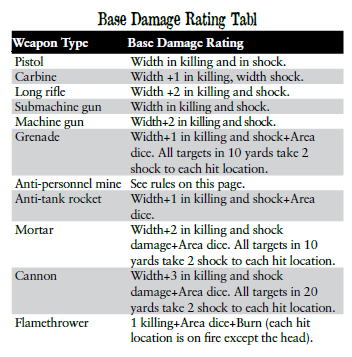
A note on mines: They kill you. A mine does 1 Killing to every location its Area Dice roll. Also, each odd die does 2 Killing to the left leg, each even die does 2 Killing to the right. You also take 4 Shock to every single hit location. Mines kill you.
One specific factor to consider is that there’s essentially a hard separation between anti-personnel weapons and anti-materiel weapons. Godlike’s “mega-damage” mechanic is in Light Armor Rating, Heavy Armor Rating, and Penetration. Anti-personnel weapons, like machine guns and hand grenades, have a Penetration rating of 0-3. Tank guns, AA guns, and anti-tank weapons have Penetration ratings of 5-10. So if you’re playing a super-tough Talent, there’s a huge difference in point cost between being bulletproof and shell-proof. Godlike is not an extremely fine-grained system, but Penetration models the physics involved very well: you could be tough enough to laugh off a spray of .50mm machinegun fire, and a mortar would still blow you to pieces.
Axis Weaponry
Axis weapons were generally superior at the beginning of the war, and it took the Allies a long time to catch up. German tanks were superior to Allied tanks and almost immune to their anti-tank methods, while the Japanese had the best aircraft in the form of the Zero. But that superior technology came at a cost. While the Allies focused on mass production of rugged and reliable gear, the Axis focused on ambitious designs that were expensive, overcomplicated, and unrealistic, going back to the drawing board when designs failed. Nazi Germany invented a number of breakthrough technologies, including jet aircraft, guided missiles, effective anti-tank weapons, and assault rifles. But due to political and production issues, none of them made a major impact on the war.
Third Reich Weapons
German rifles had a good reputation. Although they produced some semi-automatic Gewehr rifles, the bolt-action Karabiner 98 remained standard issue throughout the war. All used 7.92mm ammo. German pistols ranged from the 1908 Luger to the Walther P38 and PP pistols that became standard midway through the war. (Lugers were popular targets for looting, and Germans who were aware of this often used them as bait for booby traps.) All used a 9mm cartridge.
Germany also used 9mm submachine guns beginning early in the war, included the MP 18,34, 35, 38, and 40, which for game purposes only vary in their rate of fire (Spray rating). They began to use them more and more as they learned just how effective they were. While many nations used submachine guns, Germany eventually produced the world’s first assault rifle, the Sturmgewehr 44. It performed marvelously, but Hitler personally disliked the project, and it came too late to make a difference.
German machineguns were a terror on the battlefield. The infamous MG 34 and MG 42 fired 7.92mm at withering rates of fire. (For some reason, the game describes them as “cantankerous,” but “Hitler’s buzzsaws” were quite reliable--they just fired so fast that they were made to have the barrel changed out in combat.) Germany also converted some aircraft/AA guns for infantry use.
German anti-tank weapons weren’t the first to exist, but they were the first to be so effective that they changed tank tactics. The Panzerfaust was a one-use weapon, and so effective that Allied troops used captured Panzerfausts whenever they could. The Raketenpanzerbüchse and Panzerschreck were reusable weapons modeled after the American Bazooka, but more effective. German grenades came in several varieties, including variants on the Model 24, the WWI “potato masher” stick grenade. They also made varieties of incendiary and anti-tank grenade, which were not very effective against tanks.
German mortars were also fearsome. The standard Granatwerfer models fired 5cm or 8cm shells, with a high rate of fire and easy portability via bipod mount. The Infantriegeschütz models were armored infantry support guns firing 7.5 or 15cm shells. German artillery guns were products of Hitler’s military buildup in the 30s. They were versatile, often converted to multiple roles. For example, the Flak 18 or “Eighty-eight” was an 88mm AA gun converted to a dreaded infantry anti-tank weapon.
German mines saw heavy use in slowing the Allied advance into France. Mines like the Schwere Panzermine were effective against even the heaviest tanks. Germans also used several models of flamethrower, usually in urban fighting or against fortifications in Poland and the Netherlands.
German tanks ruled the battlefield in the early days of the war. Fast and powerful light tanks enabled the success of Hitler’s blitzkrieg. But while the tanks kept getting better, culminating in the “King Tiger” Tiger II, they became less effective as armies explored anti-tank tactics and weapons. Germany also pioneered the use of tank destroyers--less versatile vehicles designed to destroy enemy tanks--starting with the light 6.6 ton Panzerjäeger and eventually the heavy armored 50-ton Jagdpanther. They also made many models of armored cars and half-tracks, which were integral to the tactics of generals like Rommel, anticipating a day when armored vehicles would totally replace infantry.
Germany also used several types of ordinary car, from manufacturers like Volkswagen and Daimler-Benz, to ferry officers and special equipment. I only mention them to note that they provide no armor or cover, and that Rommel was injured by aircraft fire in a staff car, and that insane piece of shit Heydrich was assassinated by a bomb tossed into his open-top convertible.
Japanese Weapons
Cythereal graciously provided some notes on how Japanese military doctrine was based on superior range, firepower, and mobility, aimed at a fast and decisive victory in order to avoid a war of attrition that Japan could not afford. But while their aircraft and naval guns may have been superior, the same can’t be said of their forces on land. Most of their guns and vehicles were homemade imitations of Western designs. They were often outdated and underpowered, and designs that were effective came too late and in too little quantity.
Japanese soldiers were armed with Arisaka rifles--long, unwieldy bolt-action rifles chambered in 6.5mm and, later, a 7.7mm modeled on the British .303. Their Nambu pistols were all chambered in an underpowered 8mm cartridge. Both series were based on pre-WWI German designs, so their standard-issue infantry weapons were practically stuck in the era of the Russo-Japanese War. Attempts to update their design produced things like the Model 26, a ripoff of a S&W revolver, and the 94 Shiki Kenju, a design so awful it could be accidentally fired by slapping its side.
Japan didn’t develop a submachine gun until 1942, and their only model, the Type 100, was chambered in the Nambu 8mm cartridge and never saw widespread use. Japanese machineguns were also inferior to both German and Allied weapons. They fired the same 6.5mm or 7.7mm as their rifles, underpowered for a machinegun.
The best Japanese anti-tank weapon was the Type 2, a rifle grenade that was a direct copy of a German model and could be fired from any Arisaka rifle. Their lone anti-tank rifle, the Model 97, was a 20mm gun that could only penetrate light tank armor. They also employed “human mine” suicide bombers who would throw themselves under a tank and detonate a backpack charge. Speaking of mines, they used several varieties, but were mostly known for their ingenuity in using mines and grenades to rig booby-traps for jungle combat. The Japanese also employed flamethrowers, but their models were relatively crude, unwieldy, and difficult to maintain.
Japanese mortars were highly maneuverable. The Type 10 and 89 were just glorified grenade launchers, but could be easily carried and fired by one man. Even their heavier 70mm and 81mm were well-designed for ease of transport. Their artillery guns, with the exception of the excellent Type 98 20mm cannon, were mostly out of date and too expensive to manufacture in quantity.
Japanese tanks were very effective...in China, against people with no tanks and no anti-tank weaponry. By Western standards, a Japanese light tank was no more than an armored car.
Allied Weaponry
Rather than cutting edge design, the Allies relied on massive production of simple but effective designs at the start of the war. Later, their innovative weapons design outpaced the Axis completely.
U.S. Weapons
With a centralized production base, the U.S. focused on high production of a small number of chosen designs. They also provided weapons to Britain and the Soviet Union, so American weapons could be found in use all over the globe.
American soldiers carried the M1 Carbine or M1 Garand rifle, semi-automatic rifles firing the potent .30-06 cartridge. Many preferred the longer-barrelled Garand for its accuracy. Near the beginning of the war, some soldiers were still issued the bolt-action M1903 Springfield. American pistols comprised only a handful of models, and U.S. soldiers often stole prized enemy pistols. Standard issue included the Colt .45 M1911A, a gun so popular that it has replaced women in many gun nuts’ masturbation fantasies, and the S&W revolver in .380. The U.S. also dropped many single-shot .45 Liberators behind enemy lines; this was a single-shot gun to help resistance fighters kill a Nazi and take his gun.
America produced several submachine guns, with the finely-made Thompson or “Tommy gun” the clear winner. It was very accurate, especially considering that it pumped out .45 rounds at a high rate of fire. It was also expensive to make, and most troops had to settle for the M3 “Grease Gun” or UDM42, metal-stamped weapons that were less accurate and reliable.
American machineguns like the Browning Automatic Rifle and Browning M4 were man-portable, .30 guns used for infantry support. The larger Browning .50 M2 hit hard enough to attack airplanes and armored cars. American infantry also used 6cm and 8cm mortars which had a longer range than most of their enemies’.
Americans invented the reusable anti-tank weapon, the “Bazooka.” The Germans used it as the model for their superior Panzerschreck. Americans used the M2 model flamethrowers to great effect in the Pacific theatre, where they were useful in clearing Japanese spider-holes and other emplacements.
U.S. forces enjoyed great superiority in using artillery guns, with M-series and Howitzer guns ranging from 3.5” to 8” caliber. (Godlike notes a quote from Patton saying that American artillery won the war.) Some of these guns were also used as the main guns for tank destroyers.
American tanks were considered inferior to German Panzers early in the war. They were often called “rolling coffins” because their armor offered too little protection against German guns. As the M3 “General Lee” was replaced by a series of M4 “Sherman” tanks with increasingly heavier armor and guns, the gap narrowed. The huge numerical superiority of their tank destroyers also countered the superiority of German tanks.
The U.S. produced several varieties of armored cars and half-tracks, mostly used for scouting and support and armed with .50mm machineguns. For light vehicles, they relied on the Wily General Purpose Vehicle--the Jeep, that is. My grandpa fixed Patton’s Jeep once.
U.K. Weapons
The British Commonwealth was hard-pressed to produce enough weaponry to fight the Axis. After Lend-Lease, they used a great deal of American weaponry while also creating innovative designs to replace their outdated weapons and vehicles.
The standard British rifles, the Lee-Enfield and No. 5 Mk 1, were bolt-action .303s with a poor reputation for unreliability and lousy sights. Many British soldiers used American rifles instead. British commandos also used the intriguing .45 De Lisle Carbine. Subsonic and with an integral suppressor, it was one of the quietest guns ever made. Their pistols were all .380 revolvers, including the Enfield, Webley, and S&W.
British submachine guns were some of the best. The Owen, Lancaster, and the famous Sten gun were reliable 9mm guns with an impressive rate of fire. Their machineguns, on the other hand, ranged from the far-out-of-date Vickers Mk. 1 to cutting-edge man-portable guns later in the war. They had one flamethrower, the “Lifebuoy,” so called for its unique round rubber backpack tank.
The British only had one anti-tank weapon, the PIAT. It used a coiled steel spring that was infamous for injuring the firer’s arm. But their 4.2 inch mortar was feared for its power and accuracy. Their artillery guns, ranging from 3 to 7.2 inch calibers, were also sturdy and powerful.
Like American tanks, British tanks were too small and light to go head-to-head with German tanks at the start of the war. But they also developed stronger, heavier tanks like the Challenger and the Churchill “Crocodile.” One light tank, the Valentine, was modified to become the Archer, a very effective tank destroyer with a low profile. They used armoured cars like the Daimler and Humber models to great effect in the African campaign, attacking with machineguns and outrunning anything big enough to destroy them.
Soviet Weapons
The Soviet Union was a land of extremes, politically as well as environmentally. Their production was laser-focused on simplicity and reliability above all else. Anything that didn’t work was quickly discarded and replaced, and their weapons held up while German equipment froze and failed.
Soviet soldiers carried Mosin-Nagant bolt-action rifles and carbines chambered in 7.62. The carbines were popular with cavalry troops (still employed to great effect as skirmishers and scouts). The semi-auto Tokarev SVT-40 also saw widespread use, but it never became standard issue because it was expensive and (by Soviet standards) complex and hard to maintain. Soviet Tokarev and Nagant pistols were straight copies of the Browning semi-auto pistol and Webley revolver, respectively. But unlike Japanese copies of Western weapons, these were quite rugged.
Soviet submachine guns were cheap, reliable, powerful, and fast. (Another reason the SVT-40 project halted is the Soviets realized the efficacy of SMGs.) Soviet machineguns, however, lagged behind--literally. Early models weren’t man-portable, and many relied on a rolling carriage for mobility.
The Soviets never had great anti-tank weapons...until they stole large numbers of German ones! Their own 14.5mm anti-tank rifles and anti-tank rifle grenades were not very effective. Also, for fuck’s sake:
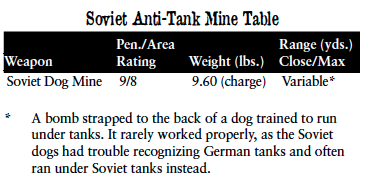
The Red Army made heavy use of mortars. Theirs tended to be heavy, but were still effective. They rarely made use of their ROKS-2 flamethrower, which was designed to look like a rifle so that its wielder wouldn’t be targeted until it was too late.
Like other Allies, Russia’s tanks started out light and rapidly developed throughout the war. The light but slow T-26 gave way to much faster light tanks and eventually the IS-2 Josef Stalin, which could take on the best German tanks. They had one armored car, the BA-10, but most were destroyed early in the war with Germany and their role was taken over by light tanks.
Next time on Godlike: How to run a Godlike Campaign.
Chapter VIII: The Campaign
Original SA post
Godlike, Chapter VIII: The Campaign
Godlike is different from most roleplaying games because the campaign is literally a campaign. The PCs are combatants in a war--at the lowest level of war, a commando squad of troops on the front line. A grunt with heat vision is still a grunt. And while the PCs can improve their characters’ stats, earn rank promotions, and obtain special equipment, the EXP and treasure treadmill of D&D is not the focus of Godlike. The PCs are fighting to make a difference in a World War. The fight continues until they’re relieved of duty...by their commanders or by enemy fire.
Although you can play Godlike as a one-shot, or as a game about strategists and undercover spies, it’s designed for campaign play, with a focus on front-line fighting. The advice in this chapter is chiefly devoted to crafting the campaign, keeping the GM and the players on the same page, and some notes on basic tactics and facts of daily life on the front line of World War II. To its credit, Godlike is well aware that the two big objections most people will have with it are “It seems like a lot of work for the GM” and “High PC body count,” and it addresses them head on.
Designing the Campaign
Godlike says that the campaign starts with a theme, style, premise, and theater of operations, although these facets blend together.
The two “styles” of play are One for One and Troop Play. In One for One, each player controls one character, with the assumption that PC death is rare. This is meant for more high-powered, cinematic, heroic campaigns. One for One often includes two optional rules, Squishy Dice and Die Hard. These are detailed in the Appendix, but in brief, they let PCs play with their dice results after rolling, and make it harder for PCs to die.
In Troop Play, meant for more realistic and lethal campaigns, each player controls a primary PC and a few backups. It’s recommended that your primary PC be the leader of a TOG squad. You can even use your secondary PCs as cannon fodder for dangerous missions--but commanders lose Will points when their subordinates are killed, and more when their death is the result of a direct order.
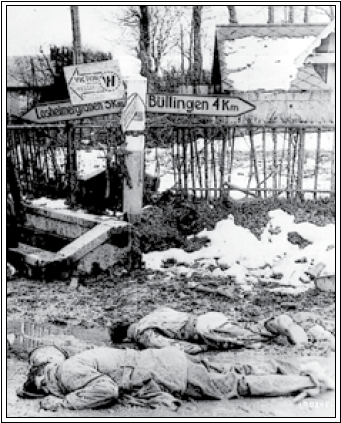
Well, this is far less jolly than The Devil’s Brigade
Theme, as Godlike defines it, is essentially a measure of lethality and PC power level. The default theme of Godlike is High Realism. PCs are built with 15-25 Will points, using the Troop Play style, making them expendable grunts with an edge. Think Saving Private Ryan or A Bridge Too Far. Savagery and atrocity are likely features of such a game.
Cinematic Adventure games model WWII movies like Where Eagles Dare, where the stars are heroic but very mortal. PCs are built with 30-45 Will points using the One for One style. This is an easier mode of play for GMs and players who don’t want an unforgivingly brutal game.
Four-Color Adventure is, well, exactly that. You’re playing Golden Age WWII superhero comics, just without spandex. PCs have 50-100 Will points, played in One for One style, with both optional rules. The only drawback is that the PCs can easily change the setting, forcing the GM to improvise constantly for the rest of the campaign.
There are a couple problems with measuring “realism” and grimdark deadliness this way. First, Godlike is not based around level-balanced encounters. Its combat is more rock-paper-scissors, or one of those crazy rock-paper-scissors-alien-devil-nuke-dragon variations. You can have 100 Will points worth of powers and still get killed by a danger that’s a bad matchup for your power set. It’s right there in the setting. Der Flieger couldn’t dodge a proximity fuze; Zindel stepped on a land mine. Second, if the PCs are Captain America, the Destroyer, and the Blazing Skull, well then the Nazis have the Red Skull, Baron Zemo, and Armless Tiger Man to oppose them. It’s a no-brainer!
The campaign premise and theater of operations are just, of course, the premise of the campaign and when and where it’s taking place. As I mentioned, the default campaign premise involves the PCs as members of Talent Operations Group commando squads, striking behind enemy lines. The setting provides ample opportunities for this: Operation Rascal in the African campaign, the TOG squads that advanced ahead of the Normandy landing, and Patton’s “Good Time Boys” at the head of the 3rd Army. But there are other suggested options, such as playing undercover spies, spy-hunters in liberated territories, or resistance fighters repelling German or Japanese occupation.
In case you’re wondering, this is the campaign I would run: The PCs would be Talents in Patton’s “Good Time Boys,” advancing through Paris after the Normandy invasion. I’d give the PCs extra Will points, but still run it in Troop Play style, with an aesthetic closer to Inglorious Basterds than anything else. The campaign would culminate with clearing out the Ubermenschen terrorists who held Paris hostage after its liberation by the Allies.
Building the Campaign
Godlike recognizes that creating a military-based campaign, especially one set in a historical milieu, can be a ton of work for the GM. Sometimes its advice on imbuing life into the campaign shades into the kind of stuff that nobody does, like setting up mood lighting and writing up too much detail for every location and NPC. But on the whole, you can tell that Stolze and Detwiller ate their own dog food, so to speak, and playtested their game to the point that they know how to advise you against common pitfalls. Since players can be fickle, they say, don’t detail everything. Prepare to improvise.
Some space is devoted to getting the GM and the players on the same page, creatively, and explain what should be expected of each party. The GM’s job is to set the stage for the players to get into their characters heads, and a big part of that job is consistency. They have to detail important NPCs and locations, and have a big-picture grasp of the territory and troop dispositions, and track all these things as they change over time. They have to make rulings in cases where the rules fall short, and then stick to the ruling they’ve made.
The players’ job is to inhabit their characters and play them as fully as possible, and to not make the GM’s life hell. Don’t be a rules lawyer, and don’t be a milwank nerd. Nobody cares if there was a 752nd AAA battalion, or if they were actually deployed to Pontecorvo in March 1944.
Running the Campaign
Creating Non-Player Characters is a big part of any good game, and in Godlike they’re divided into several categories. Stars and Villains are people who are very important or will appear frequently--the PCs’ commanding officer, close friends, or perhaps a civilian who acts as a stand-in for how their efforts are impacting the theater of the war. Co-Stars are NPCs who will appear more than once and have some unique, memorable traits--a grizzled sergeant, displaced priest, or captured German soldier are given as examples. Finally, Grunts and The Enemy are the mooks on both sides of the fight.
Godlike recommends that Stars and Villains always get full stat blocks, but really, I think it’s only important to stat out Talents. The rules covering everything else are so simple that it’s extremely easy to just say that the German officer has Xd in whatever Stat+Skill pool he needs. Godlike doesn’t have any of the special abilities that appear in other ORE games.
Location is the GM’s other big responsibility in planning and running games, in keeping with their responsibility to be consistent and maintain continuity. Having a map of the territory is a good idea. Maps make great handouts for PCs--especially when they’re inaccurate! The GM also needs a general idea of the disposition of enemy forces. It doesn’t have to be exact, but an enemy-held town could be noted something like “500 men, 4 light tanks, some artillery guns.”
Enemy leaders and special forces in particular should be noted, and enemy Talents need to be fully statted out. Since the major powers in Godlike used Talents as scouts and shock troops, missions to launch or defend against attacks against strongpoints and command posts are likely to be a big part of the game.
There is an overarching reason that Godlike encourages you to detail NPCs and keep track of locations. In a game with few tangible rewards, set in a bleak period of history, the opportunity to create lasting change in the world of the game is the reason for the players to keep on playing. Rescuing civilians, liberating a town from occupation, or even seeing a cowardly officer grow into a reliable ally are more meaningful rewards than boosting your Talent powers or getting ahold of a Tommy gun--which, after all, are just tools to be used on another dangerous mission where the PCs are expendable assets.
Missions are the lifeblood of the campaign. This is the easiest and best part of GMing Godlike; since the PCs are enlisted soldiers, they have commanders to literally give them their marching orders. As with everything else, Missions are divided into several categories, but in my opinion, only one is really important. Combat missions are any where the PCs are on duty where they might see combat. Leave “missions” are ones where the PCs have been granted leave and are simply out to have a good time. Public relations missions involve looking good for newsreels, photographers, and interviewers to aid the war effort. Rotation missions are ones where the PCs are sent to be studied by the Talent pecker-checkers at Section 2 or the SSO. Finally, AWOL missions are ones where the PCs are absent without leave for any reason. Even if it’s a good reason, they likely face court-martial upon return.
I wouldn’t ever devote a whole hours-long game session to the PCs getting drunk in a bar or starring in a newsreel, but it’s certainly a worthwhile interlude. Imagine shell-shocked PCs being interviewed by journalists whose view of Talent warfare seems to come from comic books. And going out on leave in recently-liberated Paris is a good example of the story-based rewards I discussed. Anyway, there’s advice for how to set up a mission, but it’s reiterations of the concepts that have already been covered: mission objectives, a map of the territory, and enemy resistance.
Life on the Line
Though by no means exhaustive, the book contains some helpful generalities of daily life on the front line of WWII. The info here informs the process of building campaigns and missions, especially mission objectives. Living on the front line consisted of a series of hardships that combined to wear down even the strongest individuals. Manual labor and long stretches of sheer boredom, sleeping outdoors and eating cold canned food, ration and supply shortages, and the constant threat of enemy fire. Often, not being able to do anything without worrying about enemy fire was more stressful than the brief periods of actual combat.
Much of an infantryman’s life was consumed with finding and digging cover. Battle lines in WWII were more mobile than in the past, and the huge fortified trench warrens of the last war mostly gave way to hastily-dug foxholes, spiderholes, and slit trenches. Since battle lines were far more mobile and soldiers were constantly on the move, they were constantly digging and then abandoning small trenches. Digging a simple one man trench could take minutes or hours depending on weather and soil conditions, and soldiers sometimes resorted to dangerously “clever” shortcuts like using rifle fire and hand grenades to loosen the soil.
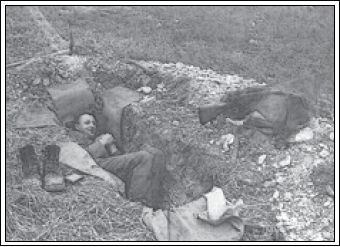
Shhh! I’m an atheist!
Command posts are more static locations which serve as a unit’s intelligence center, some distance back from the actual frontline. Strongpoints are places where heavy guns, vehicles, or masses of infantry are set up to repel an enemy push, often at strategic locations such as bridges. The Rear is a location away from the frontline where food, supplies, and wound soldiers are delivered and organized, and is often full of fresh troops and heavy equipment. These locations are frequent targets for Talent commando squads.
Missions will usually revolve around the PCs being assigned one of several types of duty. Guard duty on the front line is very boring or very dangerous, often both. Guards are assigned to keep watch over an area from cover, and struggle to stay out of the weather, out of sight, and awake. Guard posts are the first positions to be lost when the enemy advances, and guard duty is often meted out as punishment.
Patrol duty involves a squad going into “no man’s land” between allied and enemy territory, hoping to map positions, spot enemy activity, and possibly kill or capture enemy patrols. Patrol duty can also be assigned as punishment, and often by lot--somebody’s got to do it. Scouting, which is essentially a patrol behind enemy lines, is so dangerous that it’s only undertaken by people who are properly trained and equipped. Scouting is pointless if the scouts never return with information. Finally, a push is a coordinated advance on the enemy line, ranging from a quiet march to a desperate attack under fire.
Supplies are the chief concern of any army. The U.S. Army broke it down into five categories: food, clothing and personal equipment, fuel and oil, miscellaneous, and ammunition. Food ranged from the coveted A-ration, a hot cooked meal of mostly fresh foods, down to canned and packaged foods (C-ration) and the famous D-ration chocolate bar. Special equipment, like submachine guns or anti-tank weapons, were given on an as-needed basis. You were responsible for your equipment, and replacing even simple items like boots could take months, which is why bribing quartermasters and petty looting were common.
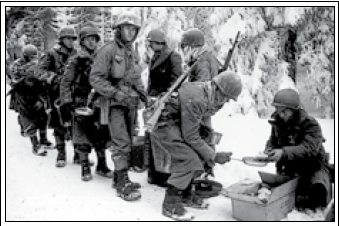
Run that by me again...you say you bought these online and they came in a bucket?
Military protocol was taken seriously in the rear, but not so much on the front line. Officers were rarely saluted for fear of being identified by snipers. Respect for rank was based on goodwill rather than fear of punishment. Officers had little with which to threaten enlisted men that was more frightening than life on the front.
There’s some brief discussion of common tactics. The orthodox tactic for infantry movement was covering fire, where one portion of a unit keeps the enemy under fire while another portion moves up. Often machineguns were used to pin down enemies while riflemen flanked them. While pinning-and-flanking remained a vital tactic for small squadrons, at the unit level it was surpassed by new methods of coordinating infantry, artillery, and vehicles together.
Covering fire at the unit level tended to leave units disorganized, and only used a portion of a units guns at one time. Patton adopted the marching fire offensive, where riflemen and machine gunners advanced together, constantly firing. It relied on the fast-firing Allied rifles and a ready supply of ammo, and was a high-risk high-reward tactic. It could fail miserably when assaulting a well-defended position, or when not supported with light machineguns and artillery.
Tank advances were used to take strongpoints, attack other enemy vehicles, and destroy fortifications. Tanks could also use radios and smoke rounds to call in artillery and air strikes.Often tanks would provide covering fire for infantry to move up, and in turn, the infantry killed enemy infantry armed with anti-tank weapons.
Next time on Godlike: TOG Commando Squads.
Chapter IX: TOG Commando Squads
Original SA post
Godlike, Chapter IX: TOG Commando Squads
Chapter 9 covers the organization and training of the TOG (“Talent Operations Group”) commando squads. The focus is on American Talents, but all Allied TOG training is organized under British administration anyway.
The TOC
When the first American Talents appeared, they were under the command of whatever branch of the armed forces claimed them first. In March 1942, President Roosevelt created the Talent Operations Command, an organization which reported only to the President and the Joint Chiefs of Staff. After a Talent is evaluated by Section Two, voting committees with representatives from each branch of service would negotiate where they will be assigned. It could take months for a powerful Talent to be evaluated, assigned, trained, and finally deployed.
The TOG
In February 1942, General Eisenhower had commissioned a study to determine the best way to employ Talents in warfare. The thesis of the “Eisenhower Plan” was that Talents should be spread thinly across the front line of the war, going before regular troops to counter enemy Talents and demoralize their troops. It was quickly decided that Talents in the Army would have a special purpose. Those with appropriate powers would be service troops, handling transportation and logistics. The rest would form a special unit and be trained in hit-and-run tactics and behind-the-lines attacks.
This unit, the Talent Operations Group, would be split into many 9-man squads and trained in commando tactics. Because the U.S. Army had no school for unconventional warfare, and because Eisenhower was a proponent of Allied cooperation, they decided that all Allied TOG groups would be trained at the Commando Basic Training Center at Achnacarry Castle, Scotland.
The modern commando was born in WWII. There’s no point in me teaching you what you could learn better from Wikipedia, so to sum up: The word “commando” comes from the Afrikaans kommando. The British learned guerilla warfare tactics from being on the receiving end of them in the Boer War and the Arab Revolt in Palestine. Early British commando operations suffered setbacks, failures, and a great deal of resistance within the military, but by 1942 they were a potent weapon in the British arsenal.
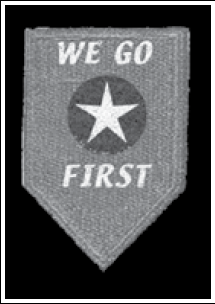
Training at Achnacarry
Achnacarry Castle was in fact a training center for British Commandos and U.S. Army Rangers. In the world of Godlike, it’s a brutally difficult commando training school, designed to push even the strongest men to their breaking point. Talents are given special consideration when applying, but there’s no guaranteed that they’ll be accepted, or that they’ll graduate. Nothing is guaranteed at Achnacarry--not even survival. Live-fire exercises are the rule, and by the end of 1942, ten men had already died in accidents.
Training at Achnacarry lasts 12 weeks. Drill instructors with stopwatches goad their trainees through grueling obstacle courses full of mud pits, barbed wire, ladders, and smoke-filled rooms. Trainees can be pulled out of bed for impromptu drills at any hour, and the courses are randomly made more difficult to force trainees to think on their feet. Those who can’t handle these “Achnacarry Surprises” wash out early.
Weapons training begins with hand-to-hand combat the first week, and trainees work their way up from knives to rifles to machine guns to mortars. Talents are subject to surprise lessons in Talent-on-Talent combat. You never know when an obstacle course will become a lesson in how to avoid being teleported, or fight off an invisible man with a knife.
Survival training is a vital component of the course, teaching trainees how to hunt, set fires, and camouflage themselves. This training builds up to a final “week of hell” in which they live off the land, alone, with nothing but a knife. Training in cross-country movement includes long forced marches, climbing, fording rivers, and building rope ladders and bridges. These exercises are often punctuated with a mock assault for good measure. The “final exam” is a mock assault on the beach of a nearby lake, complete with live fire, hidden explosive charges, and random Talent attacks.
Those who graduate from Achnacarry are awarded a green beret, a Fairbairn-Sykes dagger, and the TOG shoulder patch bearing the logo “We Go First.” In game terms, they can also be assumed to have a particular set of skills measuring the depth and breadth of their training.
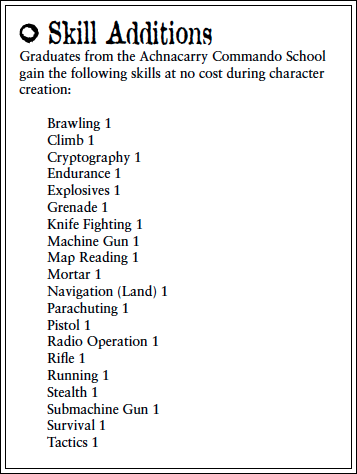
TOG Deployment
TOG squads are attached to U.S. Infantry Divisions and placed under the command of that unit. Sometimes they’re detached to act as shock troops, but by default they act as commando units. They go ahead of the front line to scout enemy positions and attack enemy Talents. Failing that, they cause as much havoc as possible behind enemy lines.
TOG 141: “Miller’s Hellions”
TOG 141 is attached to the 29th U.S. Infantry under the command of Cpt. Paul Richards. Richards is mainly concerned with his battalion of riflemen and is not very concerned with the Talents. But as the only TOG attached to the battalion, "Miller’s Hellions" are likely to see a lot of action, and Richards will use them as distractions and even assassins if possible. As a group, the Hellions behave according to military protocol in public and for the brass. But within the group, relations are very informal, and everyone is encouraged to speak up if they have any concerns about the mission.
Miller’s Hellions are an example of a “typical” nine-man TOG squad. They can be used piecemeal as supporting characters in a campaign, particularly as temporary backups when a PC dies. They're all built like starting characters with the commando template, with 25 Will points of Talent powers, so some of them have potent but unusual and quirky powers.
1st Lieutenant Alan Miller is a former logger from Tacoma, Washington. He has two children, and a mother who has raised them since their mother died in childbirth. Miller acts confident, but fears that he will lose his nerve and his men’s respect when he faces real combat.
Miller has a unique Talent: he can “inhale” objects he touches, making them vanish for a time. The larger the object, the shorter a time he can hold it. People he “inhales” have no memory of their time within the no-space of his Talent.
1st Sergeant Harvey Braden volunteered after discovering his power, and was recommended for officer training after graduating Achnacarry. He sees Miller as a father figure, and shares the same secret fear of breaking down in combat. He wants to make it home to his family having served with distinction.
Braden discovered his Talent while playing catch with his little brother. He can run up walls, and even across ceilings, as long as he doesn’t slow down.
Pvt. Anthony “The Stripper” Colombadas is a good kid from Long Island. He spent his formative years as a thug and a petty criminal, but only to support his mother and siblings. He volunteered out of patriotism, and discovered his power during training while being bullied by visiting colonel. He’s proved himself an effective commando trainee with or without his power, and is well-liked by everyone for his sense of humour. He’d like to see his family’s ancestral home in Portaferrio, Italy before returning home.
Anthony’s nickname comes from his power to teleport clothes--and only clothes. His power can’t steal weapons or ammo, but it does steal lightweight effects like wallets and maps. (Rendering someone stark naked on a battlefield also tends to have a psychological effect.)
Pvt. Lucas Devers is a Texan farm boy whose early life was marked by the Great Depression. After marrying, he settled down and started a successful corn and cattle farm in Illinois. He volunteered after discovering his power in a farming accident; his Talent saved him from being crushed by a tractor he was working on when the jack gave way. Devers carries a photo of his wife and two sons, and his ambition is to buy the farm his family lost in Texas. Before he does that, he really really wants to kill Hitler.
Devers’ Talent is Hyperbody--but only for the purposes of throwing. He can’t lift and hold heavy objects, but he can grab them and sling them. He can throw hand grenades incredible distances.
Pvt. Erich Kilchess is a natural athlete and star basketball player from Chicago. Kilchess comes from a devout Jewish family, but he pretends to be Catholic, having transferred to a Catholic high school to play for their team. Like Colombadas, he discovered his power in basic training and was fast-tracked to commando school. Kilchess is a know-it-all with a lousy attitude who openly disrespects the lieutenant, and his teammates consider him a bully. He spends his free time looking for ways to make easy money, which he grudgingly sends to his family.
Kilchess has the power to detonate any explosive by flipping it the bird. (He discovered his power in training when his grenade turned out to be a dud.) He can detonate individual bullets, grenades, shells, anything, but he needs to have a clear line of sight and brandish his middle finger at it.
Pvt. Vincent Manahan is the son of Irish immigrants. He spent his childhood working odd jobs before joining the Army, which made his parents proud. He discovered his power in basic training when he used it to save a man from being crushed by a falling half-ton bale of telephone wire. He completed officer training but was denied a commission. This doesn’t bother him much, and he’s charge of communications for the squad. Manahan is good-natured and so affable that even Kilchess doesn’t hate him.
Manahan’s Talent allows him to “freeze” objects so that they are temporarily unaffected by momentum and gravity. But this power only works on objects that are not currently touching the ground.
Pvt. John Miceweski was orphaned at age two when a house fire killed his family. He was raised in a Catholic orphanage and was the world’s biggest Der Flieger fan--until the day he burned it all. As an adult, he was a foundry worker until he was drafted into the Army. Like Kilchess, he discovered his power during a basic training exercise. Miceweski is a happy, friendly person who thinks of his teammates as family. His attitude and work ethic make him a favourite of Lt. Miller.
Miceweski’s has the power to fly, but cannot rise about 40 feet due to an acute fear of heights.
Pvt. Peter “The Professor” Moss is a bookworm from Westchester, New York, who preferred to spend his childhood lost in books rather than being taunted for being unusually tall and thin. He was attending Queens College when he was drafted. Moss is deathly afraid of firearms, which has caused him numerous disciplinary problems and is the source of his Talent. At Achnacarry, he reluctantly trained as a sniper. His teammates call him “Professor” because of his intelligence and education; he’s teaching himself French and German. He is quiet but profound, and well-liked by everyone but Kilchess.
Moss’ Talent is to “see” guns, glowing a ghostly green, even through earth, walls, and other obstacles. Unfortunately, his Talent makes him a beacon to other Talents when active.
Pvt. Daniel “Crystal Ball” Newman grew up in New York City and has spent most of his life betting on horses. When his Talent manifested, he accidentally used it to win the streak of a lifetime, but he didn’t actually discover it until “Knuckles” Derisito, a Talent aligned with the Genovese family, spotted him using his Talent and had him beaten half to death. Newman joined the Army for protection. Newman is quiet and thoughtful, and his whispered advice to the lieutenant is usually heeded.
Newman is a potent precognitive. The only flaw in his Talent is that he cannot read letters, only numbers, during his precognitive visions.
Next time on Godlike: Optional Rules and stats for some of the most famous Talents.
Appendix A: Optional Rules
Original SA post
Godlike, Appendix A: Optional Rules
It’s optional rules! For Godlike! Alright, I’m gonna breeze through these very quickly. After the GMing chapter, it’s all just details.
Squishy Rolls: This lets you “squish” the Height and Width of your rolls after you roll them--a 3x4 becomes a 2x5, and so on. You can allow unlimited squishing, or just one step squishing, or none at all. Allowing the PCs to squish rolls makes for a more superheroic game.
Getting Really Nasty: This is what happens when you let Steve Harvey write house rules. These are a bunch of options more making wounds more realistic and more brutal, including options like:
Bullets/explosives force a roll not to be stunned for multiple rounds.
Bullets and blades cause bleeding that needs to be stabilized, or you take Shock damage until you die. There are also rules for internal bleeding that PCs may not notice.
Lots of damage to the head or limbs causes a permanent debility.
I don’t like any of these. Godlike combat is dangerous enough and ORE doesn’t need to get fiddly.
Die Hard: Simply increase the number of wound boxes per hit location, if you want tougher PCs.
Faulty Grenades: Any time you roll a 2x1 or 2x10 with a grenade, roll another die. If it’s a 1 or 10, the grenade is either a dud, or it explodes in your hand. I hate this rule and I don’t think I need to explain why.
Misfires, Jams, Accidental Discharge: If you’re using crap ammunition, or a gun prone to jamming, or you drop your gun, these can happen. If you roll a 2x1 and all the other die results are 5 or less, roll another die...yeah, these rules are fiddly as fuck so fuck them.
Gun Cleaning: Yeah, you can make your PCs prone to having bad shit happen if they can’t or won’t make a roll to clean their gun every few days.
Vehicle Hit Locations: I actually like these. Vehicles have hit locations, so you can hit the rear or undercarriage of a tank where it has less armor. Since PCs are more likely to be fighting tanks than driving them, I’m in favour of it.
Burning Experience: You can burn XP to increase the Height of a roll, or convert a point of Killing damage you take to Shock.
Burning Will: You can burn a point of Base Will for 10 points of Will, for those times when you really need to laserblast a Nazi.
Gaining New Powers: For more Four Color games, you can make it cheaper to buy new powers (including powers that aren’t even relevant to your original discovered Talent).
High Body and Machine Guns: Anyone with Body 4D can carry a light machine gun like a rifle. (This won’t work well with a belt-fed weapon.) With Body 5-6D, you can carry any machinegun this way. With Body 7D+ you can carry a machinegun in each hand, like Rambo on even more steroids.
Rolling Will: In a Battle of Wills, you roll the Will you bid rather than spending it.
Two Against One: Two Talents can team up against another in a Battle of Wills.
Godlike, Appendix B: The First 10
These are statblocks for the first 10 discovered Talents, worldwide, ranging in power from 25 Will (starting PC level) to 150 Will points. This doesn’t capture some of the more interesting Talent powers, but it is good insight into how the creators use their own system. I’m not going to get much into their mundane Stats and Skills--do you care that Der Flieger has Swimming 2?
Der Flieger: The first Talent in history, Der Flieger is built on 150 Will points and he’s a fucking beast. He has Flight 2hd, with Extras to represent his immunity to altitude and shear stress from impossibly sharp turns, and a Barnstorming skill for maneuverability. He also has Harm 10d with the Area Extra representing his fearsome sonic boom power. He can only use it while flying at top speed.
I feel like Der Flieger’s effectiveness is somewhat based on the GM’s interpretation going beyond the mechanics. Key example: His Flight power Defends, but he only has 2hd, making him very vulnerable to a skillful attack or anything that interferes with his powers. But in real life he was hard to kill because it’s almost impossible to track an object moving 700mph.
Pevnost: This Talent’s incredible powers only add up to 30 Will points, which goes to show that a strategically valuable power isn’t necessarily high cost. He has Teleport 10hd with Extras boosting the amount of mass he can move. But the cost is cut down by the Slow and Forced Attendance Flaws, and only working via doorways. Pevnost is one of the most important Talents in the war, but also the definition of a “service troop” who hopefully won’t see combat at all.
Zindel: With powers costing 104 Will, this strikes me as an example of doing things in a roundabout way. Zindel’s power to transform his enemies into salt effigies is represented by a Transmutation power with a bunch of Extras and Flaws, whereas I think Instant Death makes more sense. I think they did it that way because it was easier to slap on Extras like Reflexive, and measure the power’s area effect. Oddly enough, there’s no Flaw representing that using his power was supposed to be fatiguing. Either way, I recommend you not fuck with a guy who has Transmute Enemies to Salt 10hd with an area effect of 250 yards.
Cien: Cien’s unique power to control objects touched by his shadow is handled simply as a Telekinesis 10d power. He has a Power Stunt skill, Shadow Positioning, which he has to roll in order to determine how many of his Telekinesis dice he can actually use in a given round--Height determines die pool, Width determines the initiative of that action.
Viljo: Godlike’s stand-in for Simo “The White Death” Hayha, Viljo’s powers are rather simple. He has Hypercoordination 10d, Hypersense 7d, Hyper-Knife-Fighting 7d, and an Affinity for arctic conditions, so he can rock out with his cock out knifing Nazis.
Vogel: His power to redirect any missiles aimed at him is represented by a Heavy Armor 10 power. That this works by making missiles fail to hit him is a Side Effect with no alteration to the point cost. His power only works against ranged attacks.
Aesgir: Like Der Flieger, this guy is legit comic-book superpowerful, built on 150 Will. Heavy Armor 10, Hyper-Spear 2hd, Break, the ability to Fetch his spear, and a Teleport with global range. These are all limited in point cost by the requirement that he hold on to his “magic” spear, and the fact that “traveling through Valhalla” requires marching through tundra to get where you’re going.
Daegal: His powers are very simple. Control Light 7d+1wd, and a Perception power to let him see through his own supernatural light.
Vevel: Vevel is scary. His ability to go into a murderous “combat fugue” is essentially handled as an Alternate Form 2hd power, with multiple other powers Attached to the Fugue. While “transformed,” he has Hyperstrength 10d, Hypercoordination 10d, Go First 6, Side Step 2HD, and an Instant Death that only works by touch. (Touch based powers are a bitch in Godlike, since using powers requires concentration, you end up making a multiple action roll every time. I would’ve just handled it with Break 1 and Hyper-Brawl.)
Vevel’s Combat Fugue 2hd power has the Side Effect “does not remember actions while in Fugue,” which is honestly a sneaky way to get around making Cool+Mental Stability rolls when you rip a Nazi’s intestines out and use them to strangle his Sturmbannführer.
L’Invocateur: The Summoner’s real name is Luc Besont. (I thought the knife was the last thing you learn?) He’s built on 25 Will, the “weakest” of the first famous 10. He has Invisibility 2hd with the Unshakeable Extra, and of course, the very steep flaw that it only works while his eyes are closed. He has a Blind Fighting skill of 3, but I’m not sure how that’s supposed to work.
This appendix also has stats for generic soldiers, to give you an idea of what you’re up against. The average soldier in any army has Stats at 2d, most used combat skills at 2-3d, and supplemental skills (like Mortar or Map Reading) at 1d.
Godlike, Appendix C: Open Source Rules
This edition of Godlike has like 30 pages devoted to converting Godlike to D20, if you’re one of the brain-damaged morlocks that can’t play a game that isn’t D20. I could go through each and every conversion, commenting on what approach they took to the D20 rules and how well Godlike does or doesn’t fit into the D20 design space, but you know what?
https://www.youtube.com/watch?v=eY7ZX6ngOSs
Next time on Godlike: A few more special rules.
Appendix D: More Optional Rules
Original SA post
Godlike, Appendix D: More Optional Rules
I hate for my Godlike review to end with a whimper and not a bullet to Hitler’s face, but the only thing left to take care of are some more rules options. I thought about just skipping this entirely, but the final appendix addresses some complaints I had about the game--namely, that there aren’t even scant rules to guide the GM with regard to how often PCs encounter threats beyond skirmish combat, like artillery fire.
Squad Combat: These are rules for “mass combat” at the squad level, assigning each squad a die pool. It’s simple: Each member of a squad adds a die, and elite soldiers (with a Stat+Skill of 6d or more) add an extra die. Unlike individual pools, squad die pools can go up to 15d. Squad pools can also be helped or hindered if the combatants have Slow or Spray weapons, so submachine and machine guns make a big difference. Sets rolled by the squad are applied as attacks against the opposing squad, with a significant attack either taking out soldiers or breaking their morale.
There are details that you can use to complicate this to the point that there’s hardly any use in squad combat--forcing morale rolls, treating snipers as separate characters outside the squad, etc., but it basically works. But it’s not recommended for Talent combat.
Bombardment: Being under artillery fire is just about the worst, short of stepping on a landmine or having the GM sicc a tank on you. Bombardment attacks everyone with a die pool representing “Intensity.” Intensity is based on the weapons attacking you and the duration of the bombardment. A few mortar attacks every hour is 2d, while an entire artillery division launching an hours-long attack is 10d.
Victims of bombardment defend with Coordination+Dodge, or are defended by the strength of their cover. Every victim gets hit by every set, taking Width in Killing+Shock. Even characters under cover get hit for Shock damage to the head, and even people protected by a bomb shelter take 1 Shock to the head! It’s almost as if armies use artillery when they want to indiscriminately huge numbers of people who can’t even fight back.
Mines: I believe I’ve stated emphatically that you are totally fucked if you step on a mine. The British invented tanks with “mine flails” that deliberately set off mines in front of the tank. The Soviets cleared mines by forming penal legions and goaded the poor bastards right over them.
Like artillery guns, there are already rules for individual mines, but here are rules for when PCs cross minefields. Minefields have Area and Penetration ratings like individual mines, and a die pool based on Density: 2d for a few crude booby-traps, 6d for a heavily mined area. If PCs aren’t totally oblivious to the fact that they’re crossing a minefield, they can gobble dice from mine attacks with Sense+Explosives.
One Roll Patrols: These rules use a pool of 11 dice to generate patrols of all kinds, from simple recon patrols to combat patrols meant to deliberately engage the enemy. One die is the terrain die, which generates a location based on what kind of terrain you’re in. (There are tables of 10 results for each type of terrain: farmland, city, mountain, desert, jungle, and so on.) Whatever sets come up can represent different groups or missions. The leftover dice create results on a Complication table.
For example, I roll my terrain die and get a 5. On the Bocage (yes, that’s a terrain type) table, that’s a farmhouse/barn. I roll 10 dice getting 3x1, 2x5, 2x6, 3, 7, 10. That’s “set up an outpost in exposed terrain,” “contact friendly unit,” and “capture prisoners from any enemy unit encountered.” The complications are a change in the weather, reinforcements, and the ominous and wide-open “reversal of fortune.”
As GM, I decide this means that a “lost” patrol has made contact to say that they took shelter on a more-or-less friendly farm, which is on flat pastureland far from any natural fortifications. The PCs will be sent to link up with that squad and establish a small listening post. They should expect trouble from German patrols previously spotted, which is good--we desperately prisoners to give us intelligence on what’s waiting for us in the surrounding ridges and patches of forest where the tanks can’t easily go. The PCs are going to get caught in an unexpected downpour, but if they navigate it successfully, they’ll find themselves on higher ground looking down on a large but totally disorganized and oblivious German squad.
FUBAR: I’m giving these short shrift because I don’t like them. Fun as the name is, they’re basically botch rules to represent how fucked up shit just happens sometimes--like friendly fire or grenades that explode as soon as you pull the pin. As if Godlike wasn’t deadly enough.
If you fail and all your dice come up 5 or less, you roll on the FUBAR table. This is similar to the One Roll Patrols rules, but the tables you’re rolling on range from innocuous distractions to hazards like weapon malfunctions, bad weather, enemy reinforcements, friendly fire, or being traumatized by witnessing a particularly gruesome death.
One thing I do kinda like is the FUBAR Token. If a PC gets hit with FUBAR, the players get a token they can exchange to turn any wound into a near miss, or apply the next FUBAR result to an enemy.
New Skills: A bunch of new skills, mostly Brains-based, and brief rules on using them. Explosives, First Aid, Forward Observer, Intimidation, Mortar, Parachute, Radio Ops, Running, Skiing, Swimming, Tactics, and Telephony. This is the only game I’ve seen besides Maniac Mansion where the ability to use and repair a telephone is actually important.
Custom Templates: Like the TOGS Commando School template from earlier in the book, these templates give you 1 point in a group of skills based on what branch trained you for commando warfare.
New Talents: Several peculiar new Talents. I won’t cover them in the same depth as I normally would, but they’re interesting.
Plasticine Touch (5/10/20): You can alter the hardness of objects (or people) by touching them. You can make wood as hard as steel, or melt metal without actually heating it. Using this power on a person doesn’t instantly kill them (and requires a multiple action like all touch based powers), but causes 1 Shock to the torso and head per round until you end the effect. This represents things like not being able to breathe because your body has become soft as rubber or hard as metal.
Size Shift (5/10/20): You can grow or shrink targets. Enlarged people gain Body and wound boxes, but lose Coordination. Shrunken targets lose points from Body, Coordination, and all skills as well as wound boxes. This power is very expensive--it costs will to use, and without an Extra, it doesn’t affect people’s clothes and equipment.
Unconventional Move (5/10/20): You can move in some specific and unusual way, like burrowing, swinging on webs, or speeding along on an ice slide. This power is so expensive because it assumes that you can use your power to dodge attacks, and potentially use it in offensive ways like setting traps. (You can carry a single passenger, which can be used on unwilling targets.)
Next time on Godlike: It’s over!
https://www.youtube.com/watch?v=utUZNsHjOyQ